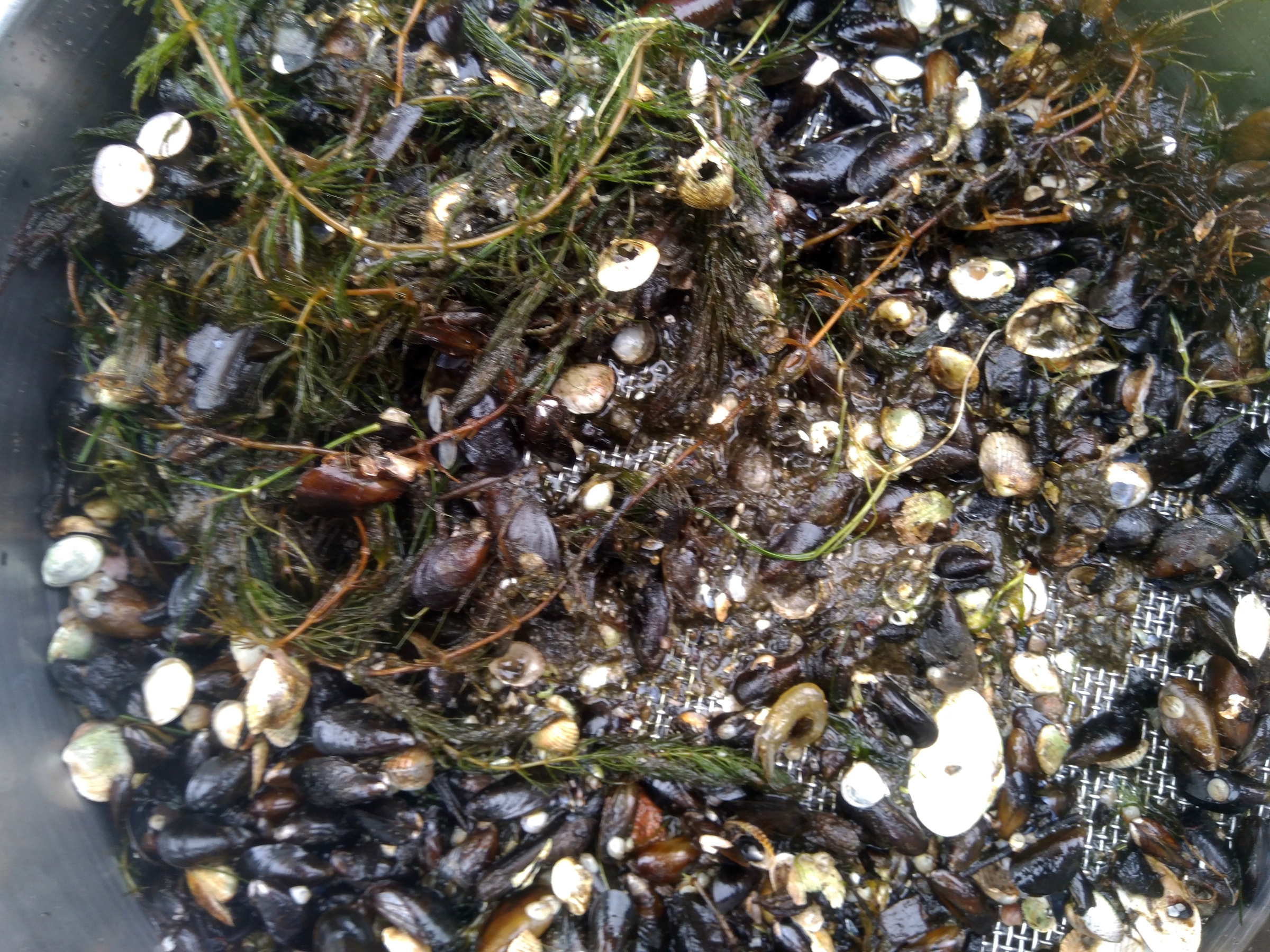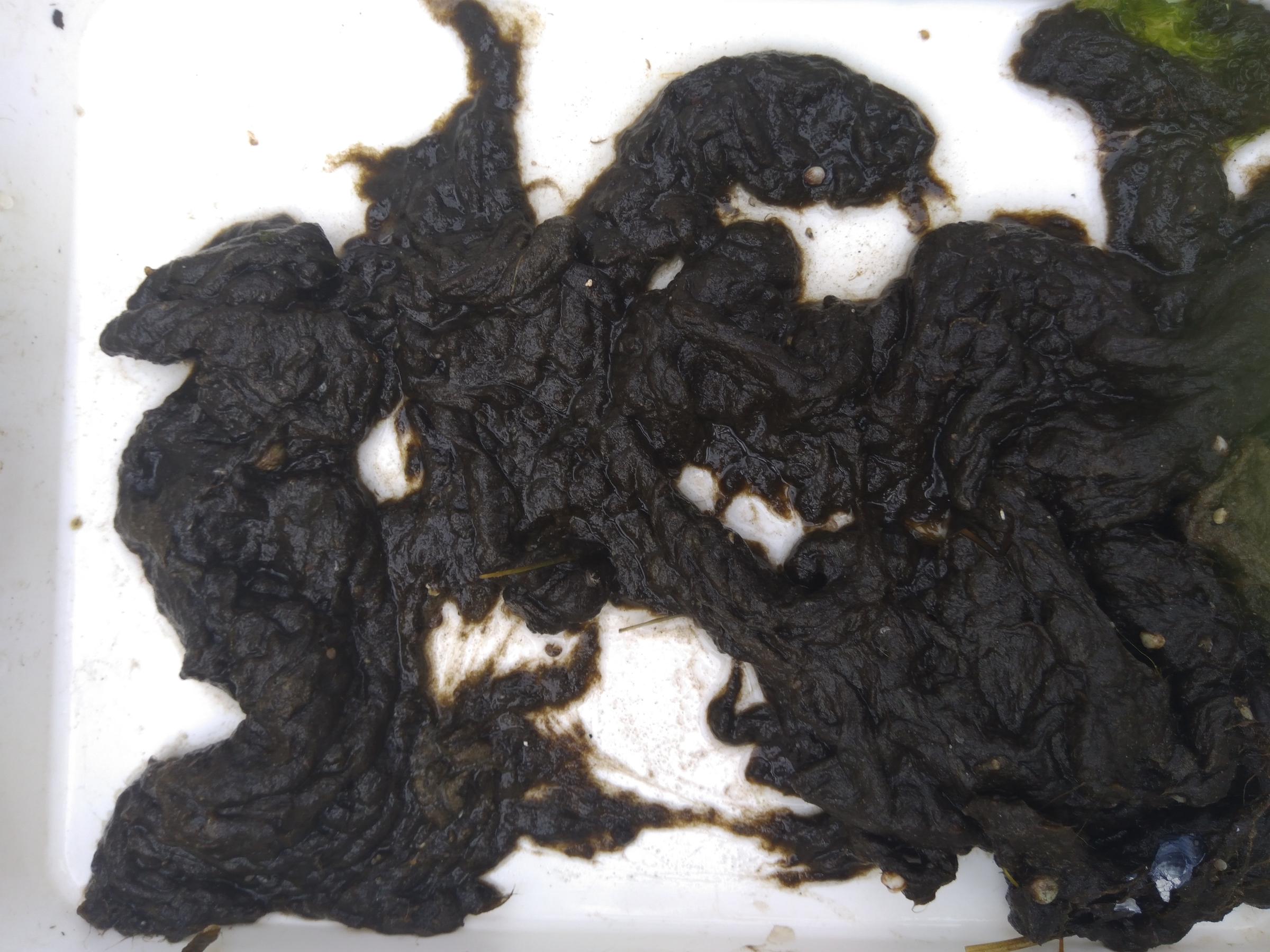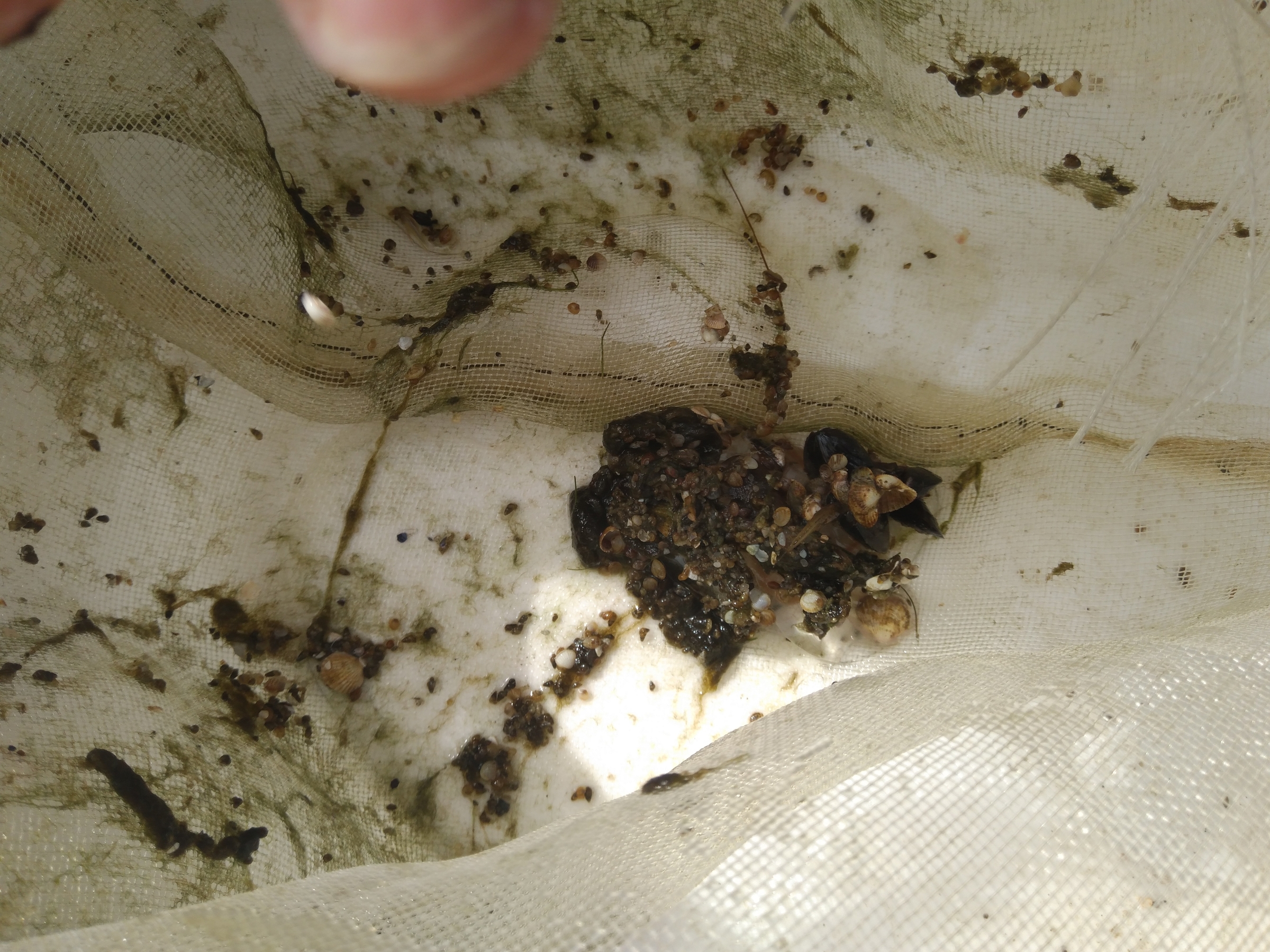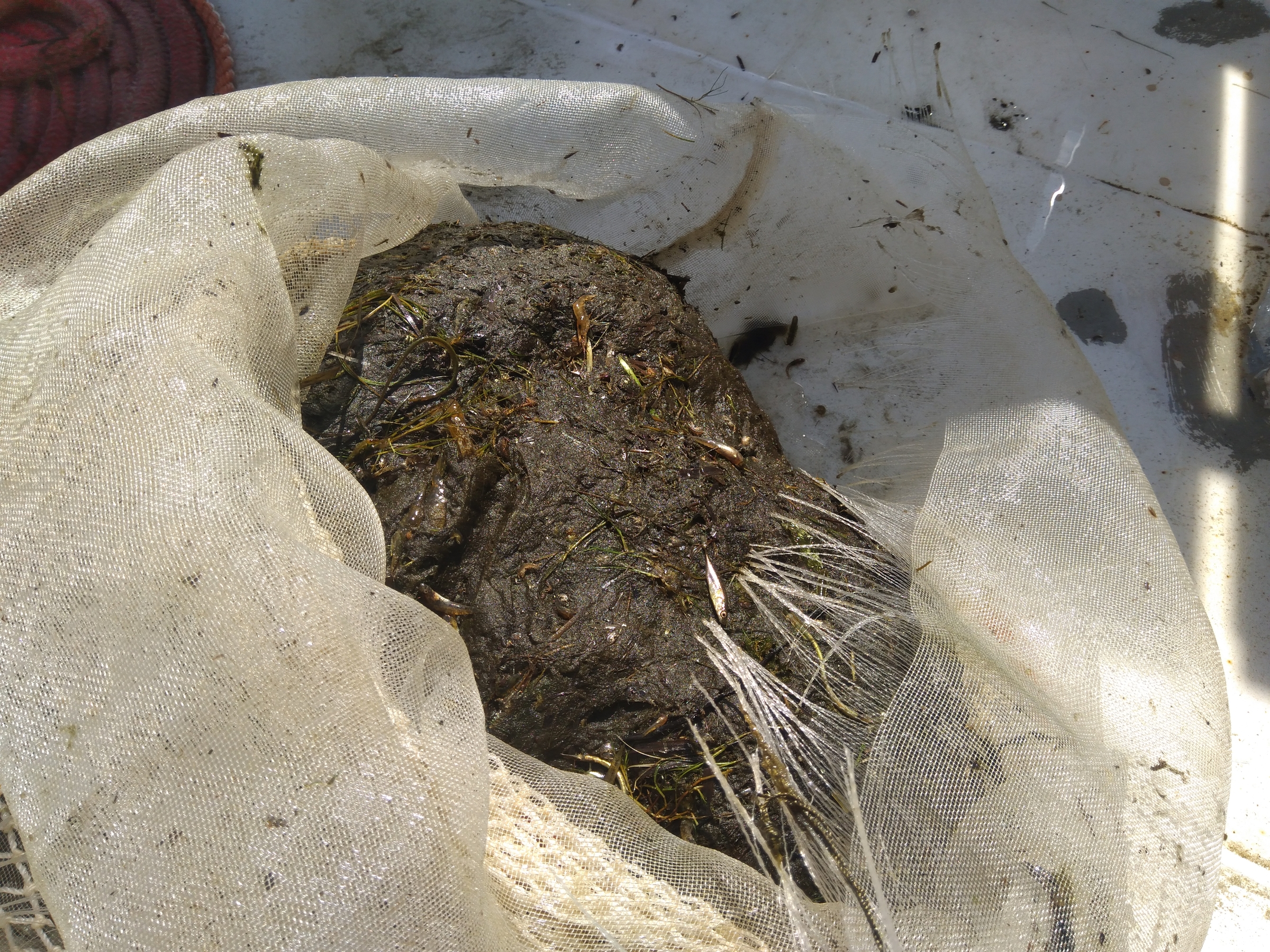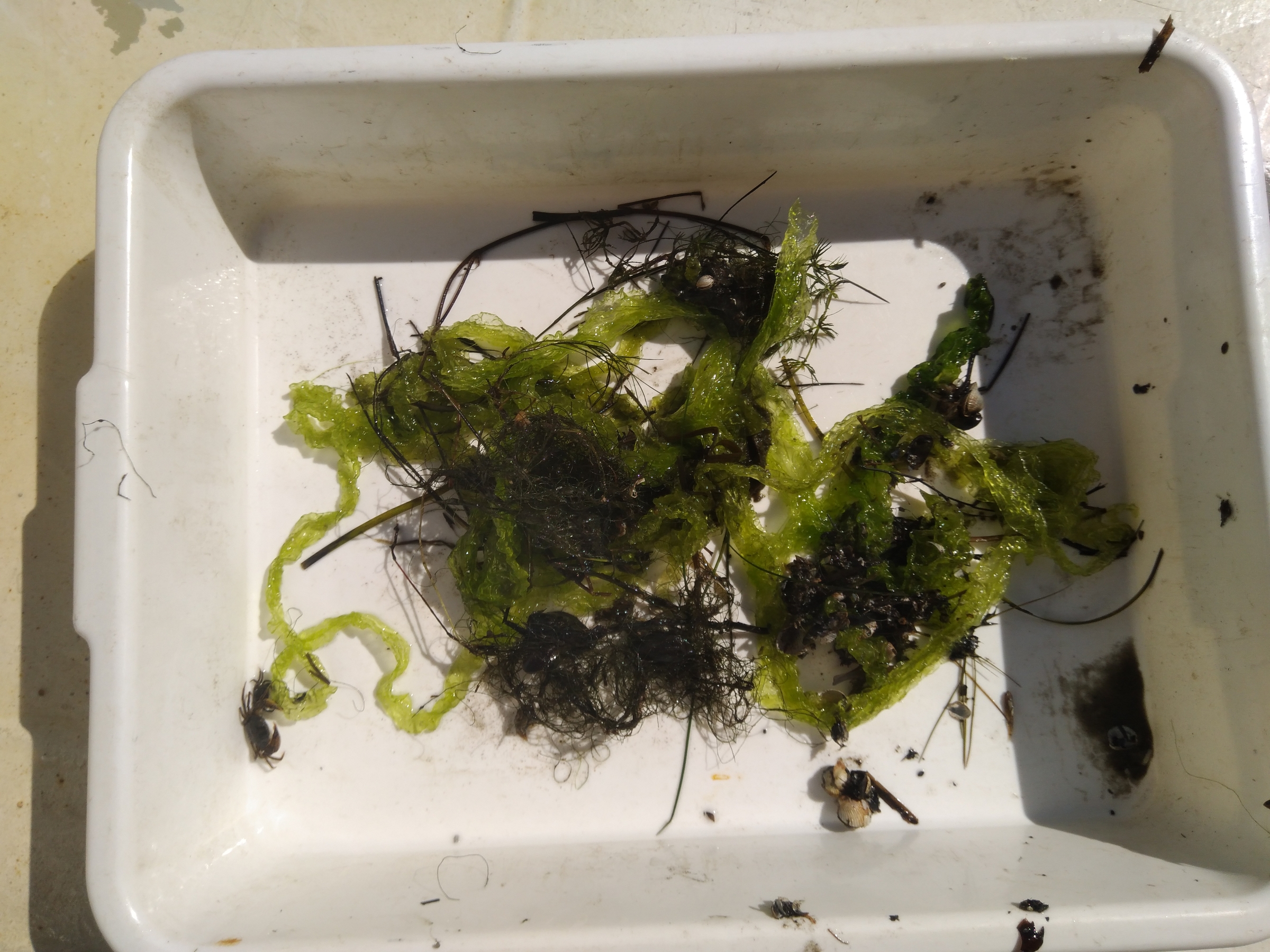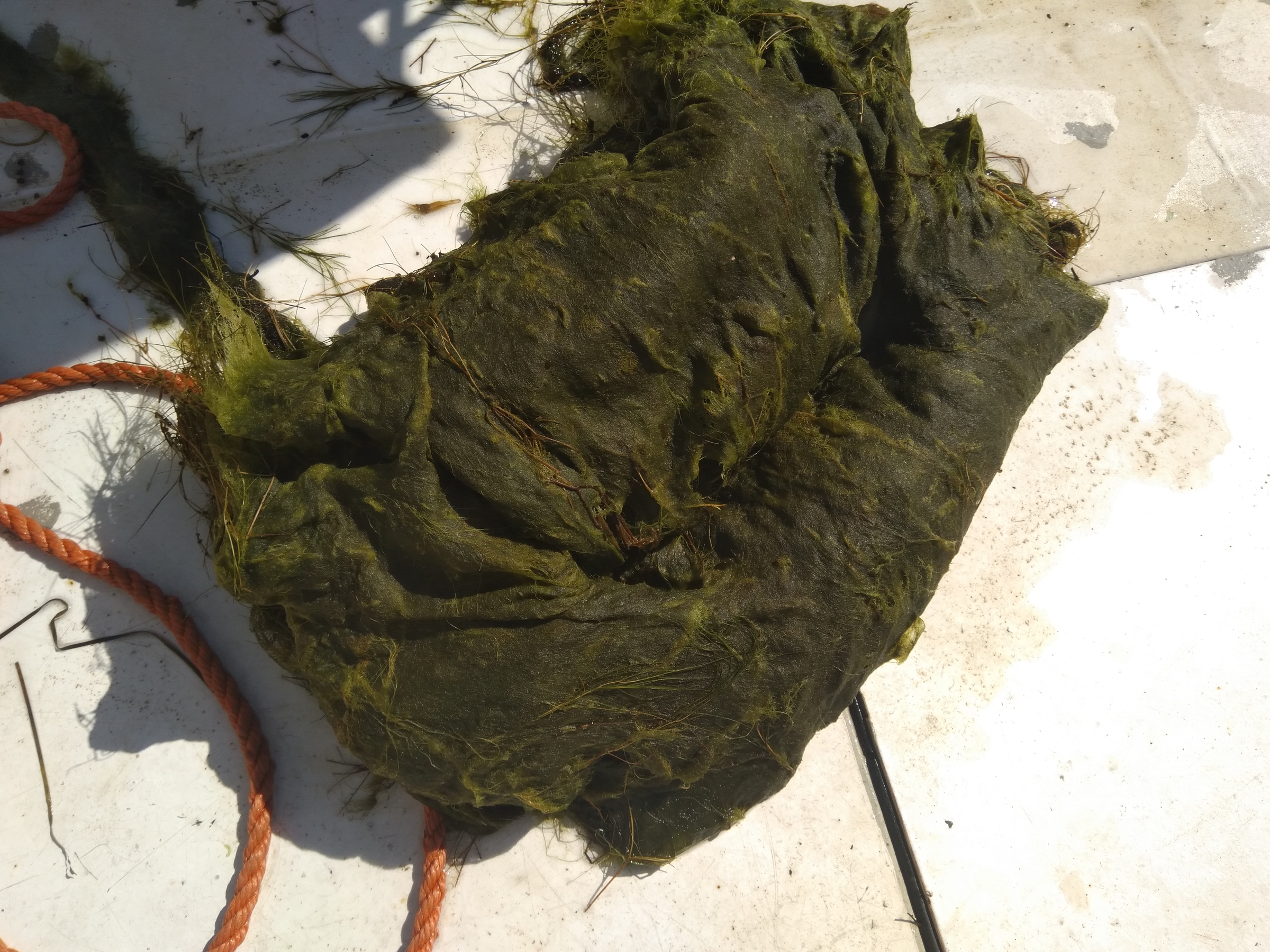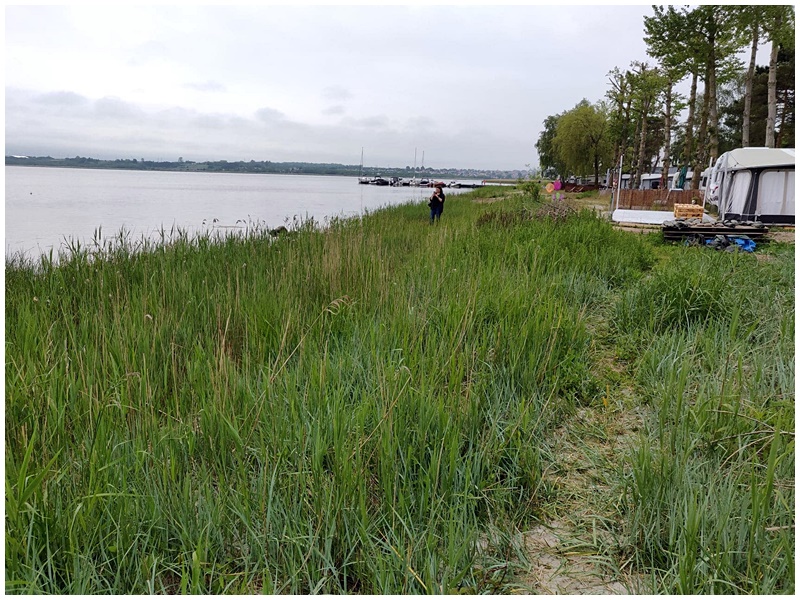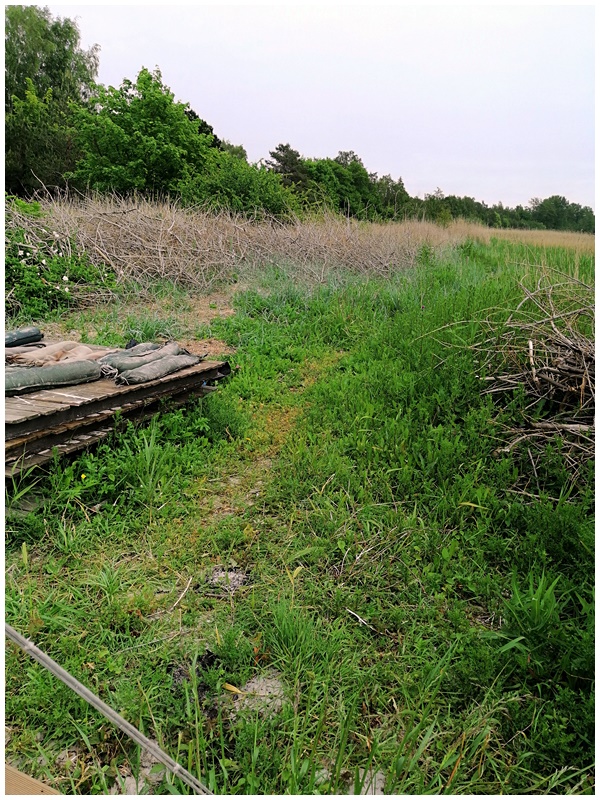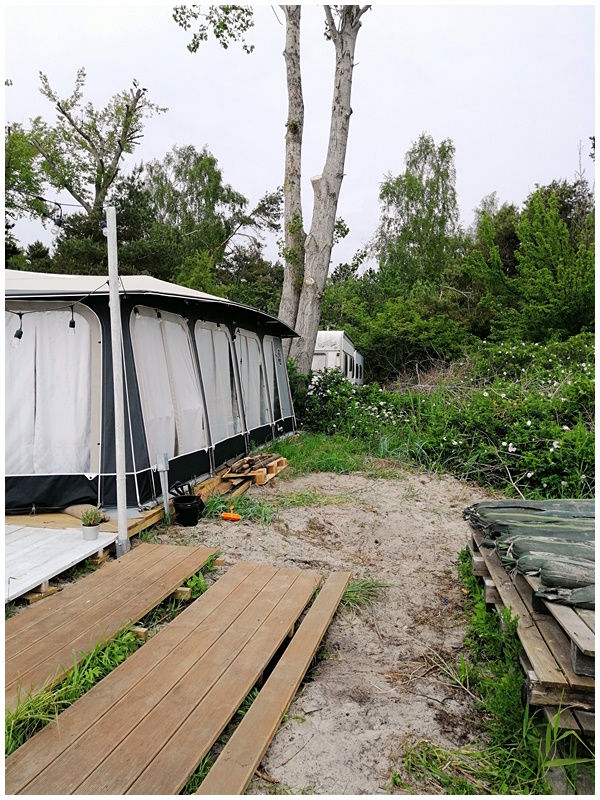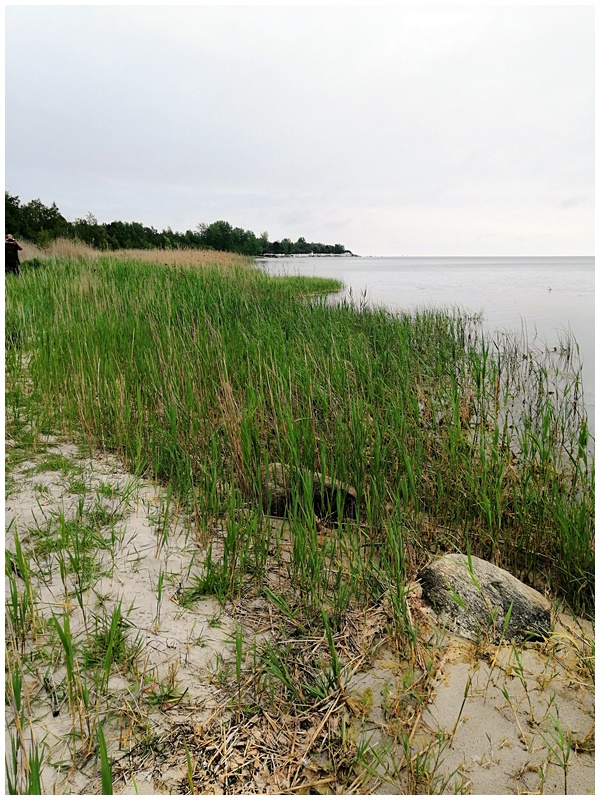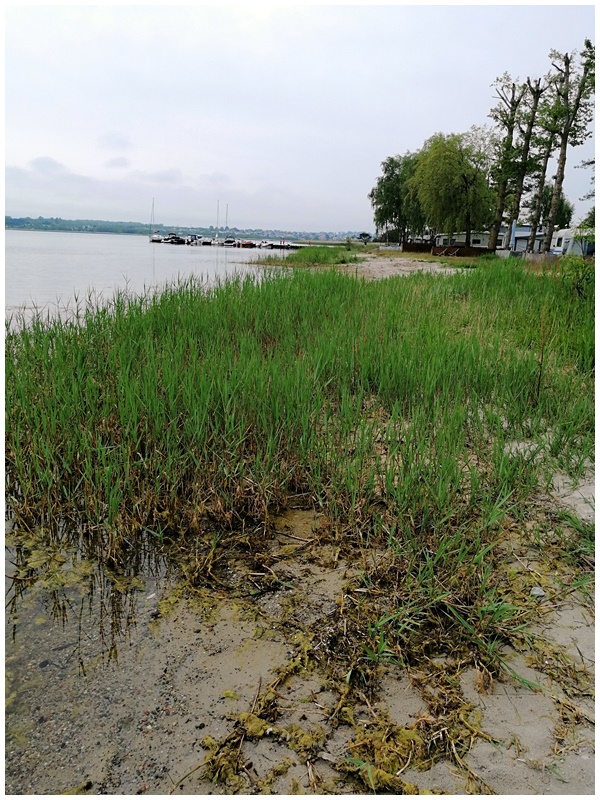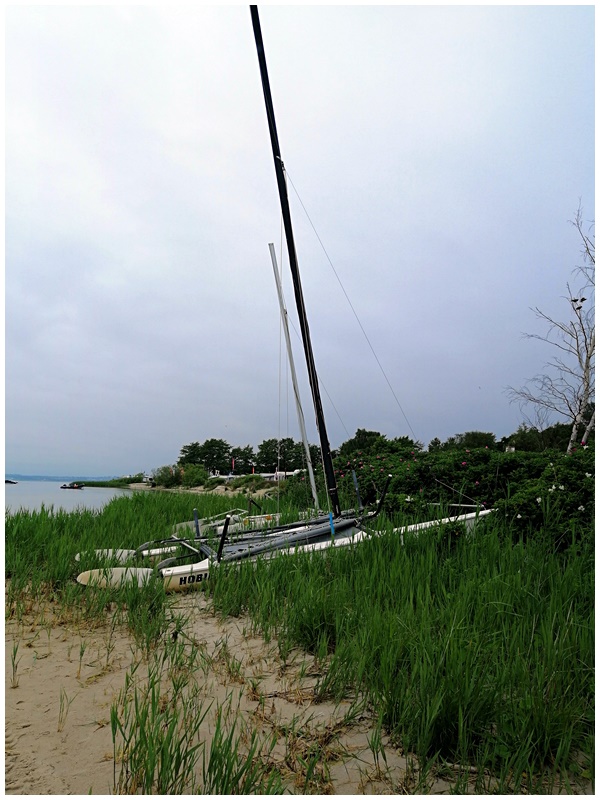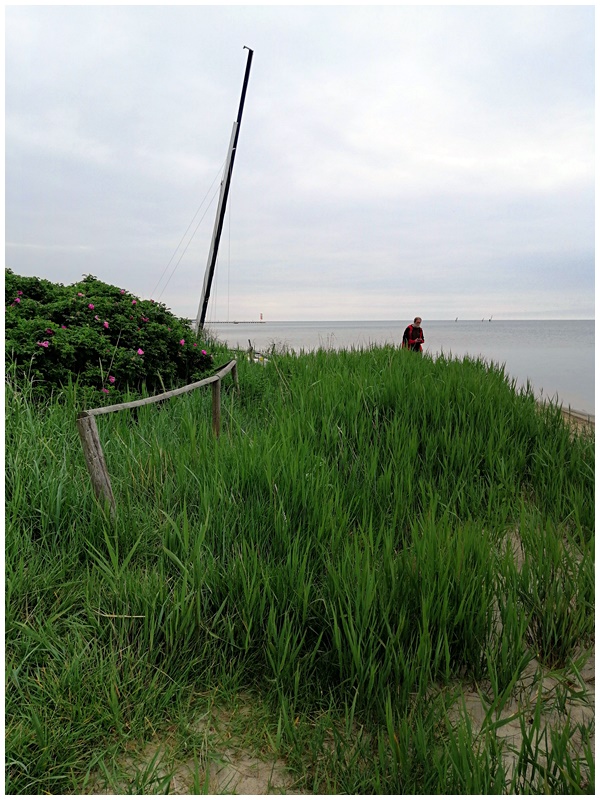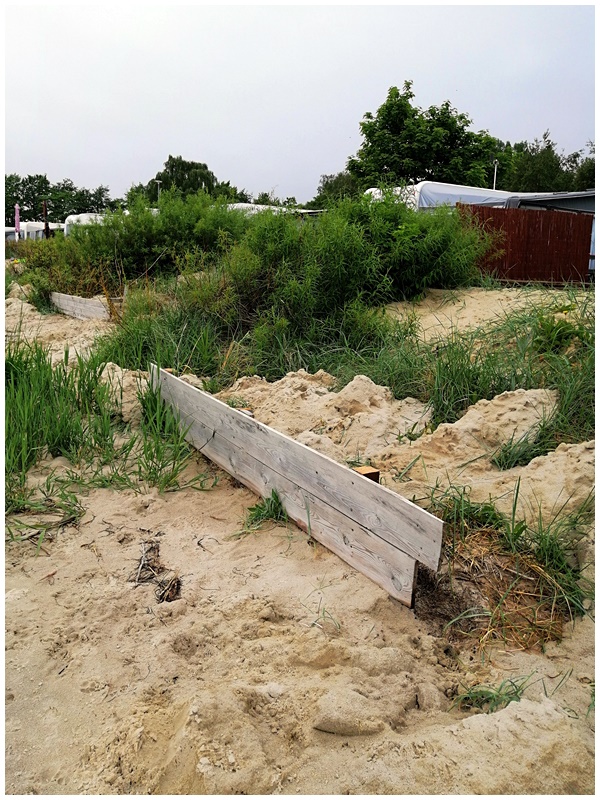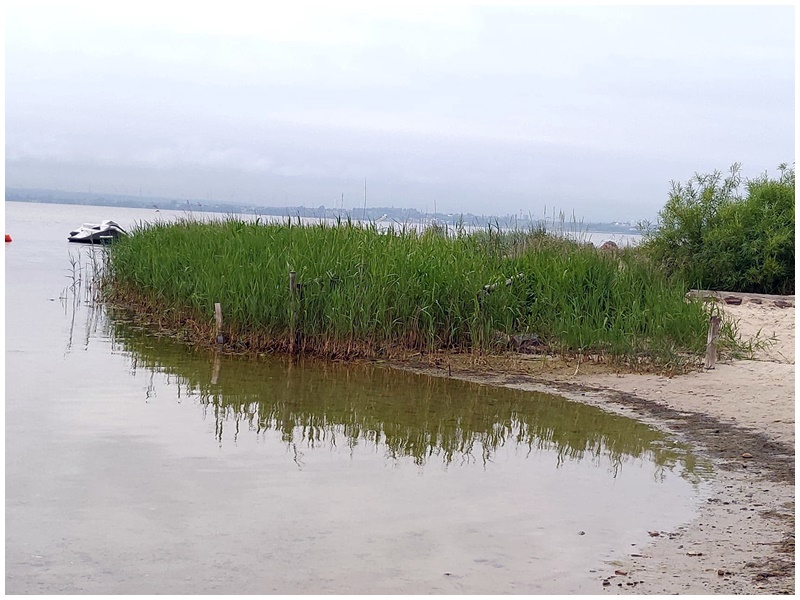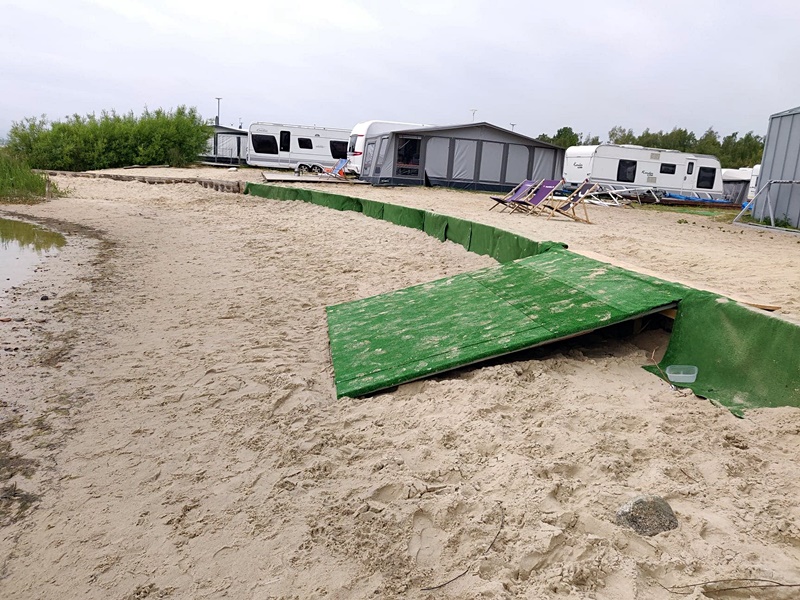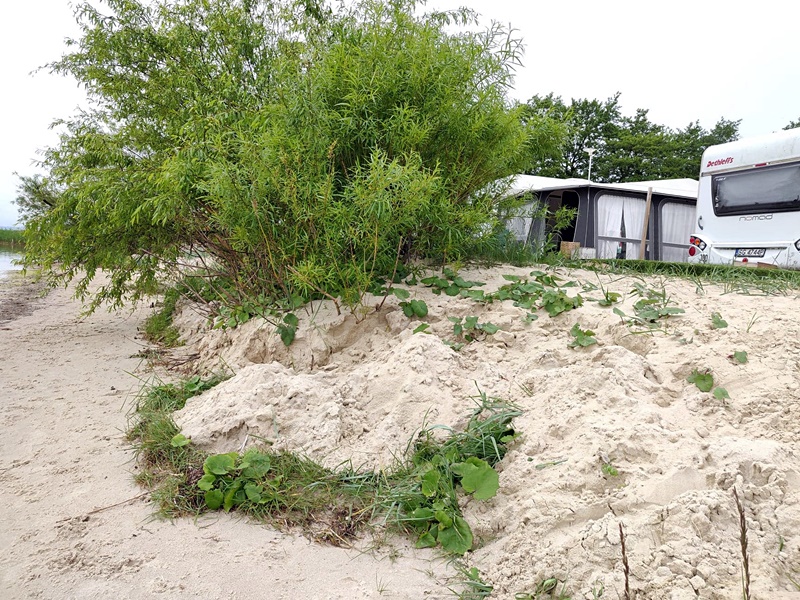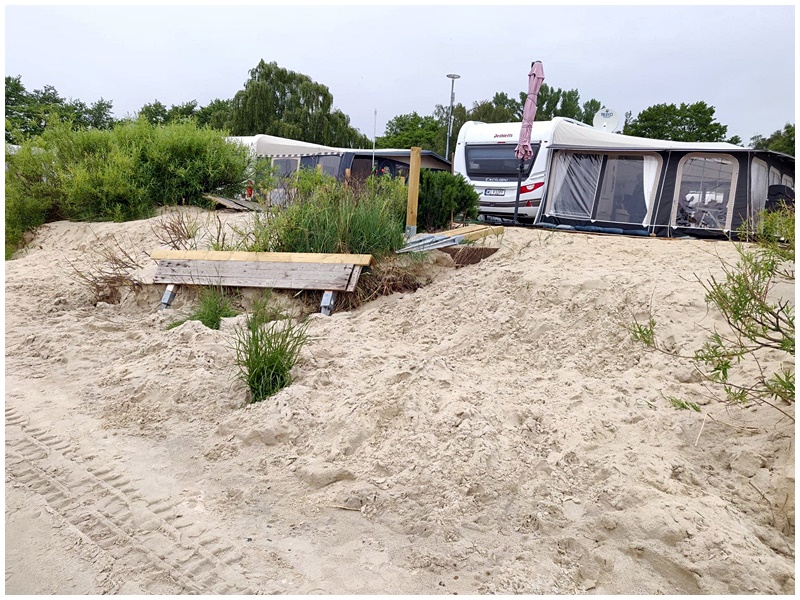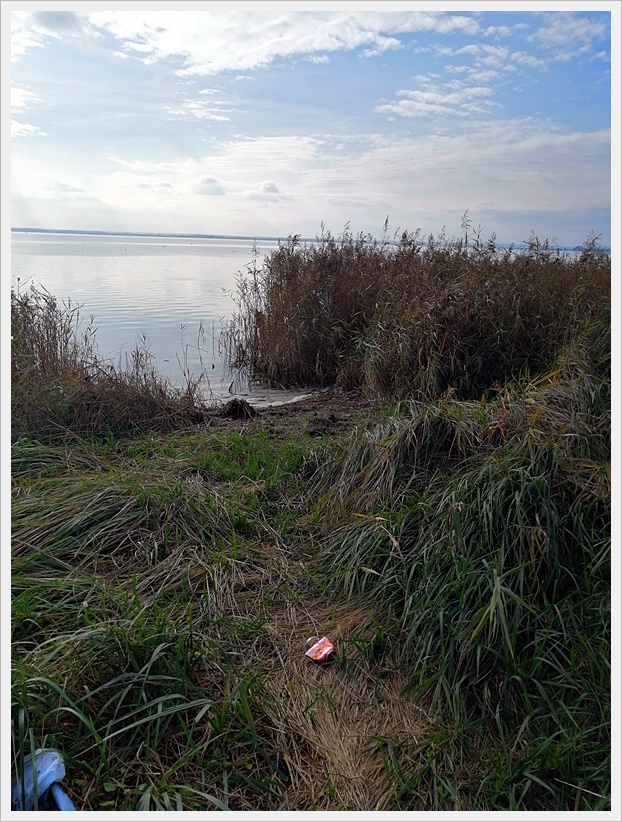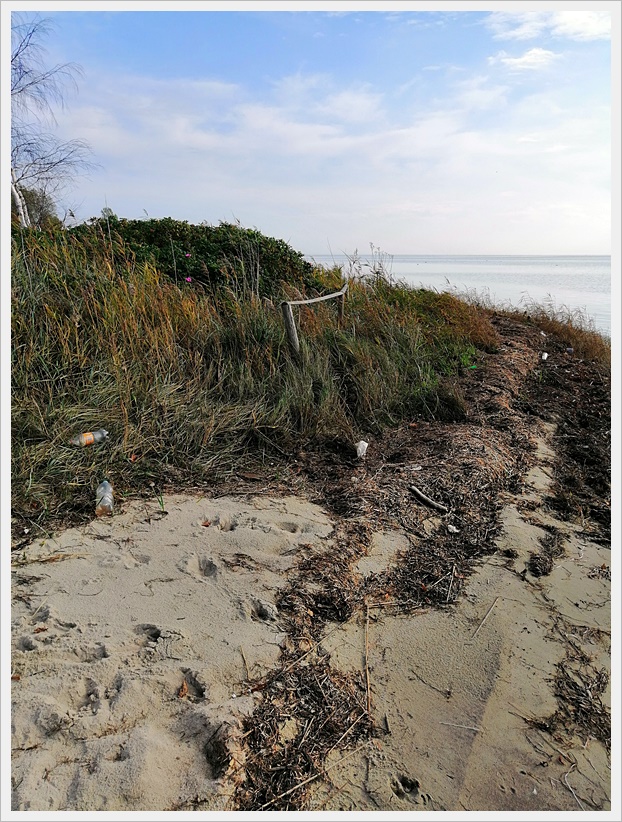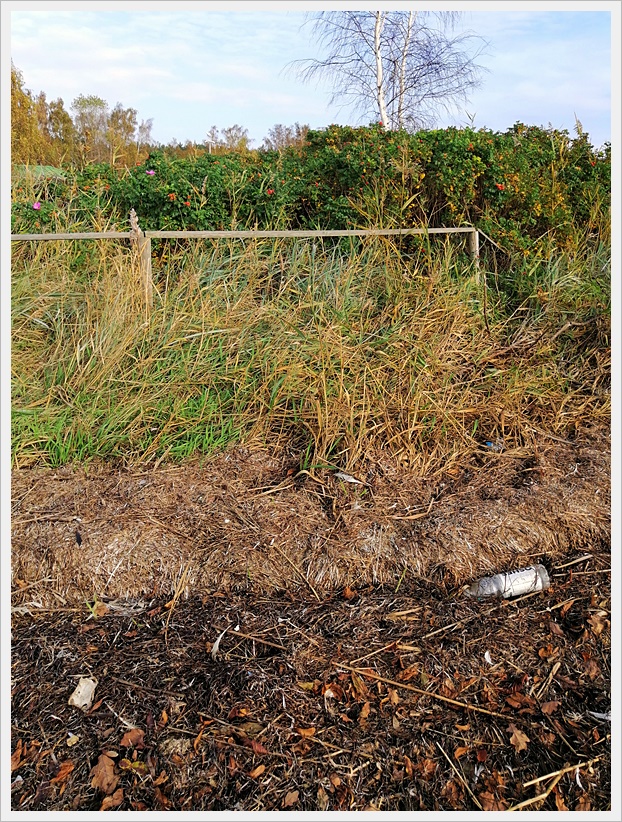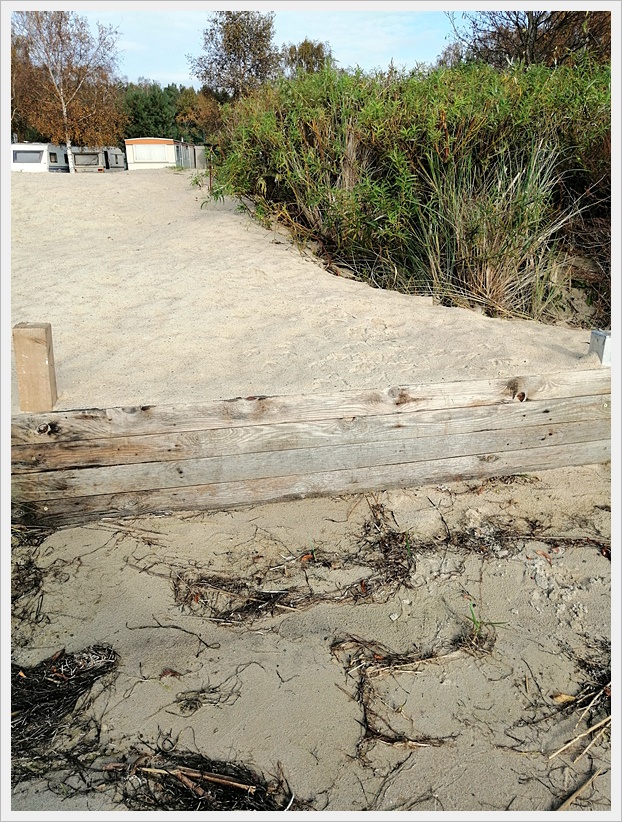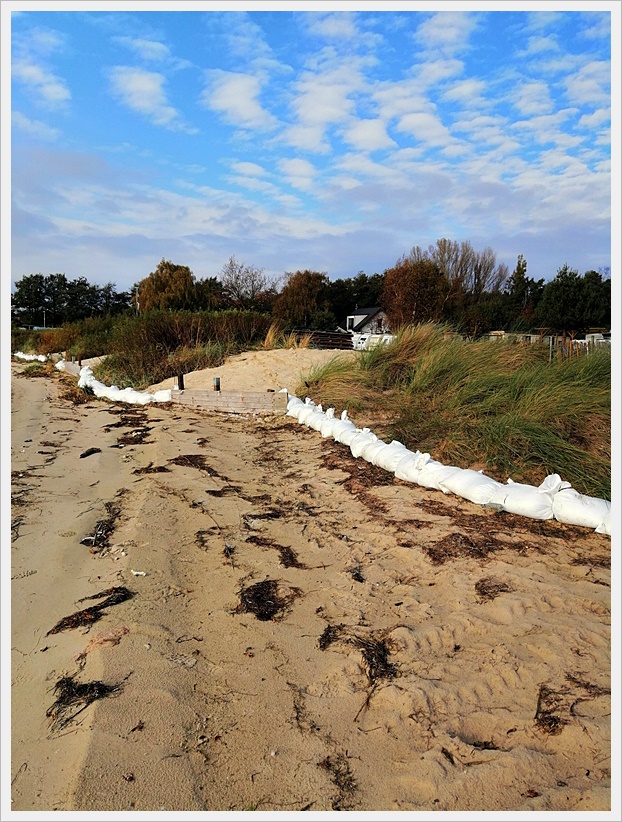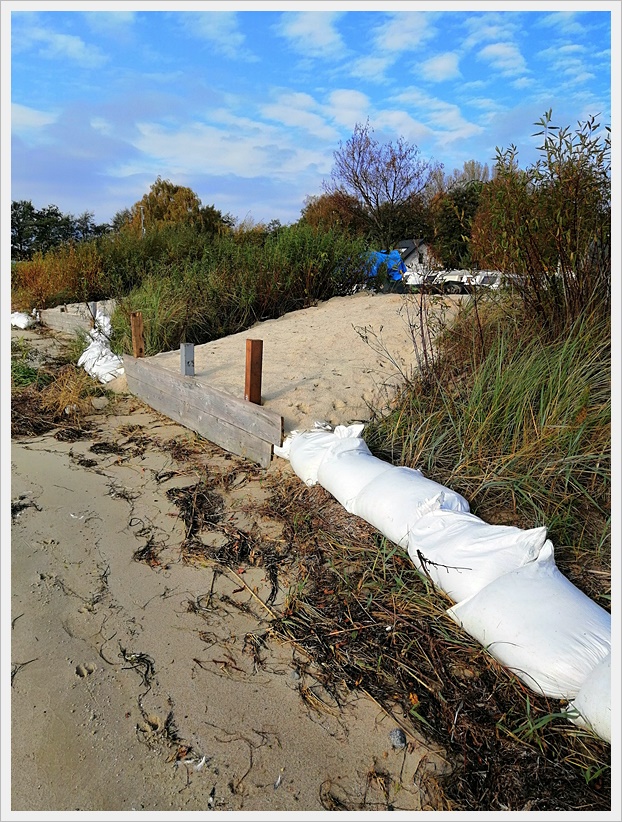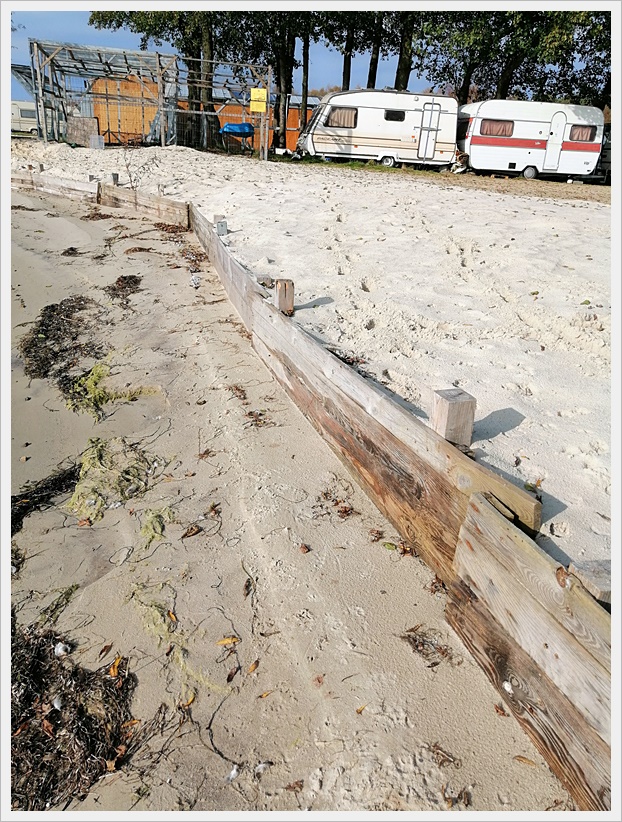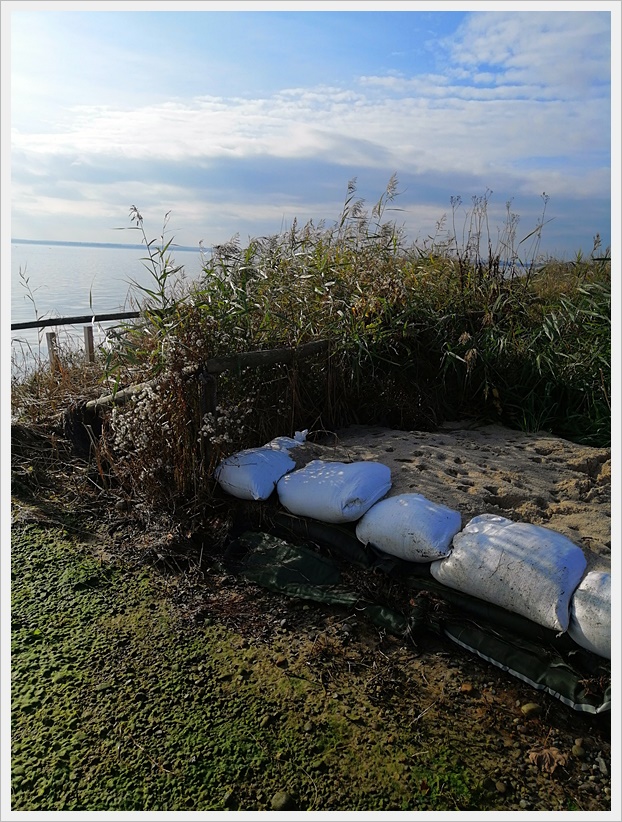News
30th of May 2023We carried out an annual review of reeds sites, planted in 2015 year, along the Hel Peninsula.
We started the inspection from the "Chałupy 6" campsite (Photos 1-7). We have noticed no changes here, it is clear that the pressure of tourists does not allow the reed bed to grow freely.
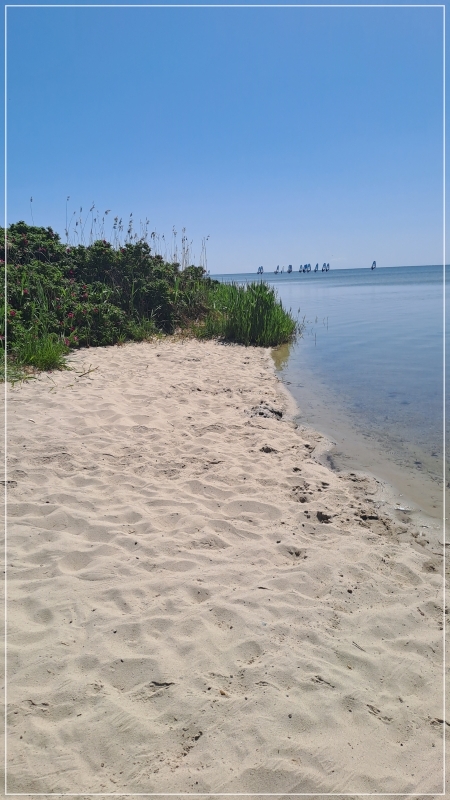 Pic. 1 |
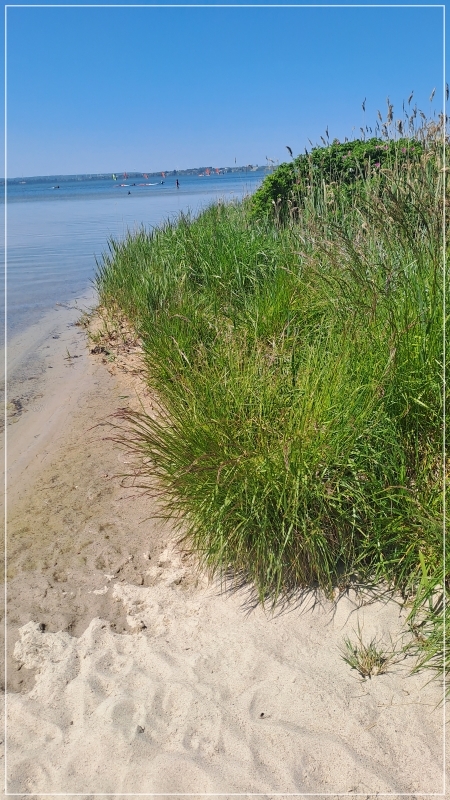 Pic. 2 |
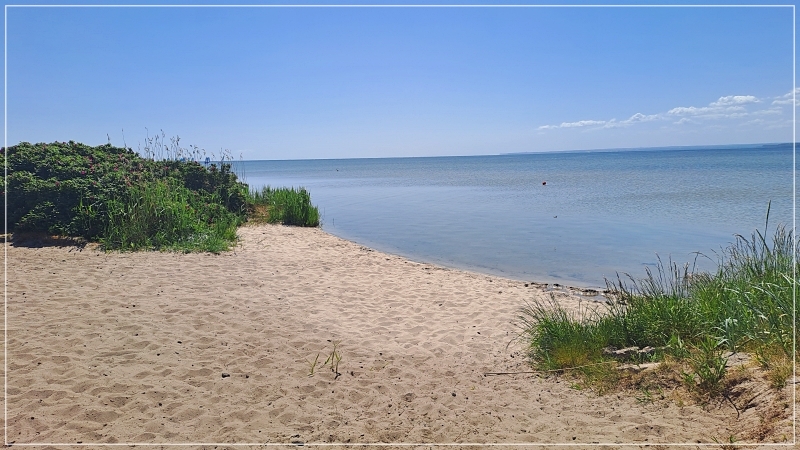 Pic. 3 |
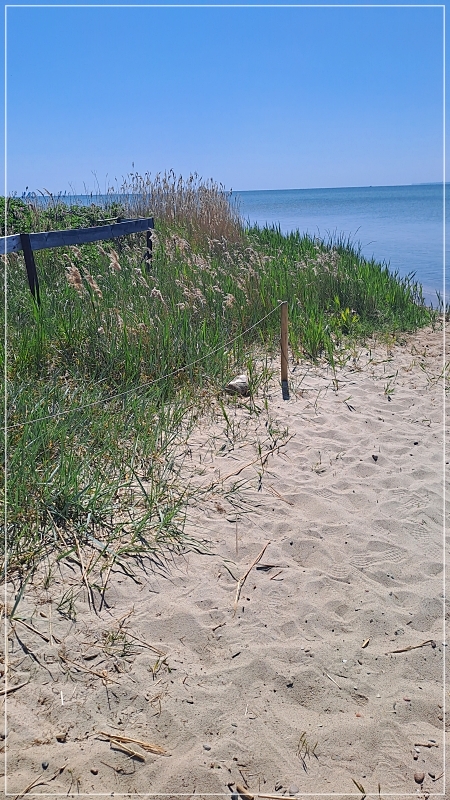 Pic. 4 |
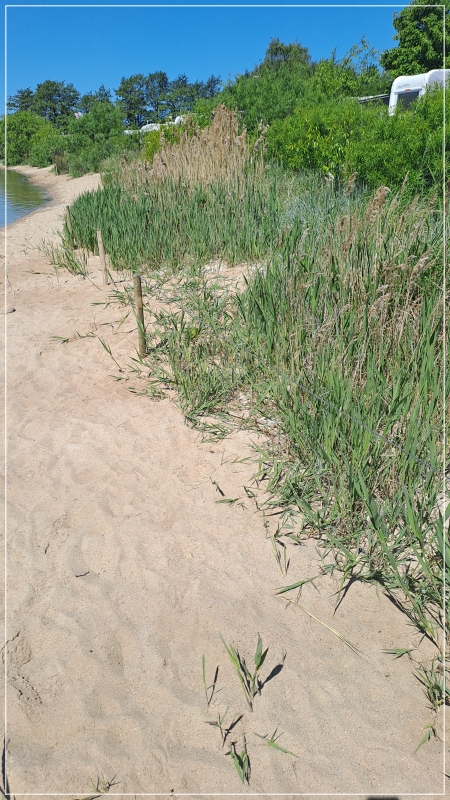 Pic. 5 |
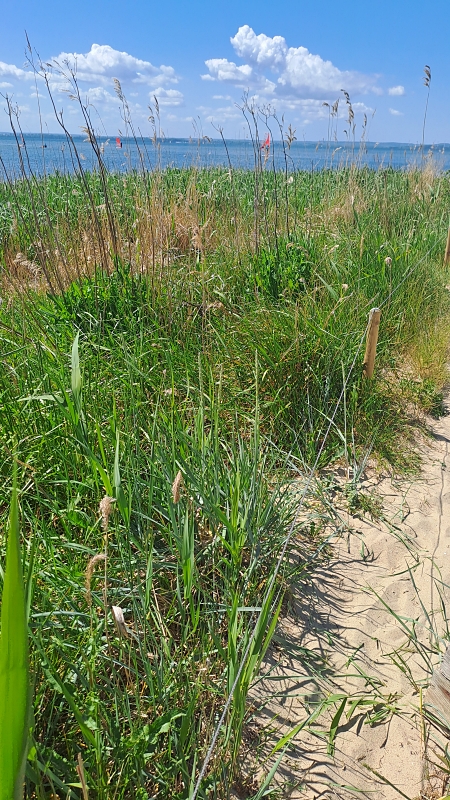 Pic. 6 |
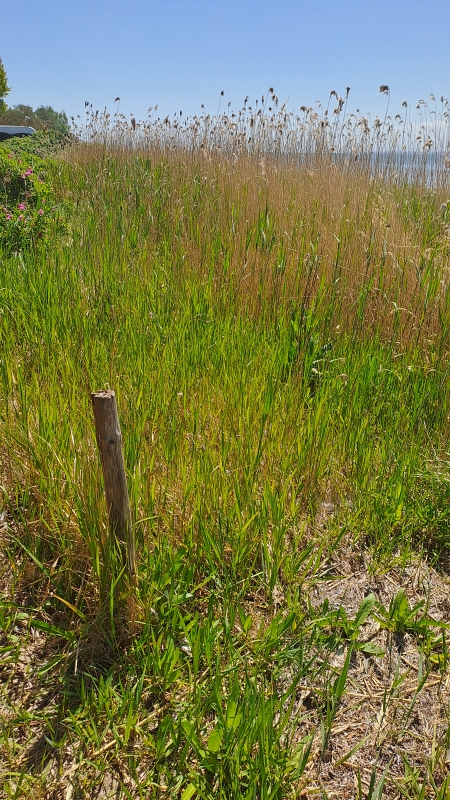 Pic. 7 |
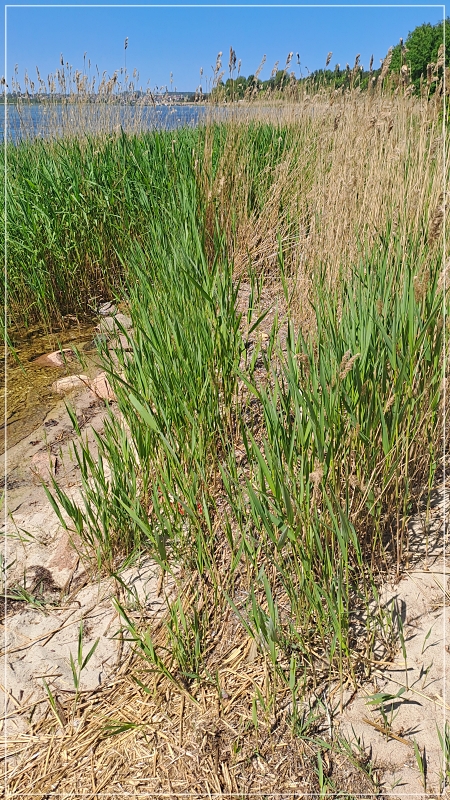 Pic. 8 |
Campsite "Małe Morze" (Photos 9-12). Here we were positively surprised by the development of reed beds along the entire beach adjacent to the camping area. As we learned from the source, both the owner of the campsite and the visiting tourists take care of the reeds, thanks to which the coastline has remained uneroded and small bays with free access to the Bay are available to tourists.
 Foto 9 |
 Foto 10 |
 Foto 11 |
 Foto 12 |
20.08.2022
On the beach in Gdynia-Orłowo, in the section from the mouth of Kacza to Swelina (1.5 km), the predominant amount of sea grass was observed in the algae thrown out by waves. Occasionally, single thallus of the brown algae was found.
|
|
|
|
|
18.05.2022
The annual monitoring of planted reed has shown that in all sites, except for Kuźni-ca, the planting status can be considered significantly better than in previous years. The conclusion is that the chosen method of planting has proven to be effective. Even in the area of the Kuźnica polder created in year 2015, residual plantings near the stone band have survived, despite the polder being washed away.
At several sites, we observed the thallus of the brown algae Fucus vesiculosus which was washed ashore. Its good condition and the place where it is found: the Małe Morze and Chałupy 6 campsites, gives us hope, that they may be native species that re-turned to the inner Puck Bay after many years! We have already started searching for it at the bottom of the Bay, so we encourage you to follow the information on a regular basis!
On the other hand, when it comes to the condition of reed beds, the condition of planted reeds has changed positively in the "Małe Morze" campsite, i.e. reeds ap-peared in many places along the beach, which suggests that the plantings made as part of the project achieved the assumed effect (spontaneous distribution of reeds from the site). However, these reeds do not form a compact rush, but only appear in the form of quite extensive clumps. Like last year, the campsite has kept the grounds outside its designated area, the fence has been completely removed.
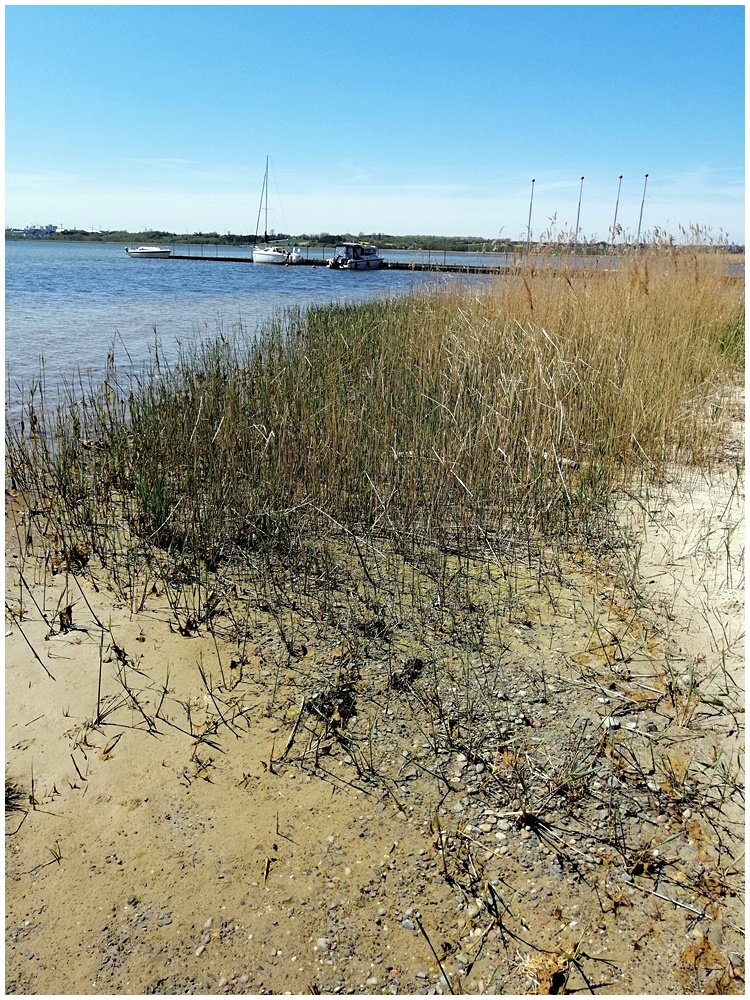
Pic. 1. |
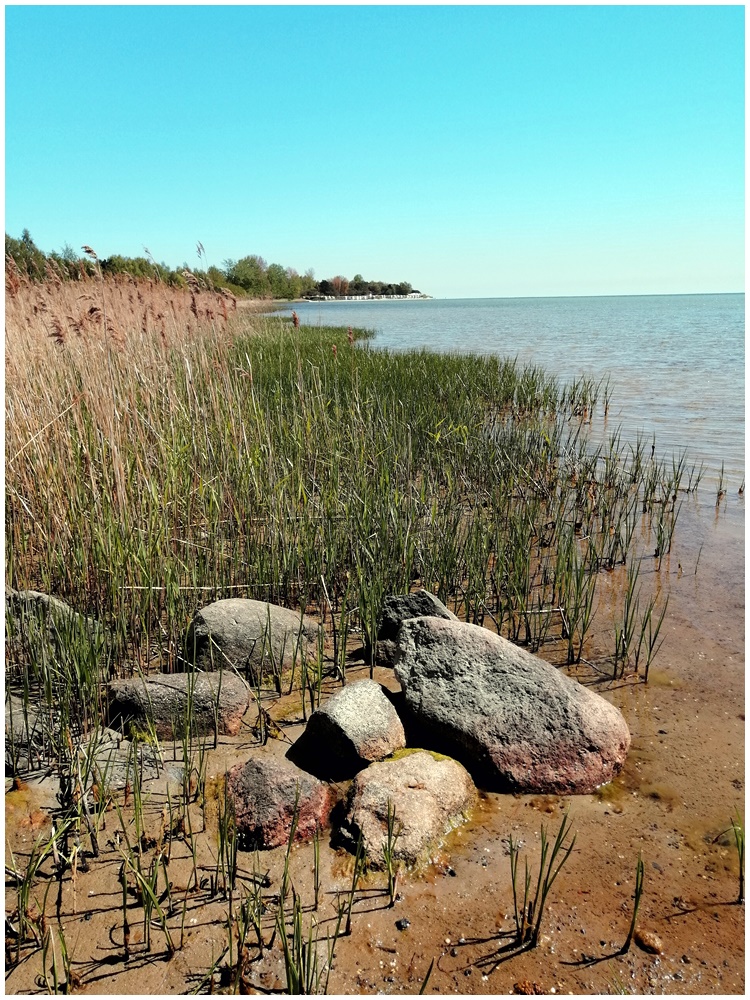
Pic. 2. |
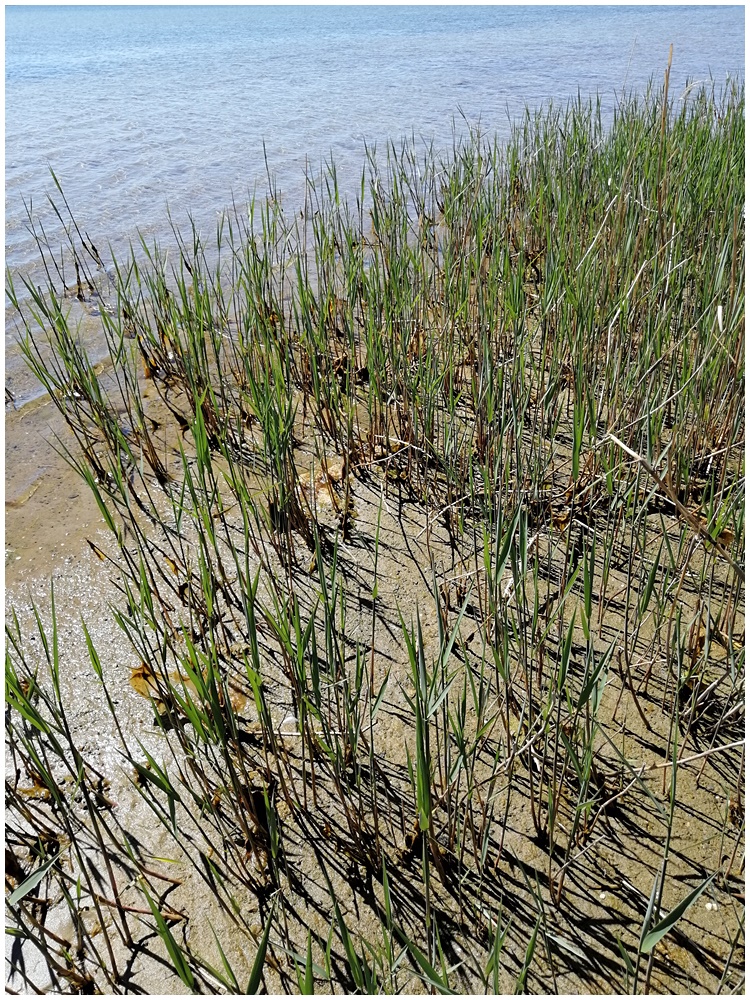
Pic. 3. |
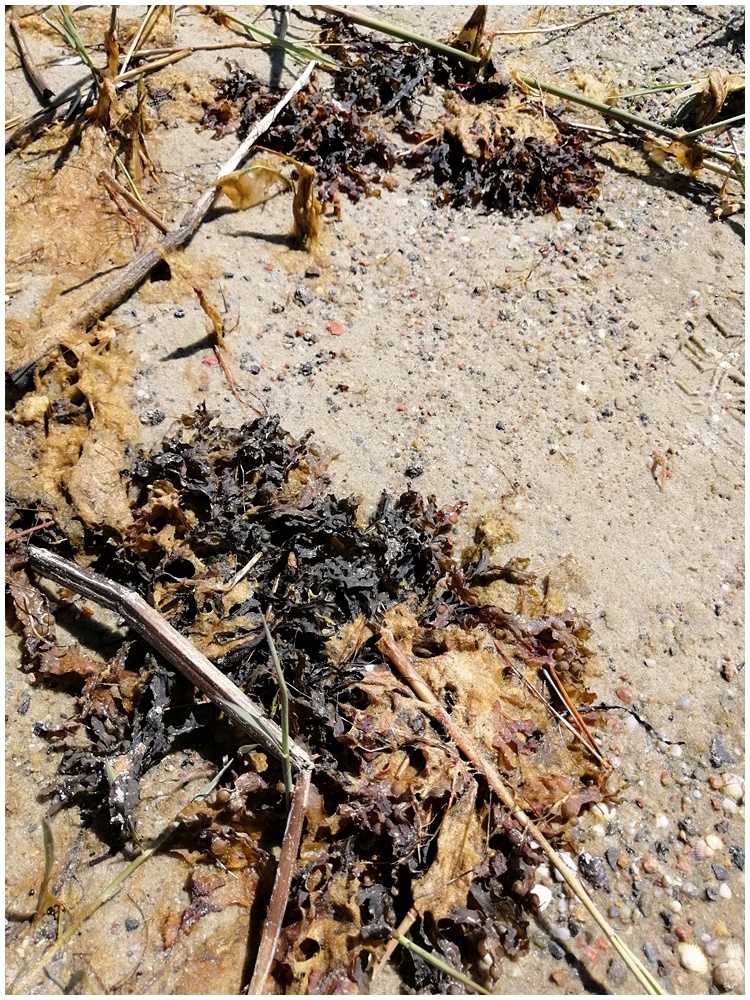
Pic. 4. |
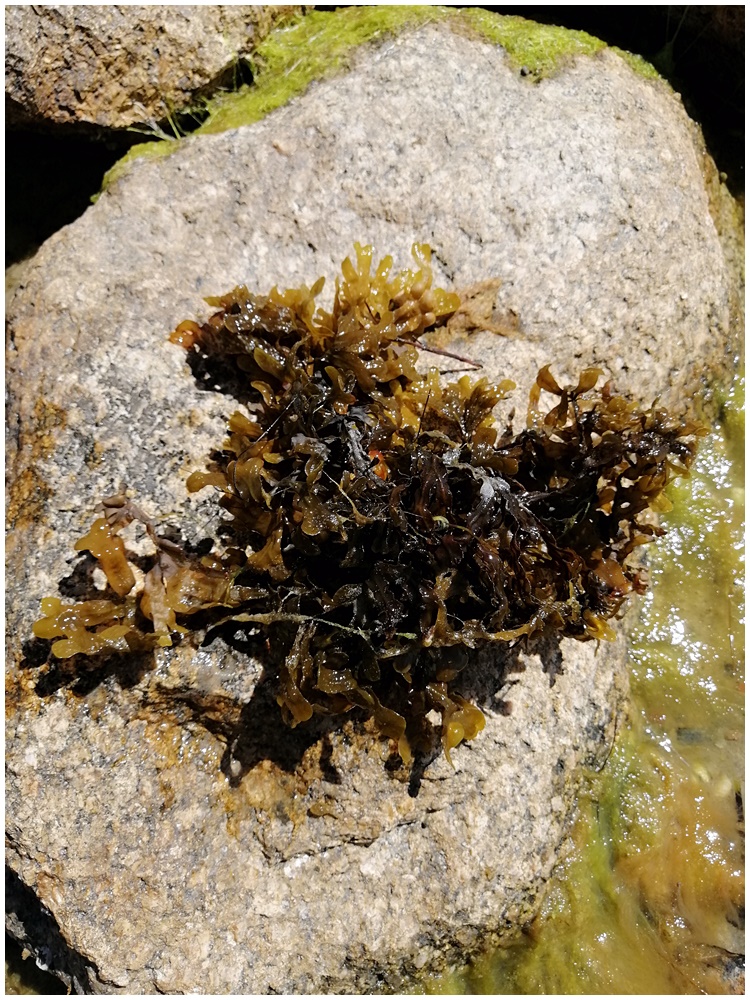
Pic. 5. |

Pic. 1. |
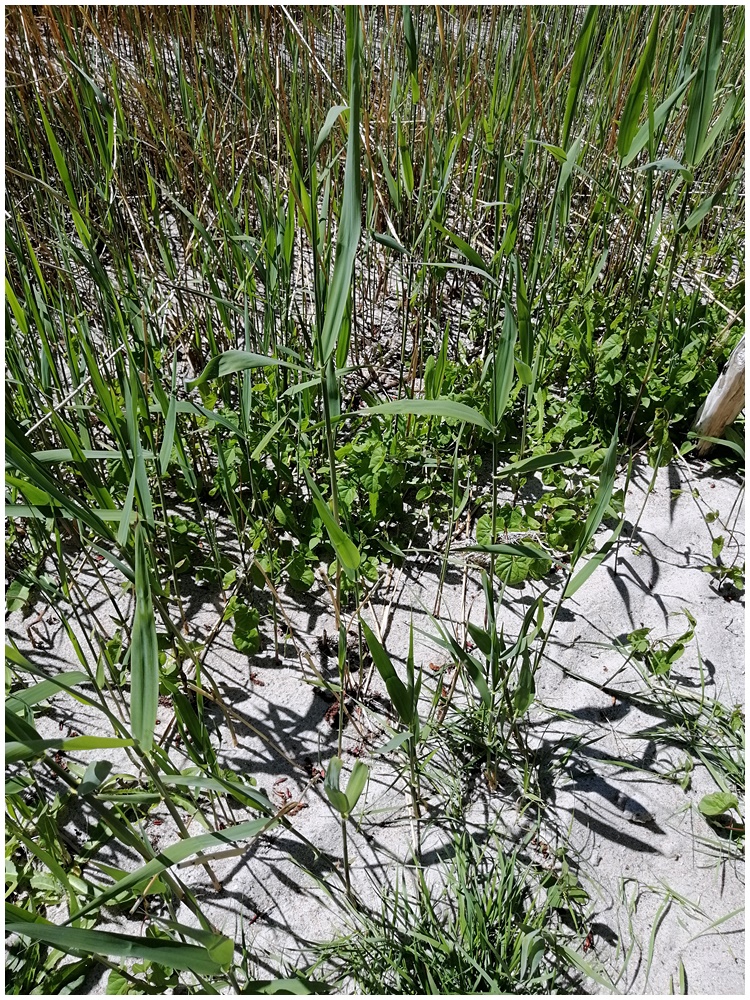
Pic. 2. |
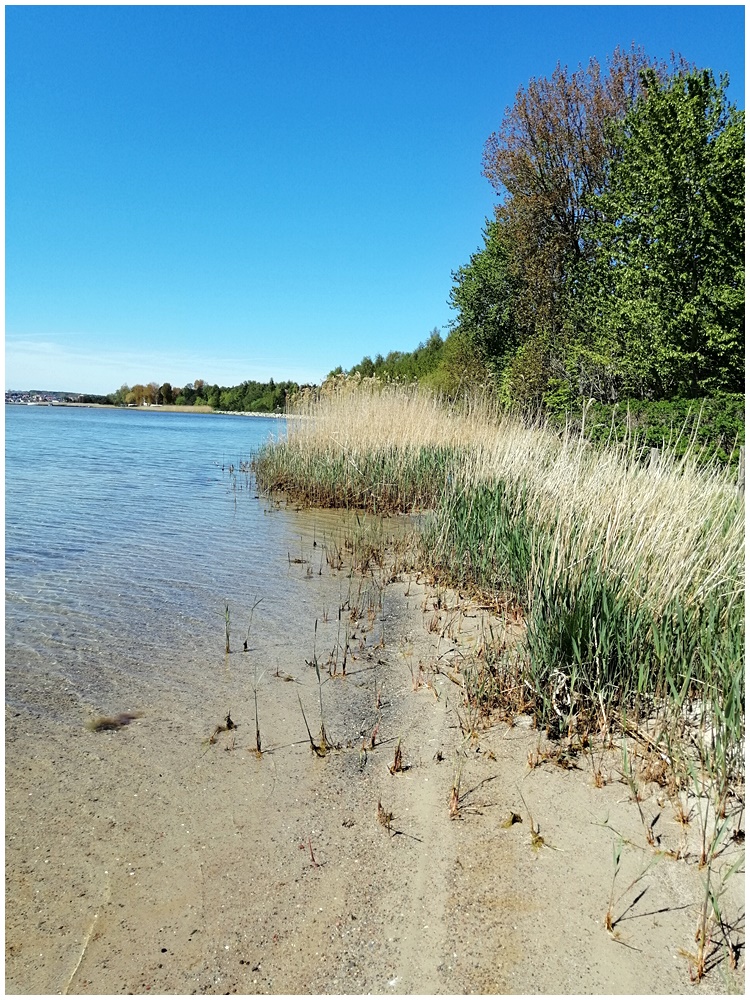
Pic. 3. |
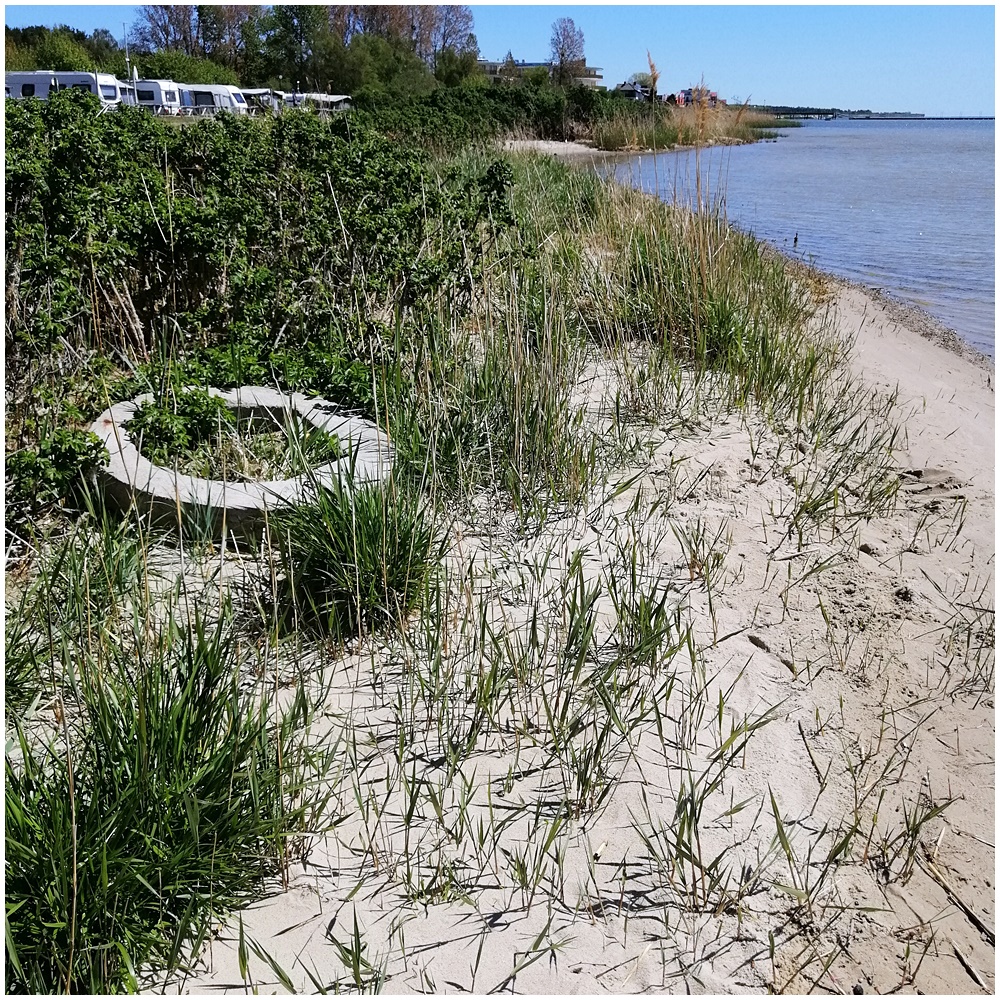
Pic. 1.
No changes in the "Chałupy 6" campsite. All structures elevating the beach remained. As for the reeds in the planted area, their condition is good this year. As every year, unfortunately, some areas will be treated as a boat parking, fortunately this does not cause drastic changes in the reed, so it can act as a base clump for further spreading of reeds within the campsite beach.
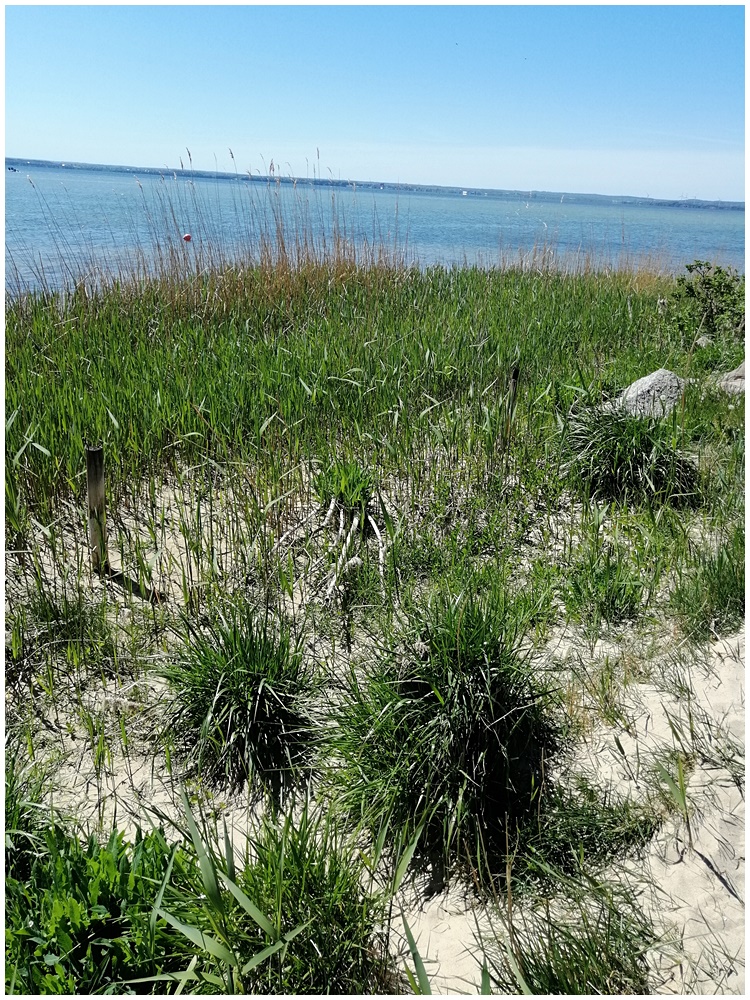
Pic. 2. |
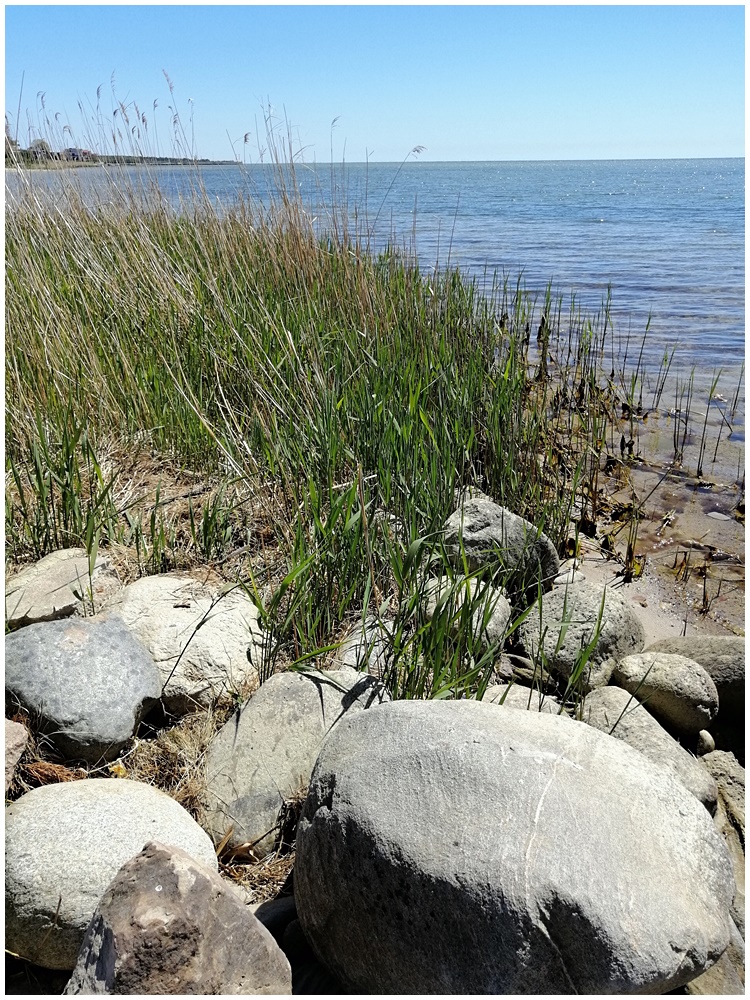
Pic. 3. |
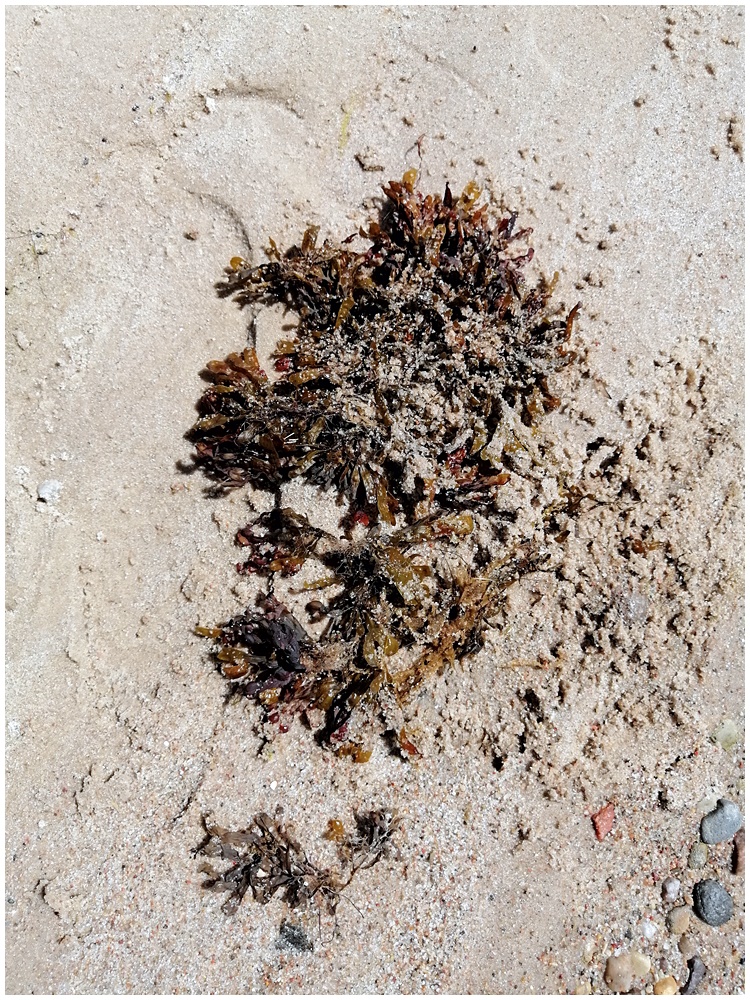
Pic. 4. |
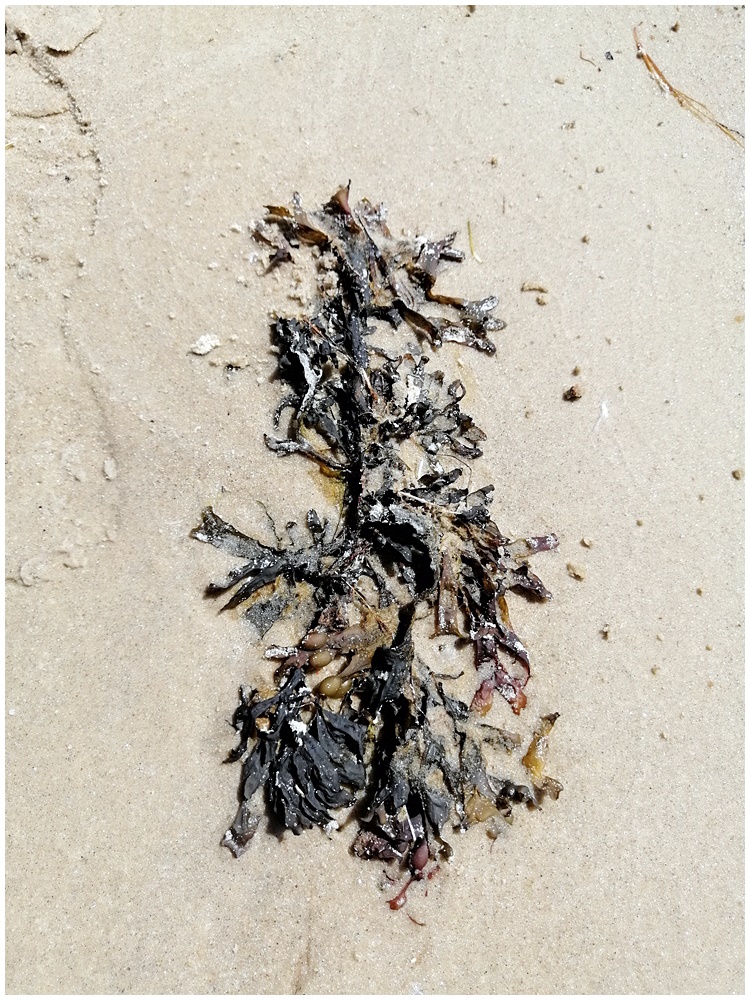
Pic. 5. |
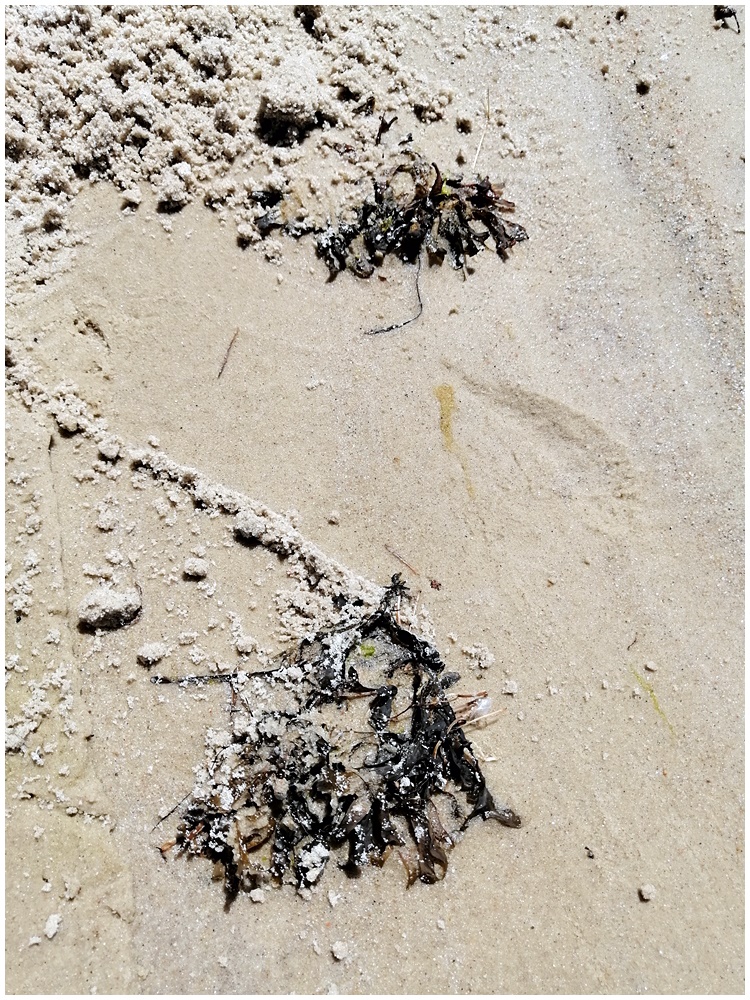
Pic. 6. |
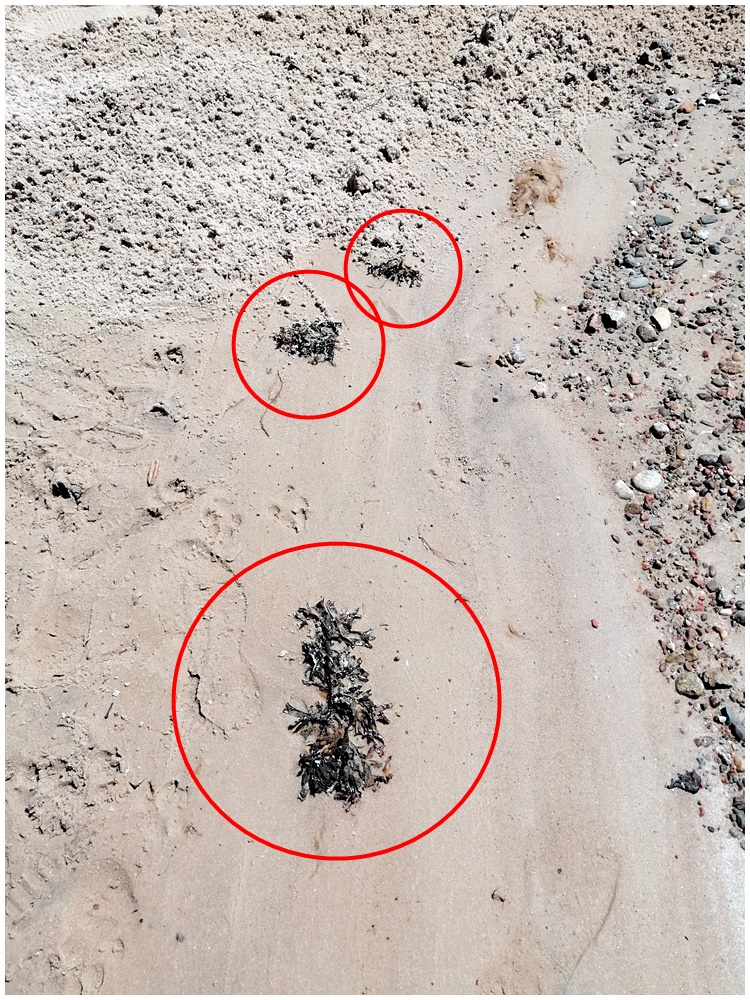
Pic. 7. |
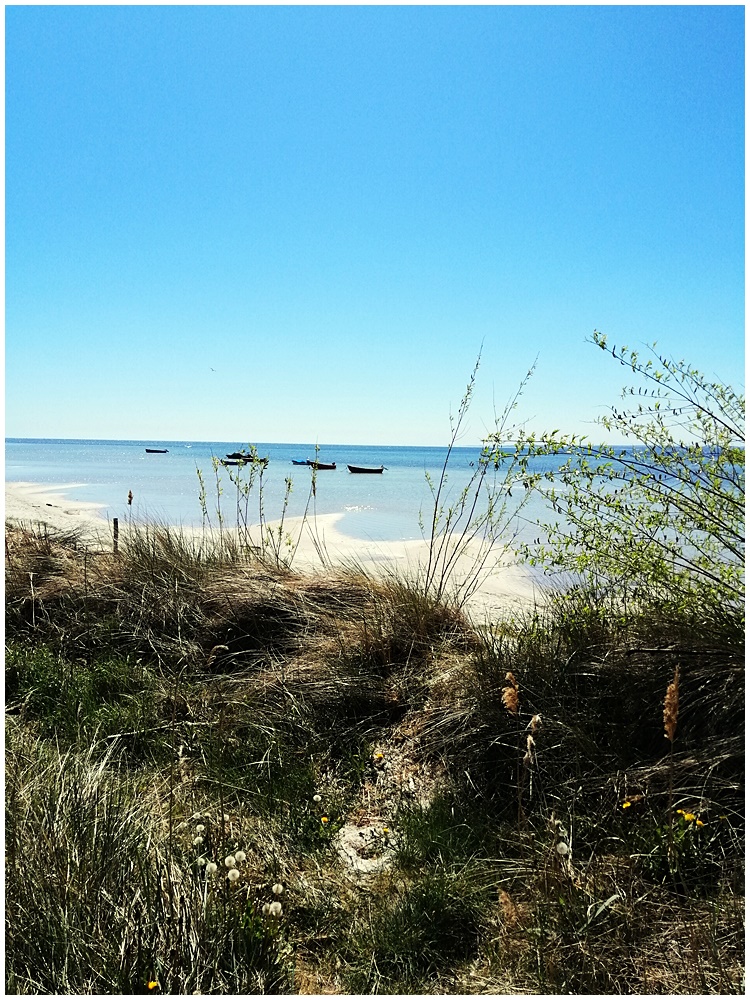
Pic. 1. |
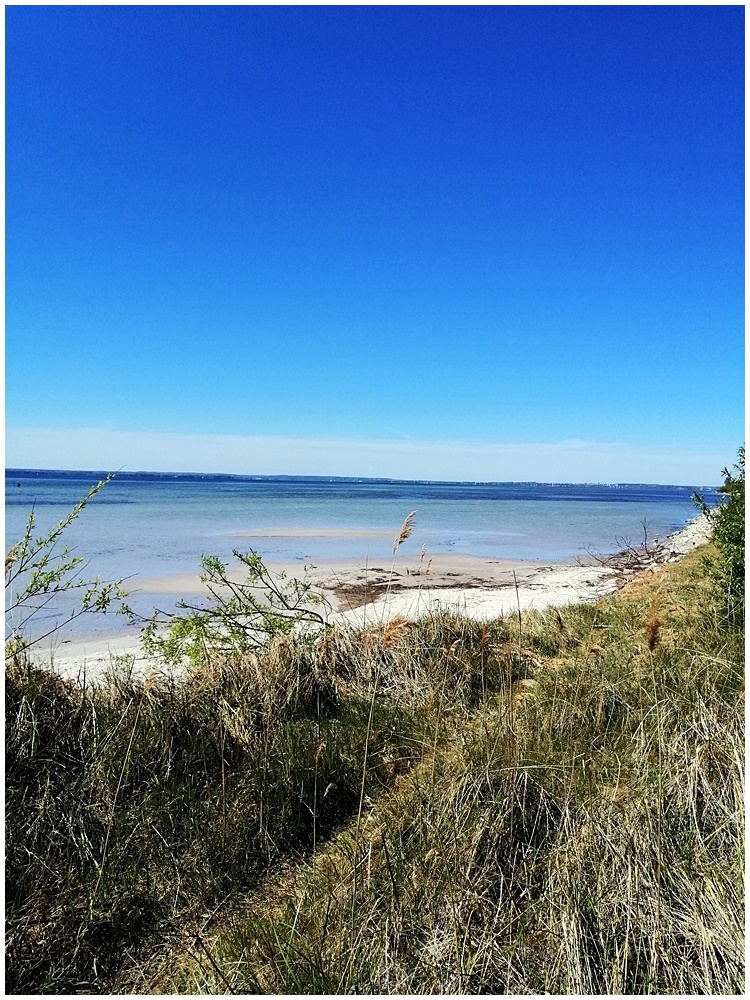
Pic. 2. |
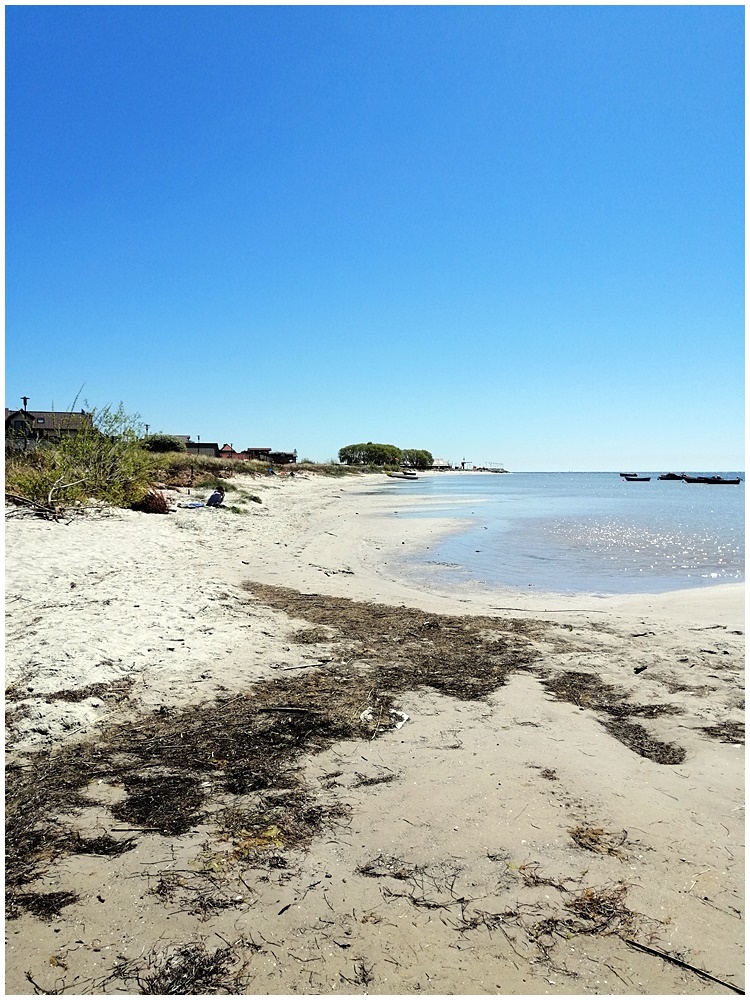
Pic. 3. |
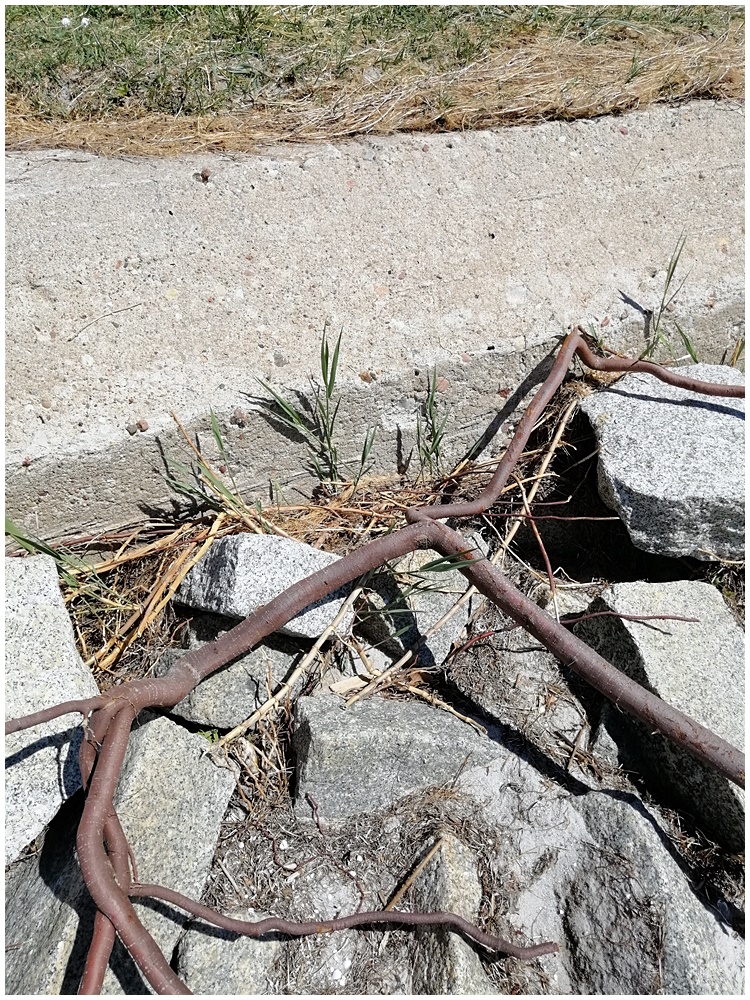
Pic. 4. |
20.05.2021
As every year, we monitored reed plantings covering the area from Kuźnice to Władysławowo. Just like last year, we found the planting condition as good, thus achieving the desired effect in the project.
In the area of the "Małe Morze" campsite, the reeds in the place of plantings did not regenerate. However, in the vicinity of the original plantings, we observed reeds along the entire beach strip adjacent to the camp, freely growing and occupying a larger area.

Pic. 1. |

Pic. 2. |
We believe that these are the remains of our plantings, the rhizomes of which, due to storms and ice pressure, have been dragged along the coast. |

Pic. 3. |

Pic. 4. |

Pic. 5. |

Pic. 6. |

Pic. 7. |

Pic. 8. | The situation at "Kuźnica" area has not changed. Only a narrow strip of beach with a barely visible sandbank remained at the western end of the beach, and the planted reeds disappeared with the polder . |

Pic. 9. |

Pic. 10. | This year, we also observed a much larger brood of insects-mainly from the chironomidae family, compared to the previous year. Photos shows their black exuviae lying in a large mass on the beach. The phenomenon occurred along the entire Hel Peninsula from the bay side. |
Samples of benthic organisms were collected with a light dredge from the Bay of Puck on August 18, 2020, species analyzes are ongoing, the photos show that the audited ones benthic fauna and flora are doing well in places.
10.06.2020
Monitoring of planted reed was carried out at all chosen areas. We determined the condition of the reeds as good and similar to the situation from last year.
The condition of the planted reeds has not changed in the area of the "Małe Morze" campsite, ie it has not recovered. As last year, the campsite has kept the area outside its designated area, further removing the fence that marks the border. It should be added, however, that in the vicinity of the original plantings, reeds were allowed to spread at the border between the beach and the water, along the entire strip of beach adjacent to the campsite (Pic. 1-5). However, these stands do not form a reed bed, but only appear in the form of clusters.
In the beach area near the campsite "Kaper", the reeds are in good condition and apart from one well-trodden path to the water, there are no major losses (Pic. 6).
The greatest changes were observed in the "Chałupy 6" campsite. They mainly concern the elevation of the beach, wooden structures to block sand from being taken by the water, and other structures that are to facilitate the movement of tourists in such terrain. All the above-mentioned designs have been documented and can be found in the pictures below.
As for the reeds in the planted area, their condition in this year is good. Unfortunately, as every year, this area is considered as a "parking lot" for boats (pictures 7-13).
At the "Kuźnica" site that is, on an artificial polder, all the plantings has been taken by water, including the polder. These sites, which were located in the area above the beach, also disappeared as a result of their displacement by the Leymus arenarius (Pic. 14-17).
Pic. documentation of reed plantings:
| ||||||||||||||||||
22.11.2019
Monitoring of planted reeds was carried out in all areas where planting was carried out. A lot of changes were noted in each of the areas. The sand bank in Kuźnica practically ceased to exist and therefore the reeds which was planted. On one hand, as expected, the polder was washed away by the waves, and on the other, the reeds that were planted on the outskirts of the beach were dominated by the dune perennial species - sand ryegrass (Leymus arenarius). An interesting fact is, that in this area was the large seagrass deposits on the shore (Pic. 3).
The area at Małe Morze campsite was devastated and disappeared completely from the area. Tourists 'toys' were still present in the place of planting, although it is an area outside the campsite (Pic. 18).
The areas that have attracted particular attention this year are the Kaper and Chałupy 6 campsites. In the first of the areas - Kaper (Pic. 13,14,15), where remnants of planting in the form of small clumps were noted a year ago, this year it was surprisingly high degree of reeds cover in beach area.
On the other hand, in the area adjacent to Chałupy 6 campsite, the changes are drastic. Not only that the position of the planted reeds has been devastated (Pic. 5.6), but the edges of the beach have been artificially strengthened (Pic. 7,8,9,10,11,12). The fortification was made out of sand bags and wood planks holding the embankment which was brought and built with sand of not sea origin.
Photographic documentation of reeds planted areas:
| |||||||||||||||||||||
23.09.2019
According to the project agreement, monitoring of seagrass has been conducted annually since 2015, i.e. after the end of the project, in the Inner Puck Bay (Fig. 2). The reason for monitoring is to show whether the state of the sea grass, mainly the degree of bottom cover and range, is changing. During the implementation of the project, it was indicated that seagrass occurs almost in the entire Inner Puck Bay to a depth of 4 m (https://www.iopan.pl/projects/Zostera/planting-pl.html). From 2015 to 2019, it was noted that where seagrass was found in 2015, it is still present in the same area, but still does not appear deeper than 4 m.
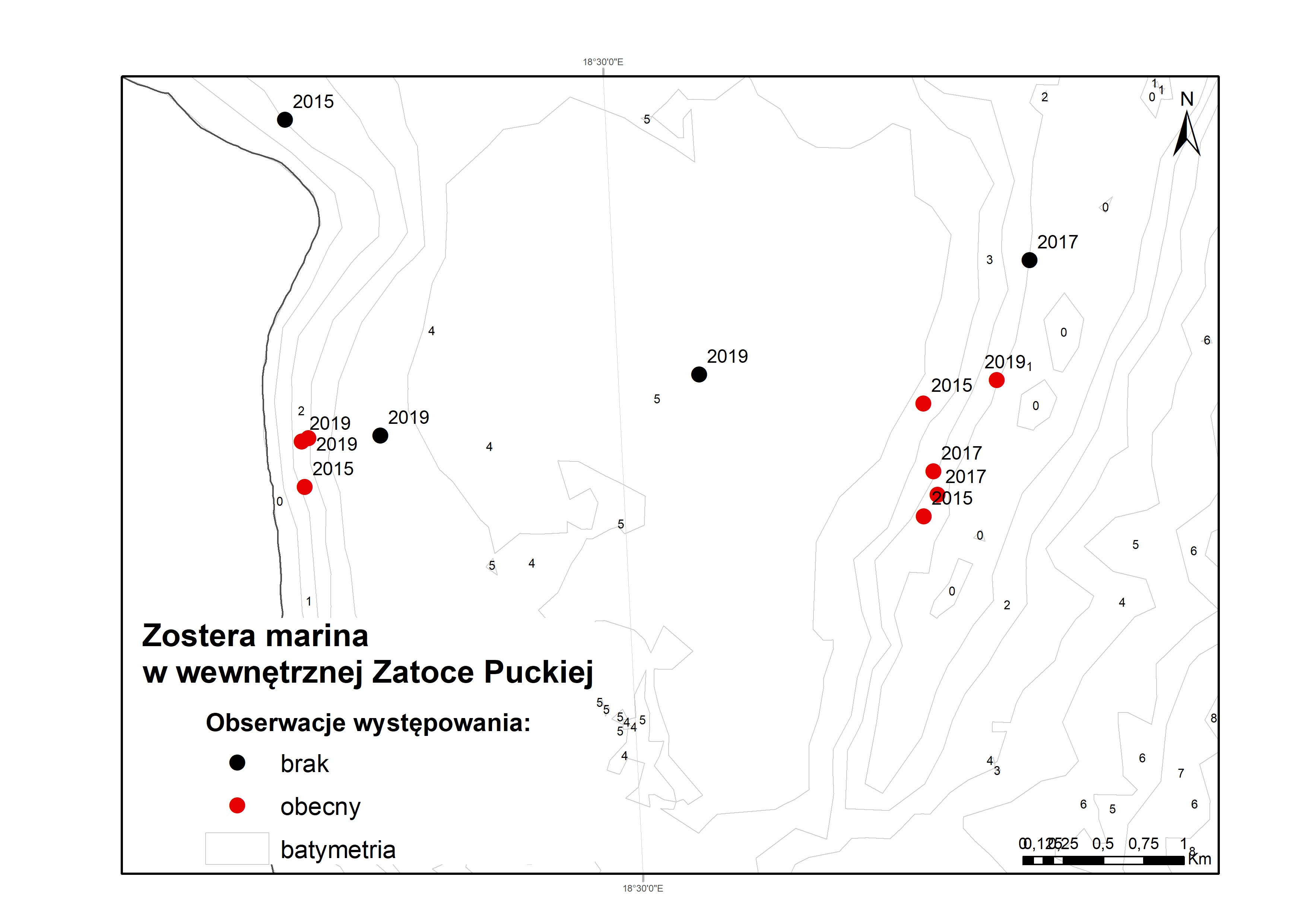
Fig.1 Detailed map of Z.marina occurrence in Inner Puck Bay from 2015 to 2019.
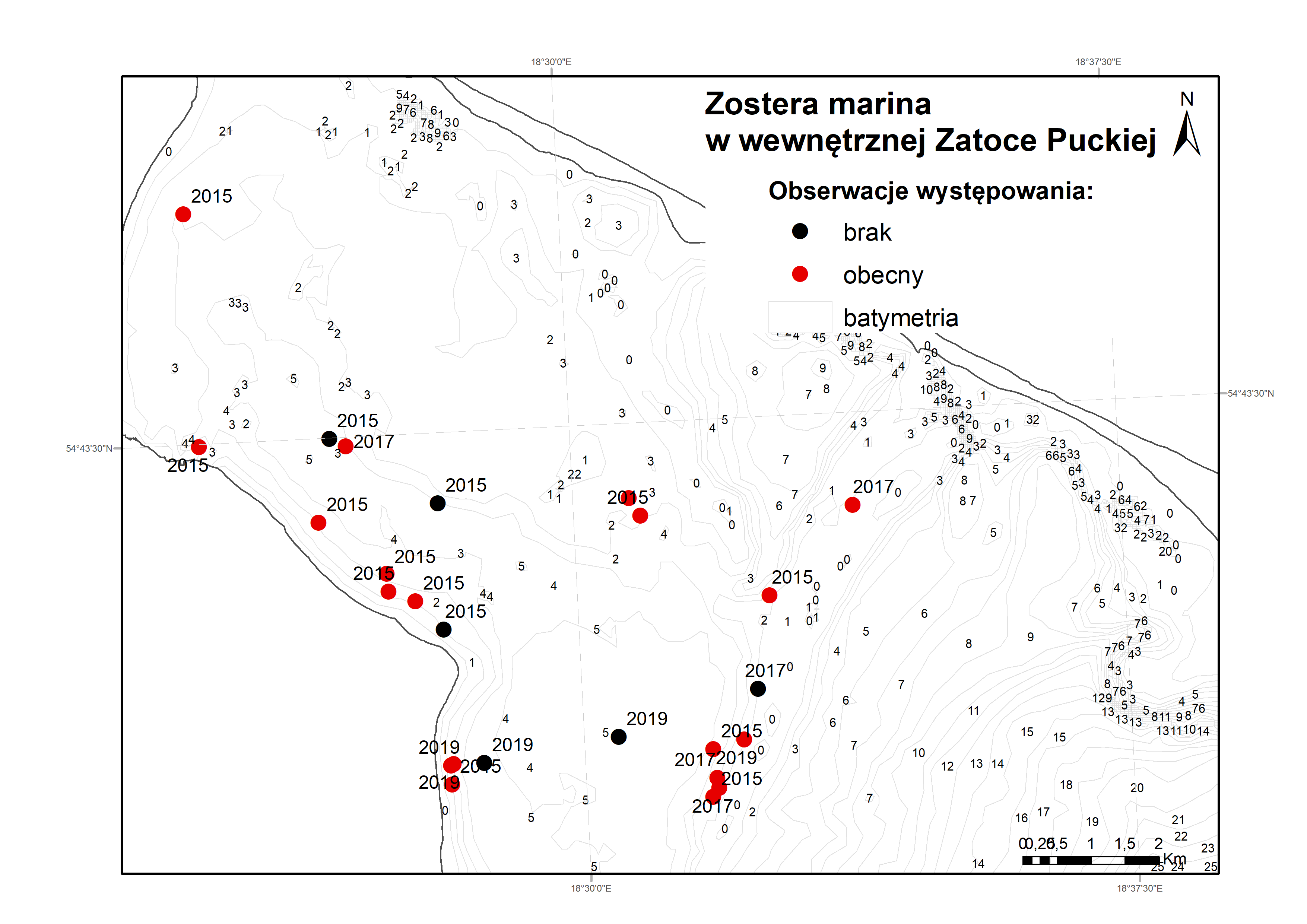
Fig. 2 Occurrence of Zostera marina in the inner Bay of Puck from year 2015 to 2019.
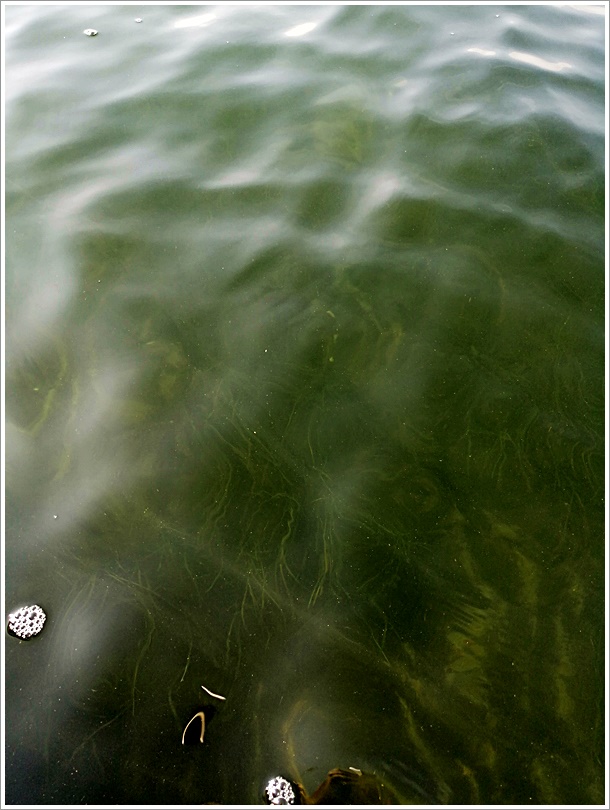 Zostera marina develops in the inner Bay of Puck, but these are still not compact meadows, rather often small, although sometimes numerous clumps coexisting with such species as Zannichellia palustris or Potamogeton pectinatus.
Zostera marina develops in the inner Bay of Puck, but these are still not compact meadows, rather often small, although sometimes numerous clumps coexisting with such species as Zannichellia palustris or Potamogeton pectinatus.
As a curiosity it is worth noting that this year the transparency of the water in the bay was excellent and you could observe Z. marina from the boat deck up to 2 m deep. |

|
21.07.2019
On the Tri-City beaches, especially after storms, one can observe on shores deposits of sea grass. A view so common until the early 1970s, after the ecological disaster of the Bay of Puck, Z.marina disappeared almost completely for several dozen years. For several years now, with the rebirth of sea grass meadows, this phenomenon can be observed again. Partial leaf loss is not fatal to Z. Marina. This is part of its survival strategy, losing leaves under stron waving, protects underground, long rhizomes stretching under a large area of the bottom. Loss of a few or even a dozen leaves does not destroy the plant, and after a short time their regrowth occurs. |
06.09.2018
According to the project contract, after its completion we continue monitoring planted reeds on the Hel Peninsula. In spite of earlier and quite optimistic assumptions that reed will remain on selected positions, this year we found most of them destroyed - both by the sea and, unfortunately, by tourists.
Starting from the Kuźnica - as we have rightly assumed, the artificially piled polder hadn't have withstand the dynamics of the sea and the entire area, where the reeds had been planted, had been washed off. On the other hand, reeds planted along the dunes line, had remained as weak as they had been from begining, and in many places it had been replaced by a Leymus arenarius.
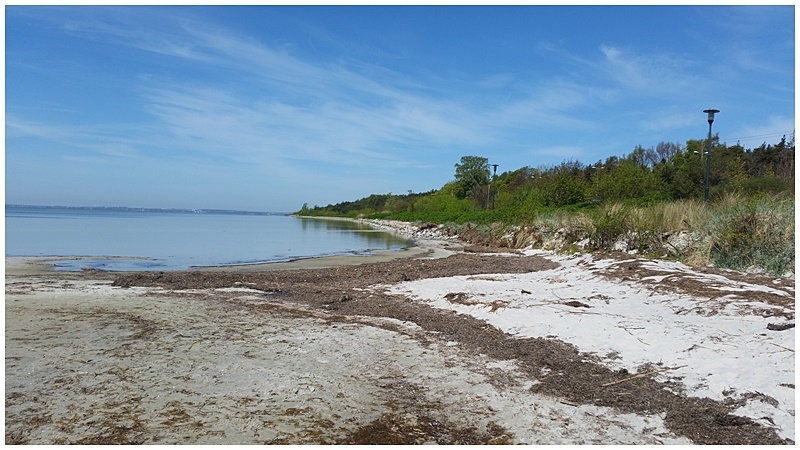
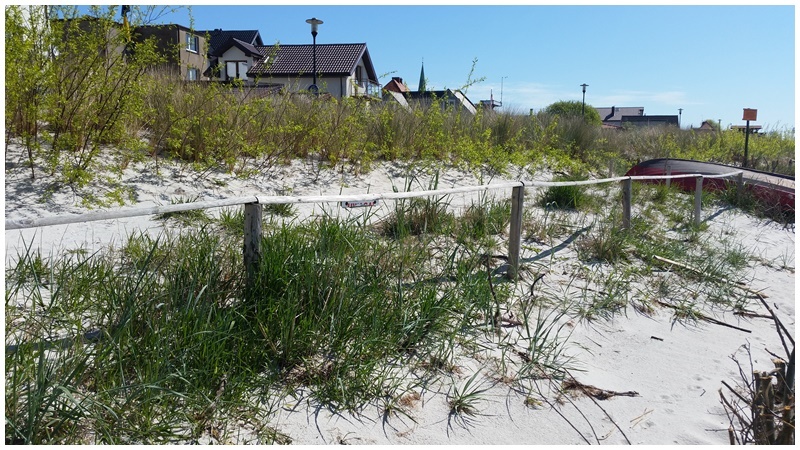
|
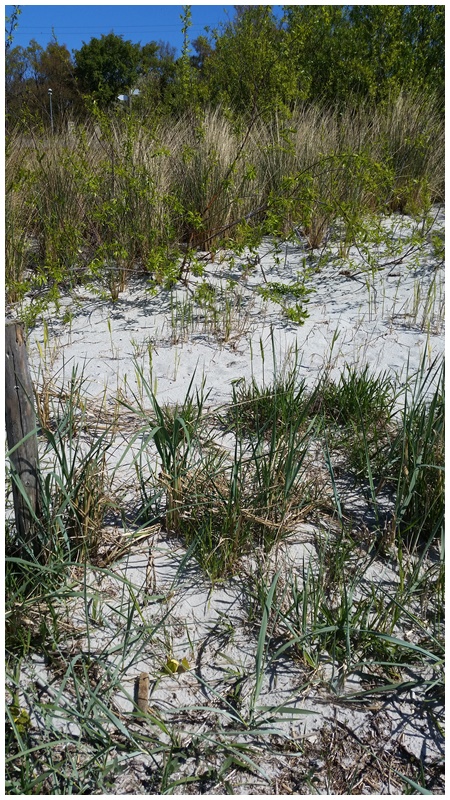
|
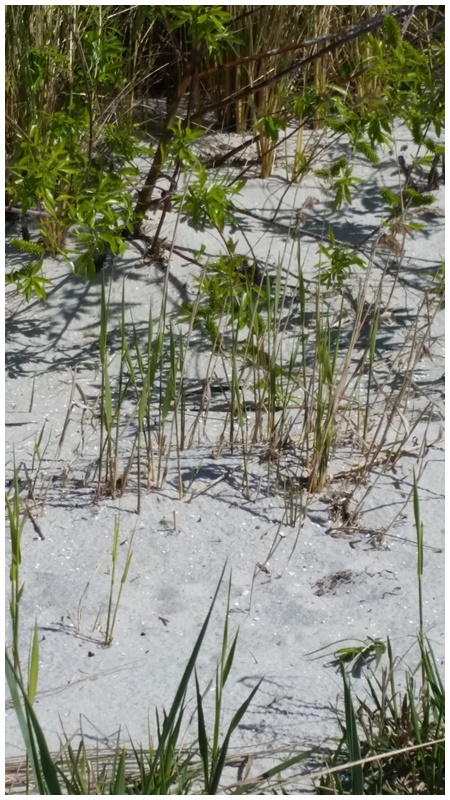
|
"Chałupy 6" - Reed is still present in the planting places, however, on the site located closer to Kuźnica, there were visible traces of boats left behind and other recreational equipment in the middle of the planting stand. The remaining areas, located in the part of the elevated campsite, are in good condition and the reed grows there without major obstacles.
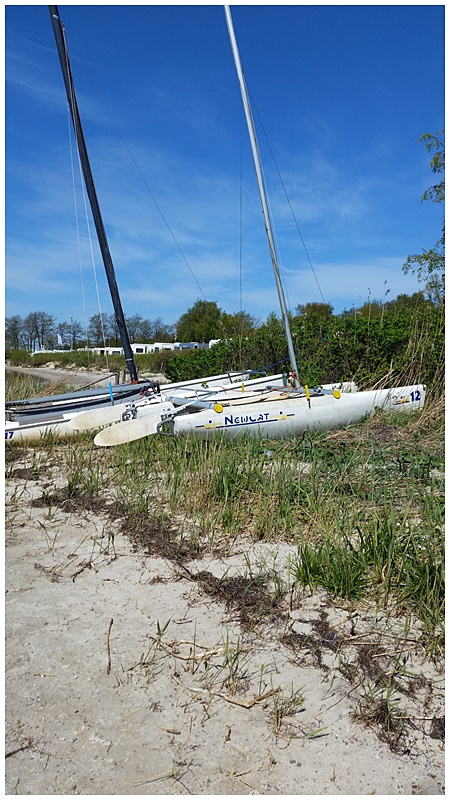
|
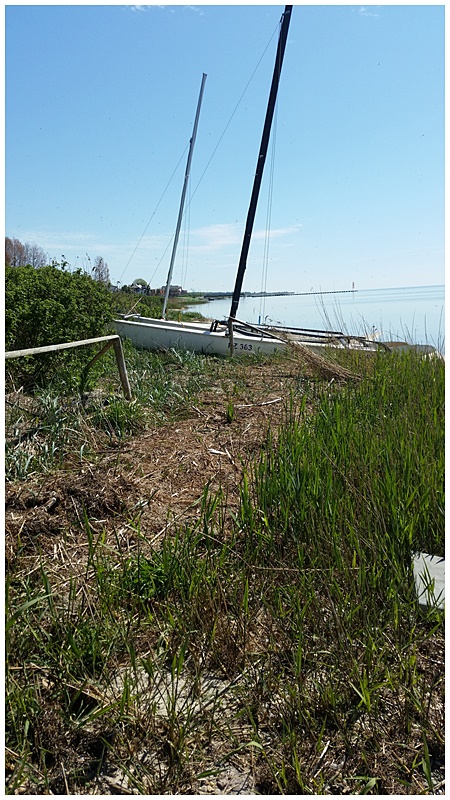
|
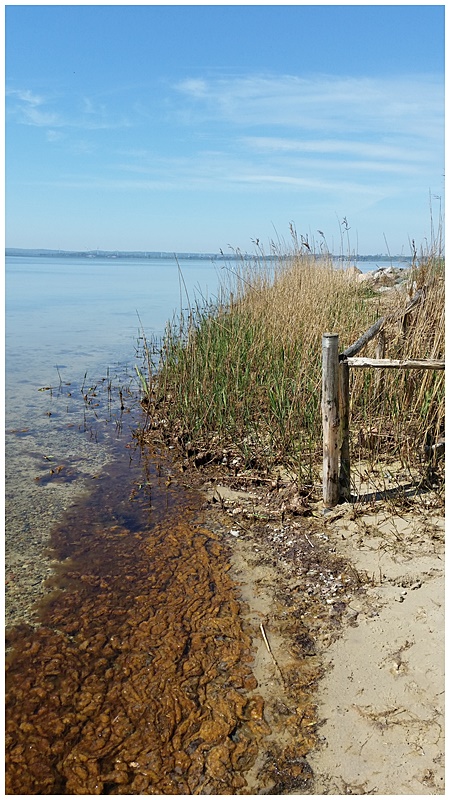
|
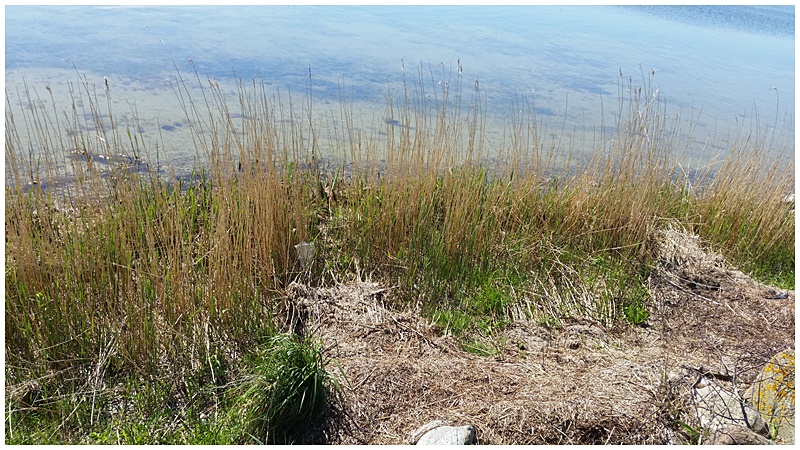
|
The area of the beach behind the "Kaper" campsite, this year turned out to be the most devastated area of them all. Initially, a well-developed reed, remained without major problems despite storms, freezing etc. This year, for reasons unknown to us (possible combination of nature and, unfortunately, probably beach users) reed has disappeared in 80% of this area.
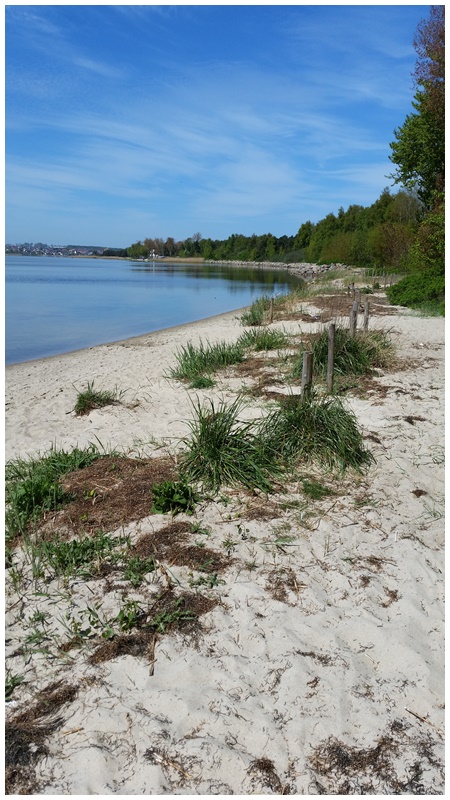
|
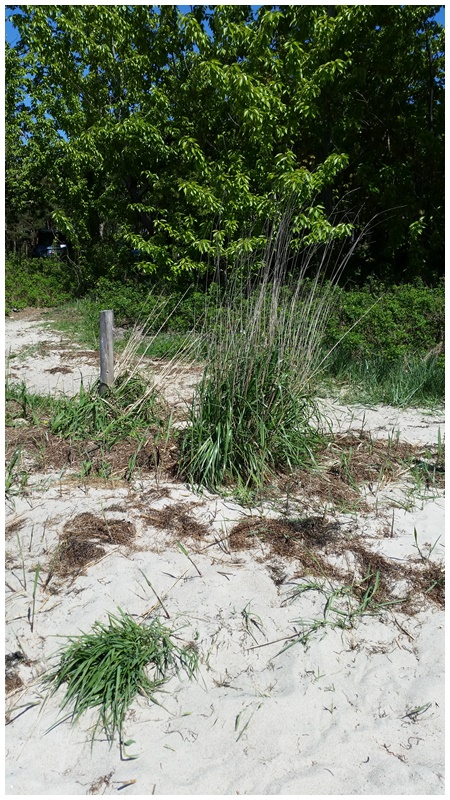
|
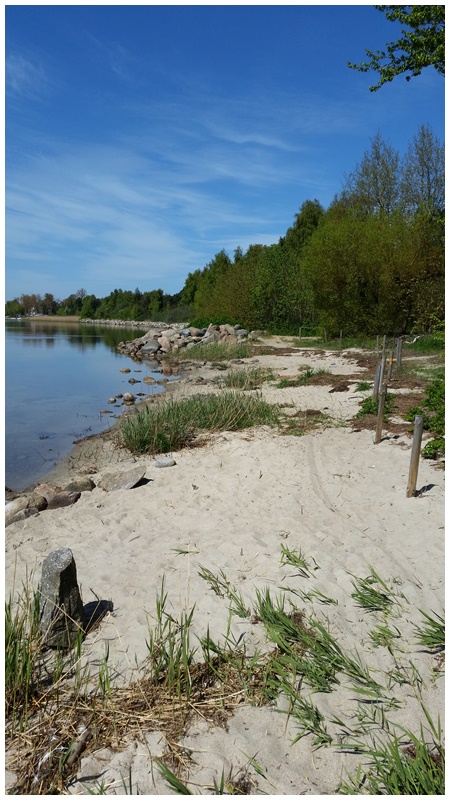
|
The last area of planting - Camping "Małe Morze", unfortunately, has also been devastated - it is known for sure that tourists are the cause. Surprisingly, the area where the reed was planted does not belong to the campsite, which suggests devastated, but still present, metal fence.
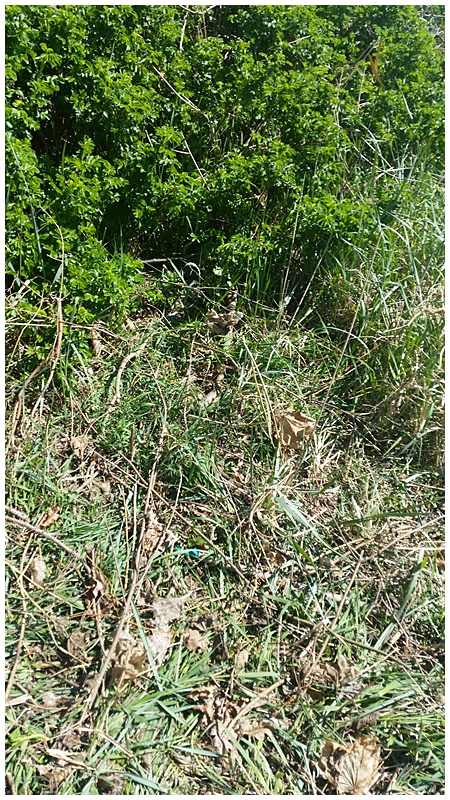
|
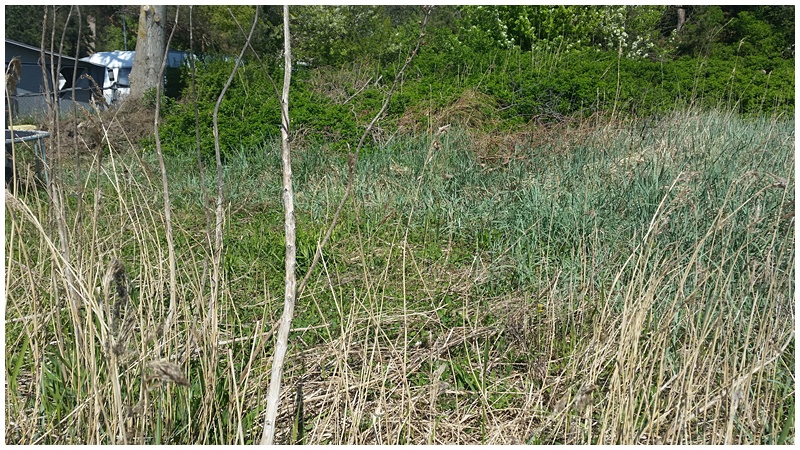
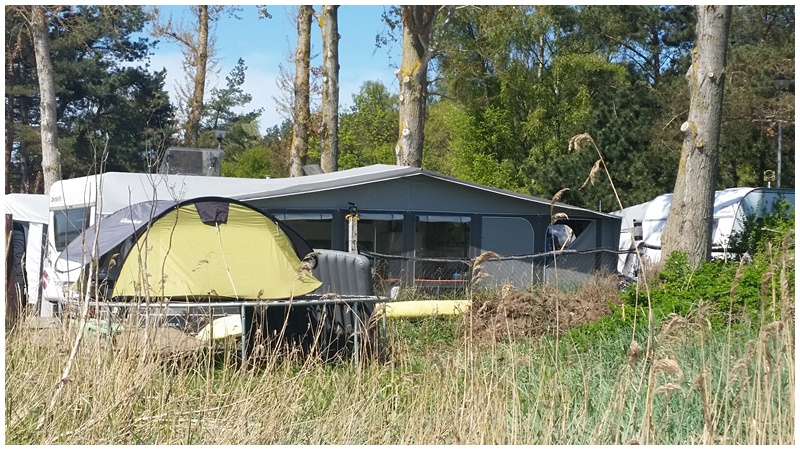
|
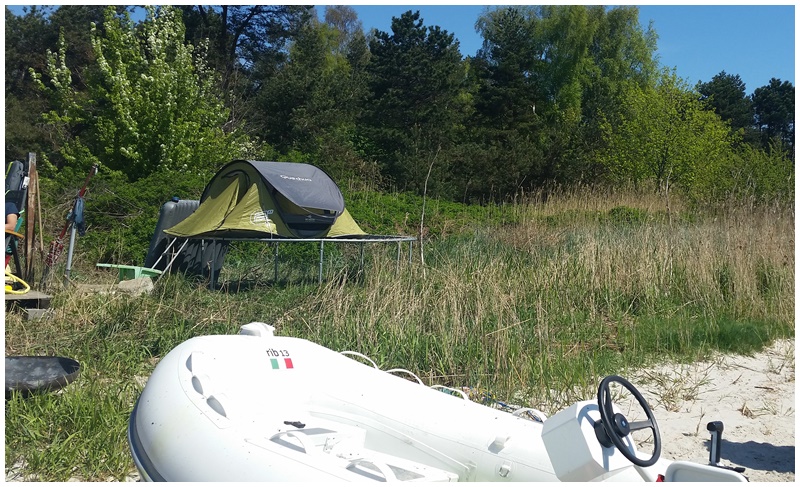
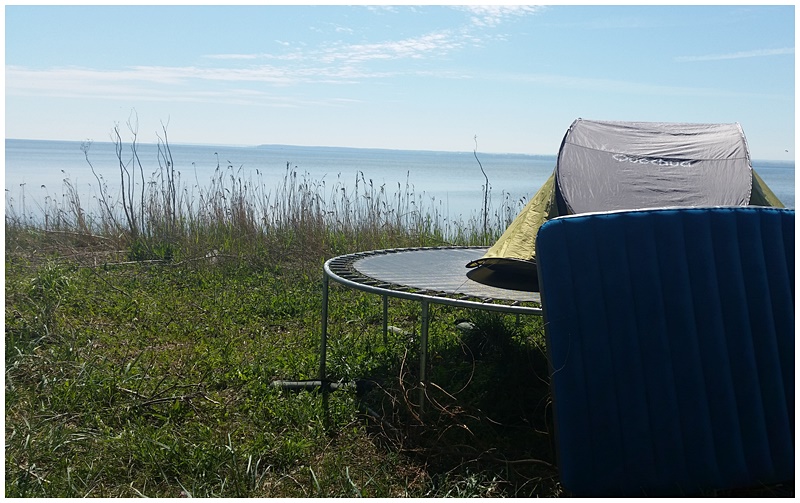
|
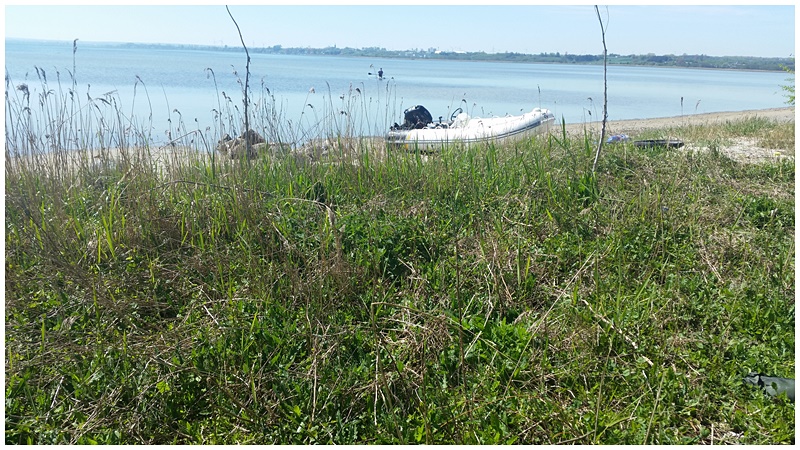
|
28.09.2016
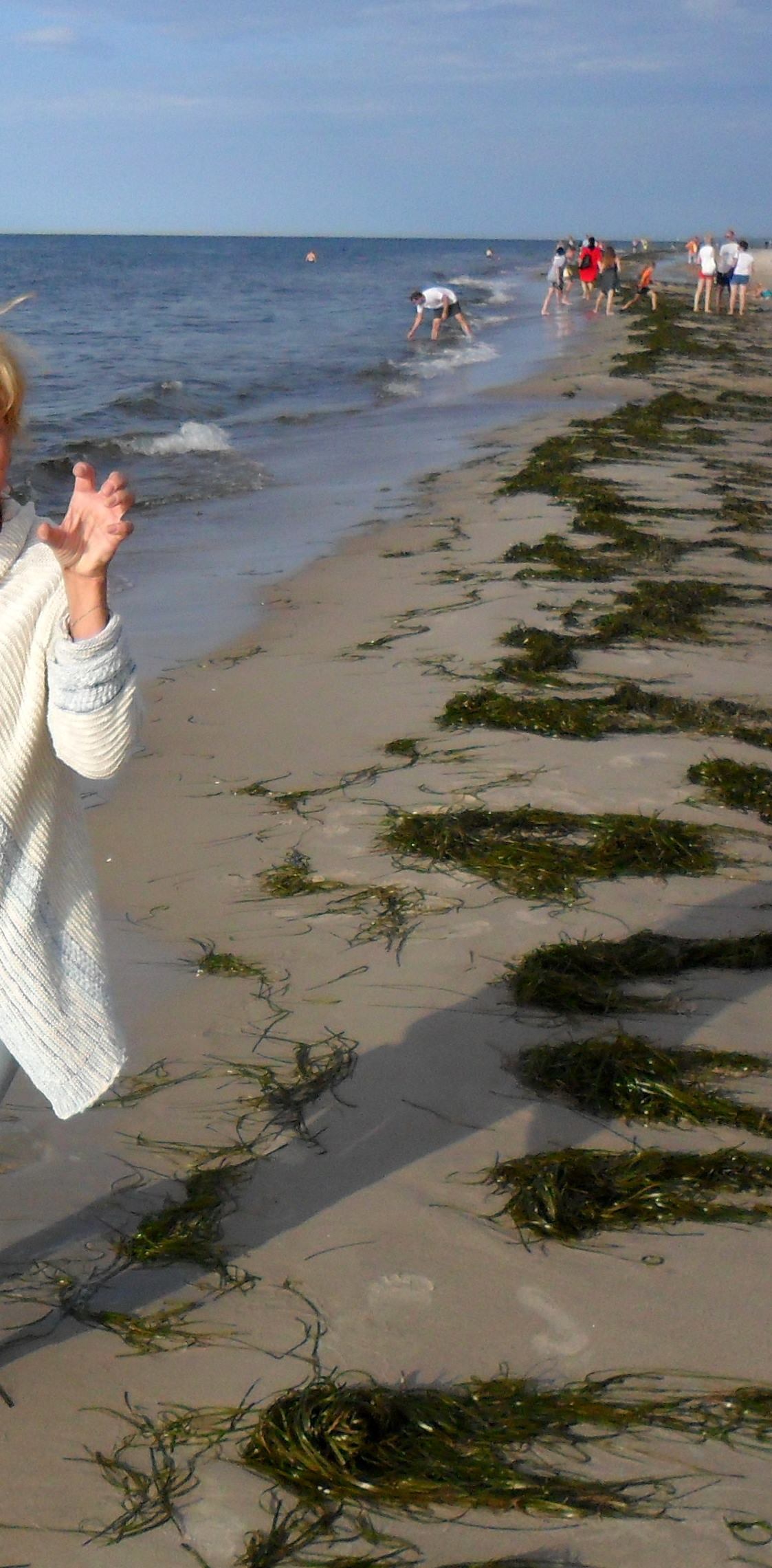 Unexpected view on the West coast of Polish Baltic coast - autumn casts of Zostera near Dziwnówek, in is very likely it comes from the local, newly reestablished underwater meadows (otherwise nearest source of Zostera are German shallows near Rugen).
Unexpected view on the West coast of Polish Baltic coast - autumn casts of Zostera near Dziwnówek, in is very likely it comes from the local, newly reestablished underwater meadows (otherwise nearest source of Zostera are German shallows near Rugen).09.03.2016
Another interesting discovery - this time in the field of genetics, in a published article from this year in Nature titled "The genome of the seagrass Zostera marina reveals angiosperm adaptation to the sea". Link to the article here.
21.01.2016
Although the winter this year was not impressive, however, for a short period low temperatures have remained for a bit, which allowed to keep freezed the marginal areas of the bay. So we went to the Gulf to see if we could see sea grass under the ice. For this purpose, we drilled a hole in the ice, but unfortunately only the sludge was in the sampling points. Sea grasses were much farther, at a deeper part, which we did not want to explore due to probability of ice collapse, since the ice started to disappear there. We have postponed the observations for next year, maybe winter will be more cold than this year.
By the way, we checked the state of reed plantings at the Kaper site, the reed is still there and maintains it without major obstacles as can be seen in the pictures.
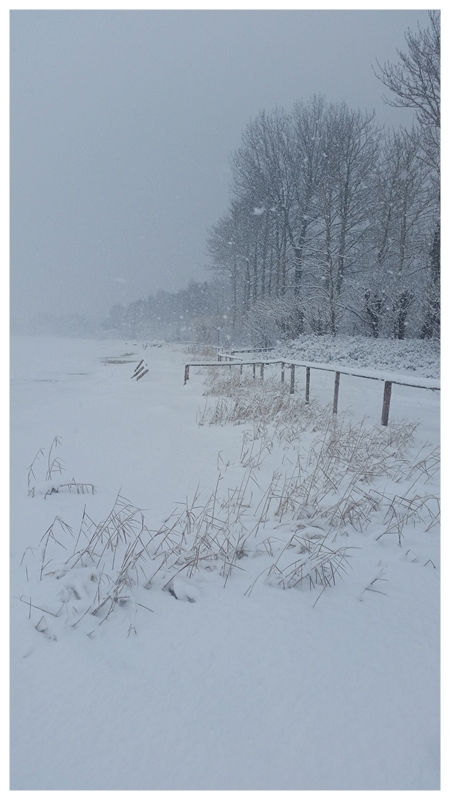
|
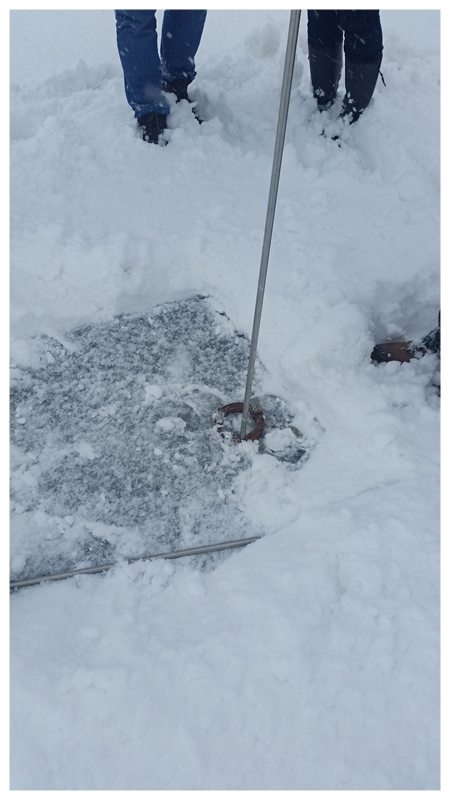
|
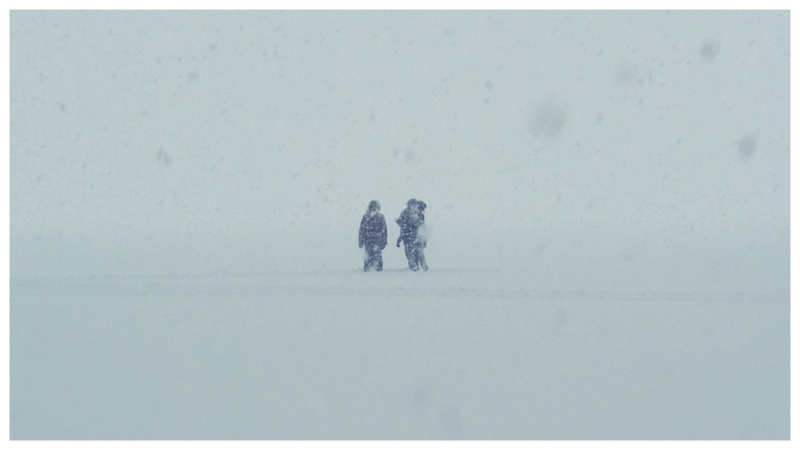 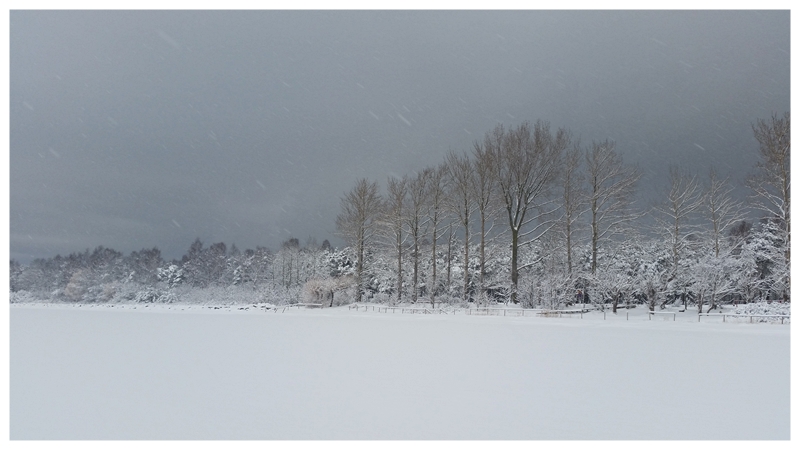
|
15.12.2015
Today's entry is devoted to new curiosity - a very large sewage treatment plant in Swarzewo has been developed. It looks impressive from the Bay side!
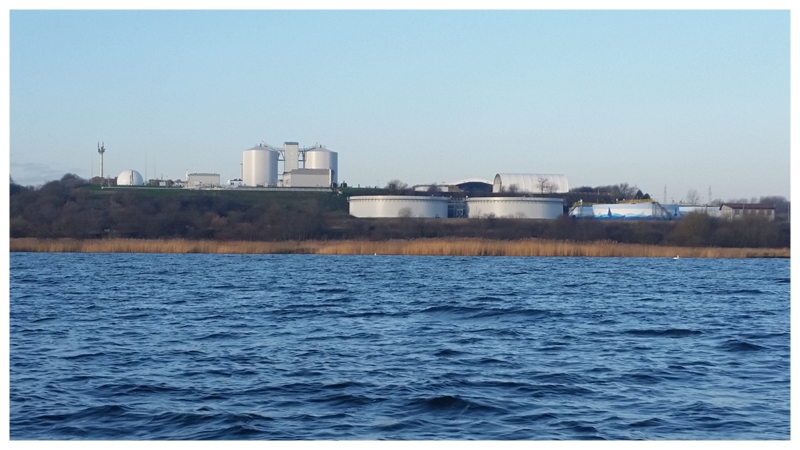
|
09.11.2015
After one month from planting the reeds, we checked their condition. We determined, that their condition as satisfactory. We also checked the sampling site, where we also found, that the reed were not destroyed as a result of our activities.
Also, we managed to observe large clusters of sea grasses ejected during the storm.
"Kaczy Winkiel"
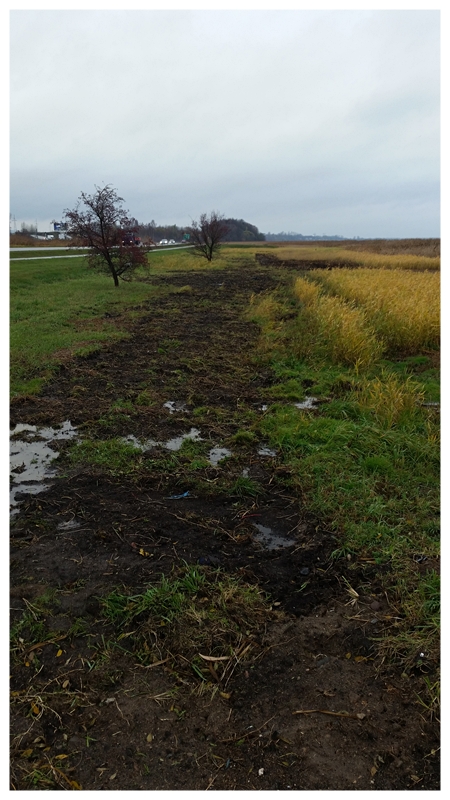
|
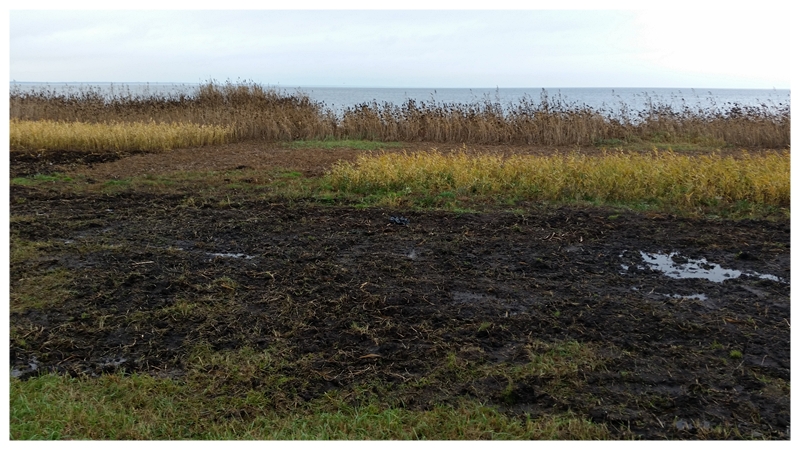
|
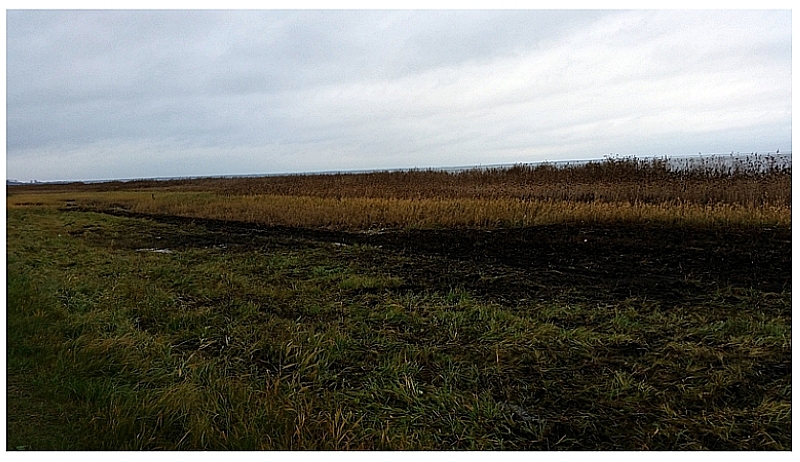
|
"Kaper"
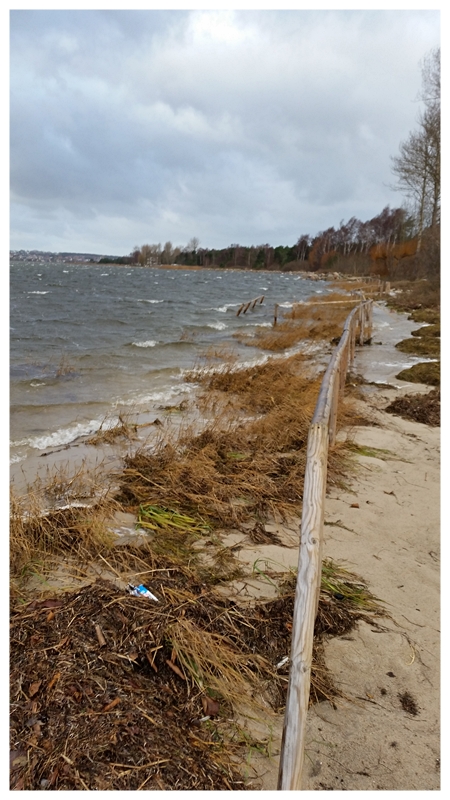
|
"Kuźnica"
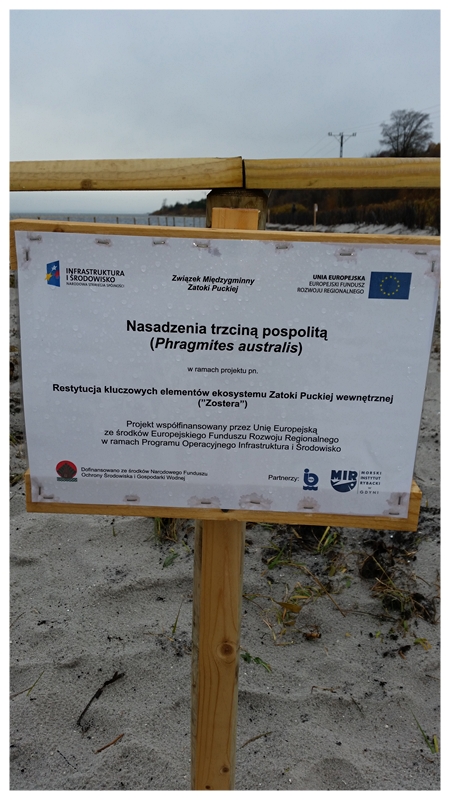
|
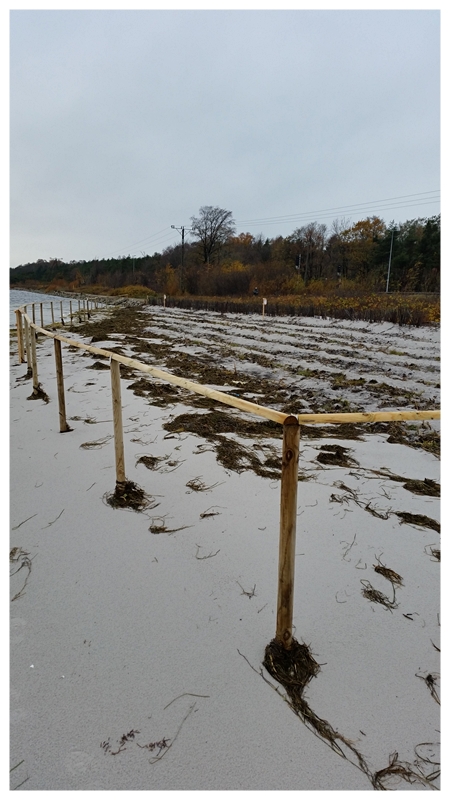
|
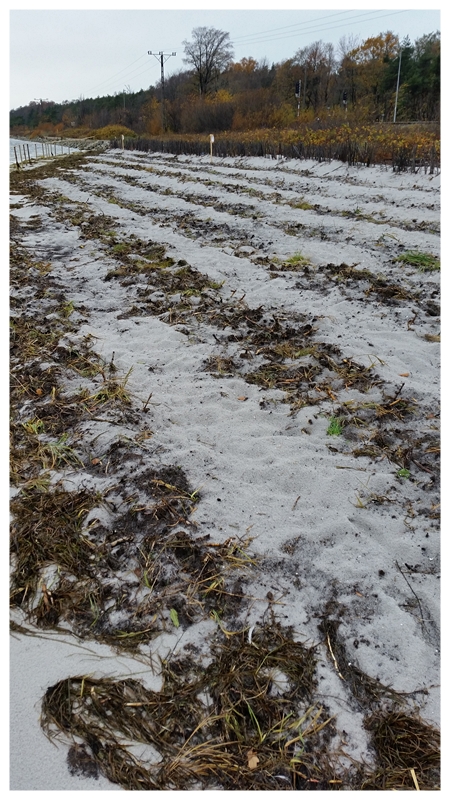
|
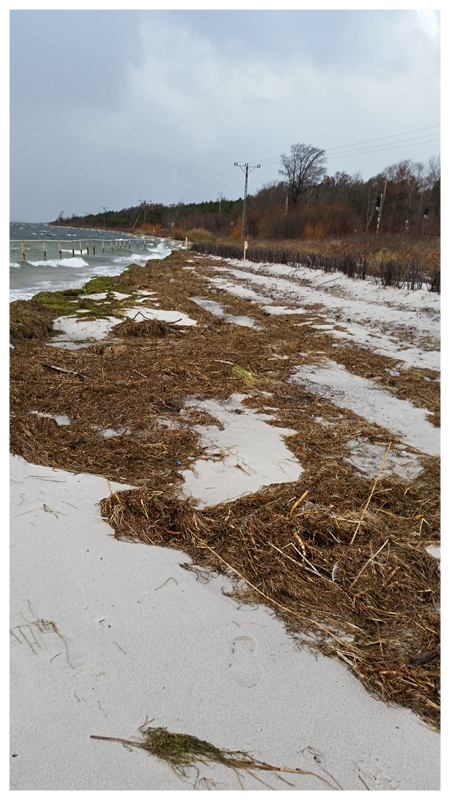
|
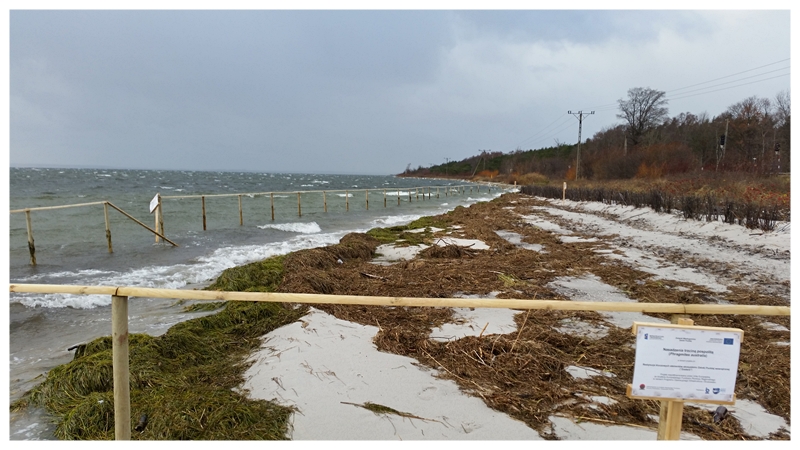
|
|||
"Kuźnica with seagrass washed ashore"
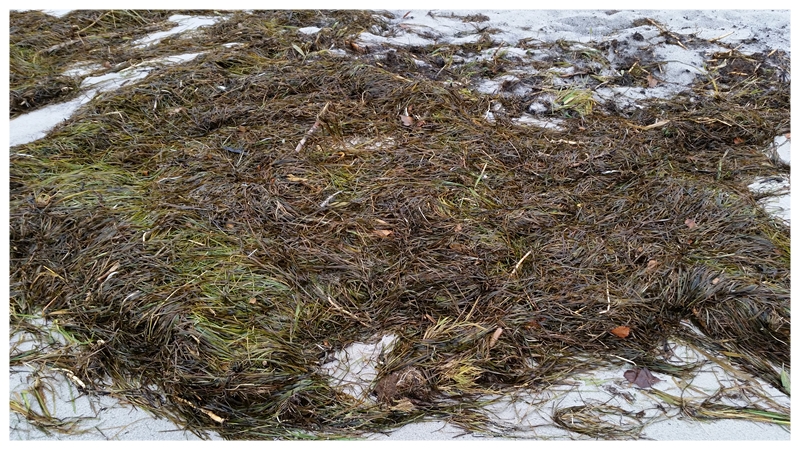
|
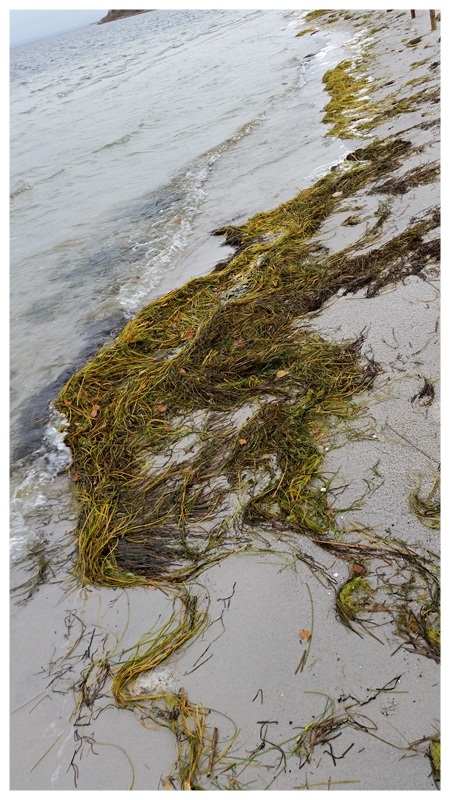
|
30.10.2015
Once again, we plant reeds. This time we chose a place on the polder at Kuźnica. Thanks to this planting, in addition to reducing sediment leaching, reed beds after reaching the maximum density, will constitute a place of shelter and be also a good area for birds to breed in the area of the inner Puck Bay.
We also carried out a quick reconnaissance of reed beds at the Kaper site, where the plants continue to grow properly and the patchiness of their group results from the dynamics of water, not the activity of people.
"Kuźnica"
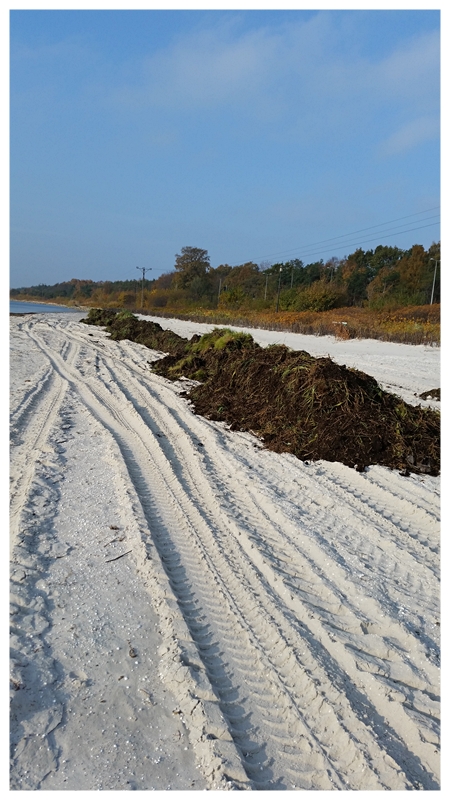
|
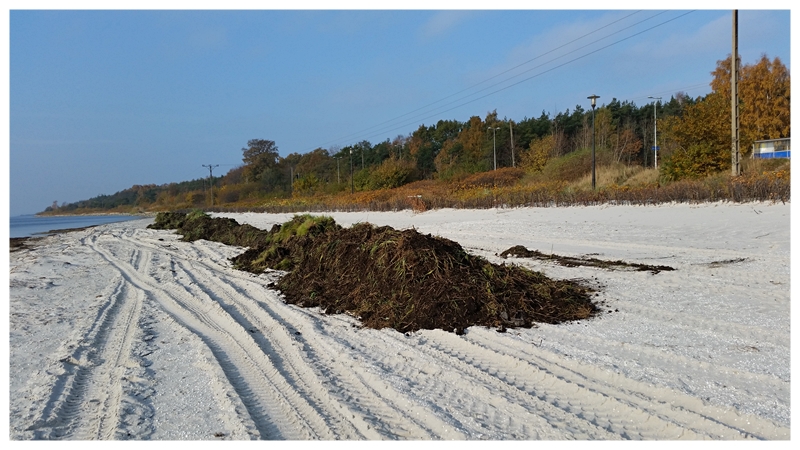
|
"Kuźnica - previous plantings"
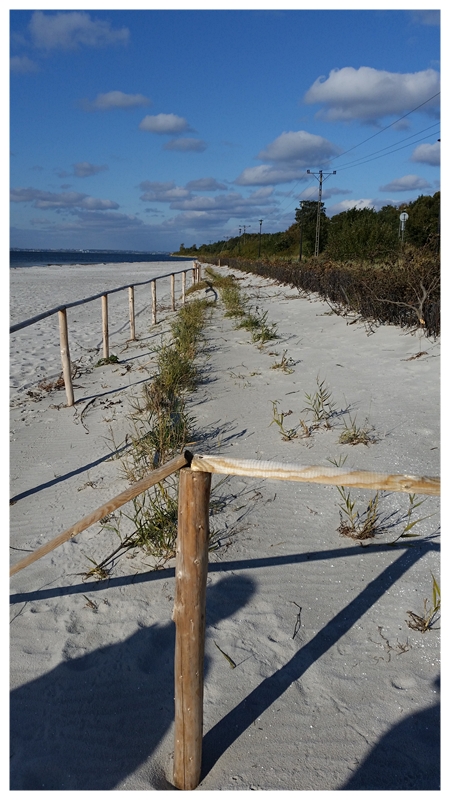
|
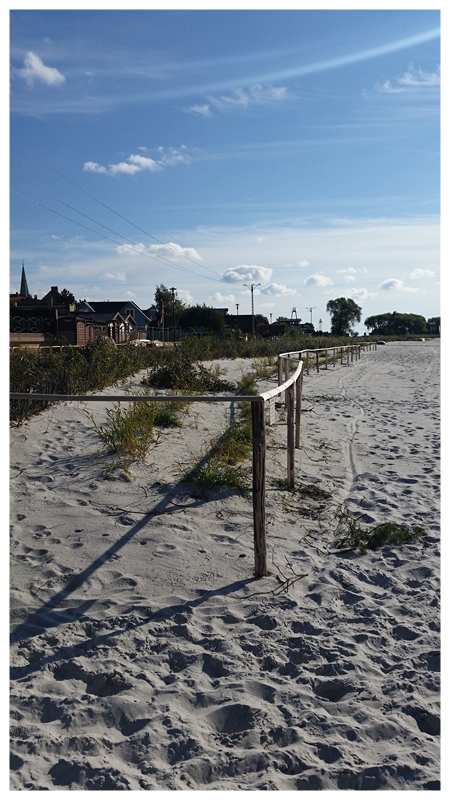
|
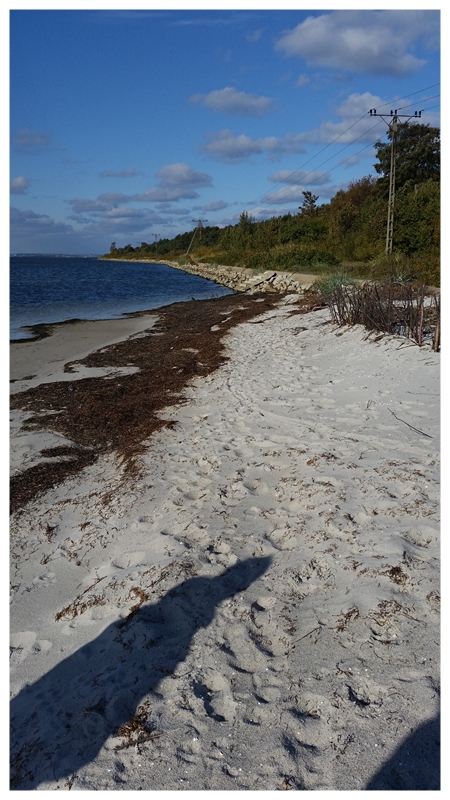
|
12.10.2015
Despite the presence of numerous tourists in the summer season, planted reeds withstood intensive use by sunbathers and remained without major losses.
The only place where the planting of reeds did not sustain themselves was a small strip at the border of the campsites Albatros 5.5 and Chałupy 6. Their disappearance was the result of the strong dynamics of water in these places, not human activity.
"Kaczy Winkiel"
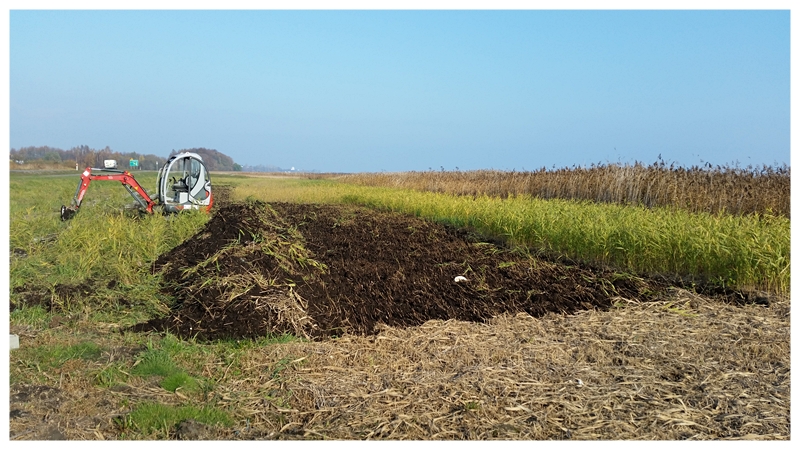
|
"Kaper"
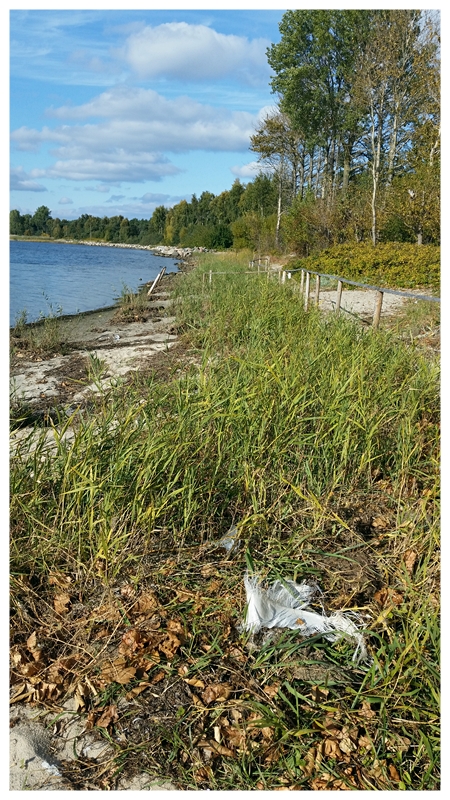
|
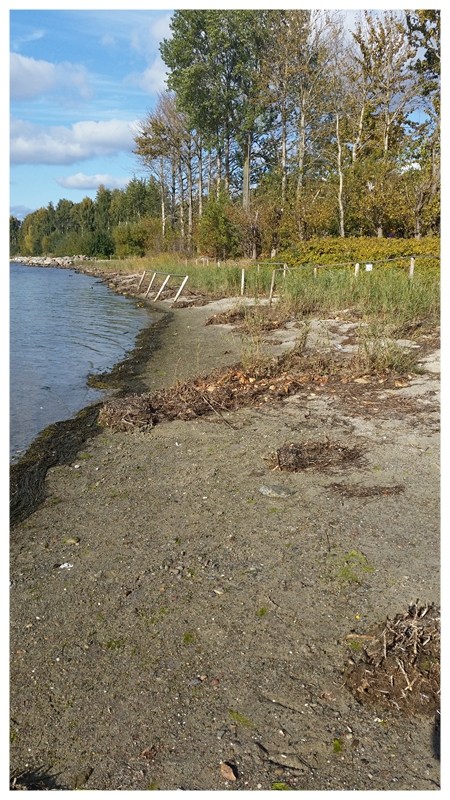
|
"Chałupy 6"
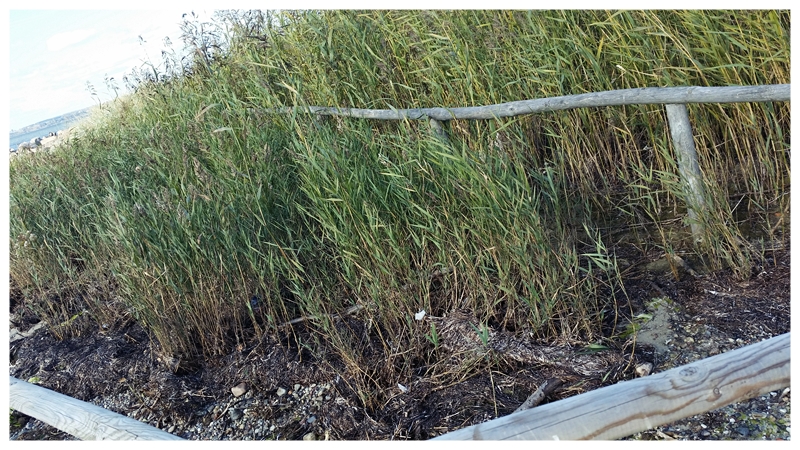
|
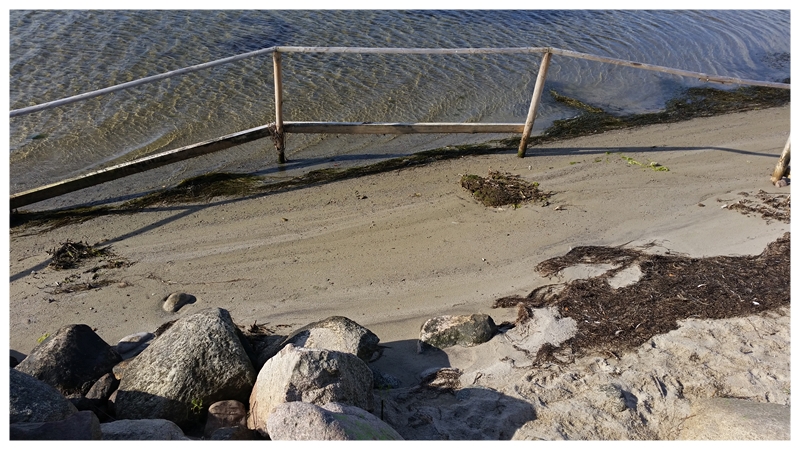
|
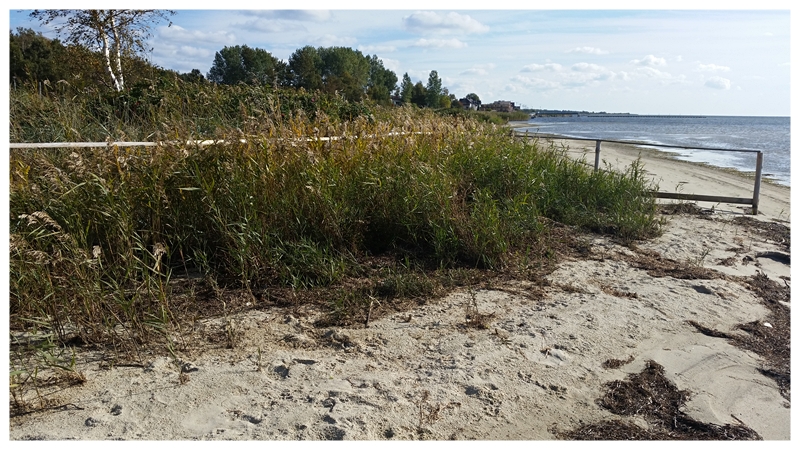
|
"Małe Morze"
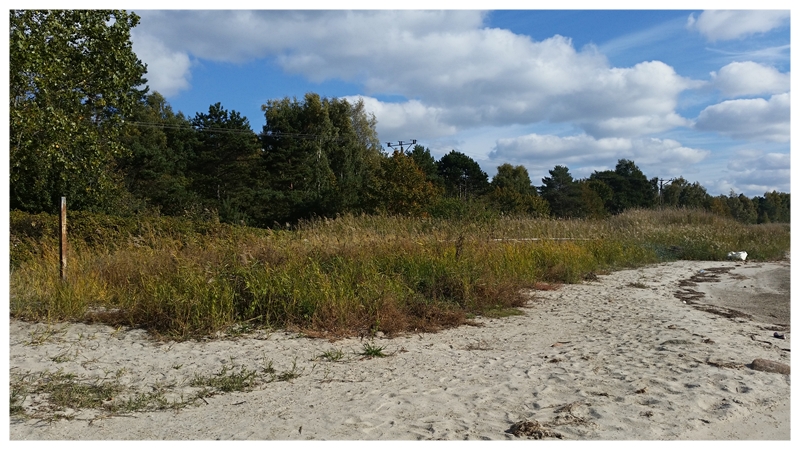
|
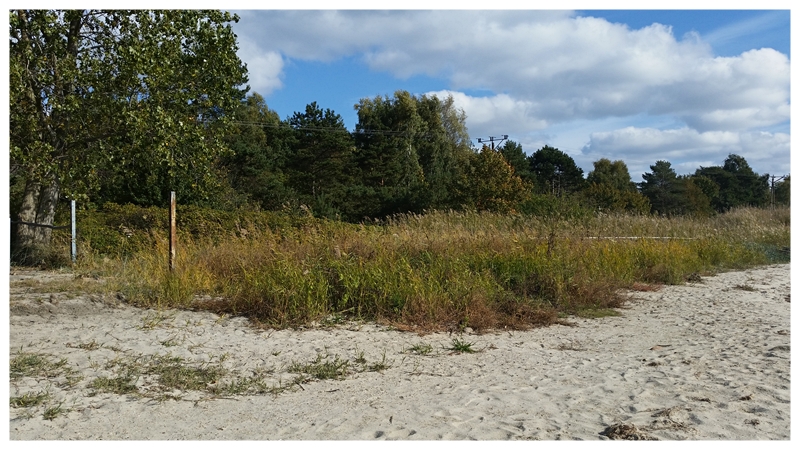
|
18.08.2015
Today's blog entry, we start with news from Sopot. Strong storms, lasting from a few days, brought a large deposits of sea grasses, which are shown on the pictures, were in a very good shape. Such deposits, were observed in the past, when eel grass occupied almost the whole bottom of the Gulf of Puck. It can therefore be assumed, that the sea grass has appeared not only at the bottom of the Inner Gulf, but also in its outer part.

|

|
"Kaper"

|

|

|

|
"Chałupy 6"

|

|

|
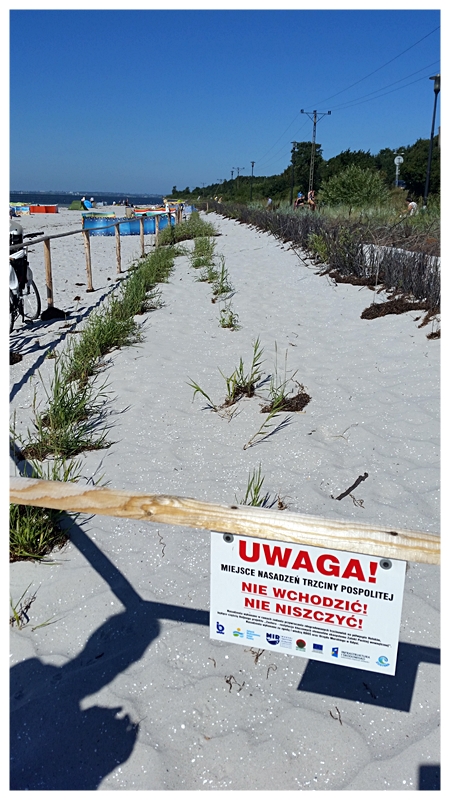
|
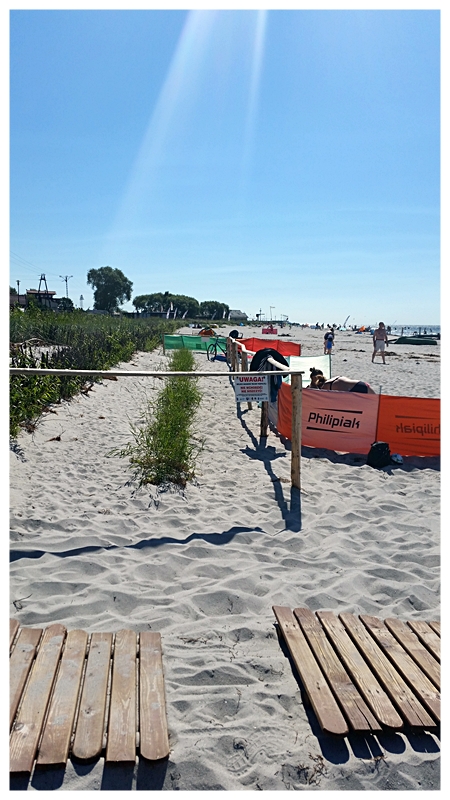
|
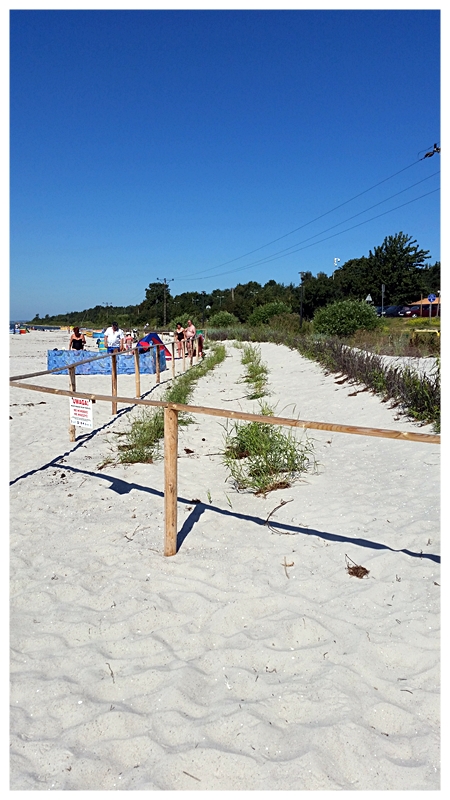
|
21.07.2015
Due to the large concentration of tourists on the Hel Peninsula, we have attempted to document the impact of tourists on the coast from the „water” view. Despite some obvious omissions (keeping the boat in the reeds), in some areas, the one with planted reeds has not been heavily vandalized. The fence (though after the winter, a bit destroyed) fulfilled its role. The documentation has been made in the area camping cottage 6.

|

|

|

|

|
01.07.2015
We've carried out another reconnaissance of planted reeds. Due to the beginning of a vacation season, we plan to look more closely if a human pression (as tourists) affects the state of coastal vegetation, especially on planted reeds.
However we have started from checking the state of the reeds donor area. Reeds were recovered without any visible losses of integrity of the reed bed.
Donor area.
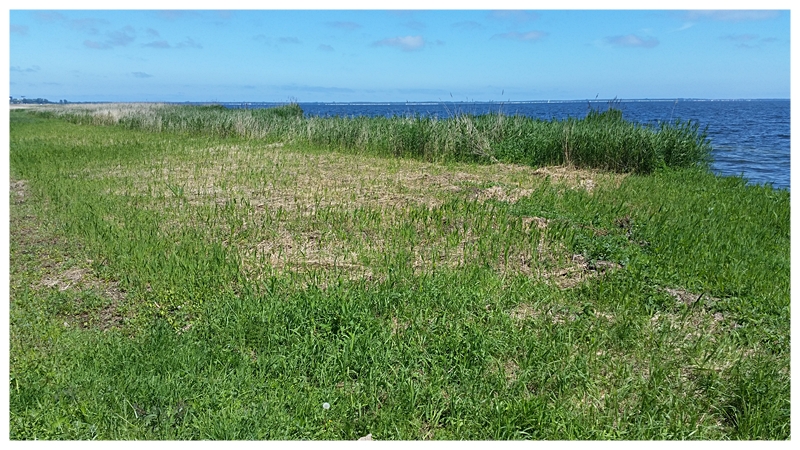
|
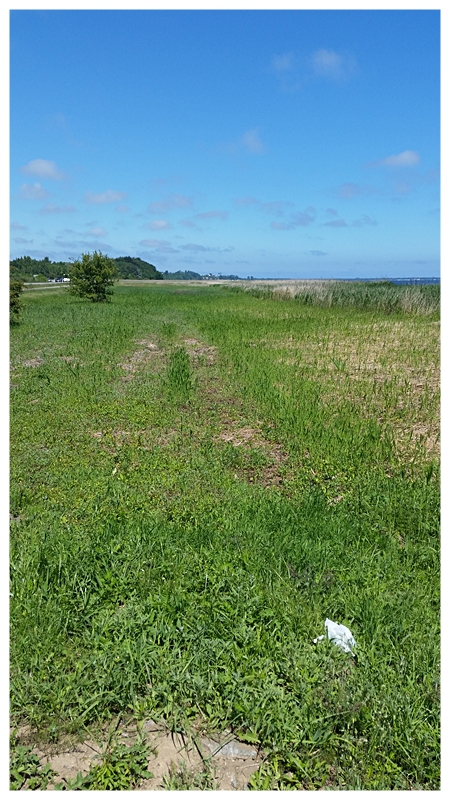
|
"Małe Morze"

|

|

|

|

|

|

|

|
||||
"Chałupy 6"

|

|

|

|

|
"Kuźnica"
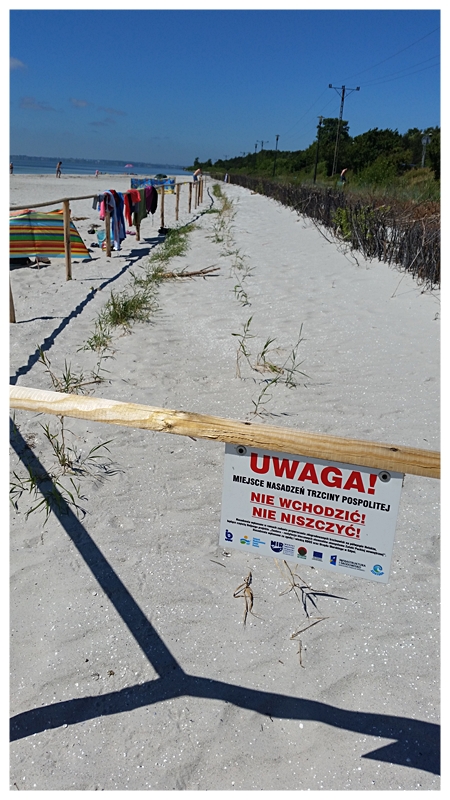
|
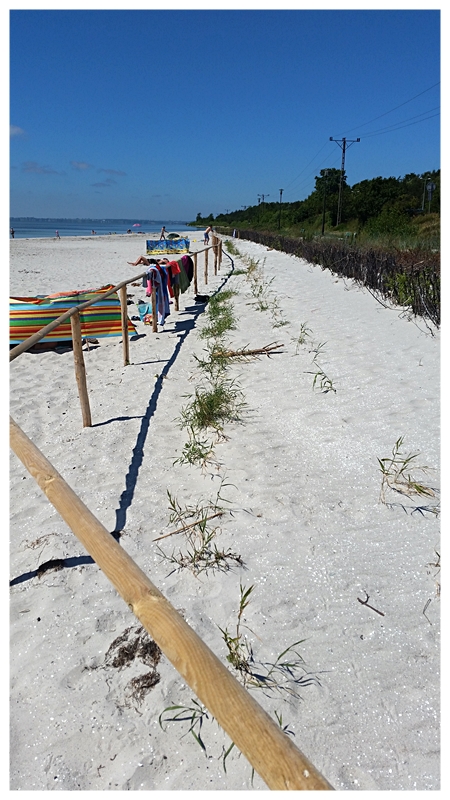
|
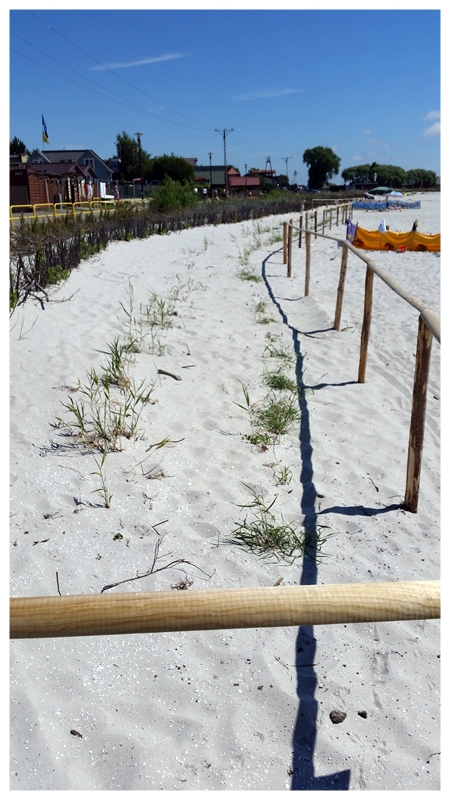
|
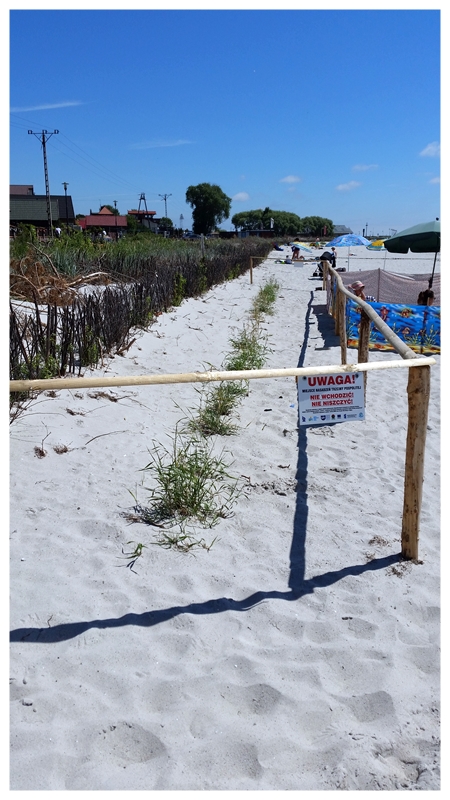
|
23.06.2015
Today, between 11:00-13:00 h delegates of Ecology Department from Institute of Oceanology PAN, in cooperation with members of local fishermen society from Mechelinki together with representatives of the Association of Our Earth has conducted a series of measurements and observations of the Gulf of Puck seabed in the vicinity of brine diffusors, inactive for several months. Two series samples of bottom sediment were collected. Samples were taken along profiles at the depth of 7-9 meters at distances of 5, 25, 50, 100 and 150 meters from the diffuser.
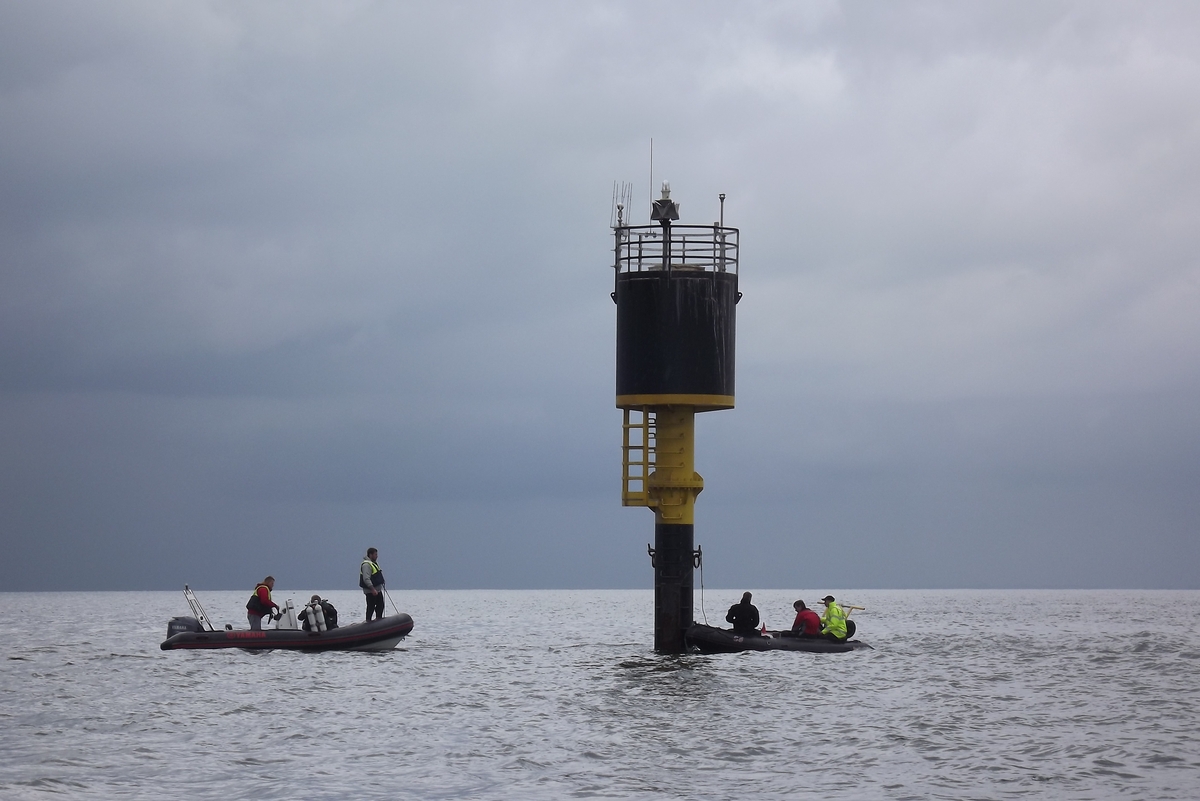
Total of 30 samples were taken with 10 cm2 core for meiofauna analysis as also a series of near bottom water samples (5-10 cm above the sea bottom) of the same locations. Immediately after taking the samples out from water by a diver, the measurements of salinity and oxygen concentrations were done, by means of portable Multimeter HQ40D device equipped with a probe LDO for dissolved oxygen, conductivity sensor and automatic temperature compensator.
The water temperature near bottom was 15°C while salinity varied in range of 7.17 to 7.43 PSU. Oxygen concentration, expressed as a percentage of saturation, almost evenly has reached 98-100% in all samples.
Inspection done with ROV (Remote Operating Vehicle), at a depth of 8-9 m near the diffuser, and at a depth of 4-5 m in the middle of distance between port of Mechelinki and diffusors, showed not dramatic changes in ecological situation f with mussels presence (mussel, cockle) in the deeper area and vascular plants (Potamogeton, Zostera, Pilayella, Ceramium) in the shallow. Single speciments of young flounder (several cm in size), round goby and pipefish were observed in the whole area.
Research team:
Dr. Lech Kotwicki - measurements of salinity and oxygen;
Agnieszka Tatrarek, Dr. Józef Wiktor- ROV and underwater observation;
Dr. Piotr Bałazy and prof. Piotr Kuklinski - a collection of material on the bottom;
prof. Jan Marcin Węsławski – preparation and conducting of the event;
17.06.2015
We have conducted another reconnaissance of planted reeds. Plants at all stations have successfully anchored themselves and grown already to 40 cm in places away from the water line - where the soil warm up the most. The reeds in donor area also released shoots. The exception is the new place "Kuźnica", where shots are still quite small and desiccated, due to relatively large distance from the ground waters. We hope, however, that the summer rains will be enough to irrigate plantings.
New location
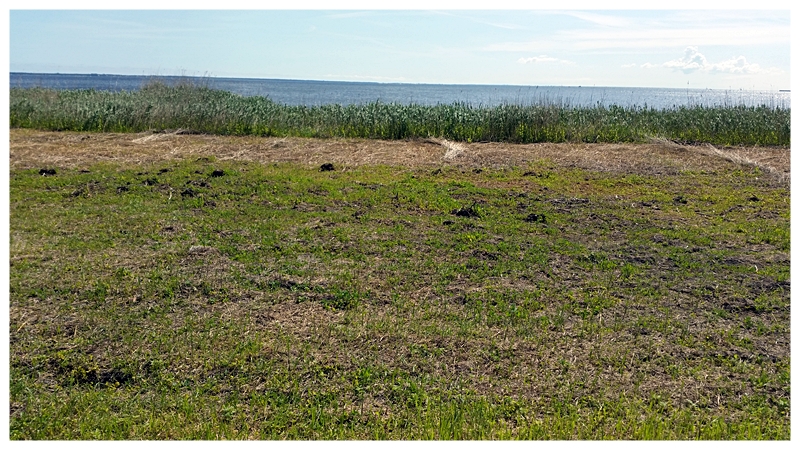
|
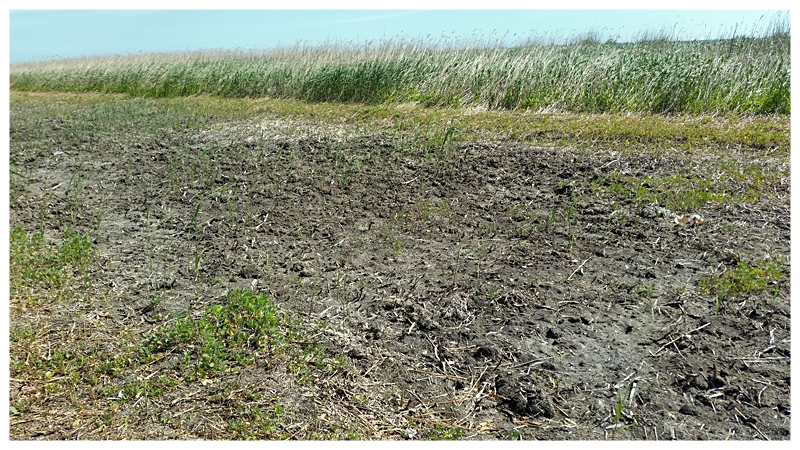
|
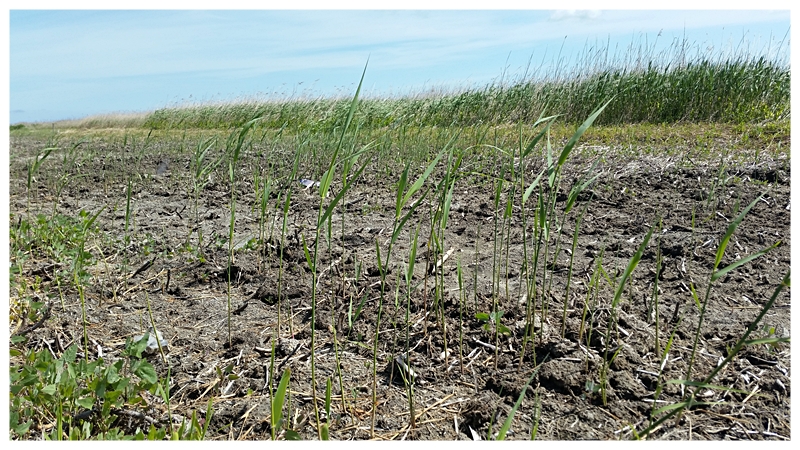
|
„Małe Morze”
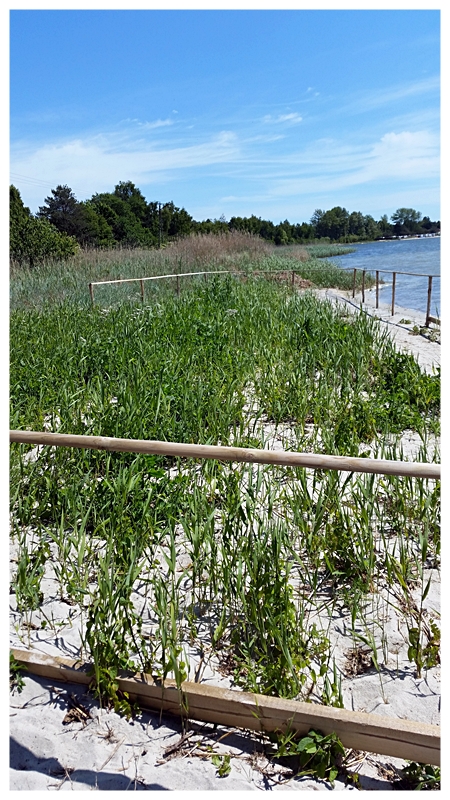
|
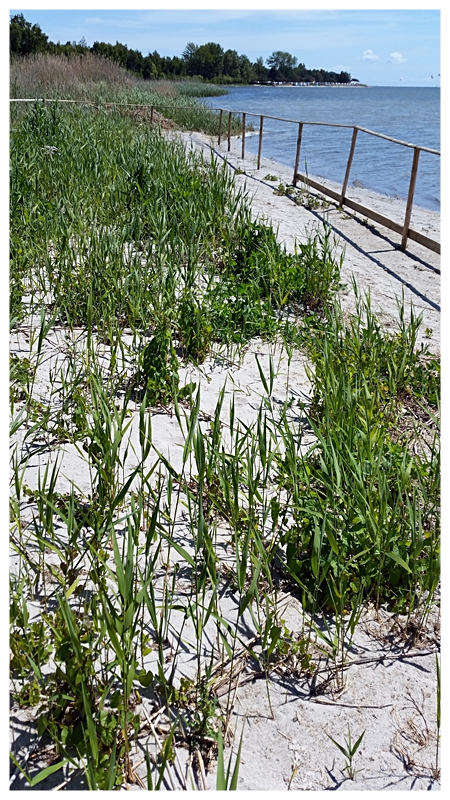
|
„Kaper”
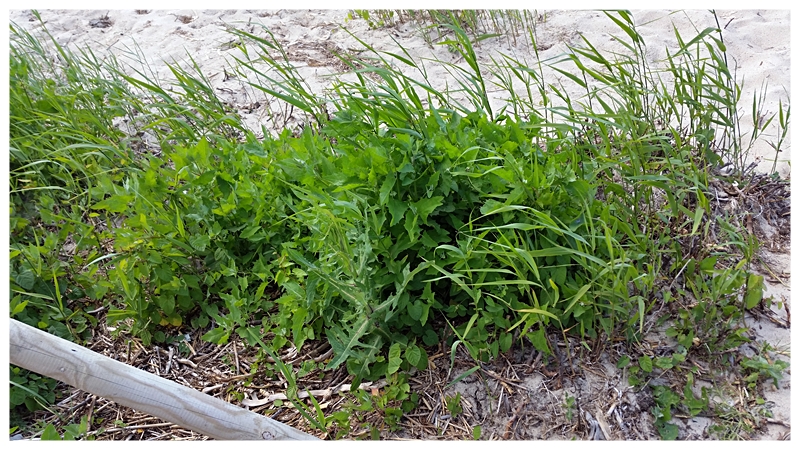
|
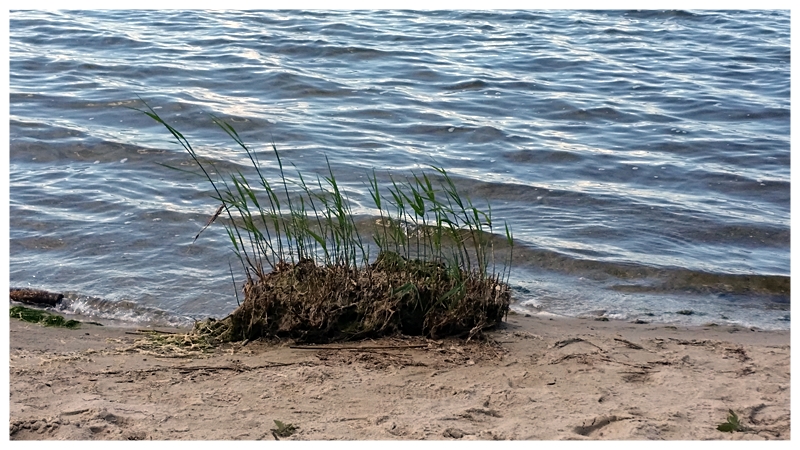
|
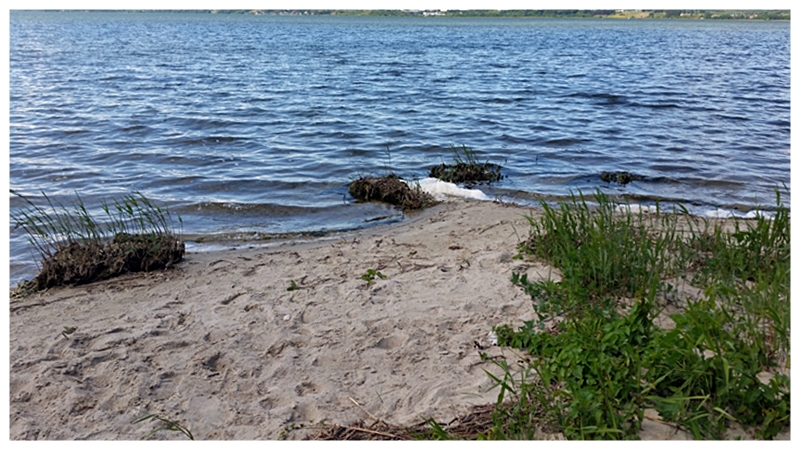
|
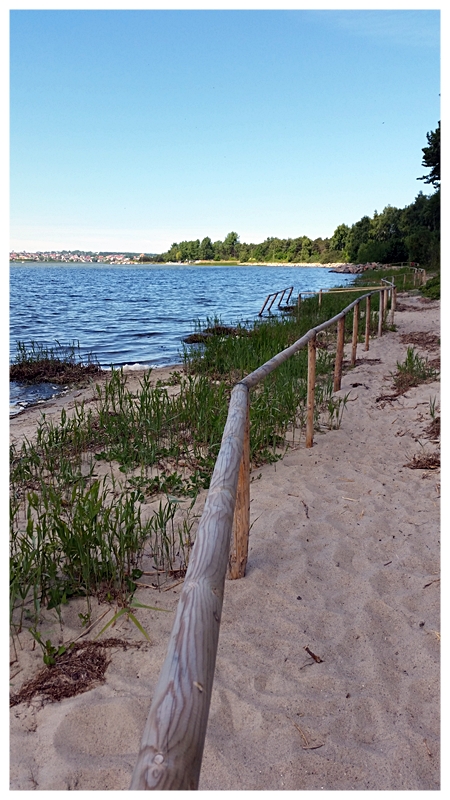
|
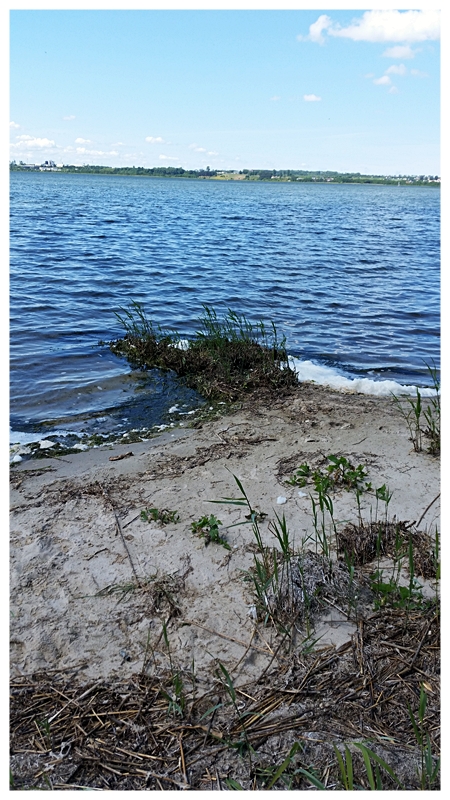
|
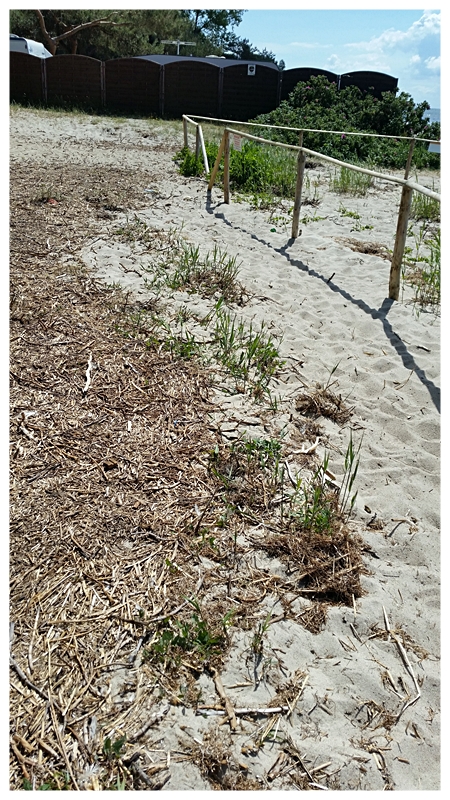
|
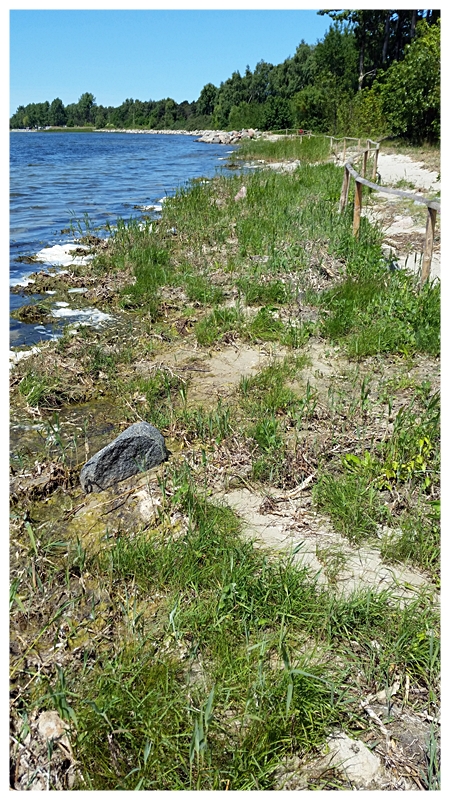
|
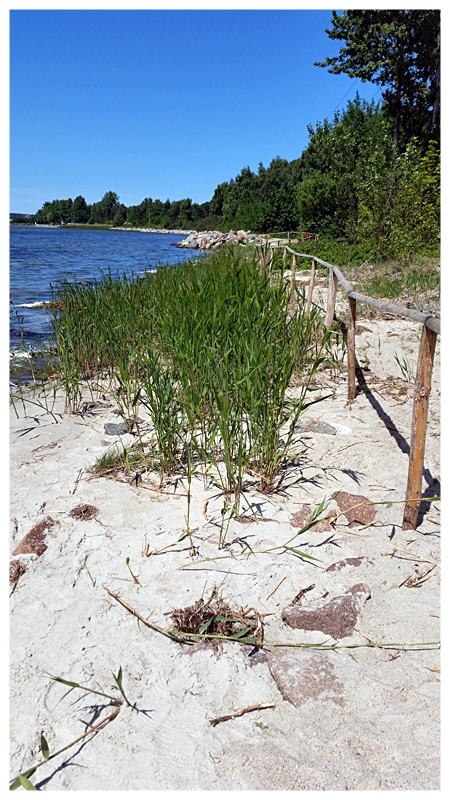
|
„Chałupy VI”
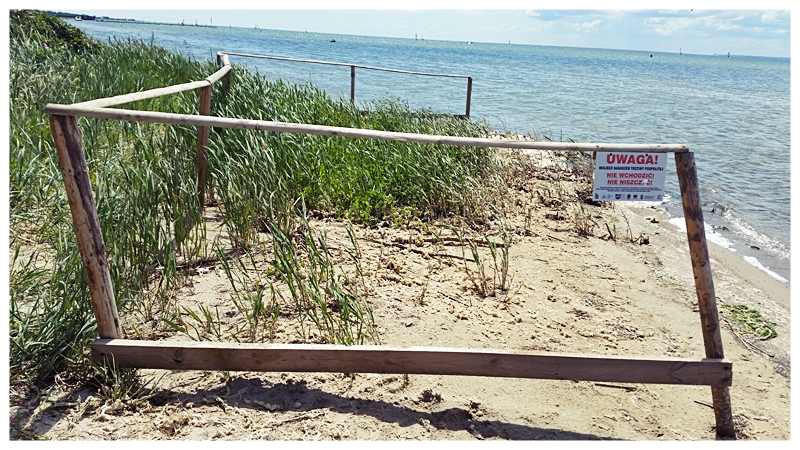
|
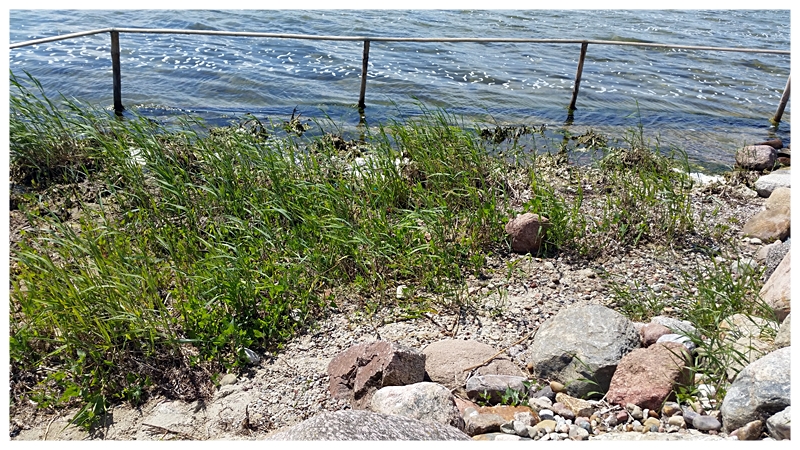
|
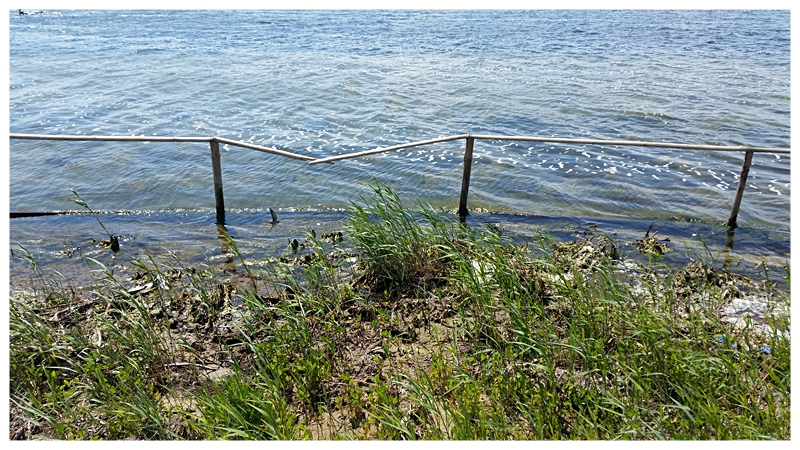
|
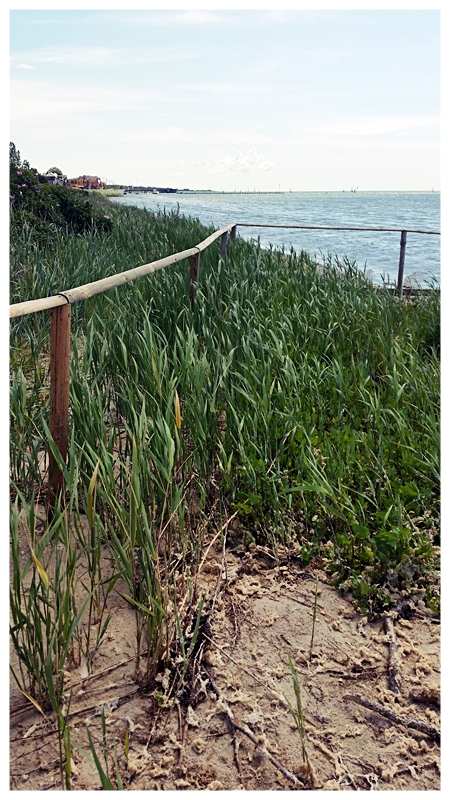
|
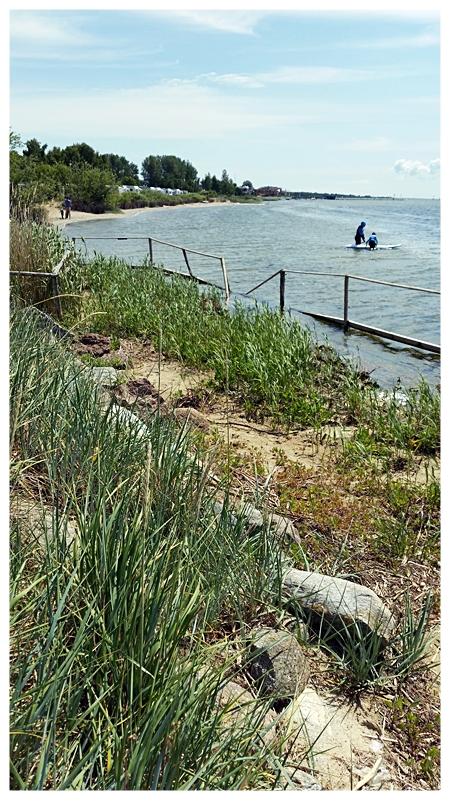
|
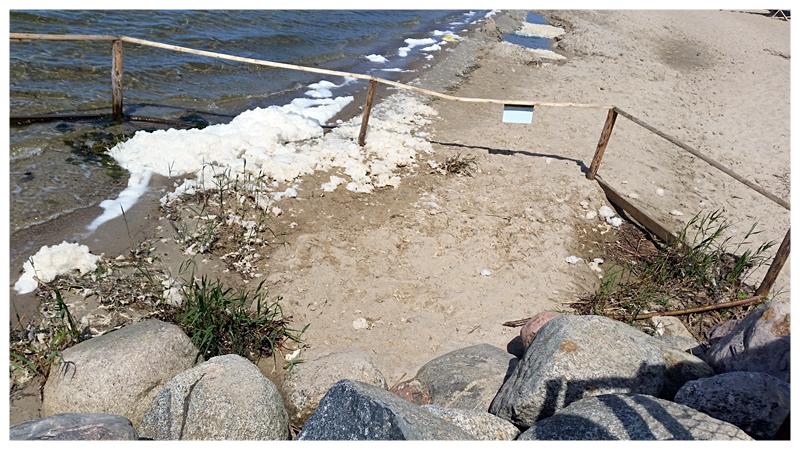
|
„Kuźnica”
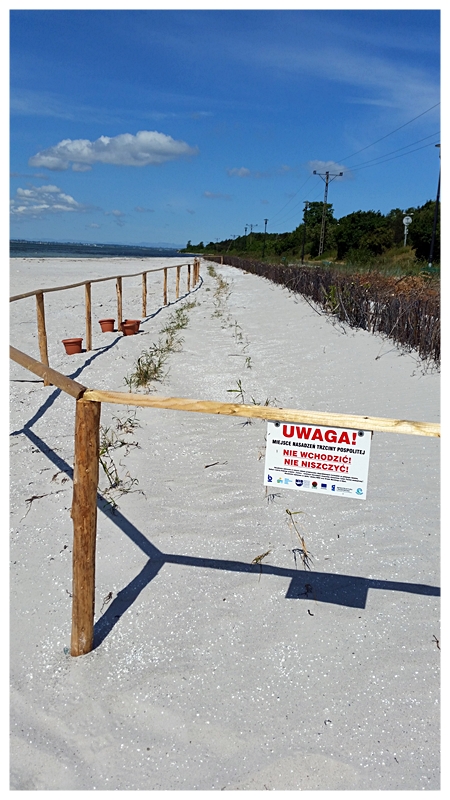
|
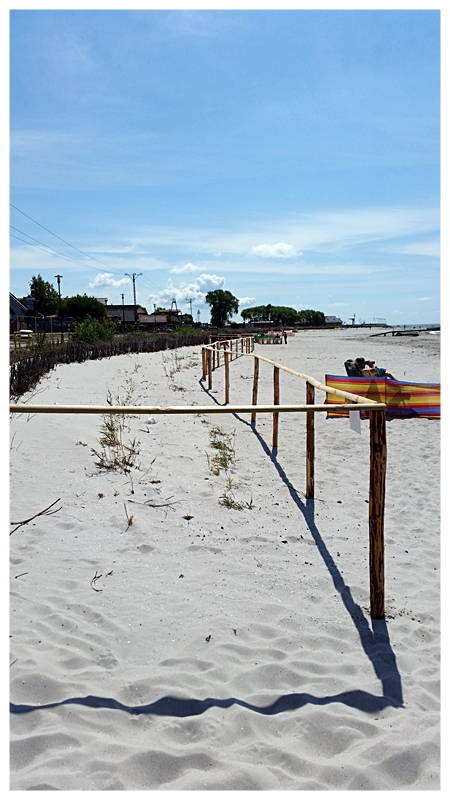
|
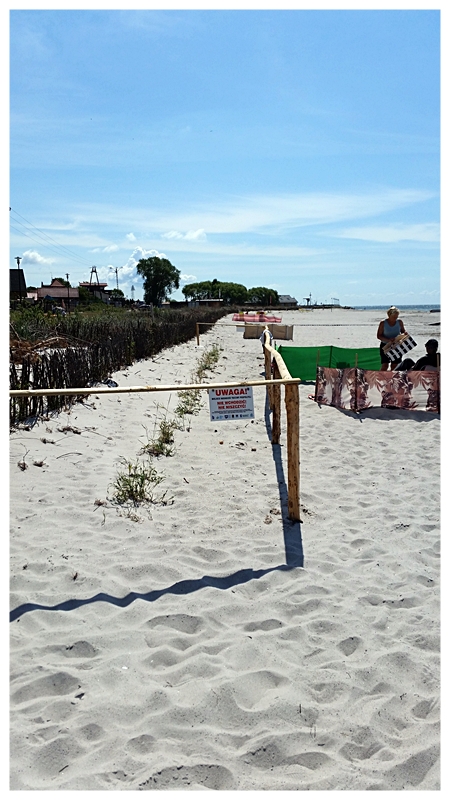
|
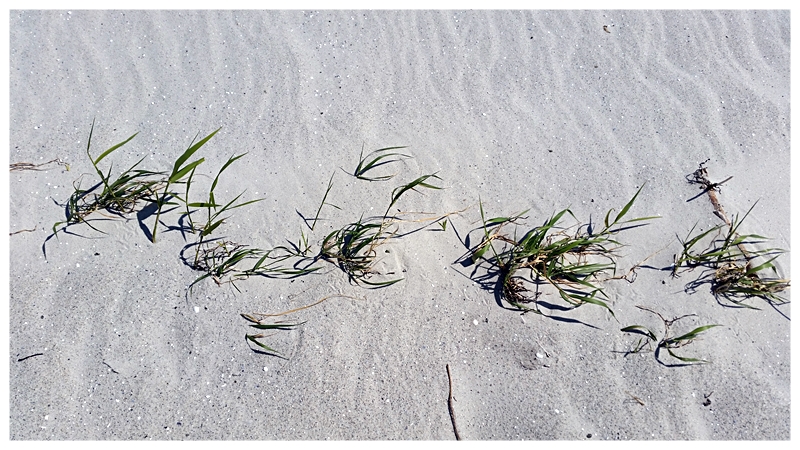
|
06 May 2015
Due to the extension of the duration of the project, we have conducted another planting reeds. This time it was done in new location on the outskirts of the city Kuźnica.
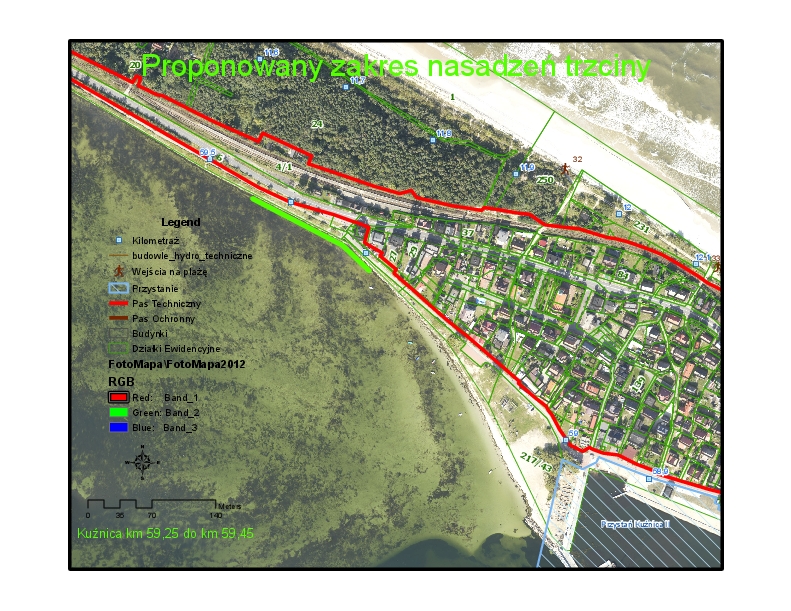
|
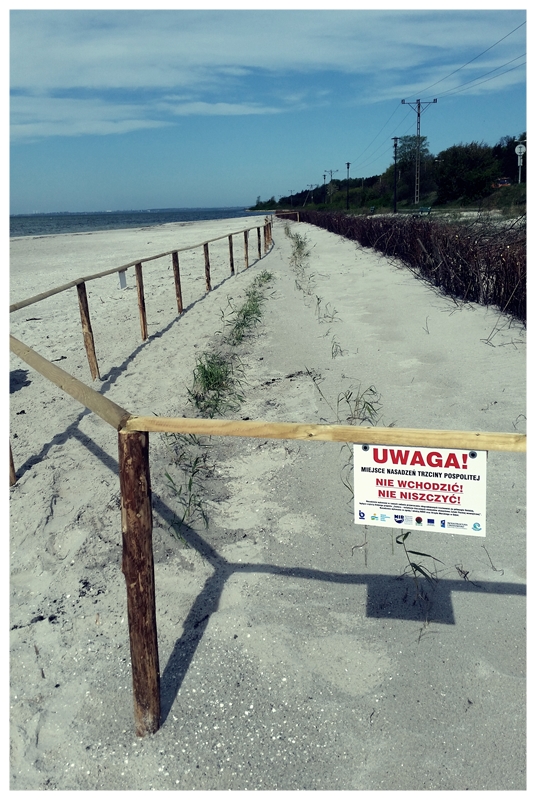
|
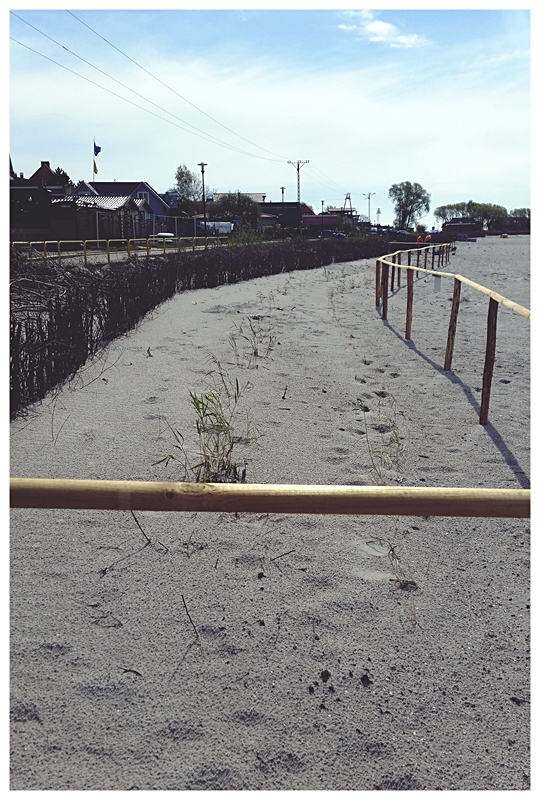
|
13th of April 2015
We done another reconnaissance of planted reeds in this year. Plants in most stations has begun to sprout.
„Małe Morze”
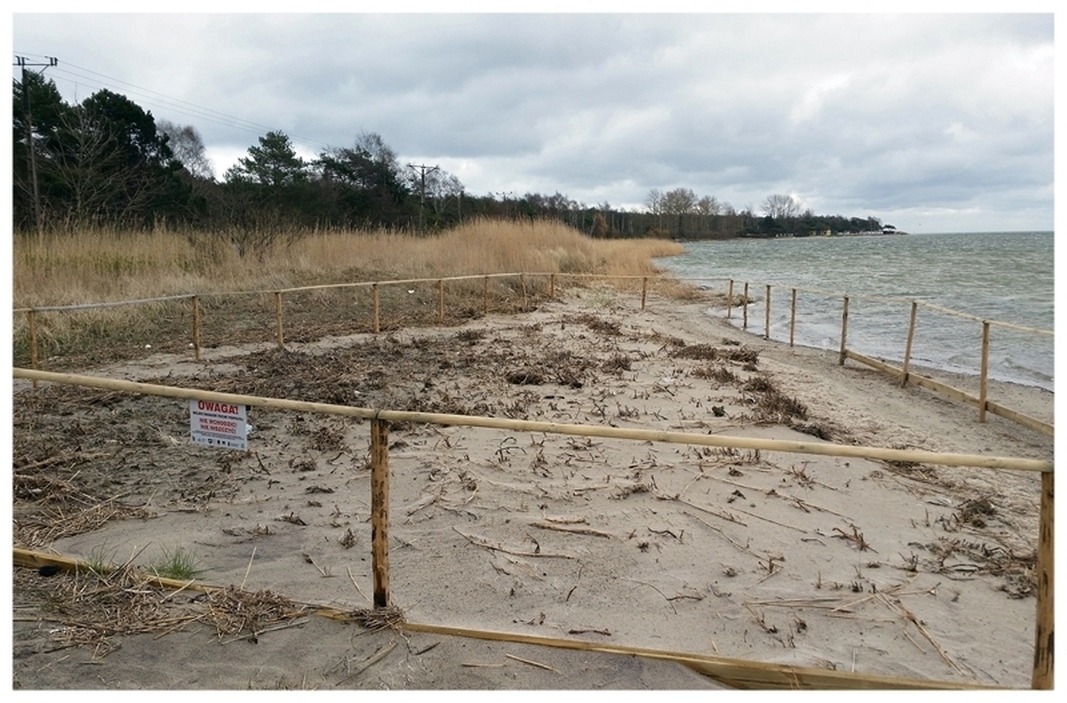
|
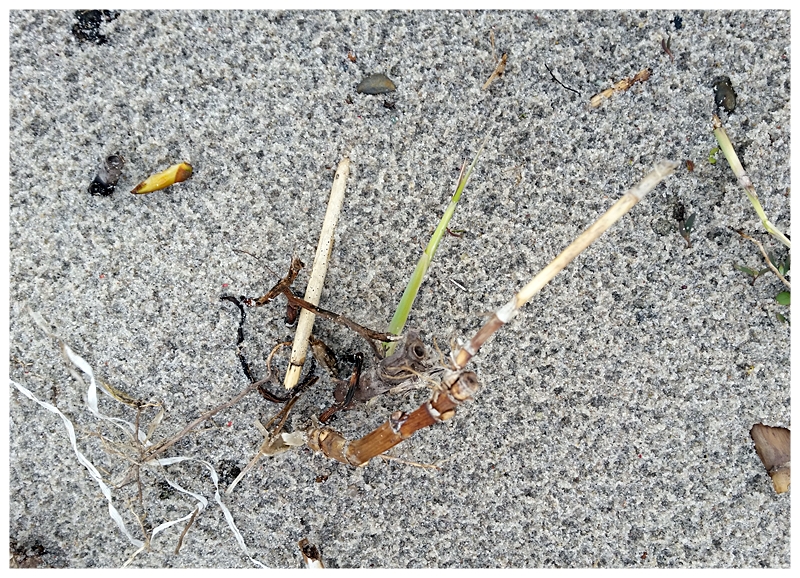
|
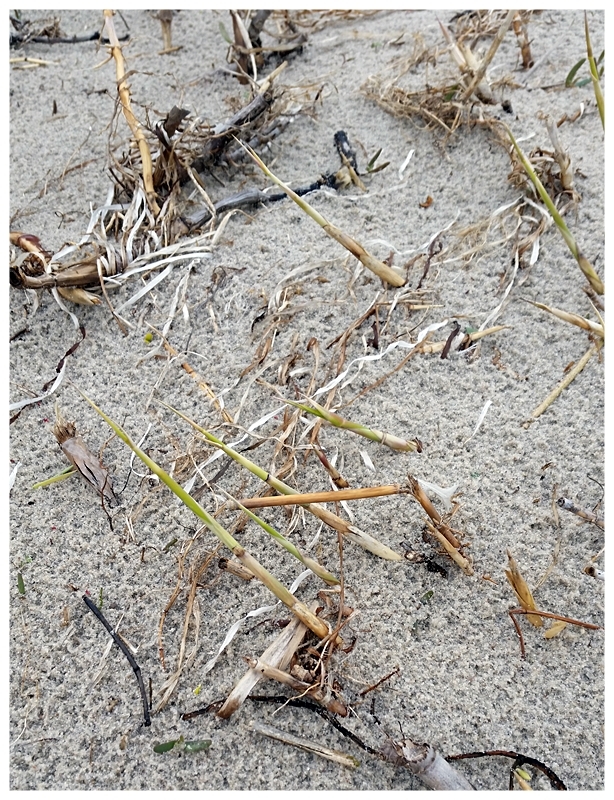
|
„Kaper”
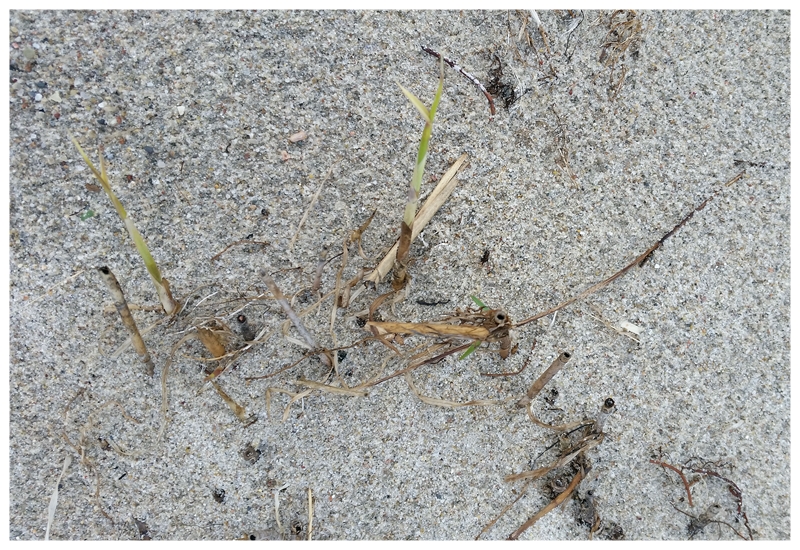
|
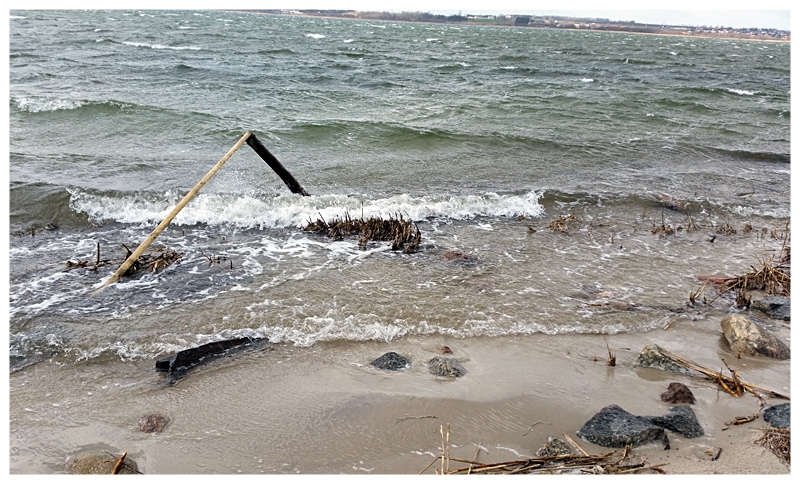
|
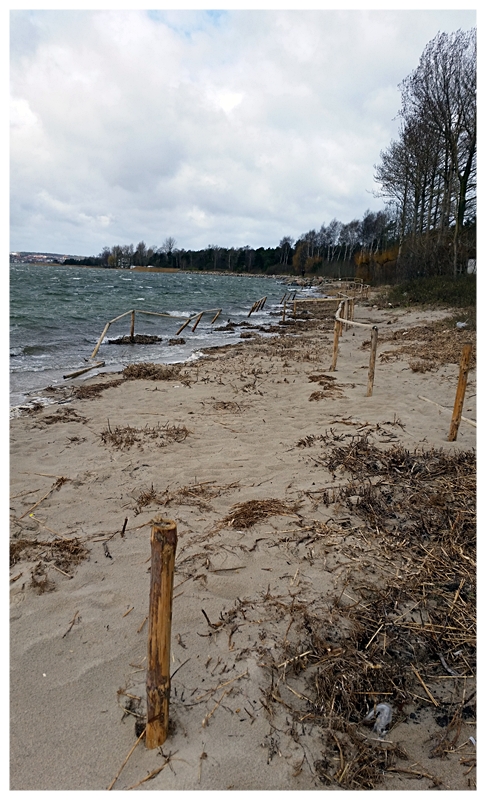
|
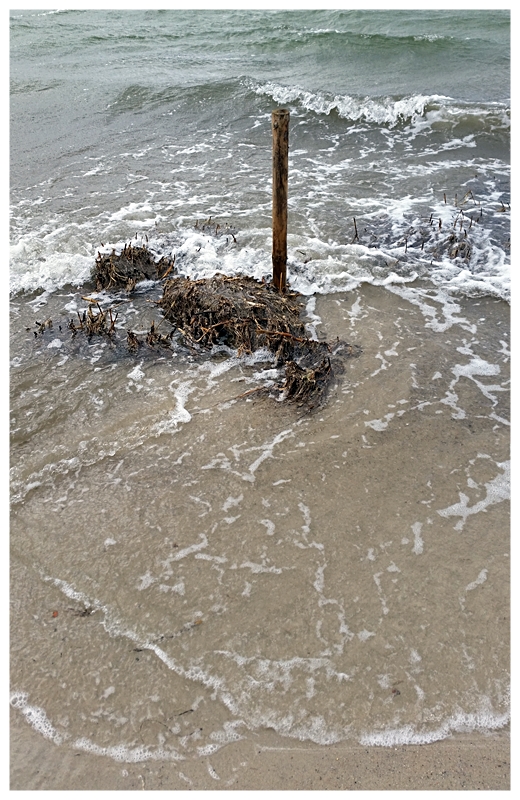
|
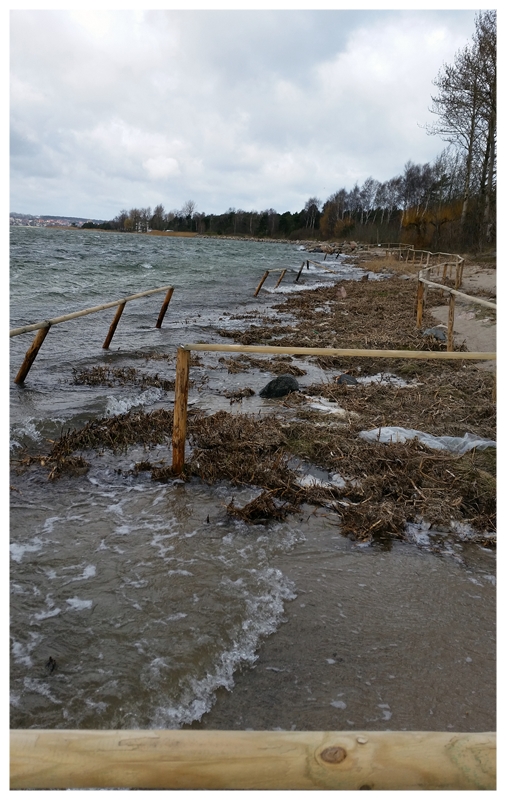
|
„Chałupy VI”
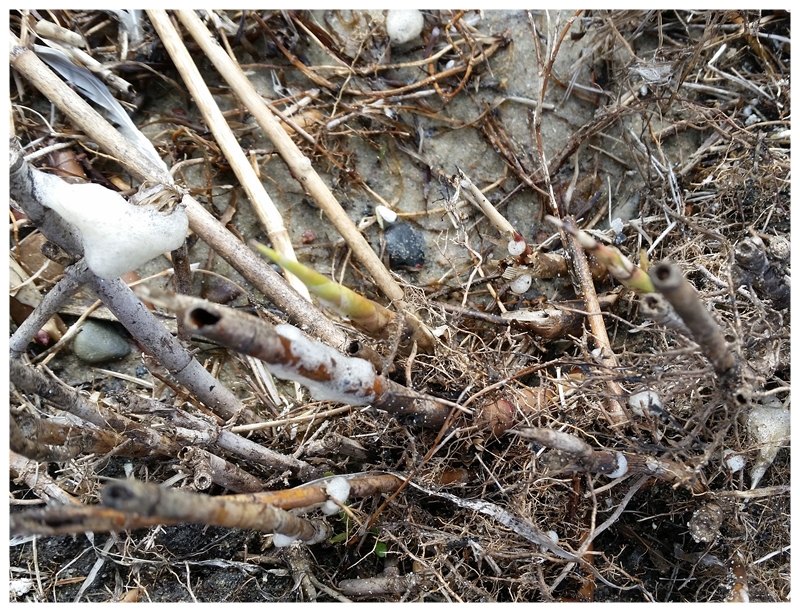
|
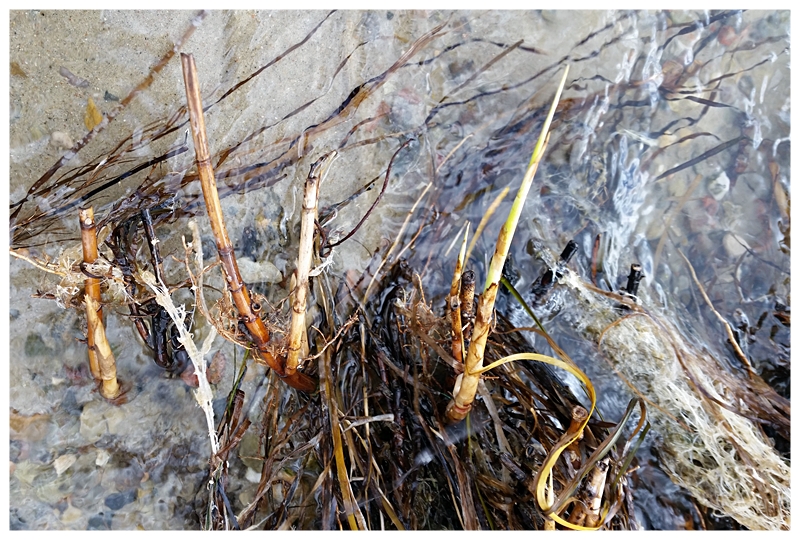
|
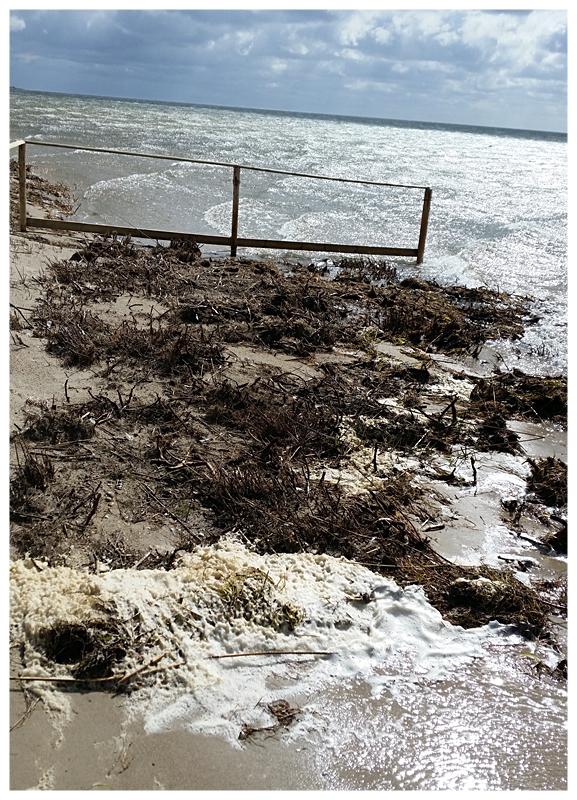
|
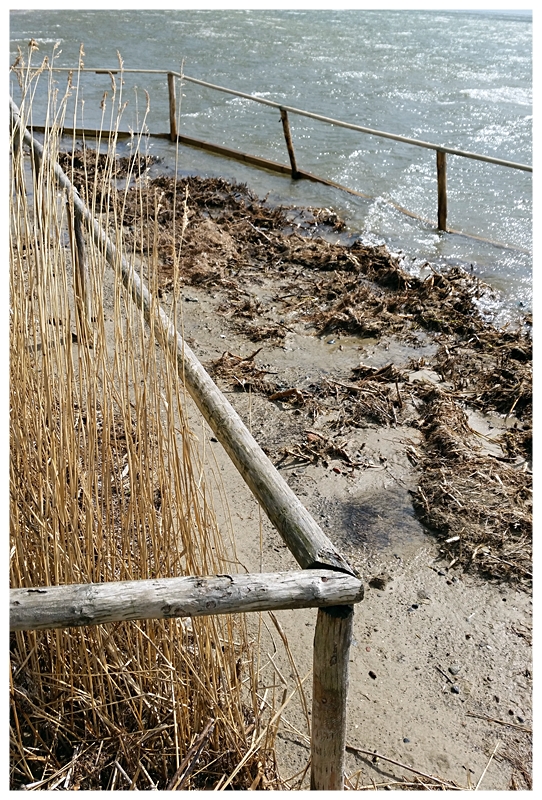
|
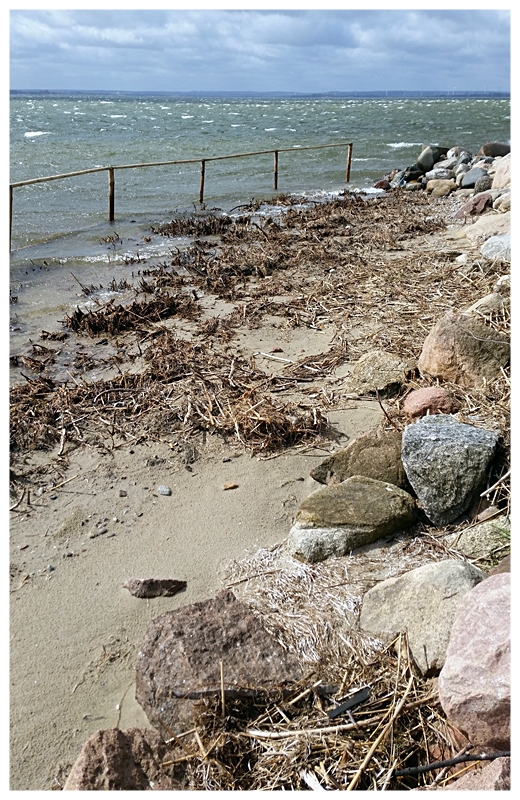
|
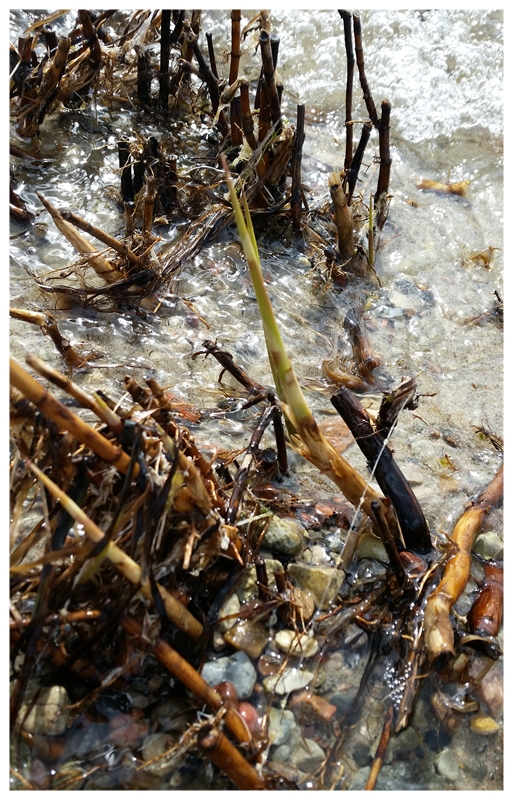
|
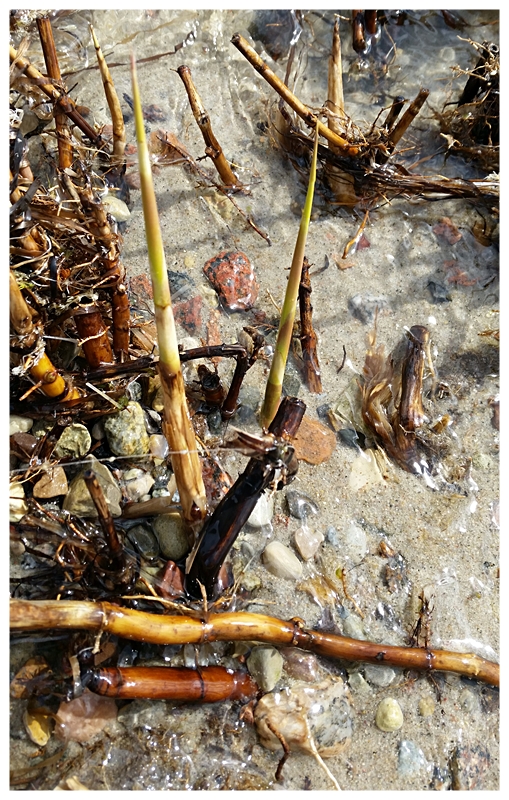
|
13th of March 2015
We have done another visit to the areas with planted reeds. In general, the plants remained on planted areas, partly buried with sand due to wave action. Only the ones at “Kapper” site were partly washed away, but as you can see at the pictures, some of them remained well anchored, which gives hope that in these places a new reed rushes will develop.
Due to unfavorable conditions on the day of the visit, we skipped one station - “Chałupy VI”.
„Małe Morze”
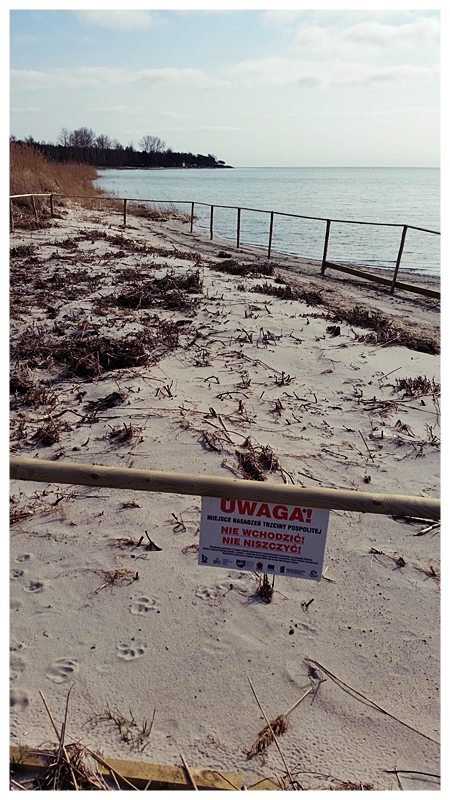
|
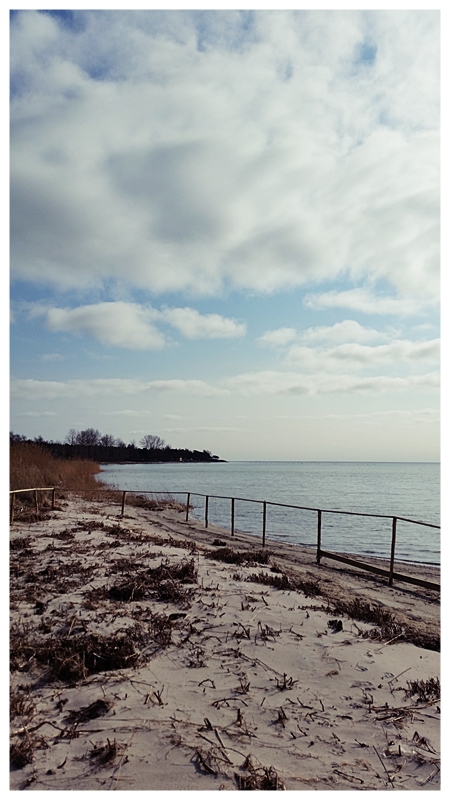
|

|

|
„Kaper”
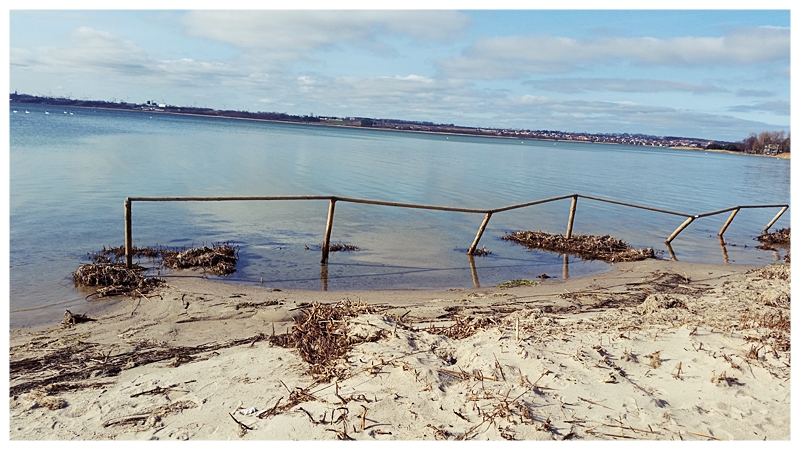
|
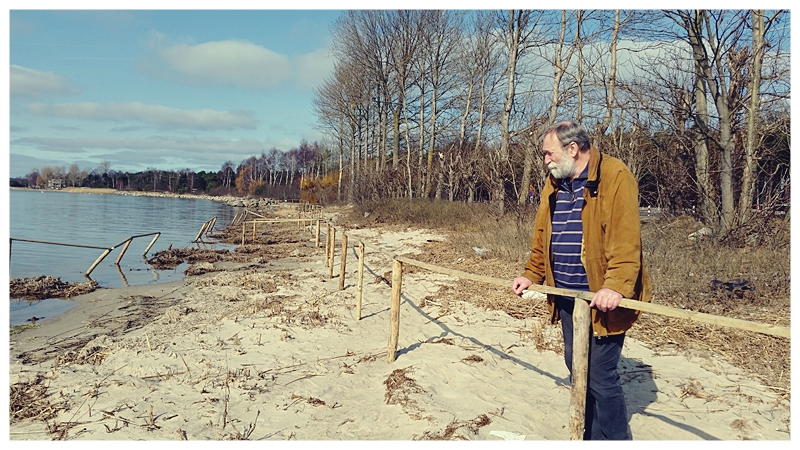
|
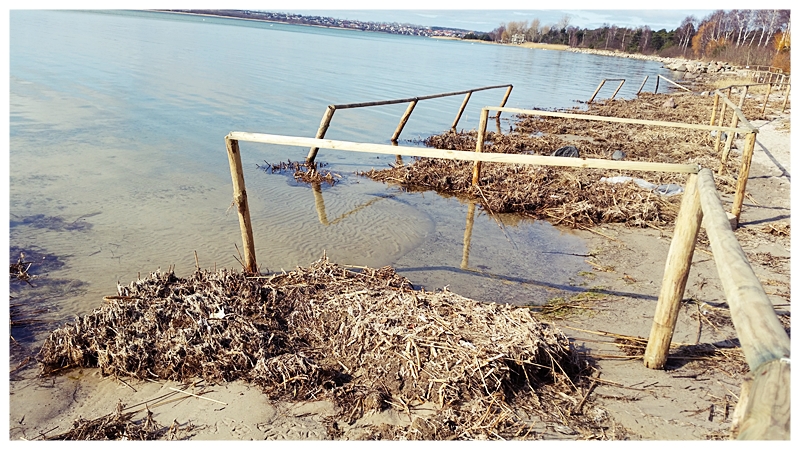
|
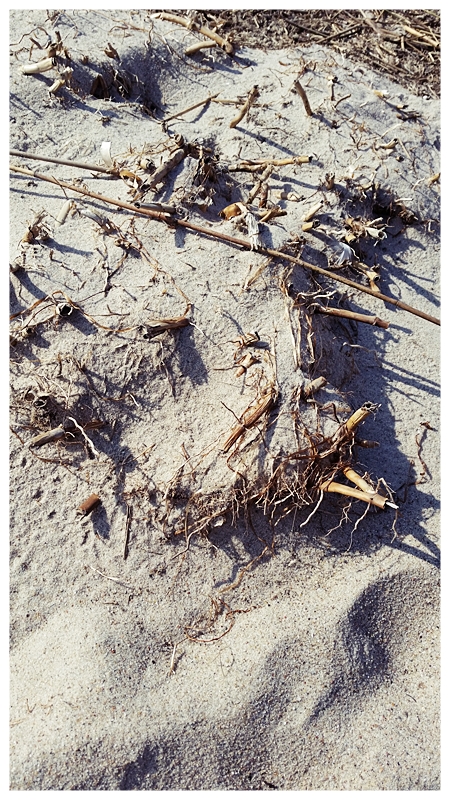
|
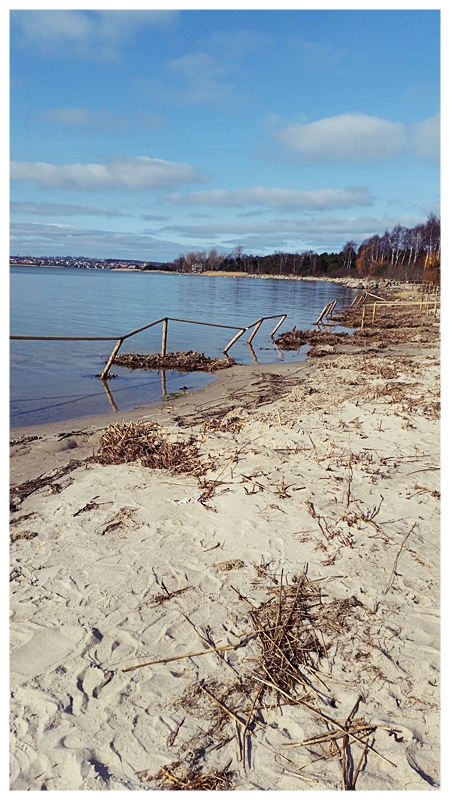
|
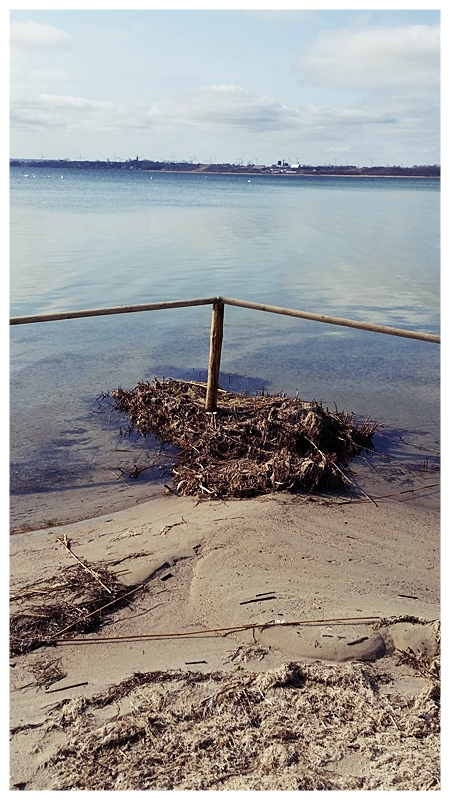
|
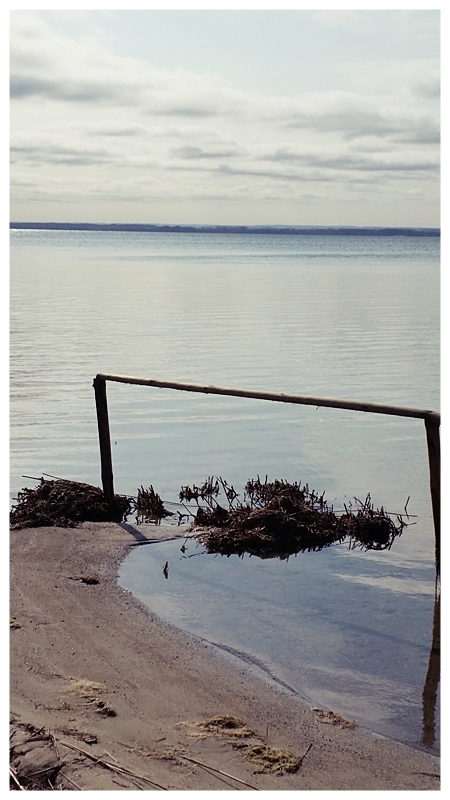
|
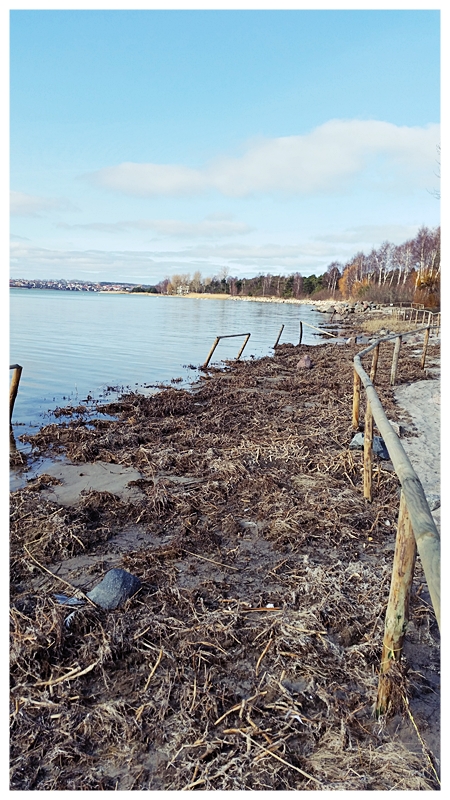
|
25th of February 2015
After a first snow and ice thaw, we checked planted reeds. The condition of the plants was good, however in few stations reeds were washed away partly (in „Kapper” area) or totally (one station in „Chałupy VI”) during winter storms.
„Małe Morze”
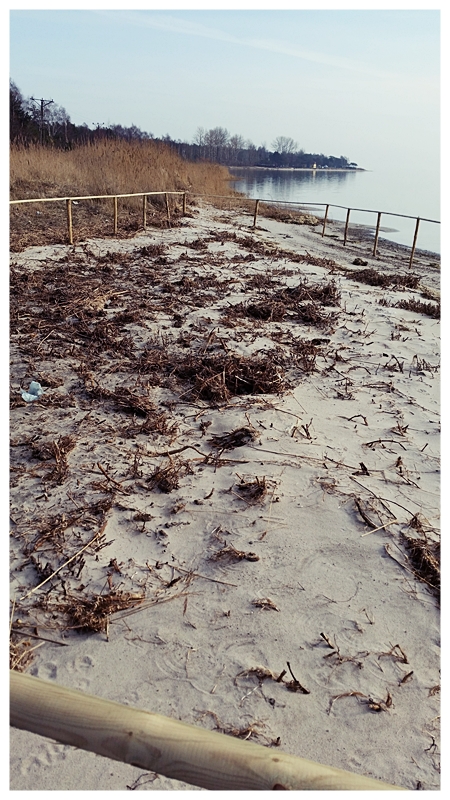
|
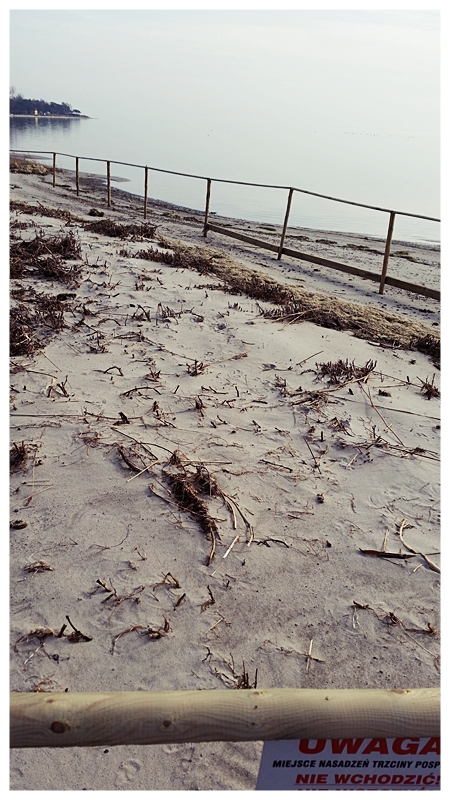
|
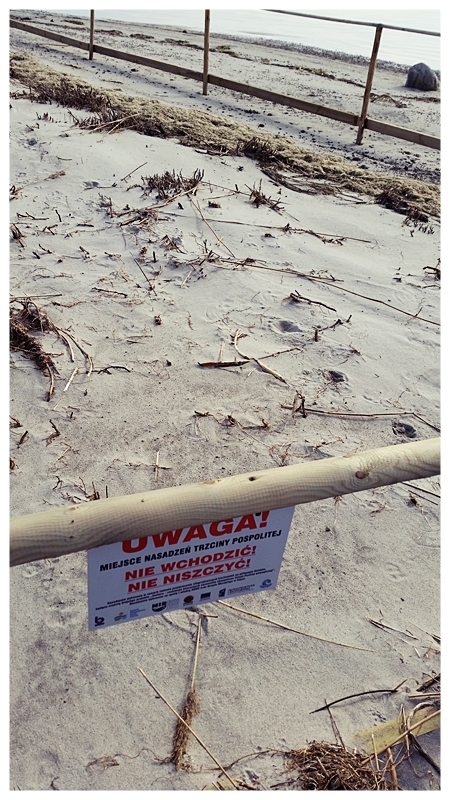
|
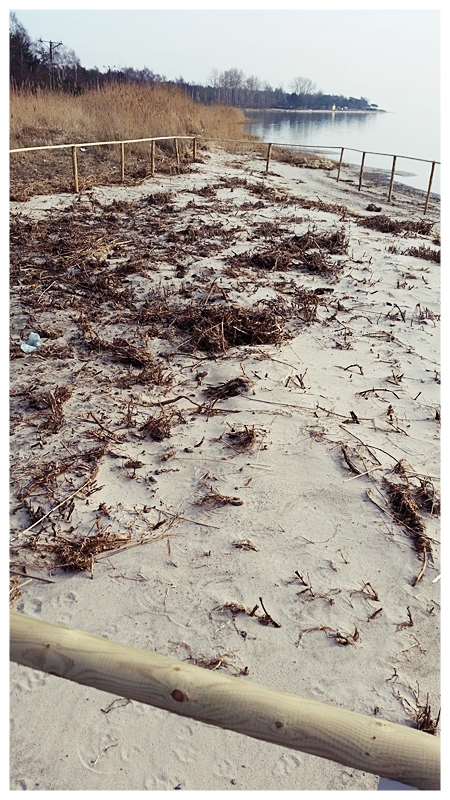
|
„Kaper”
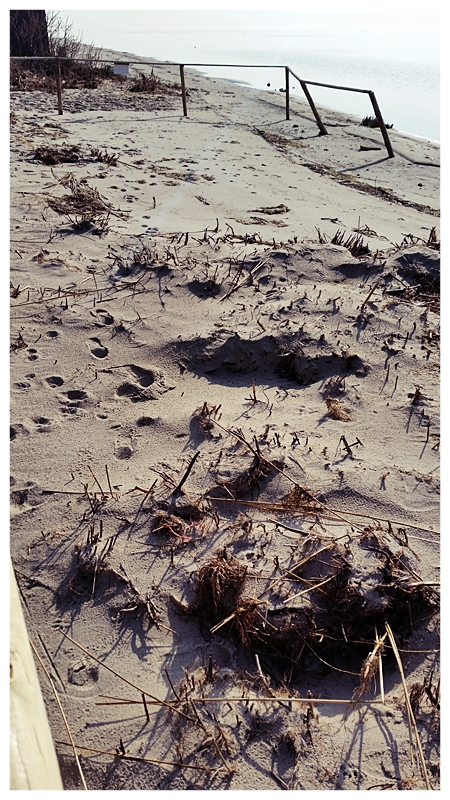
|
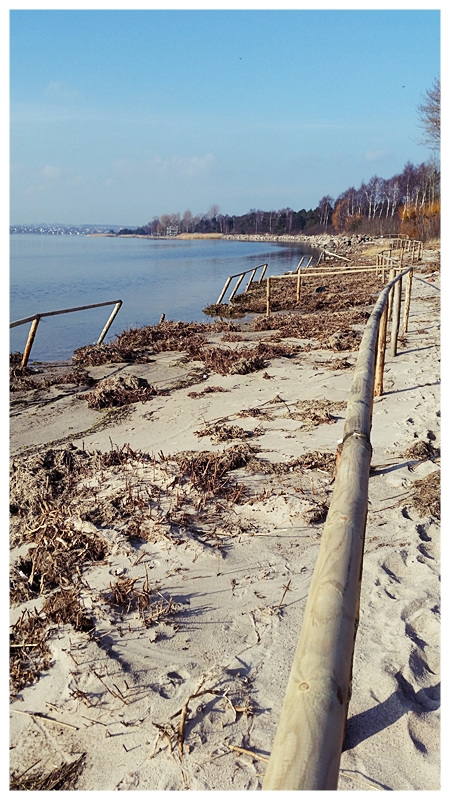
|
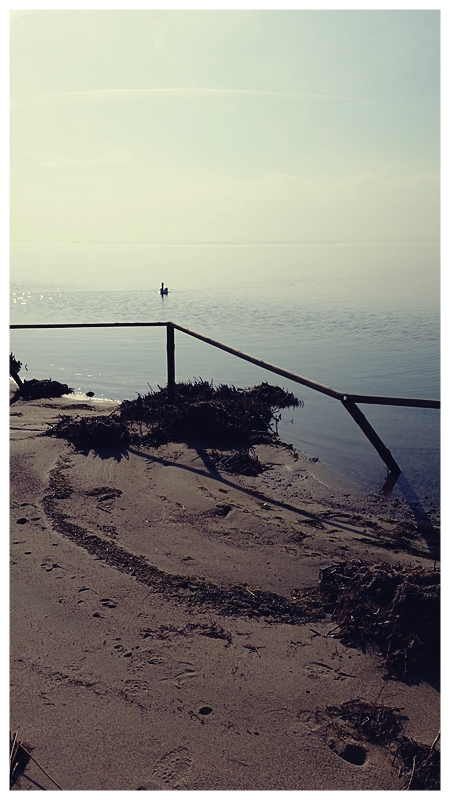
|
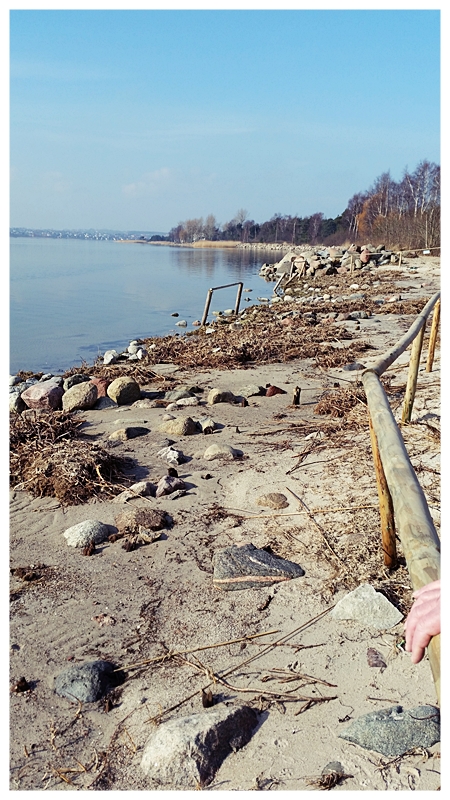
|
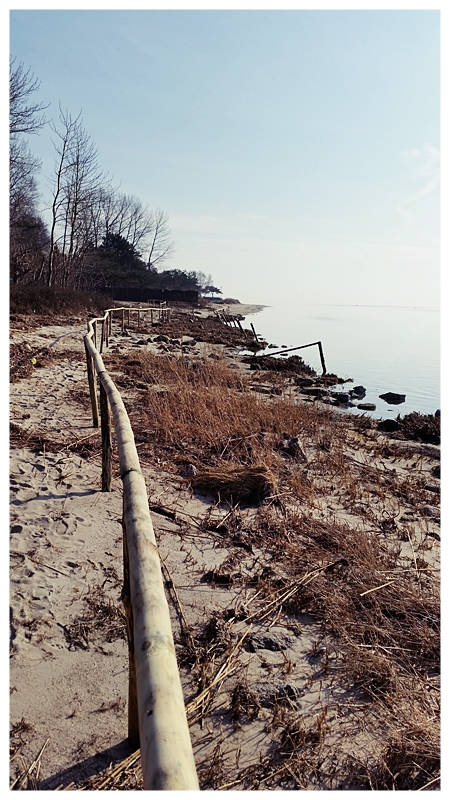
|
„Chałupy VI”
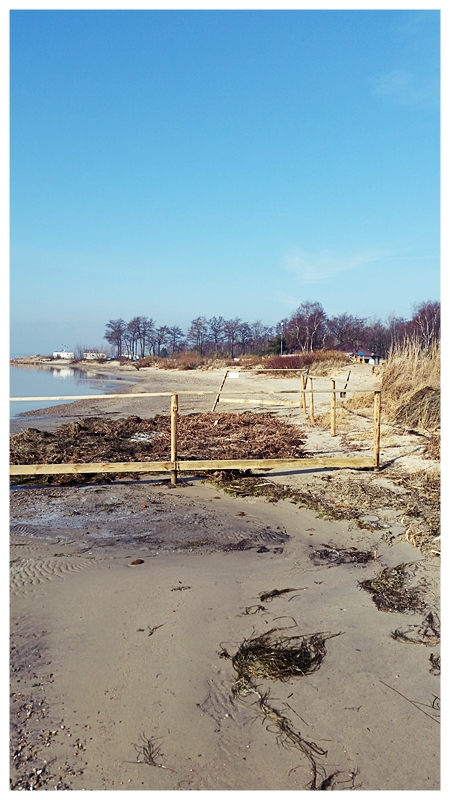
|
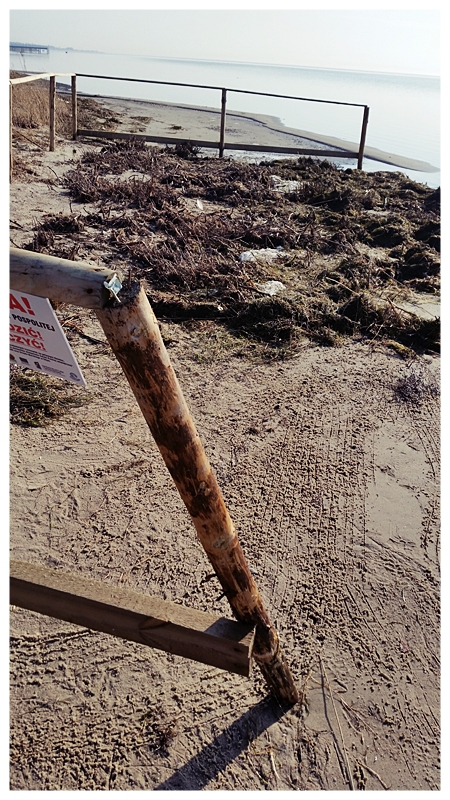
|
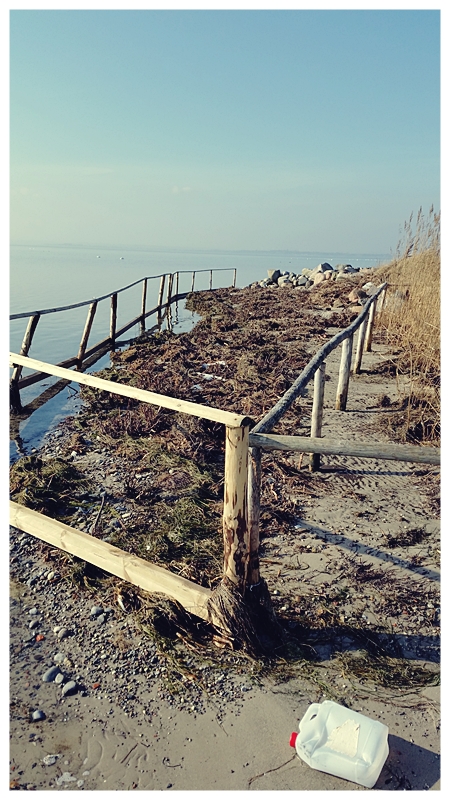
|
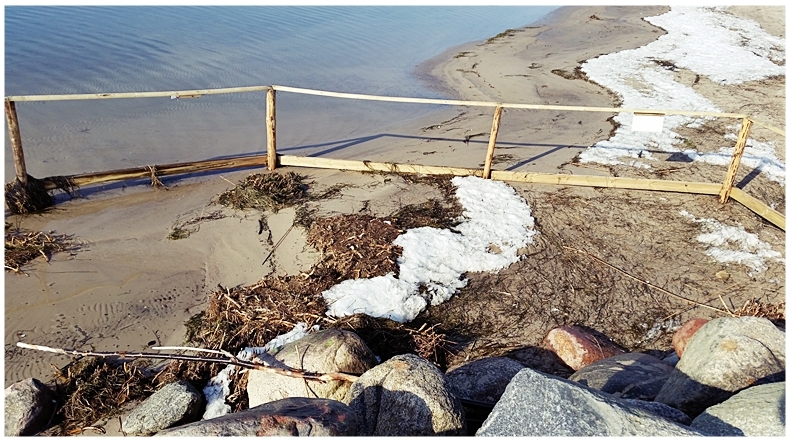
|
08th of January 2015
We done a first reconnaissance of planted reeds in this year. Plants in most stations has survived winter storms and ice scouring. In some places, as you can see in the pictures, the security fence did not hold an ice movements.
Area where the reeds were collected

|
„Małe Morze”
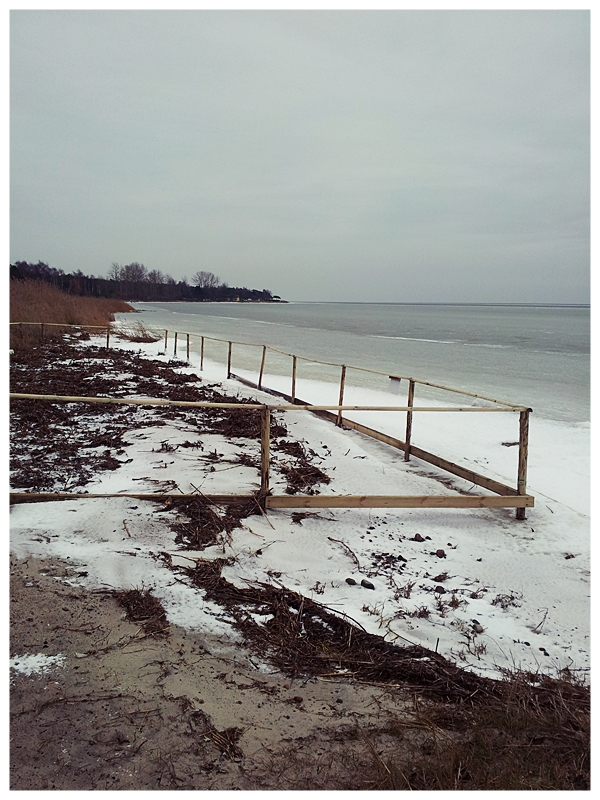
|
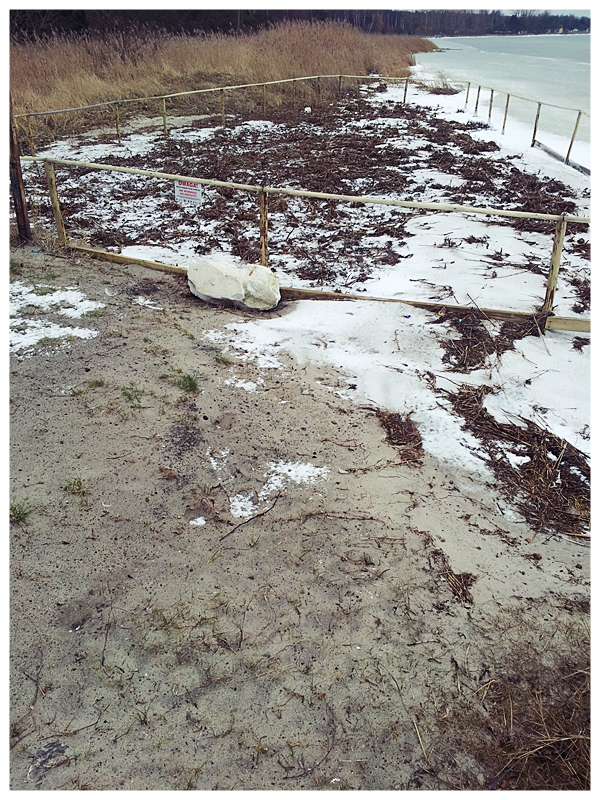
|
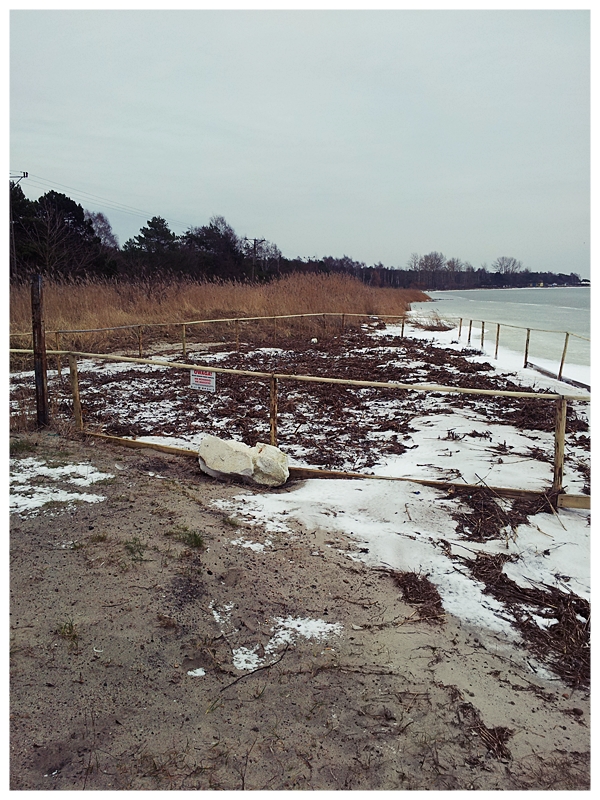
|
„Kaper”
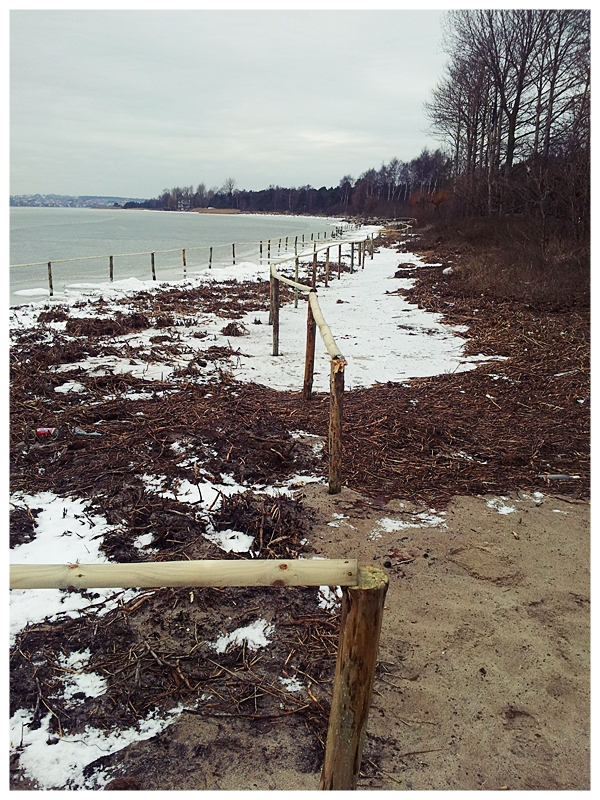
|
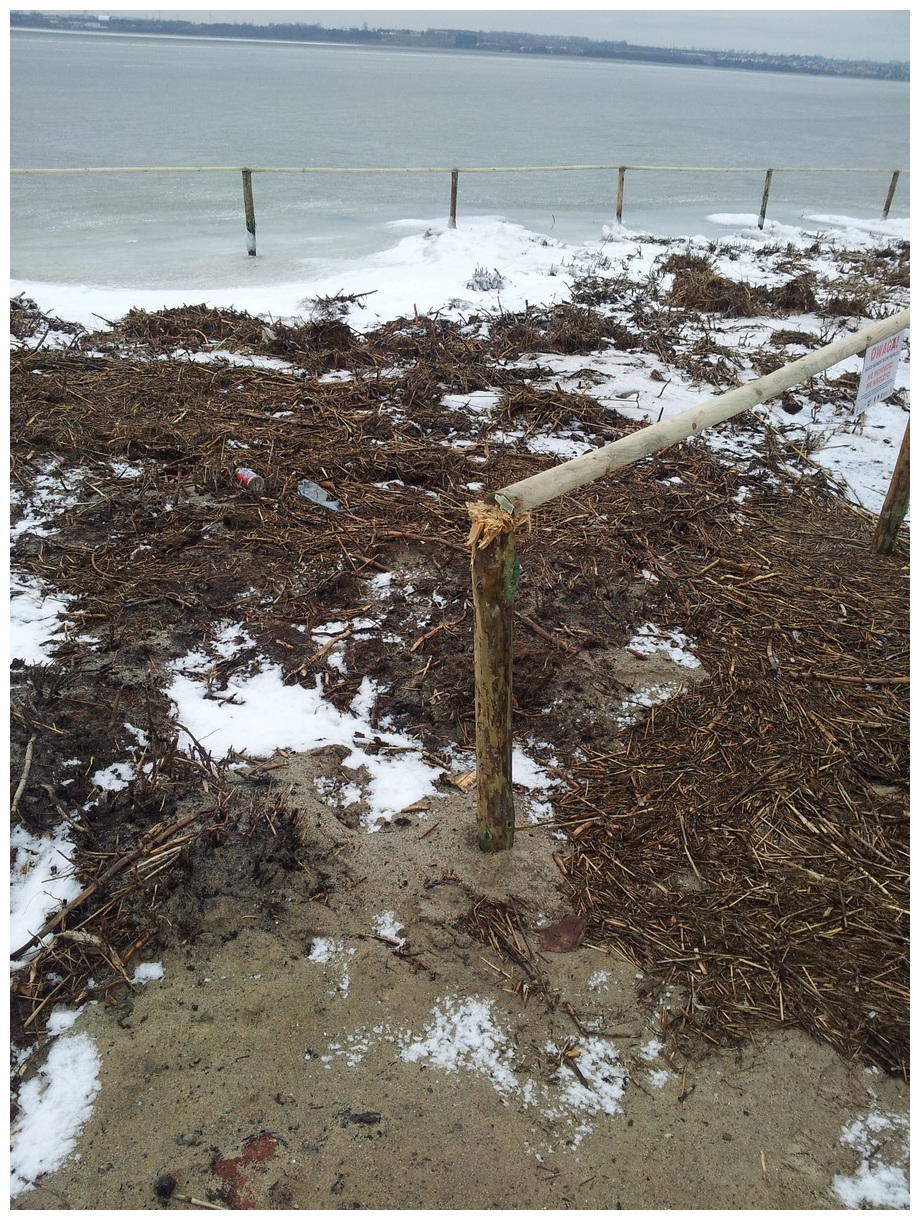
|
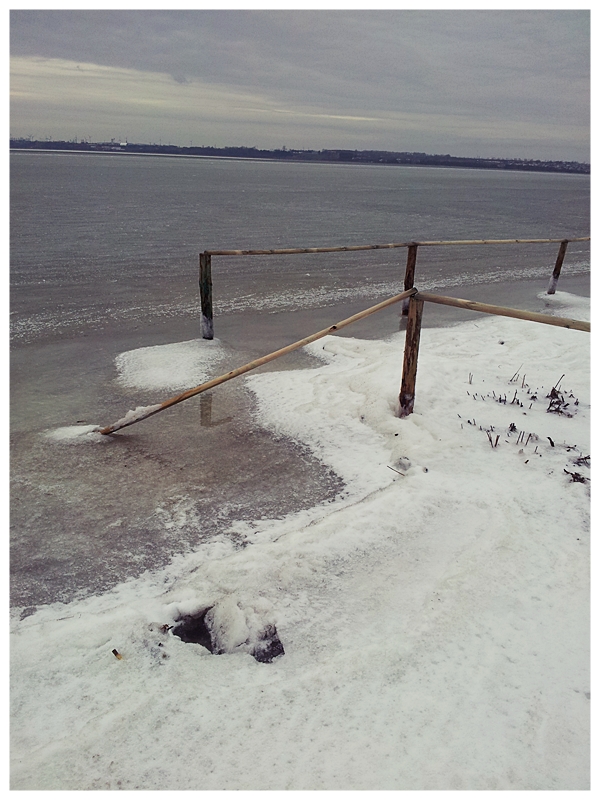
|
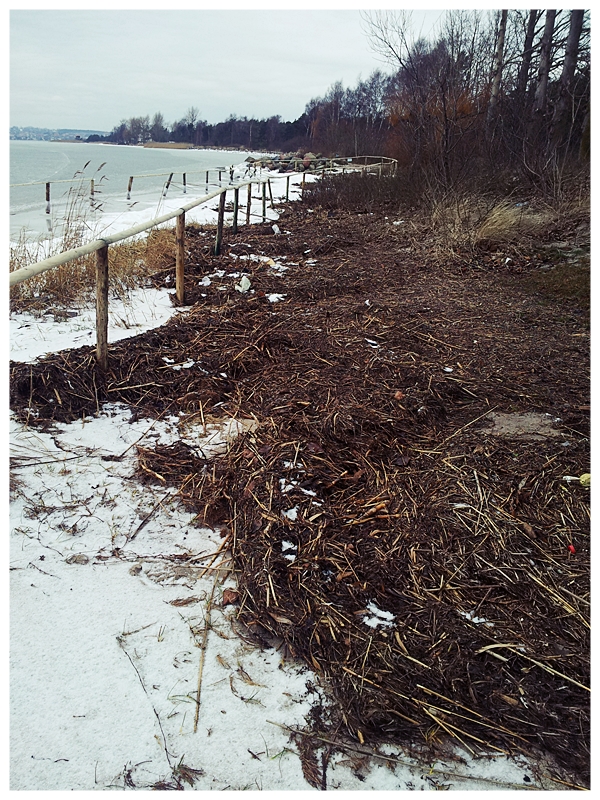
|
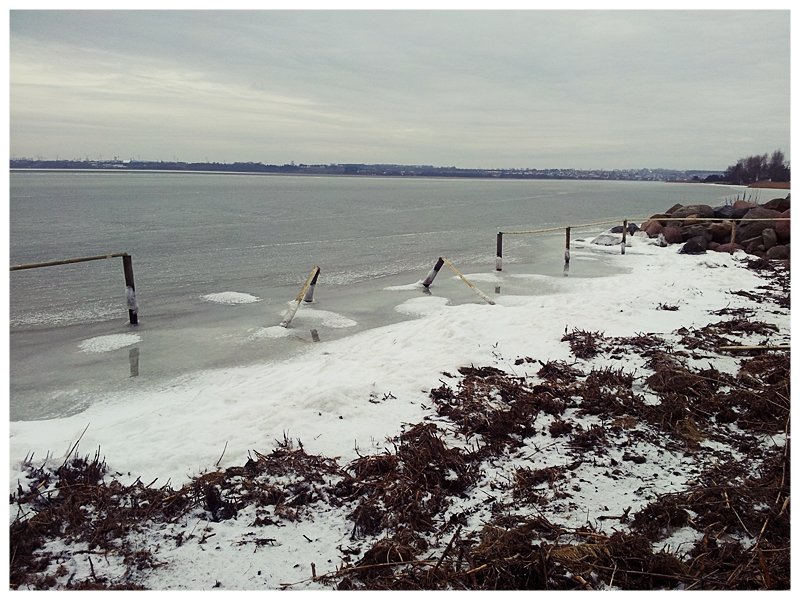
|
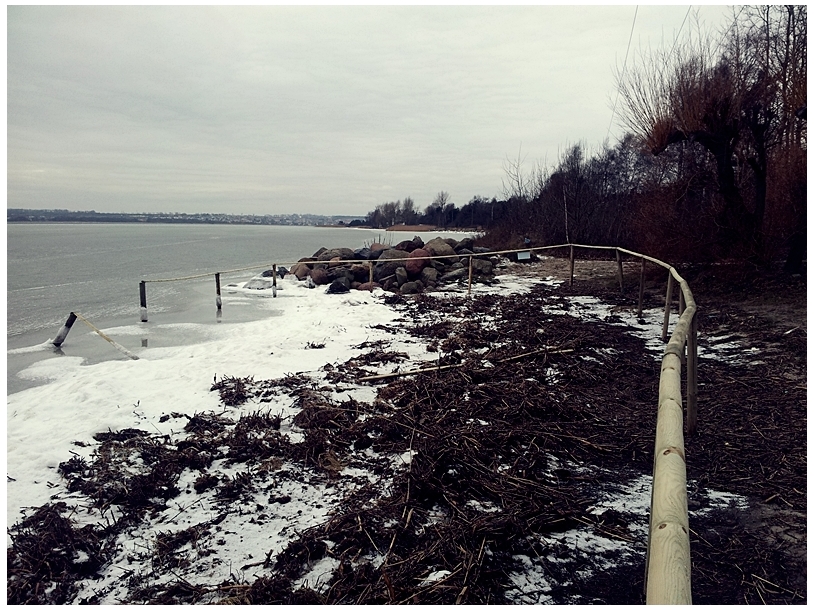
|
„Chałupy VI”
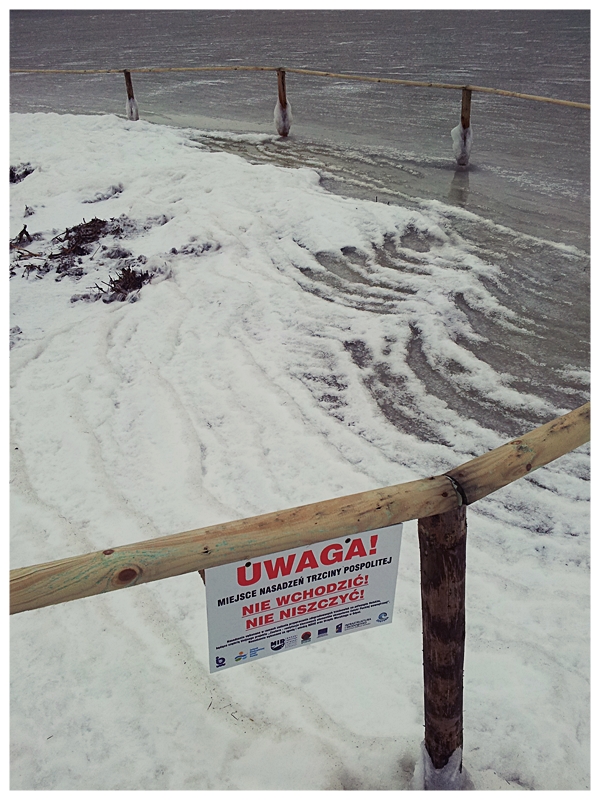
|
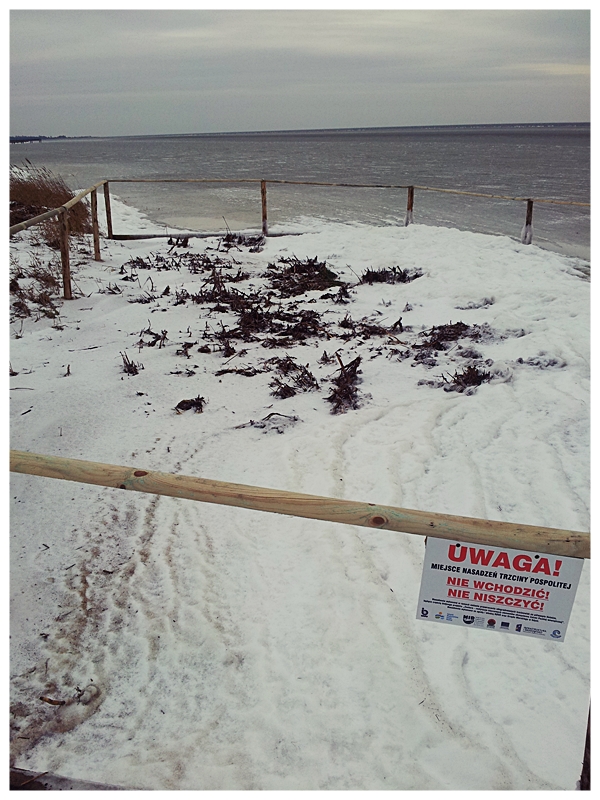
|
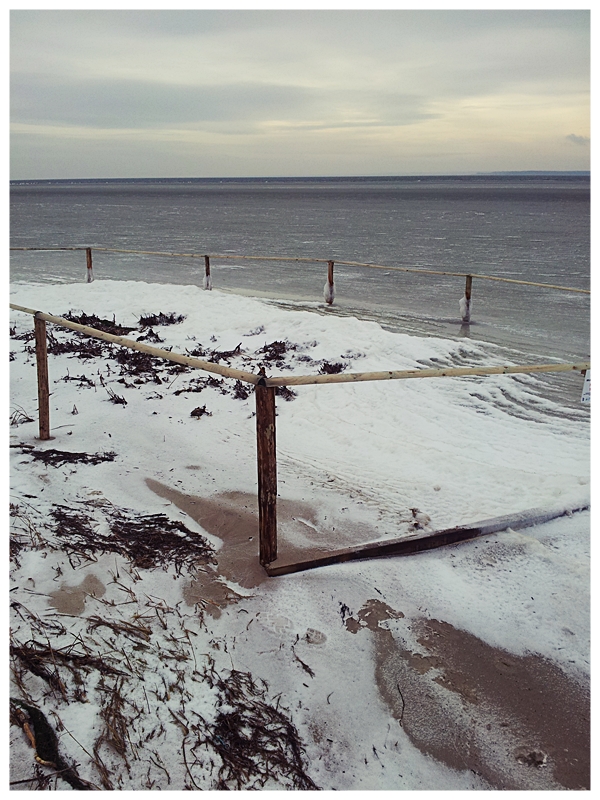
|
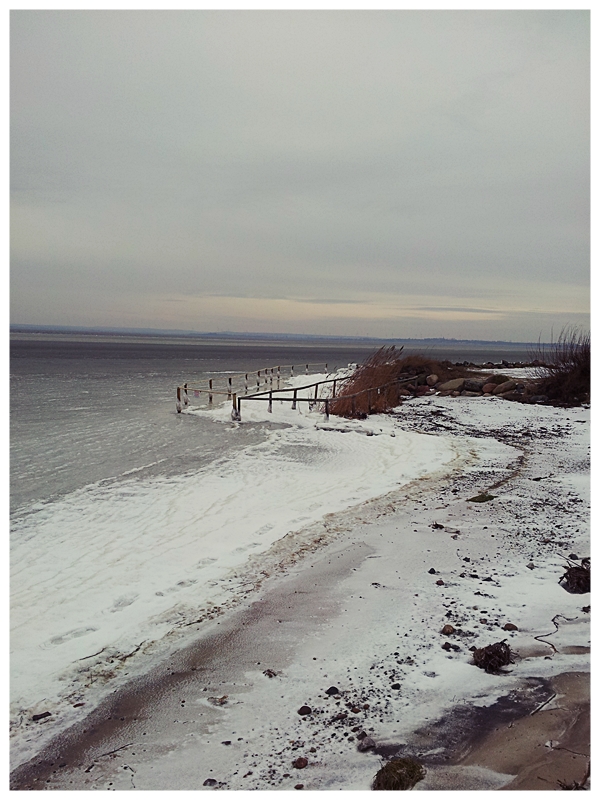
|
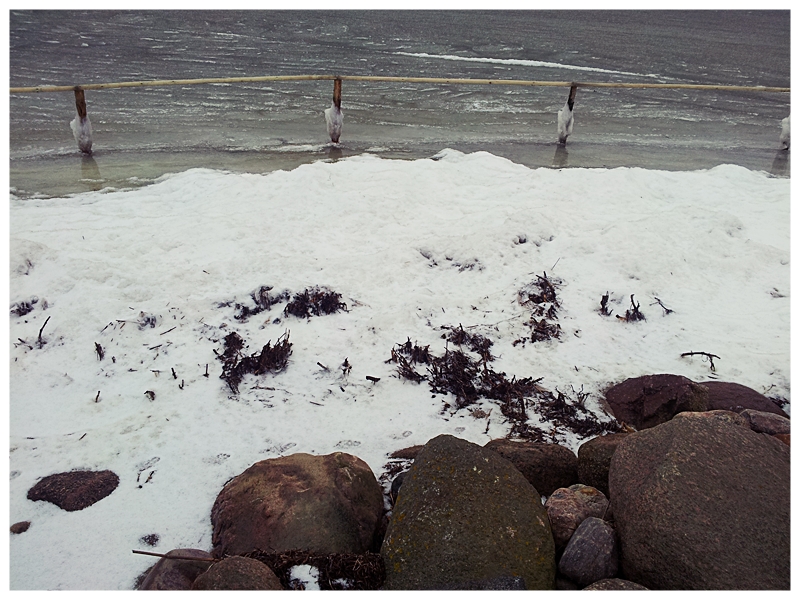
|
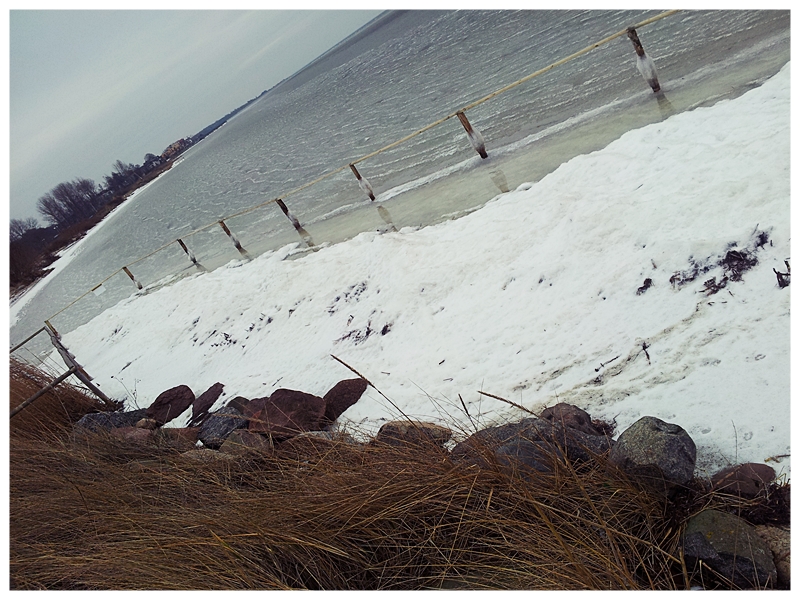
|
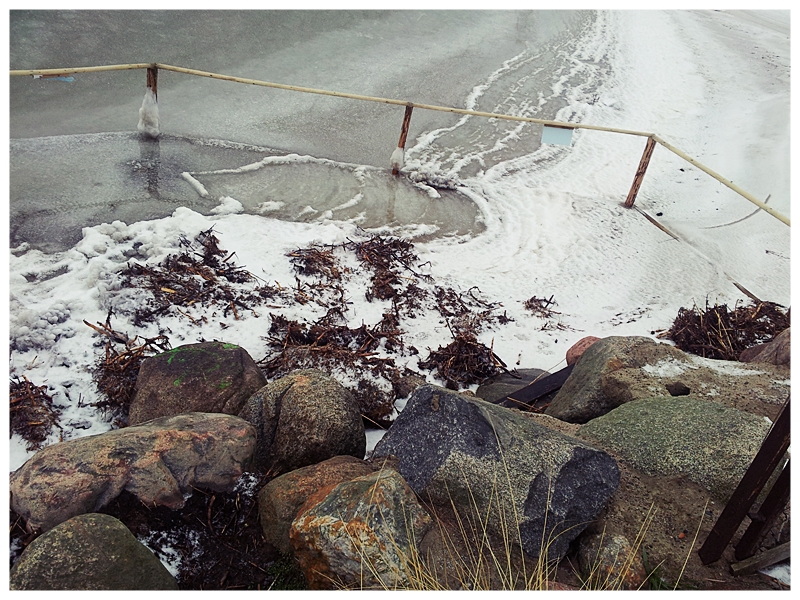
|
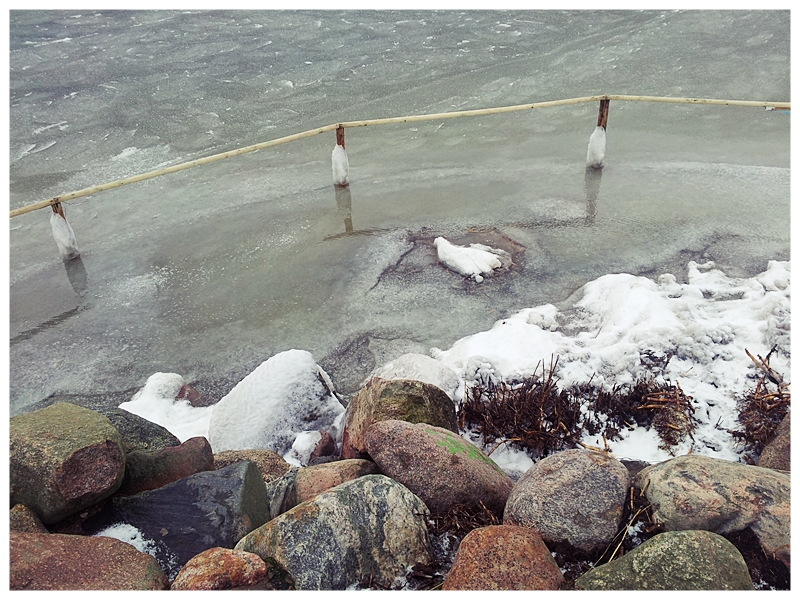
|
18 grudzień 2014
Our research season in the Inner Puck Bay has been finished. During this year we have conducted field campaign to check Zostera marina occurrence, as also other underwater vascular plants and algae. The research was carried from June till end of November. In September we have done a new research using sonars for recognition of Zostera marina meadows. This way of mapping was carried on the areas marked on the maps presented below and it took in total a 2 days of field work
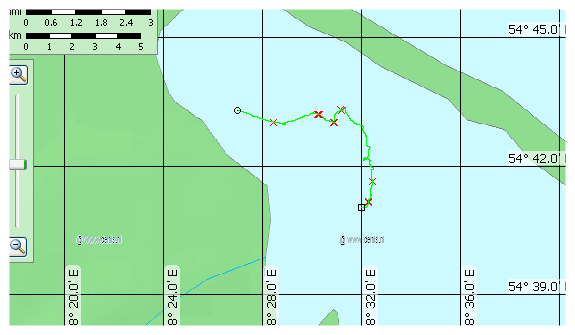
| 1. The first acoustic transect |
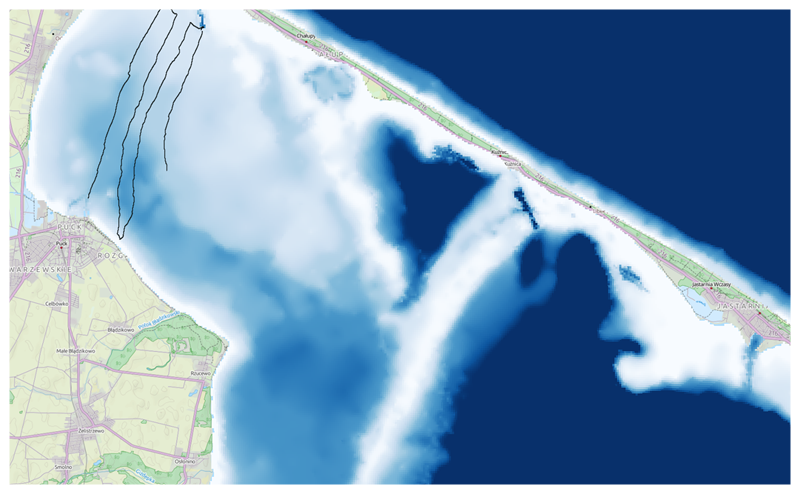
| 2. Second field work day and new 4 transects |
Restitution of reeds is needed to speed up its recovery processes to be as close to the natural as it is possible. Planting reeds will reduce not only the degree of habitat fragmentation of macrophytes in the coastal areas but also will be a shelter for animals associate with plants and nursery areas for the fish, but mainly in natural way reeds will protect the shore from further erosion. To aim that goal, in cooperation with the Maritime Office in Gdynia and the Regional Directorate for Environmental Protection, the donor area for Phragmites australis were chosen, as well as places where it can be planted. All chosen areas belongs the technical area of the Maritime Office in Gdynia.
3. Place of Phragmites australis being collected
a. Inspection of the sewage areas of "Swarzewo" for possible reeds donor spot from the fish ponds
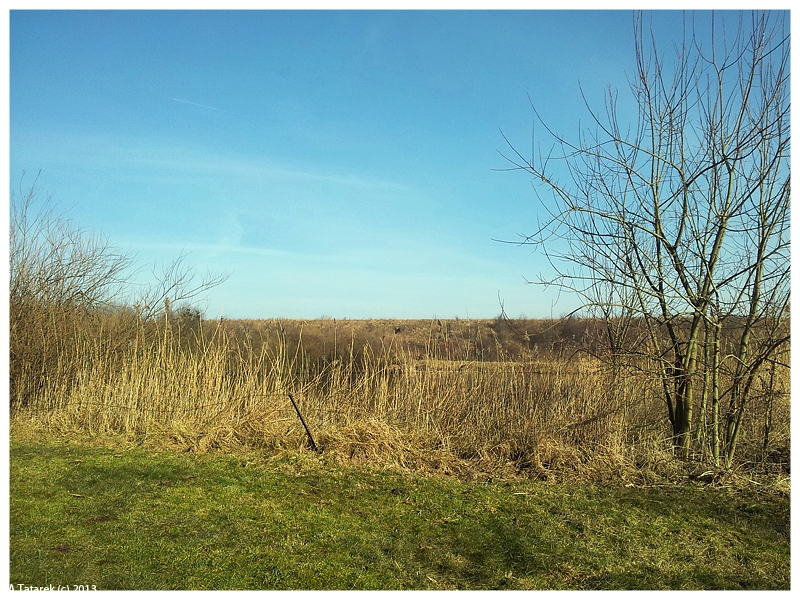 |
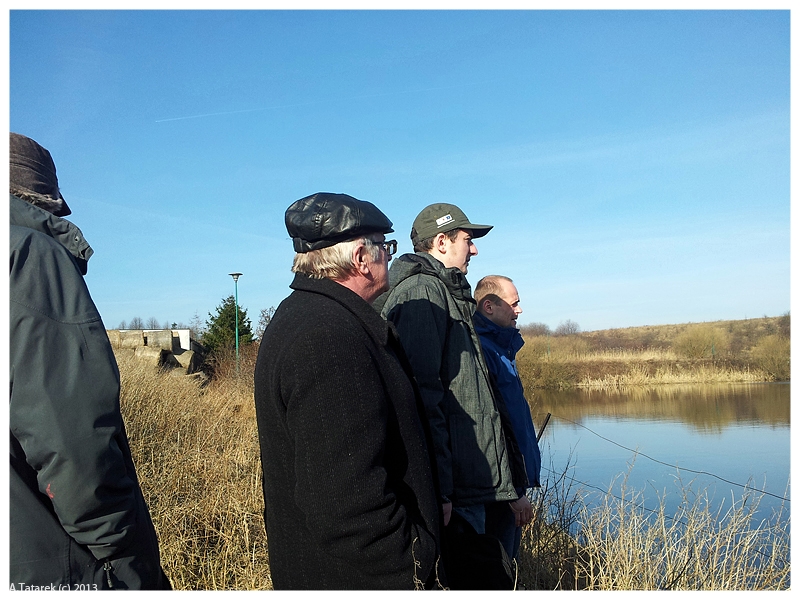 |
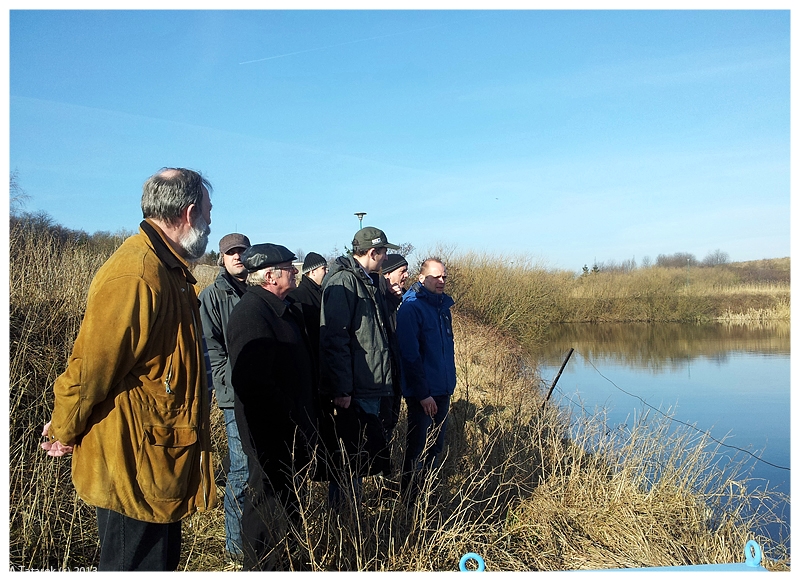 |
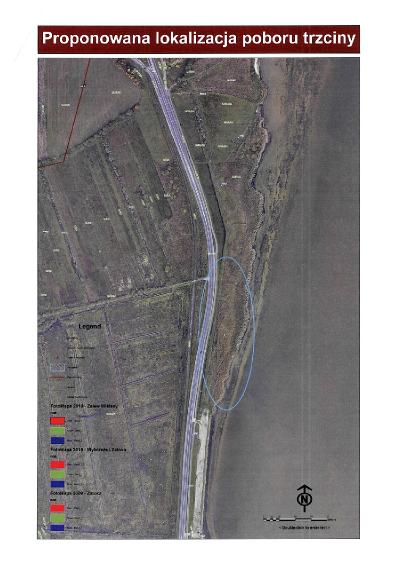 |
b. The selected area where the cane was collected for planting |
4. The first inspection of areas for field planting
a. Surroundings of „Kaper” camping
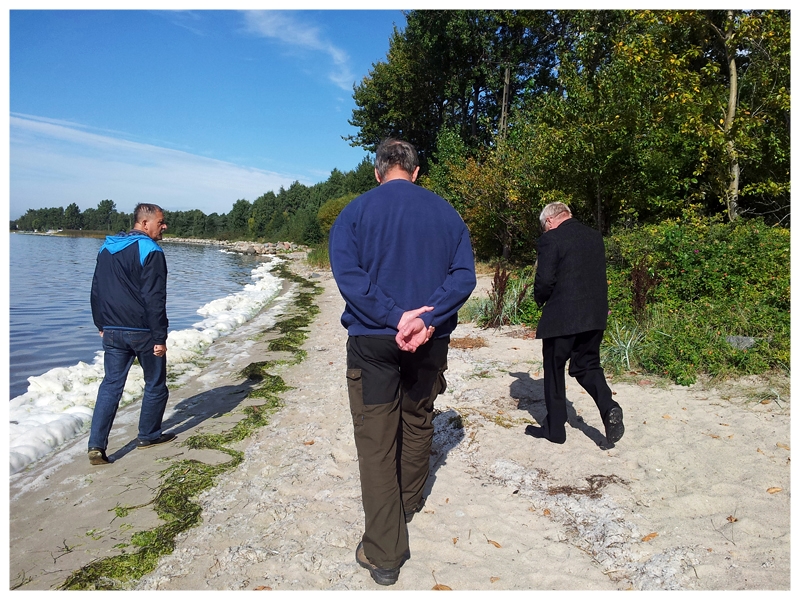 |
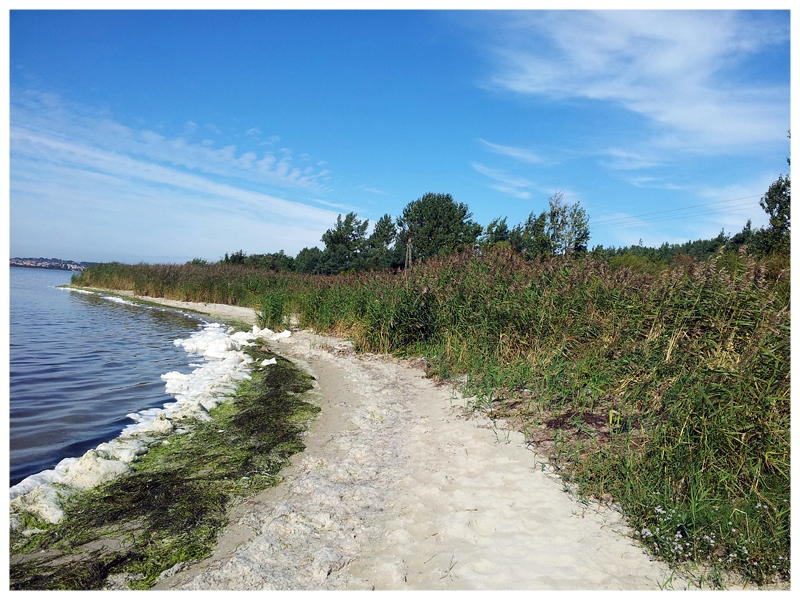 |
b. Surroundings „Małe Morze” camping
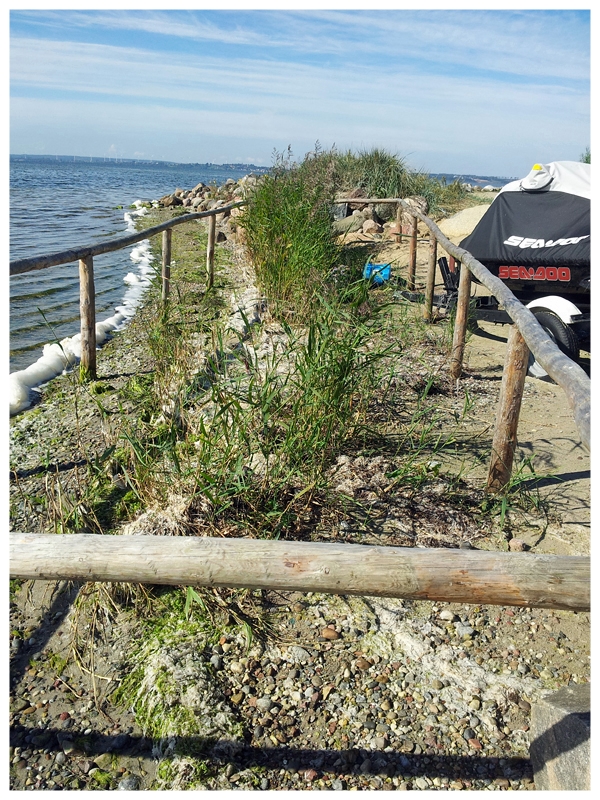 |
5. Areas of planted reeds
a. Peryphery of „Małe Morze” camping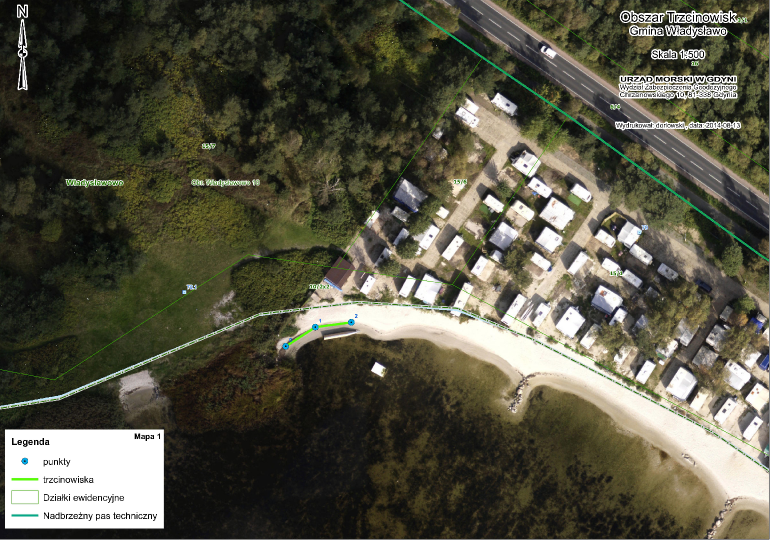 |
b. Peryphery of „Kaper” camping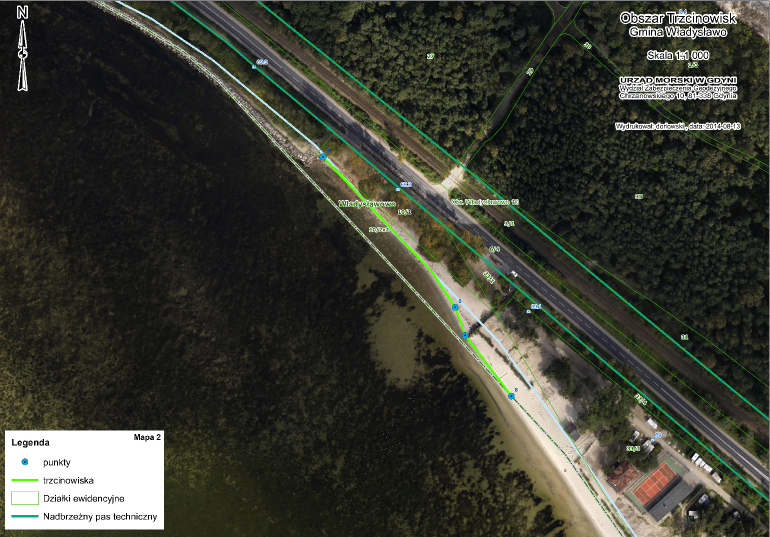 |
c. Peryphery of „Chałupy VI” camping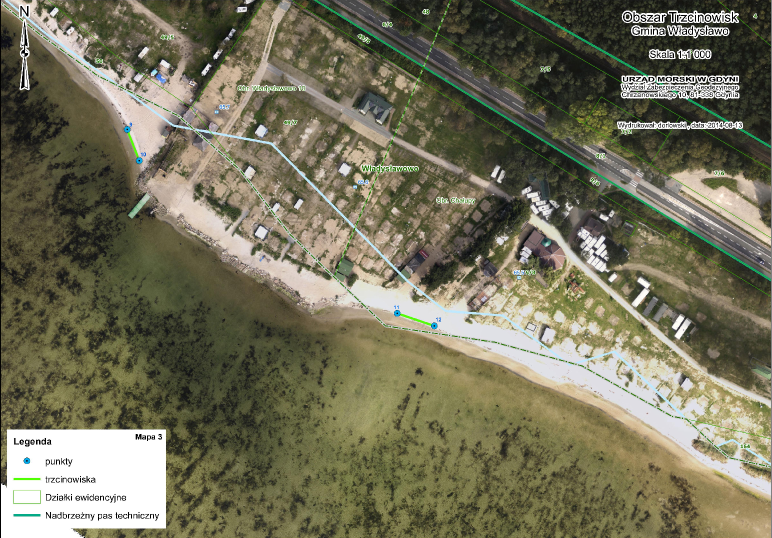 |
The plantings were carried out by the hired drainage company, which have a lot of knowledge and skills in the acquisition and the planting of the Phragmites australis. Currently, all three areas have been planted with reeda, and we expect that they will survive the coming storms.
6. Collecting of Phragmites australis
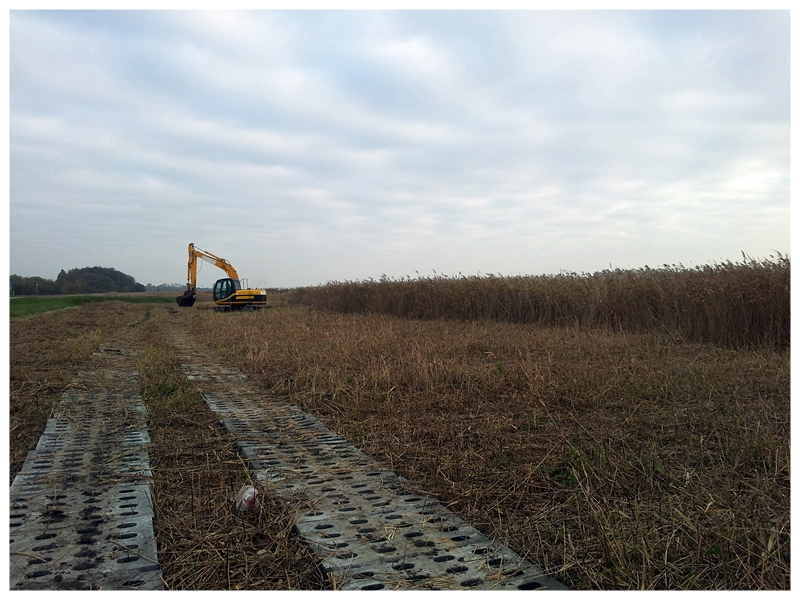 |
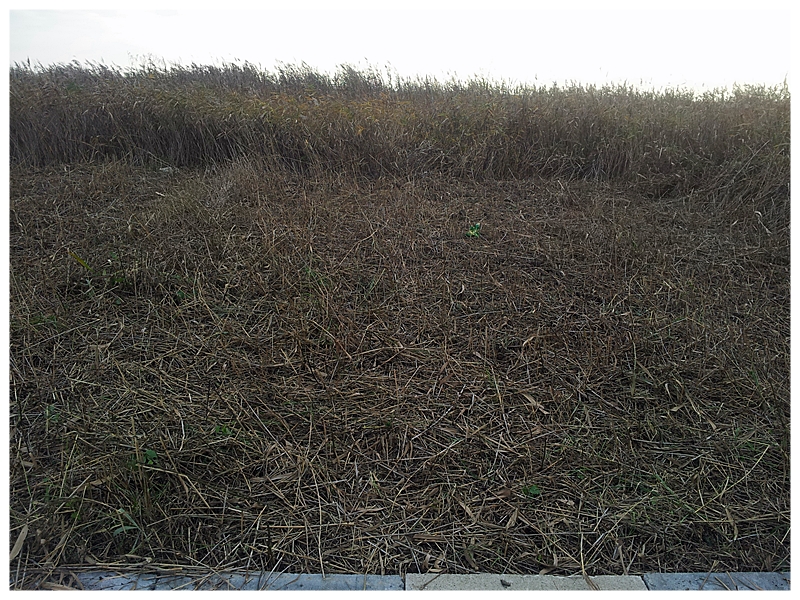 |
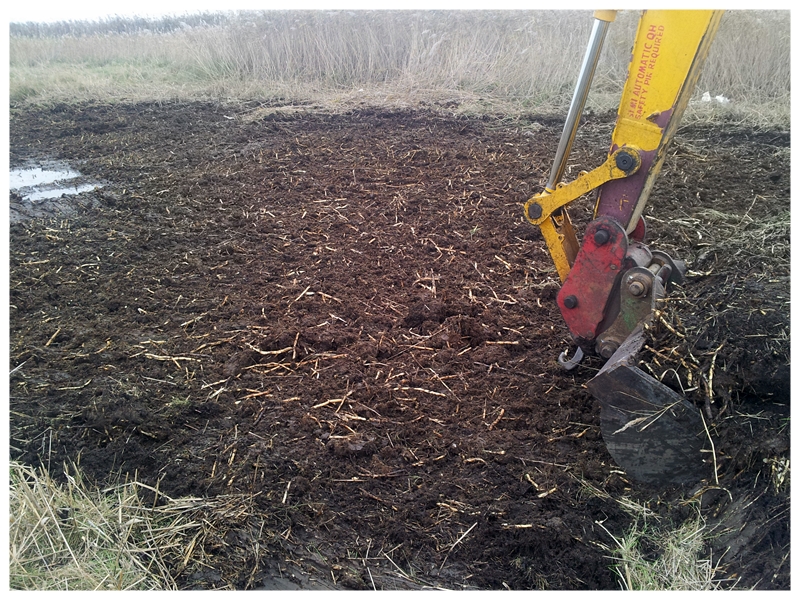 |
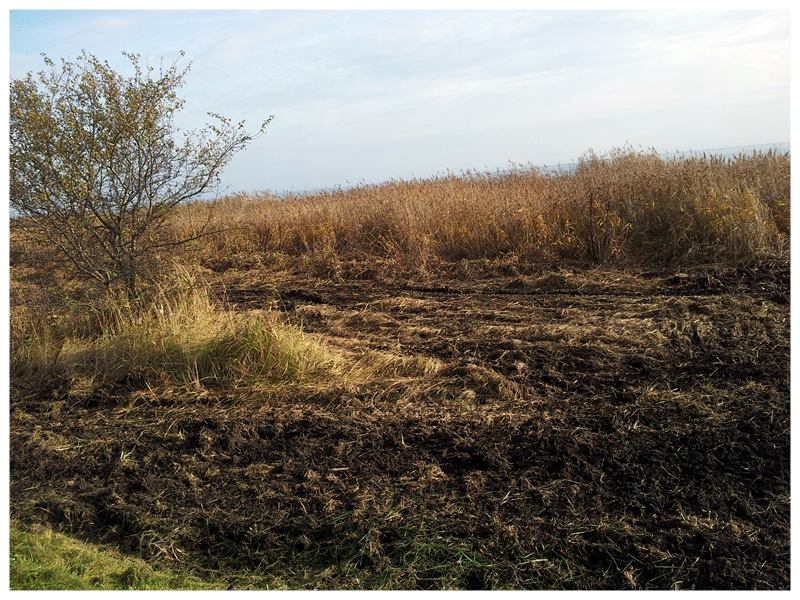 |
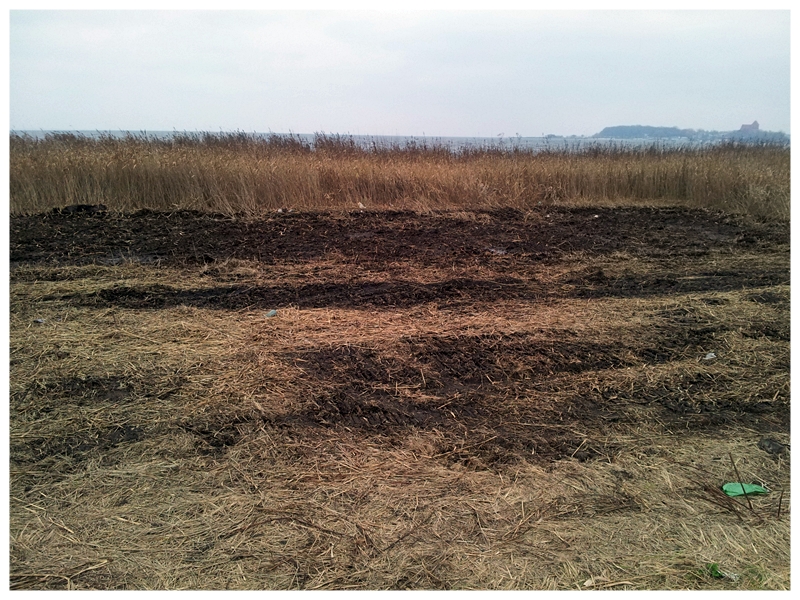 |
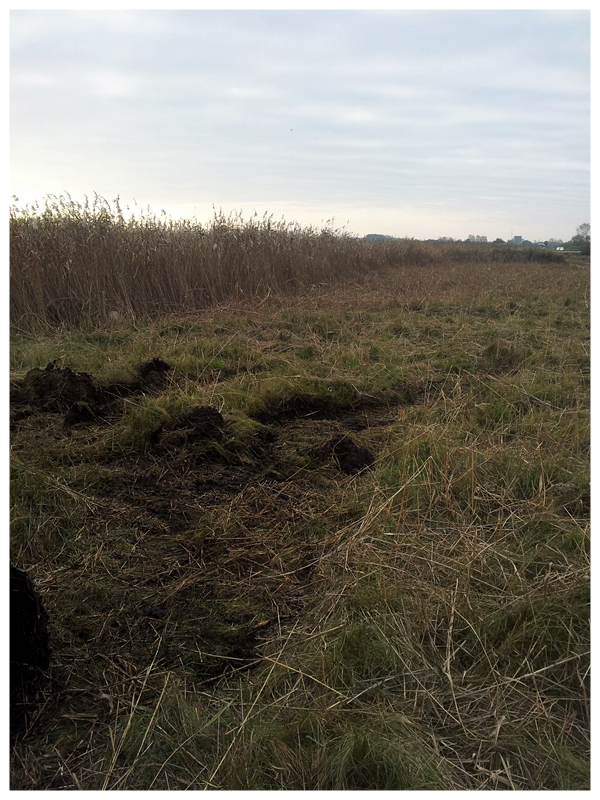 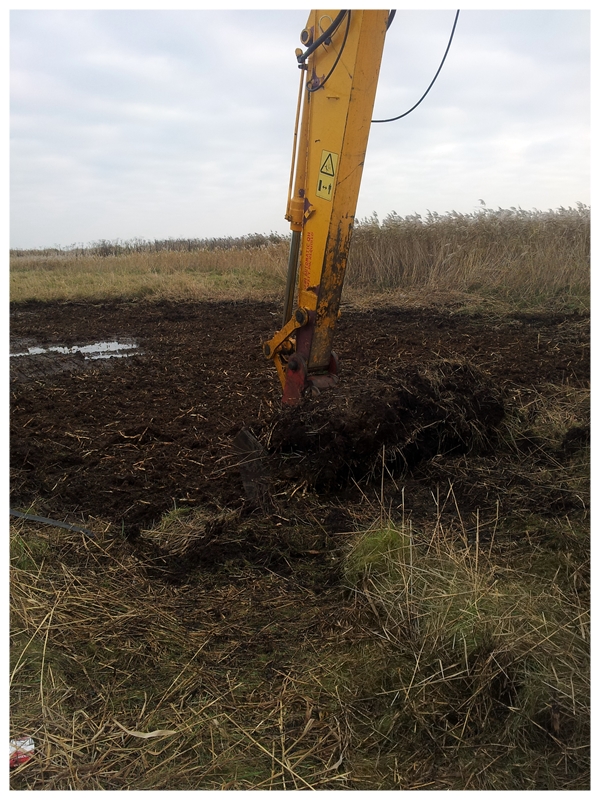 |
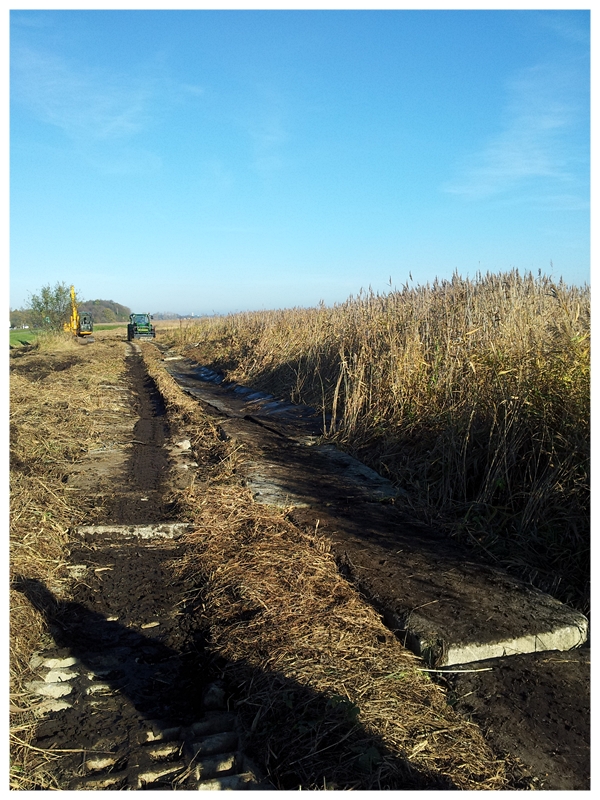 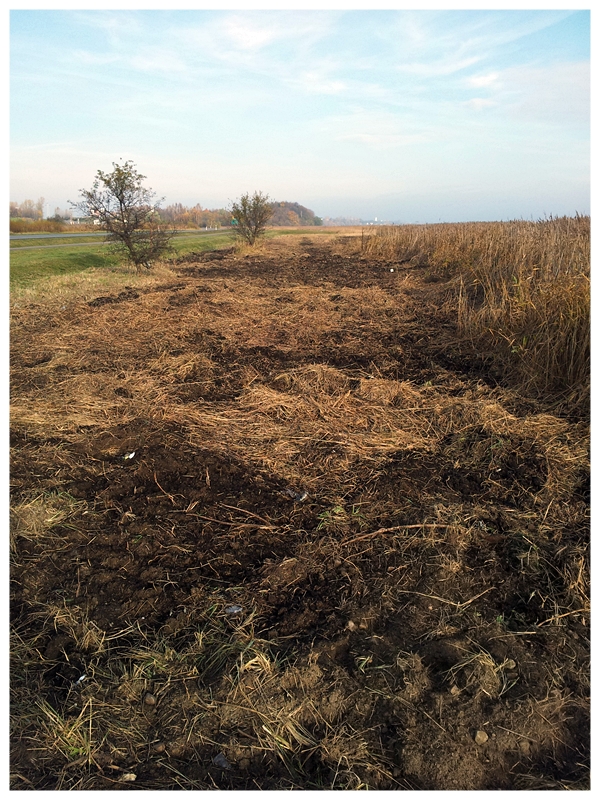 |
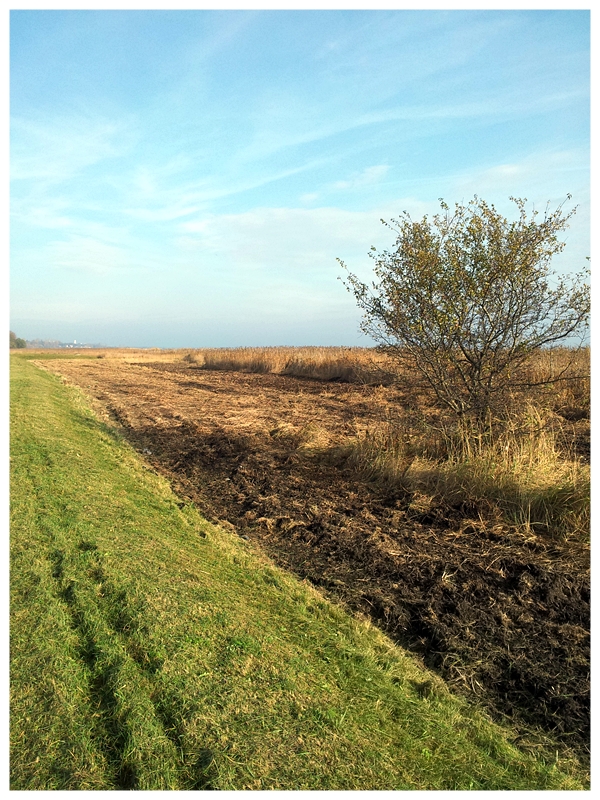 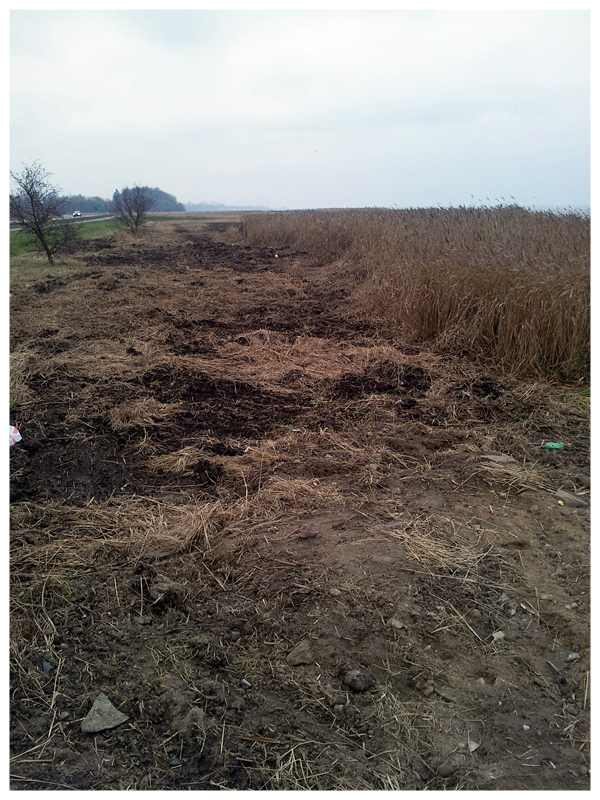 |
7. Planting of Phragmites australis at „Kaper” camping
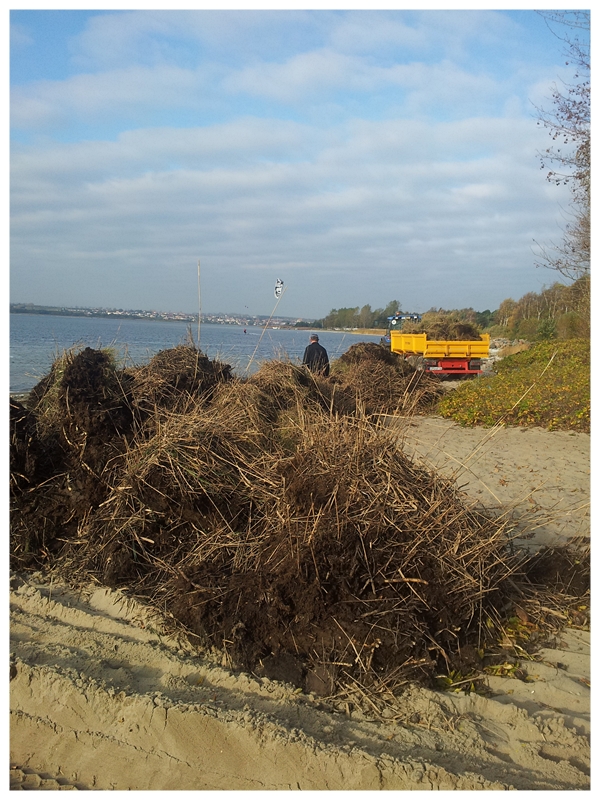 |
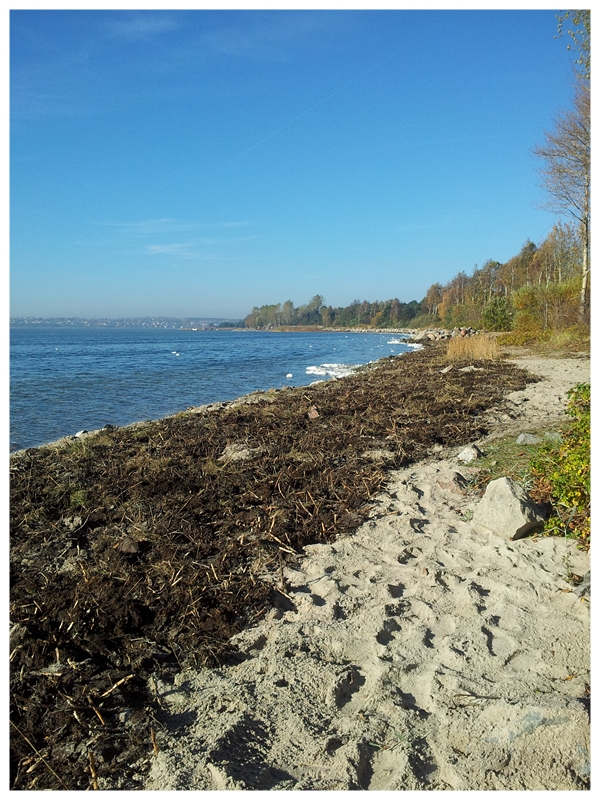 |
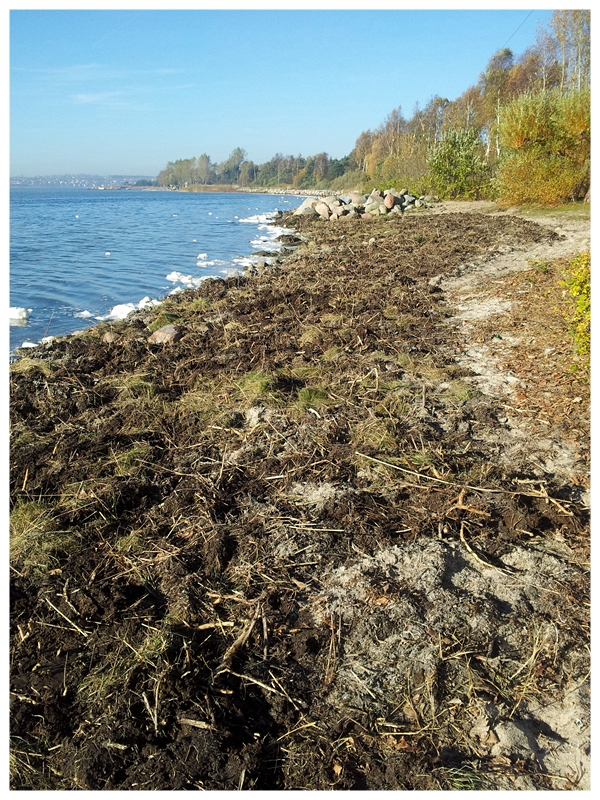 |
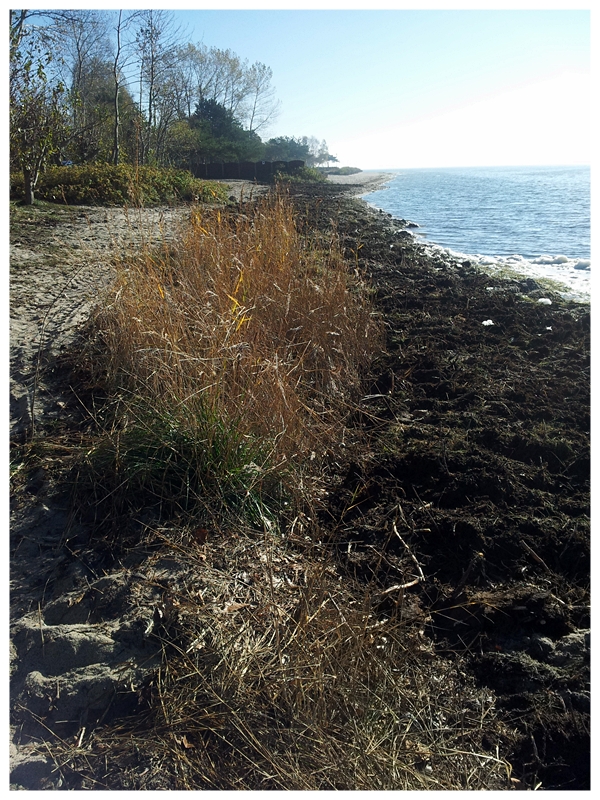 |
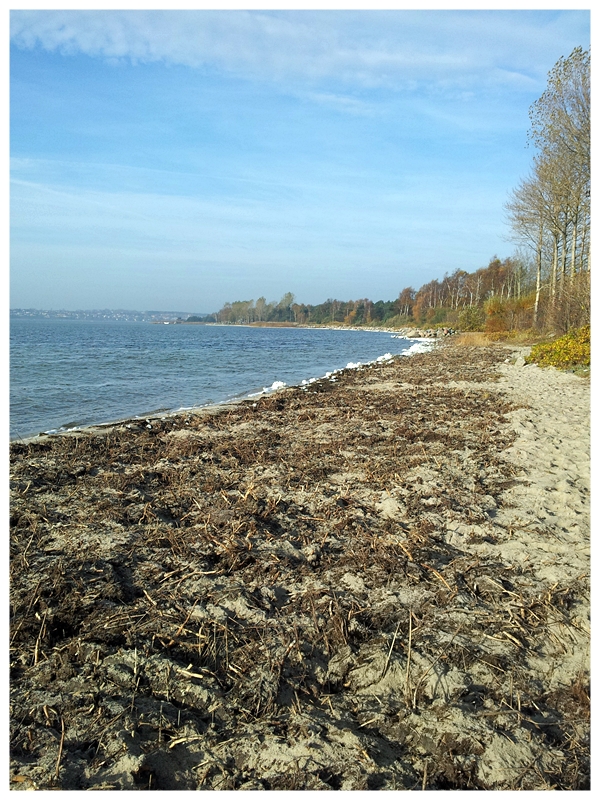 |
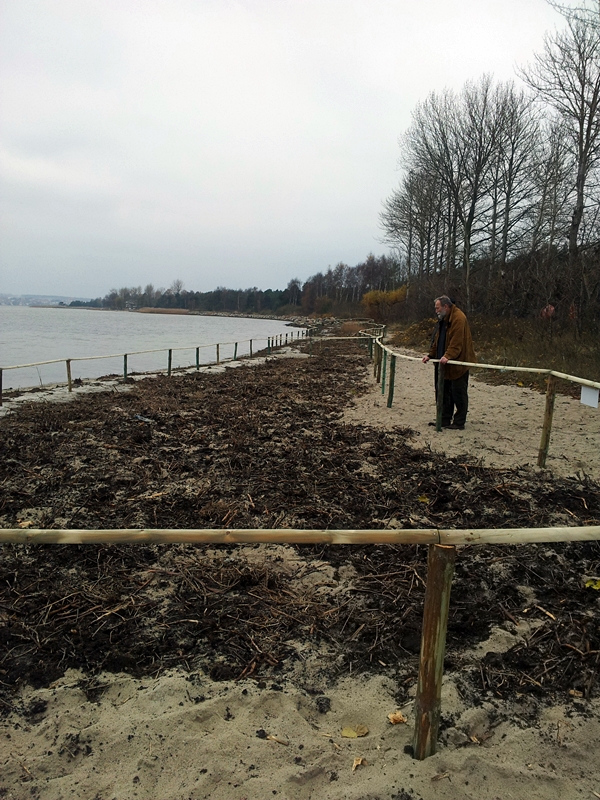 |
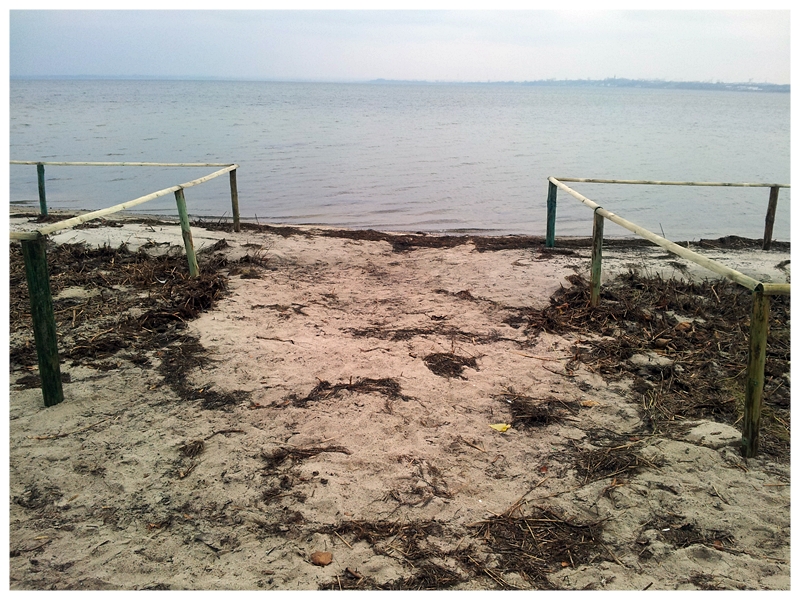 |
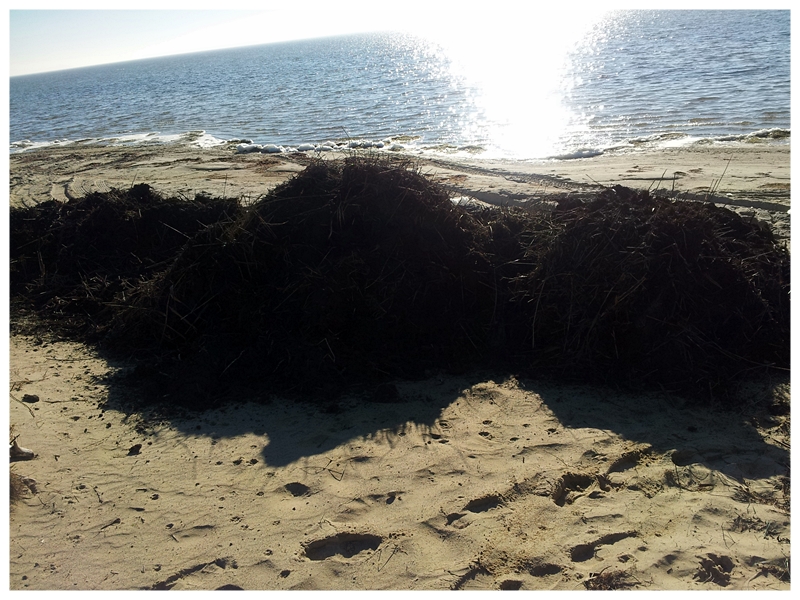 |
8. Planting of Phragmites australis at „ Małe Morze” camping
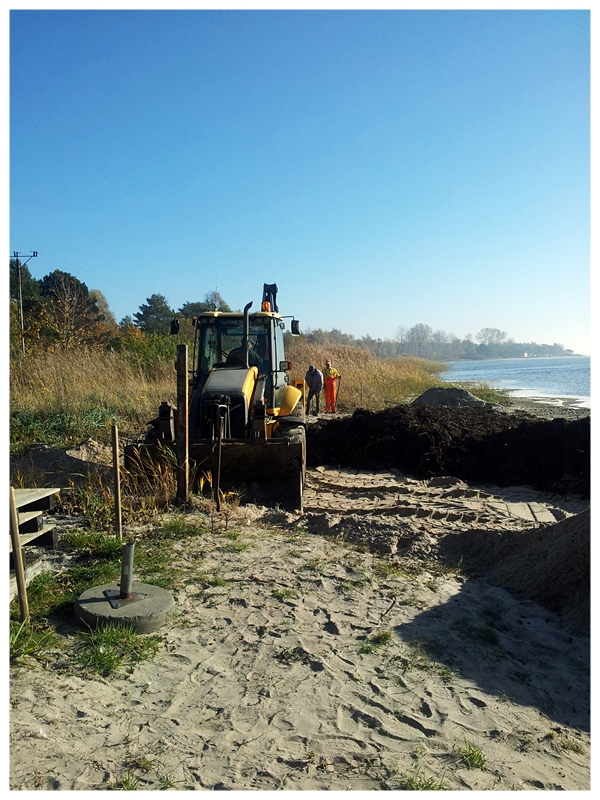 |
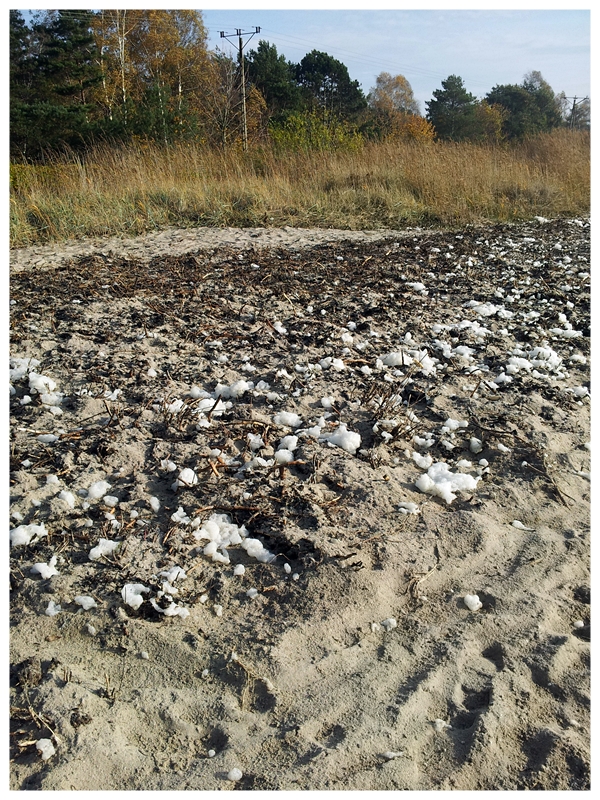 |
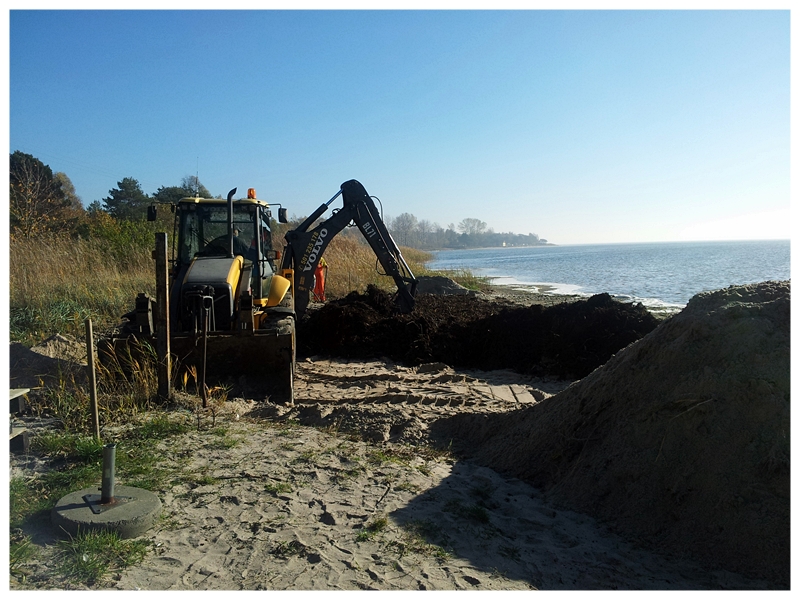 |
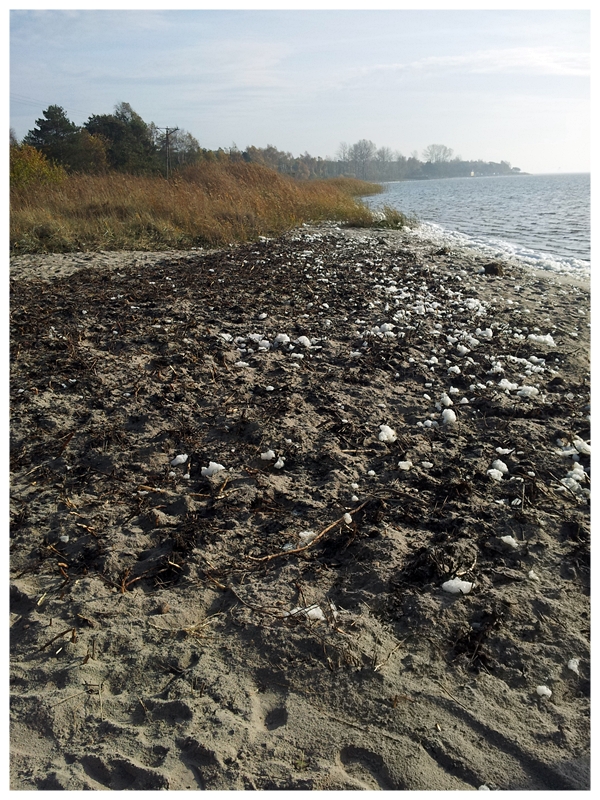 |
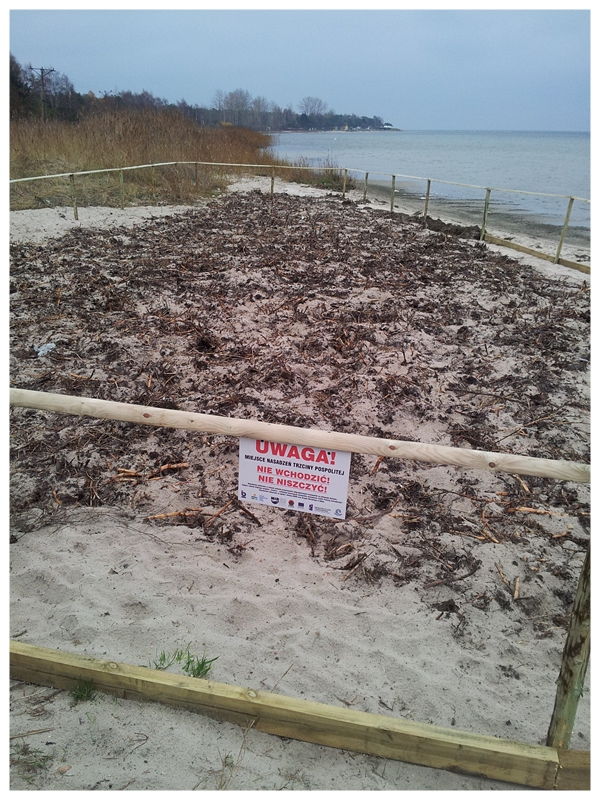 |
9. Planting of Phragmites australis at „Chałupy VI” camping
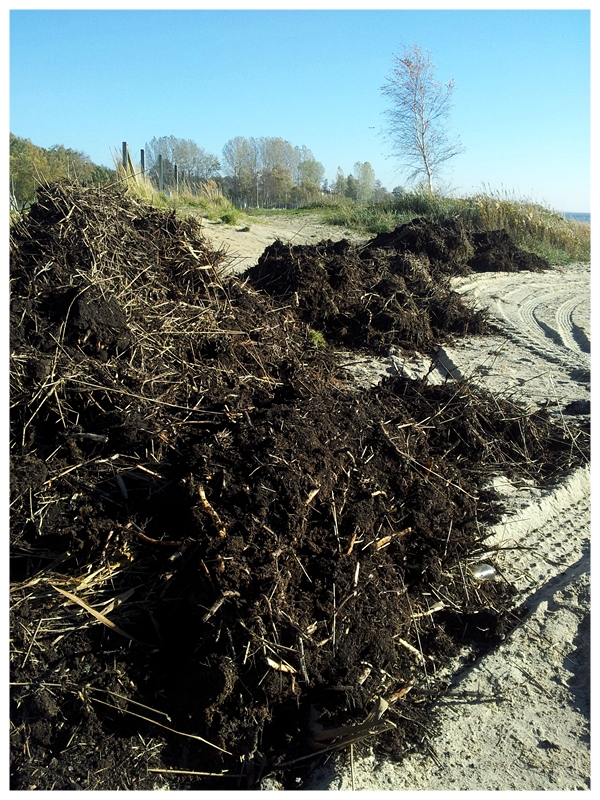 |
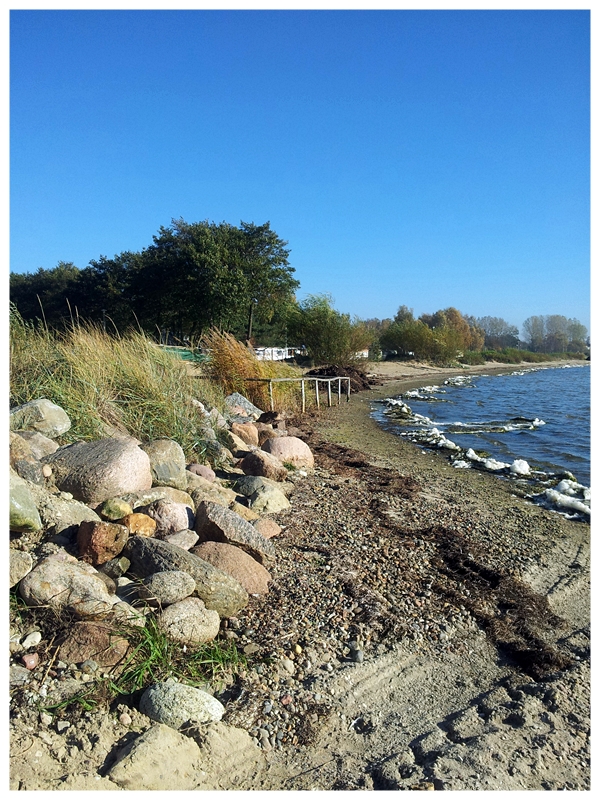 |
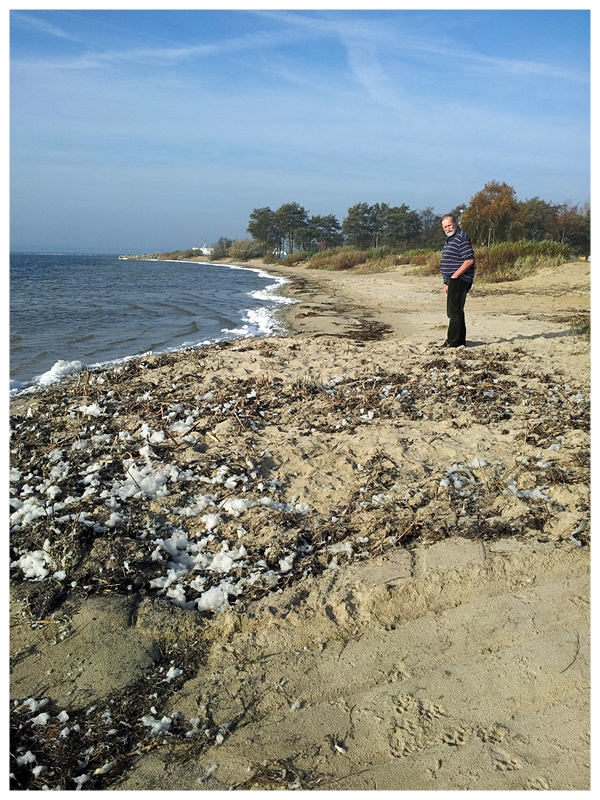 |
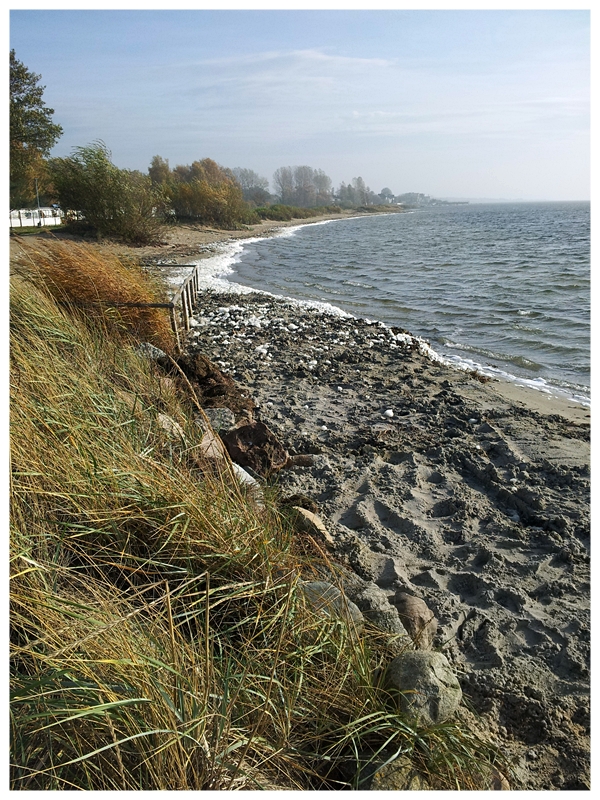 |
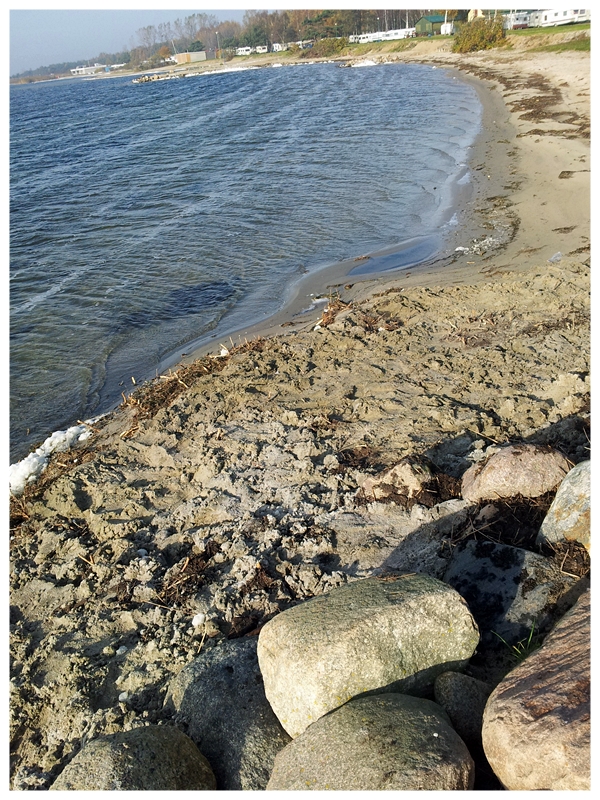 |
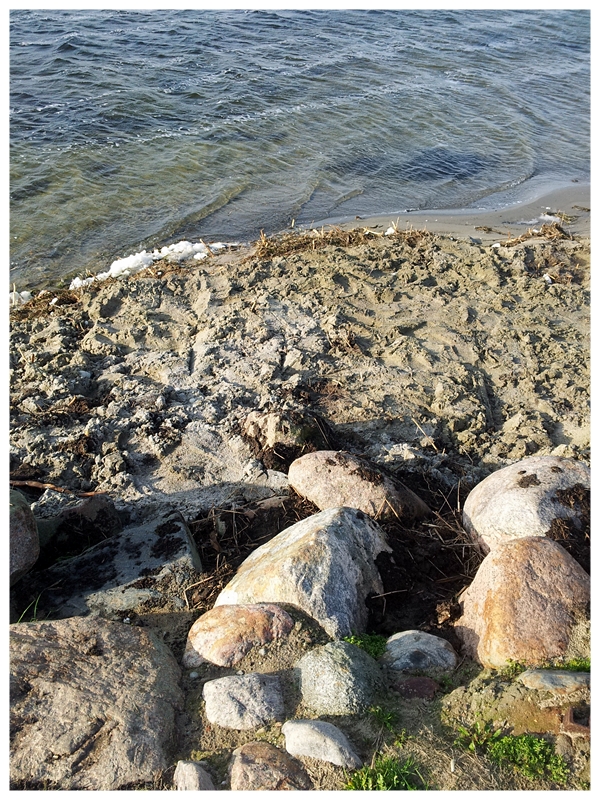 |
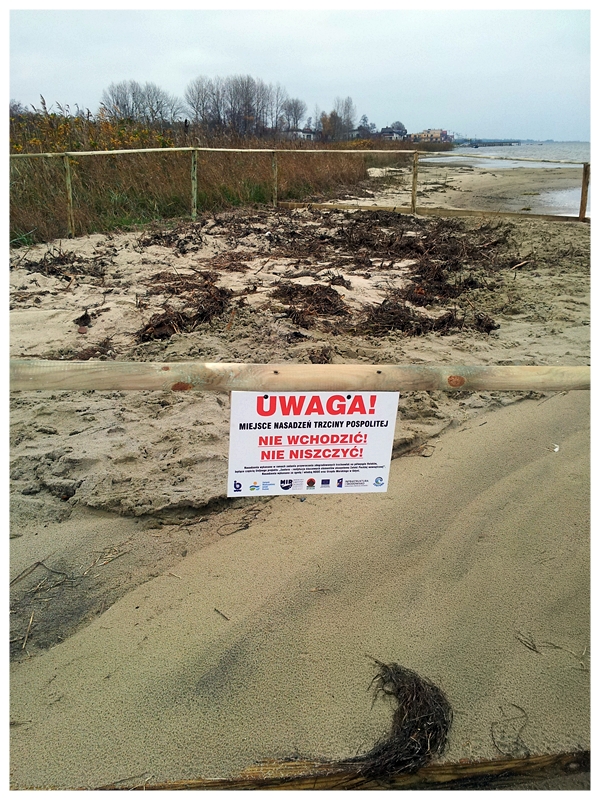 |
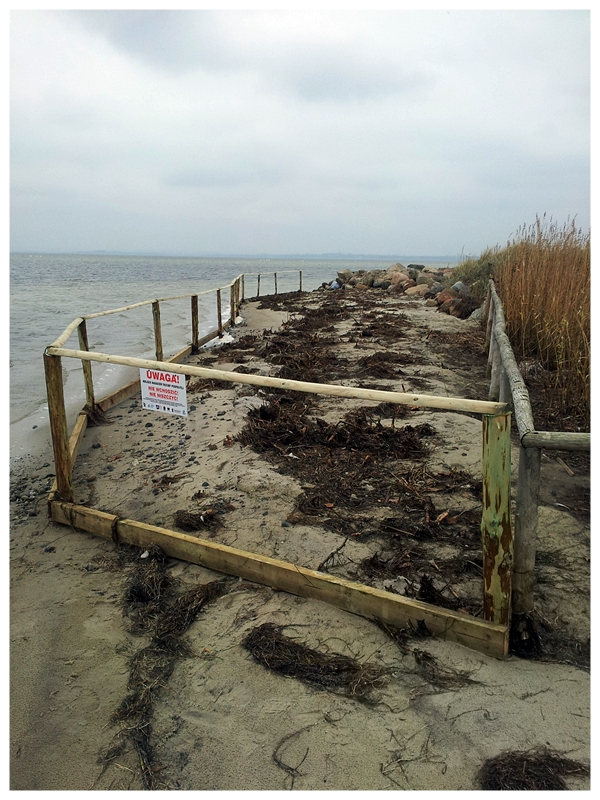 |
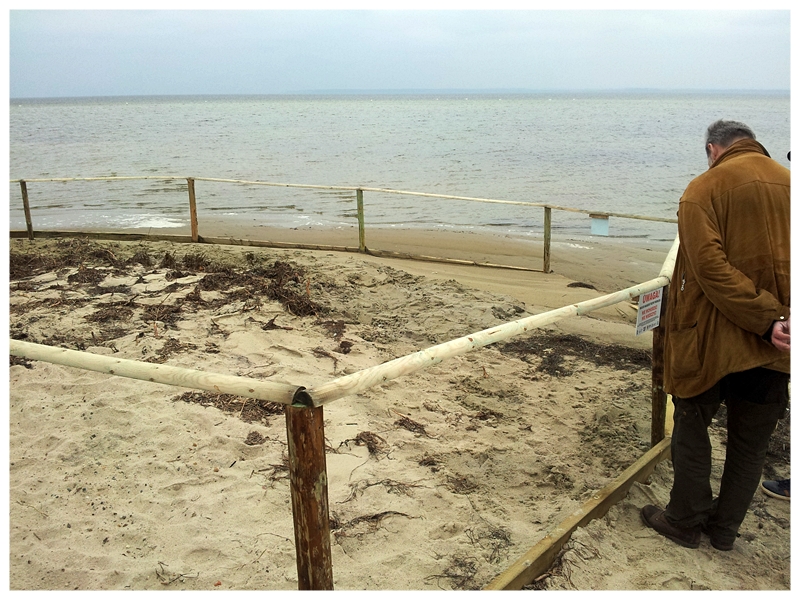 |
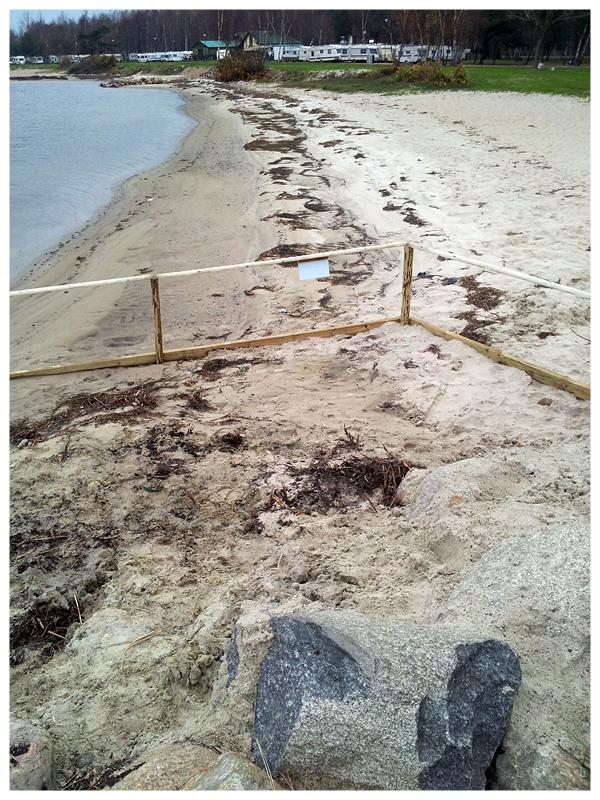 |
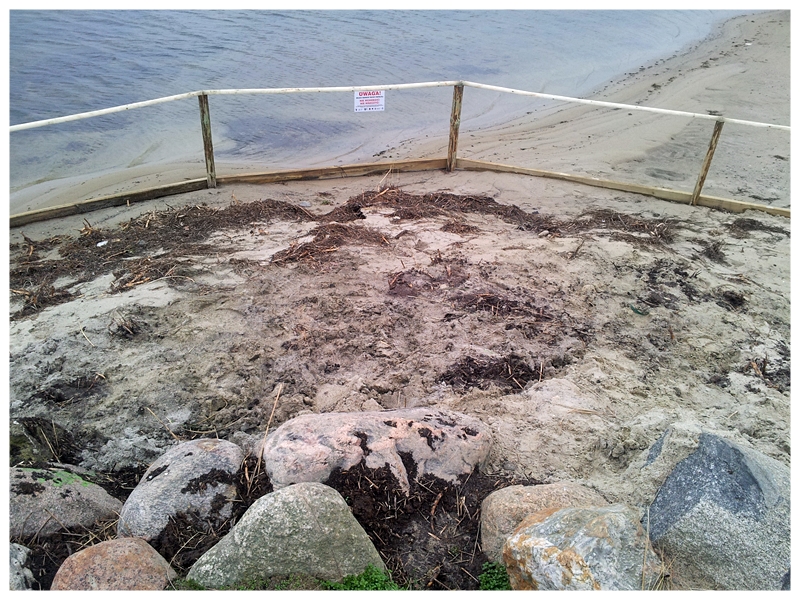 |
8th of November 2013
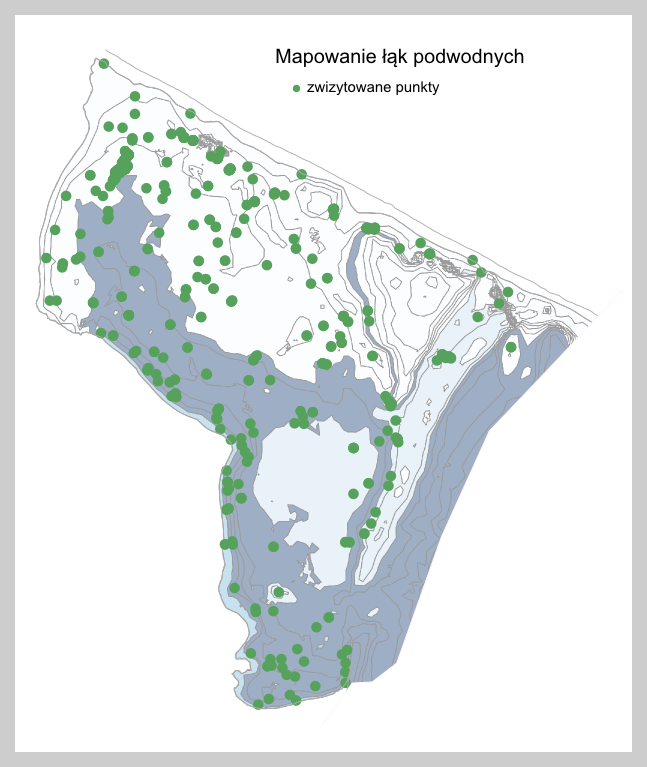 A fieldwork season is almost over. There are still a few trips planned, but we would like to present the map with marked visited locations so far. The data for map preparation was collected in the period from 2010 to 2013, and supplemented by archival data obtained during the Habitat mapping project.
A fieldwork season is almost over. There are still a few trips planned, but we would like to present the map with marked visited locations so far. The data for map preparation was collected in the period from 2010 to 2013, and supplemented by archival data obtained during the Habitat mapping project.Moreover, the same points, but updated with information on the sea grass presence, you can view on the interactive map set in the Active Map of the sea Grass section on web page.
An important result of the Zostera marina habitat mapping campaign, was to locate sites and habitats in which sea grass blooms, which probably indicates the improvement of environmental conditions in the inner Puck Bay. This is enough important issue, that an article in the journal "Knowledge and Life" was devoted to it and the sea grass itself. The article payed attention to the aspect of improving the water quality of the bay, with reference to the results obtained by us in the "Zostera" project.
18th of September 2013
Today, at the ZGZP a meeting was held. The topic of discussion was about recultivation of reed habitats in Puck Bay. Discussion was mainly concerned about methodologies, strategies and the selection of planting sites selected from those that are best suited for planting reeds. In the face of the failure with replanting rooted (grown in pots) one-season reeds seedlings, it was decided to apply the method used in the past by the Gdynia Maritime Authority, consisting of "transplanting" portions of the nearby reed on degraded areas (mostly the ones trodden by tourists). Inspection of the plantings sites confirmed a high efficiency of this method. During the prevision the sites for planting were selected. It was not an easy task due to the large concentration of a camp sites
Area of planted material taken from the nearby reed donors.
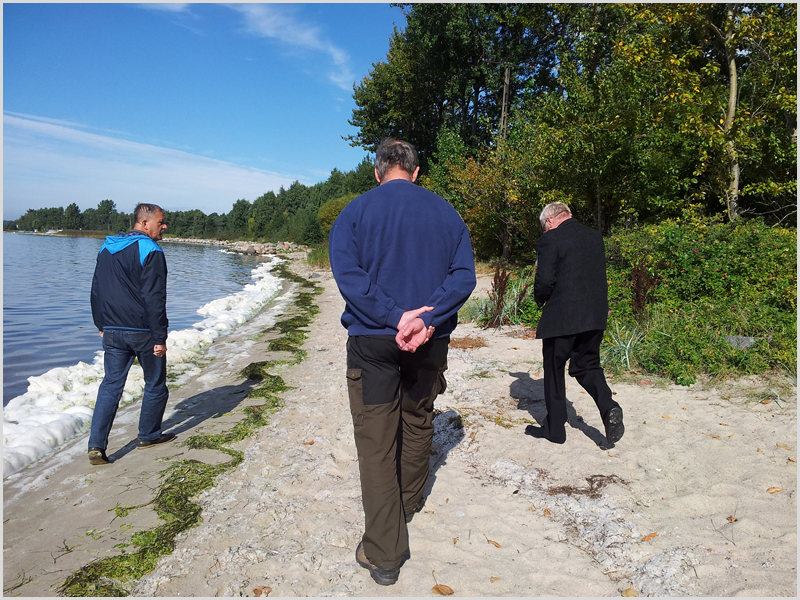 |
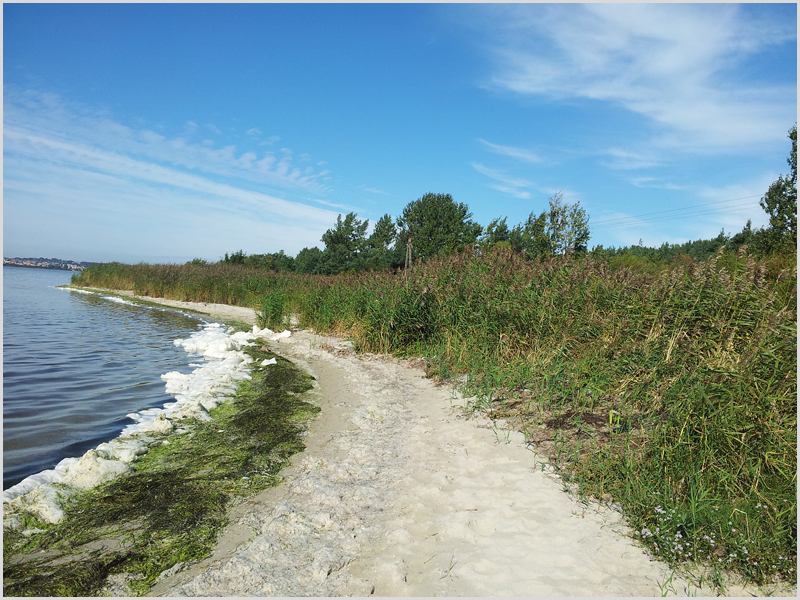 |
Area of planted material of one-year-old plants, grown under greenhouse conditions.
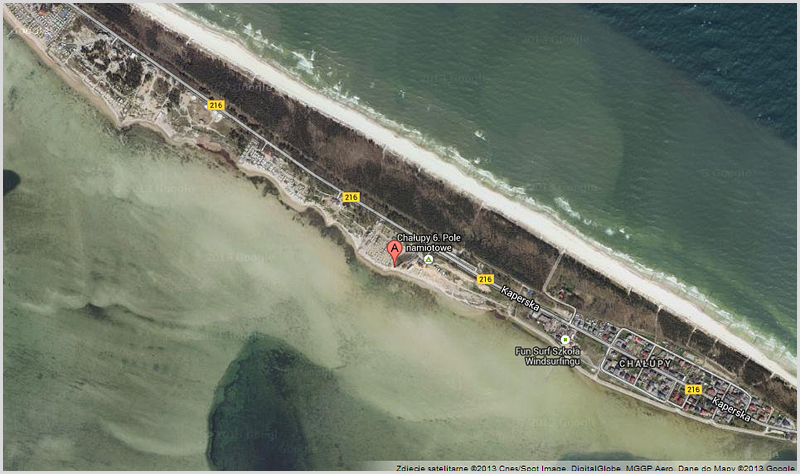 |
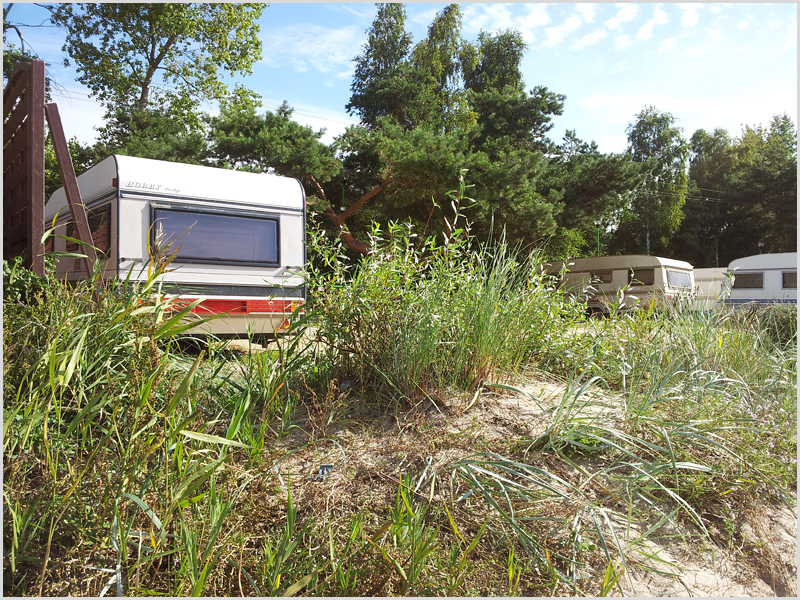 |
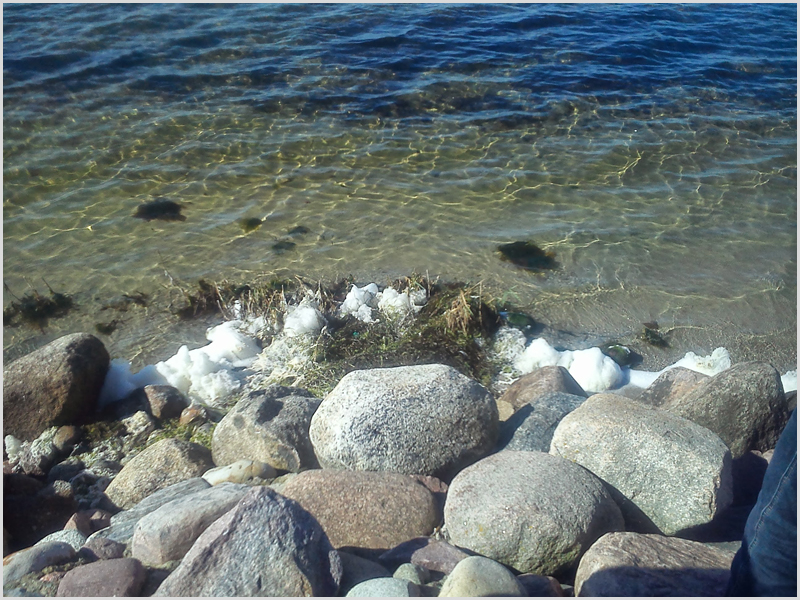 |
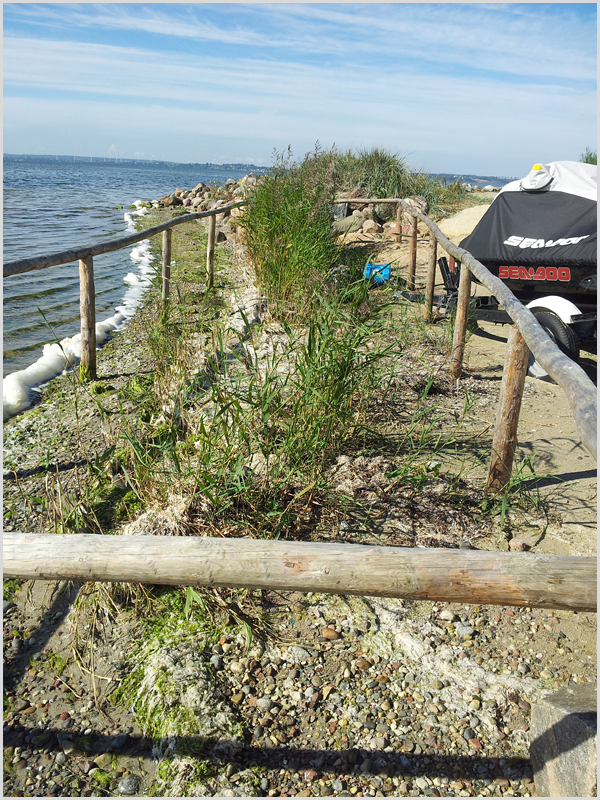 |
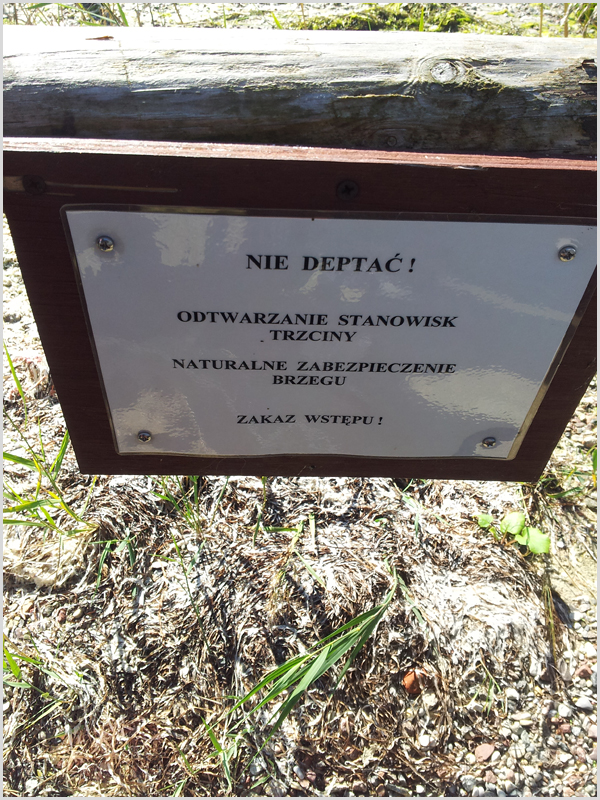 |
Area of planted material taken from the reed donors.
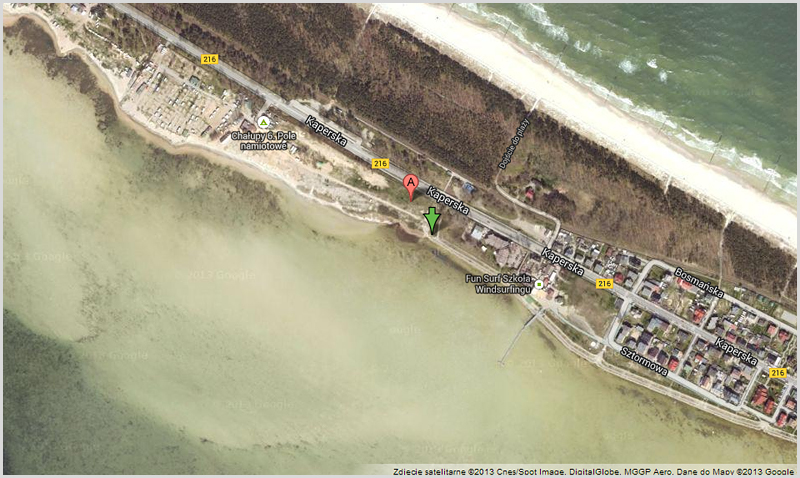 |
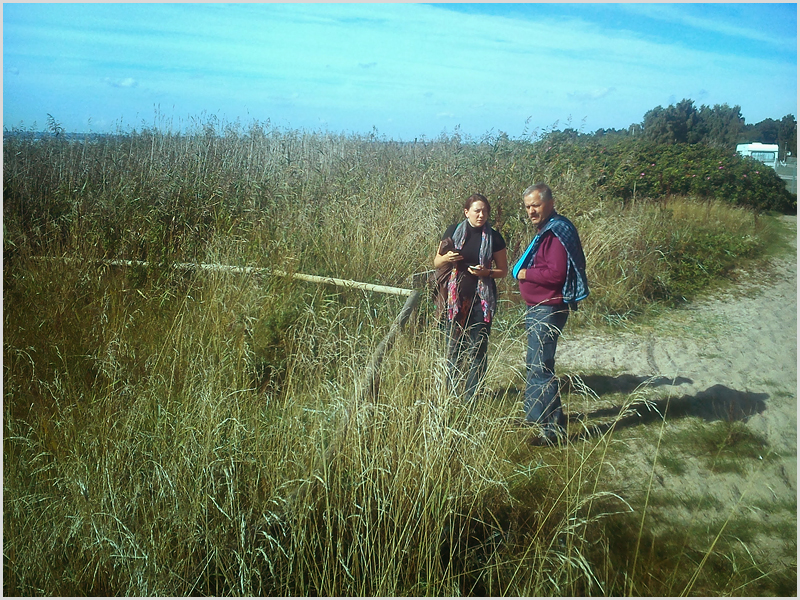 |
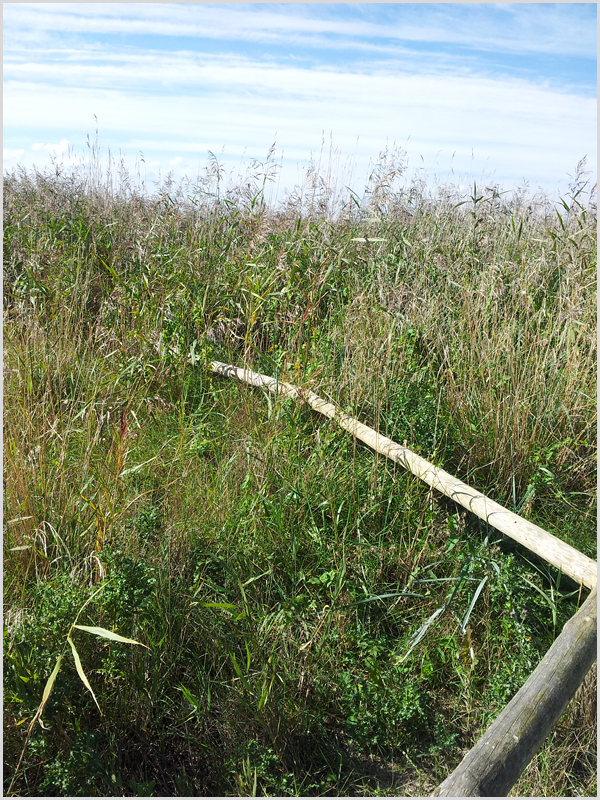 |
One of the selected sites for planting reeds. This is an area after infilling in Chałupy.
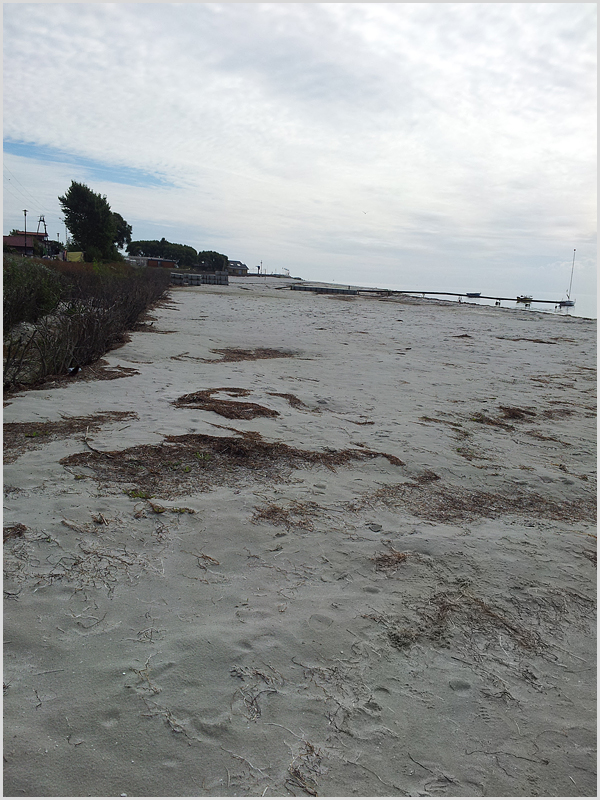 |
12 of July 2013
Another sea work to verify the digital map in the field. In all but two selected points, seagrass occurred either as single plants or very dense meadows. At all points along the sea grass were: Zannichellia sp., Pylaiella sp. and Potamogeton spp.
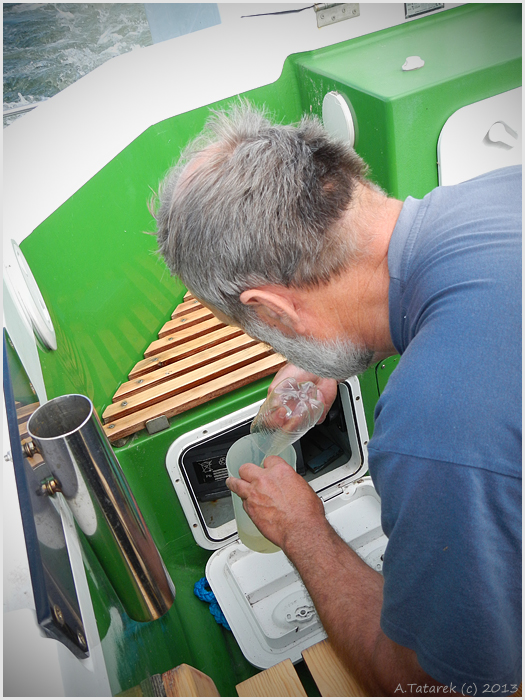 |
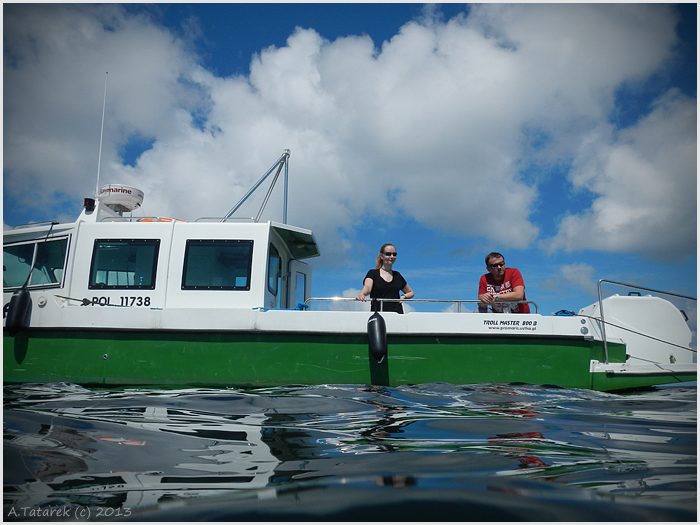 |
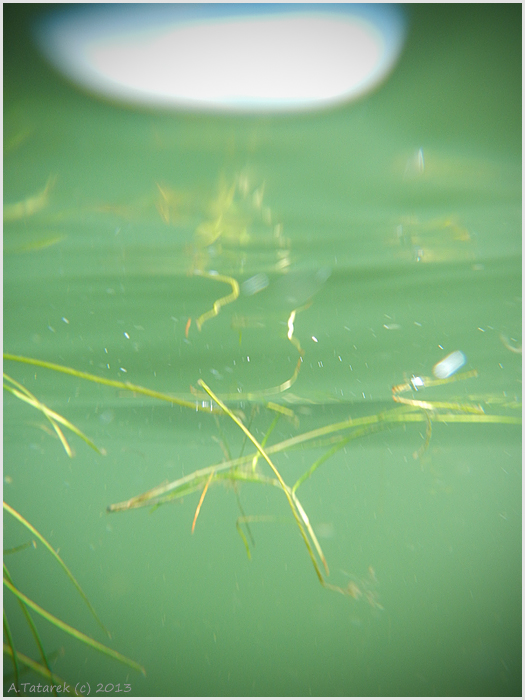 |
25th of June 2013
Today on the area at the Sopot's famous pier a Science Picnic was held. We presented there an information about seagrass in Puck Bay and some details about project dedicated to Zostera marina. In addition, we showed the methods and equipment which allows us to collect information on the prevalence of sea grass in the Inner Bay of Puck.
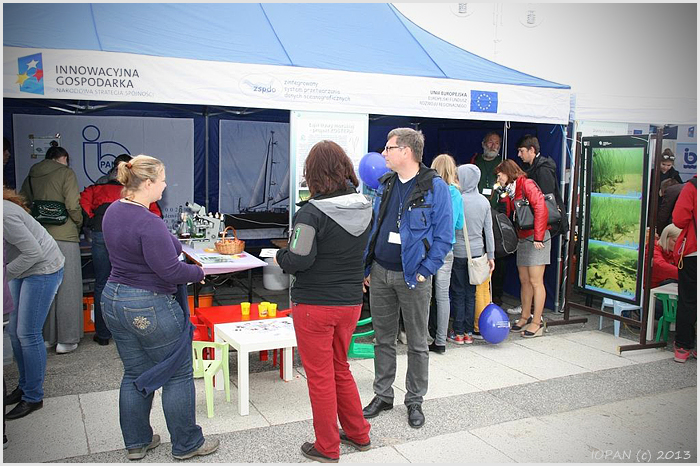 |
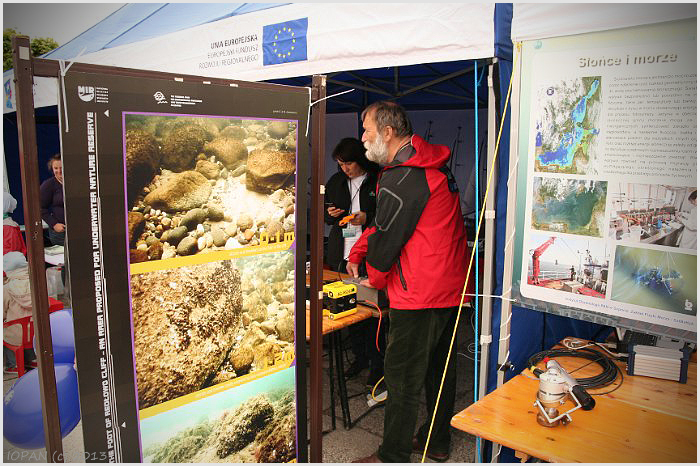 |
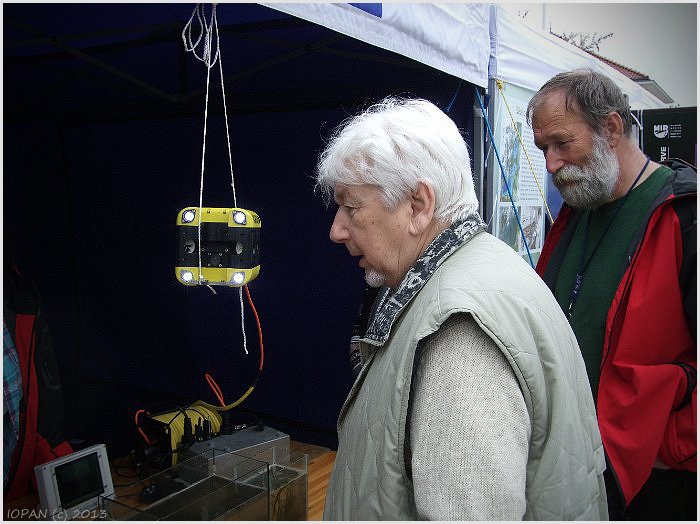 |
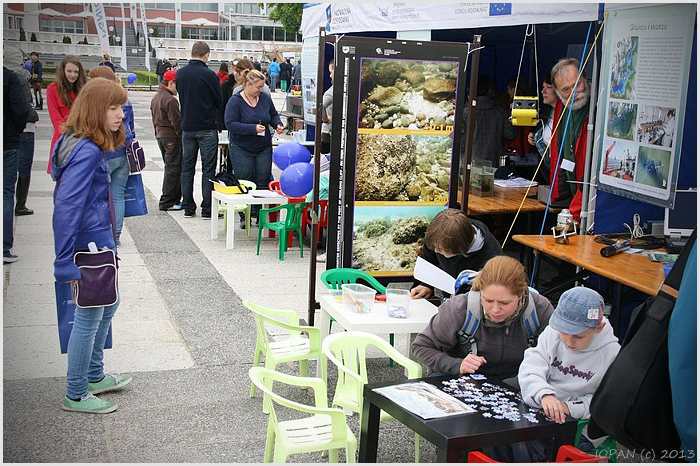 |
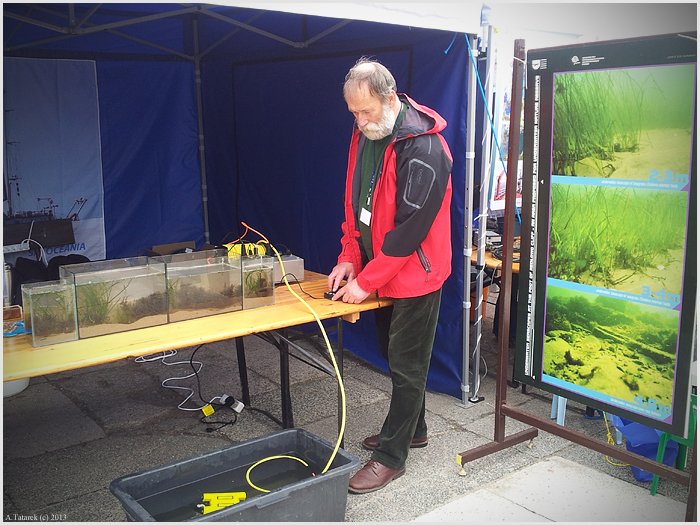 |
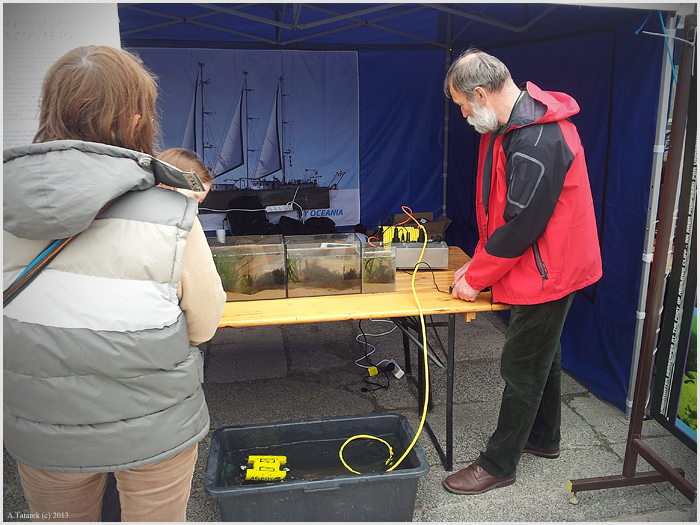 |
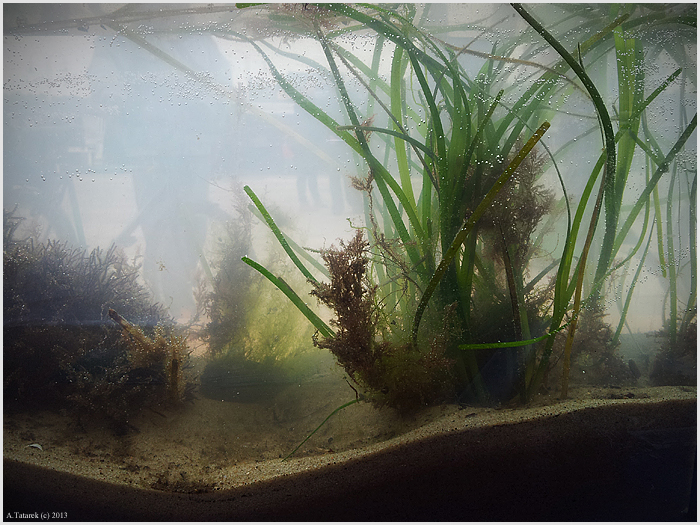 |
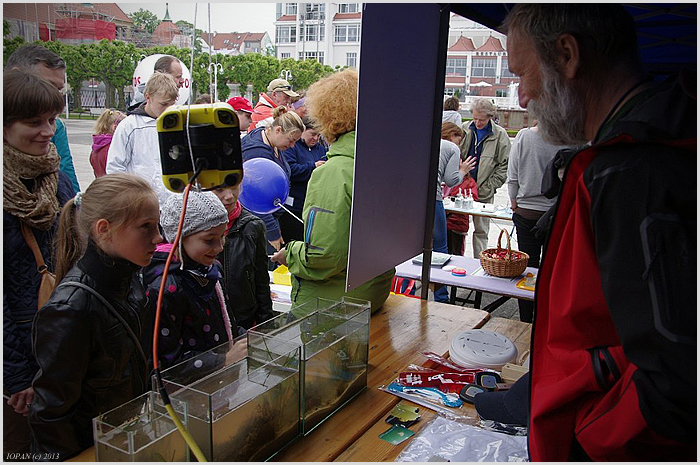 |
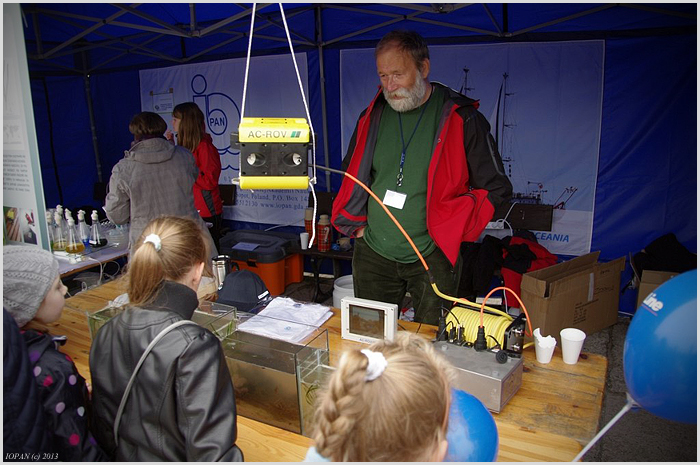 |
20th of June 2013
The season for field work has been started. This is the final year of Zostera marina habitats verification in the inner part of the Puck Bay. We have a hope, that next year will be dedicated only for monitoring of the planted grass. So far we made another meadows with flowering Zostera. It seems that this year it is a massive bloom on the almost all visited research points. Due to that fact we decided to check more closely the seeds (which will demand an extra time for observations).
So fare there was few field campaigns. On almost all researched point we have found Zostera marina growing on the depth between 2-4 m. As always we made a Pic. and video documentation and the revised points has been marked on a cumulative map.
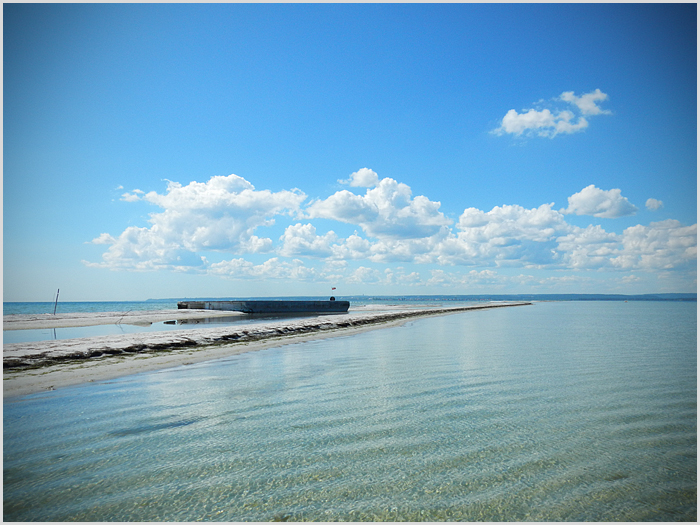 |
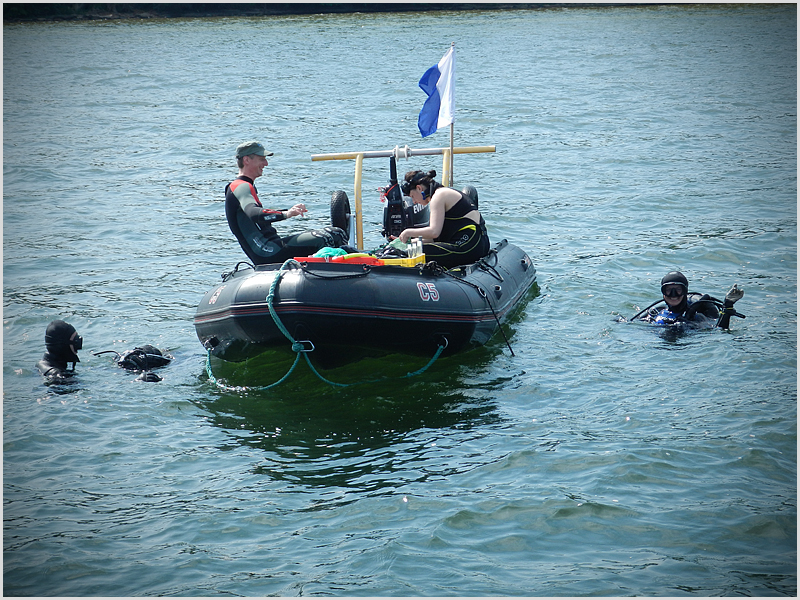 |
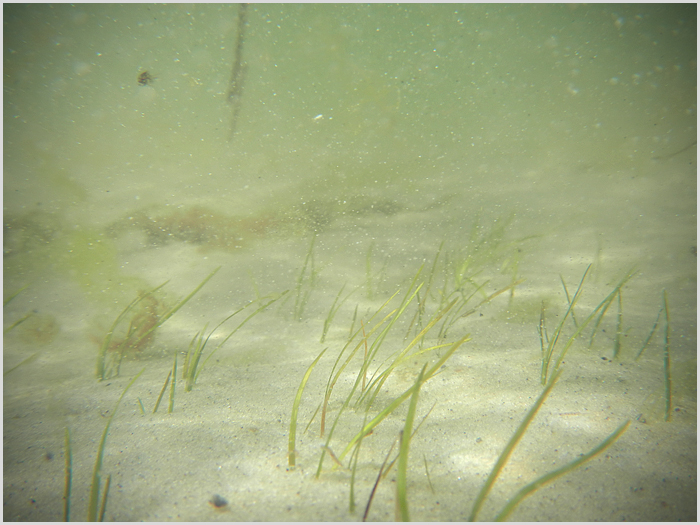 |
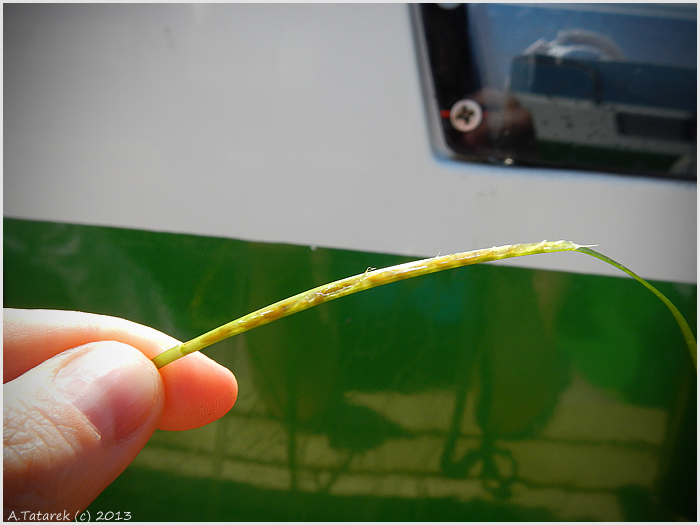 |
March 2013
At the begining of this month the meeting has been set in Swarzewo to decide about the Phragmites planting. It was decided that the best time to start this task is April. The seedlings will be taken from the Swarzewo wastewater treatment plant area. Since this year IO PAN will be healding this activity. However, before any planting, it have to be checked if the taken seedlings are in a good shape for further activities. Decision taken, now we are waiting for Spring.
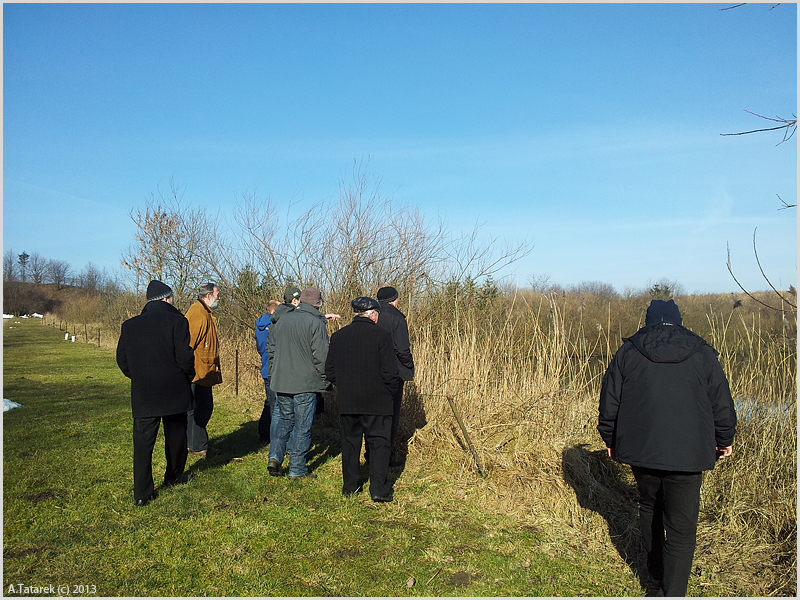 |
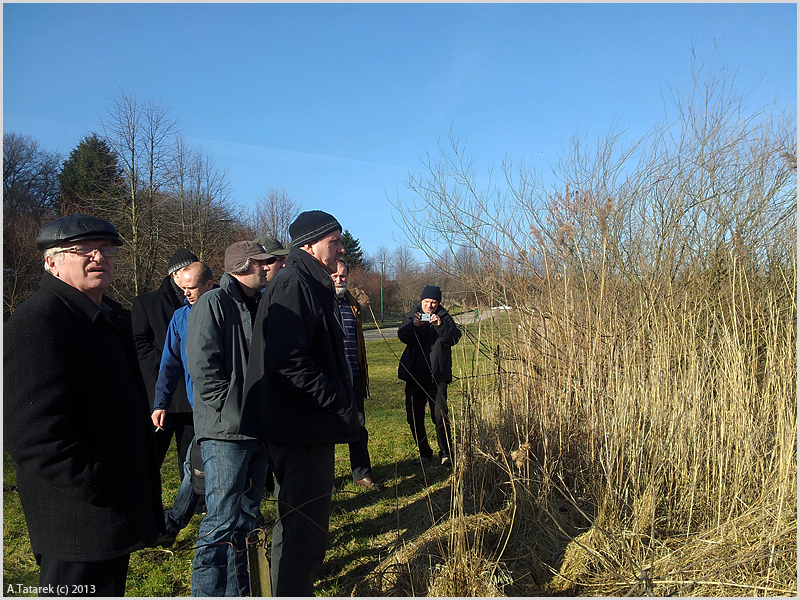 |
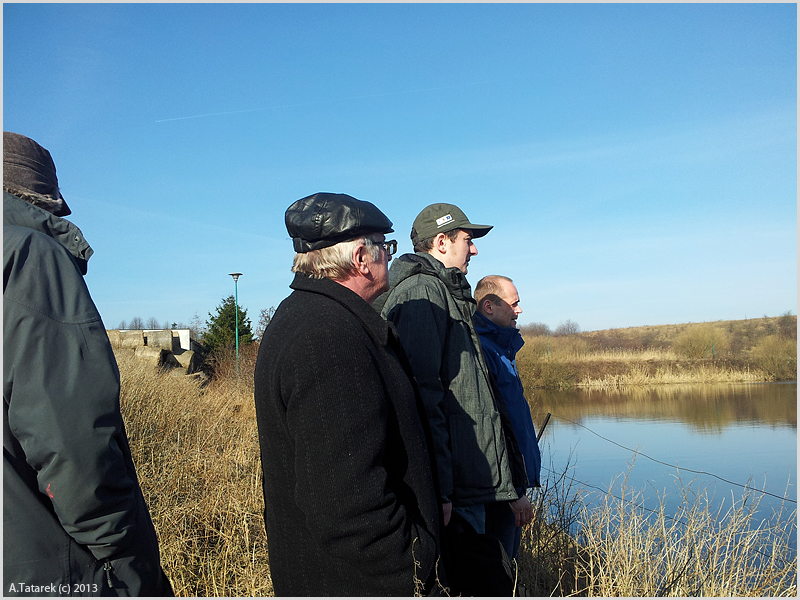 |
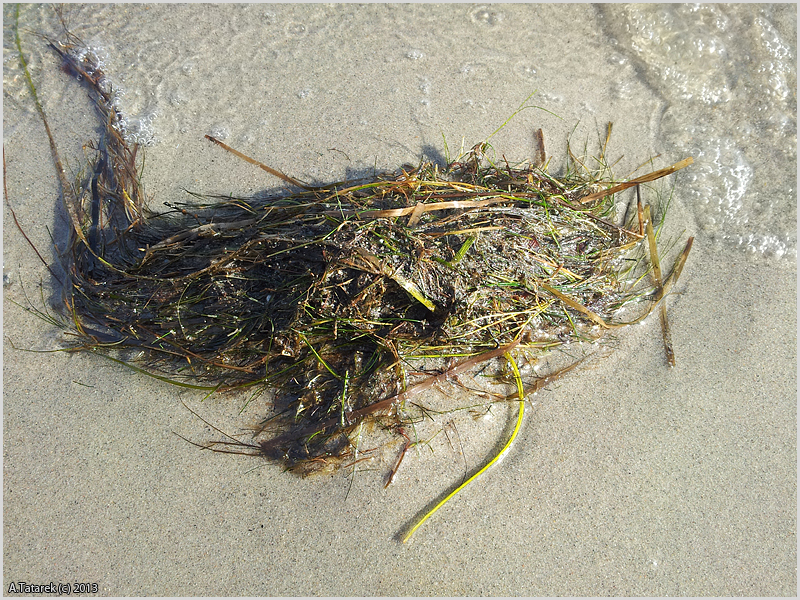 |
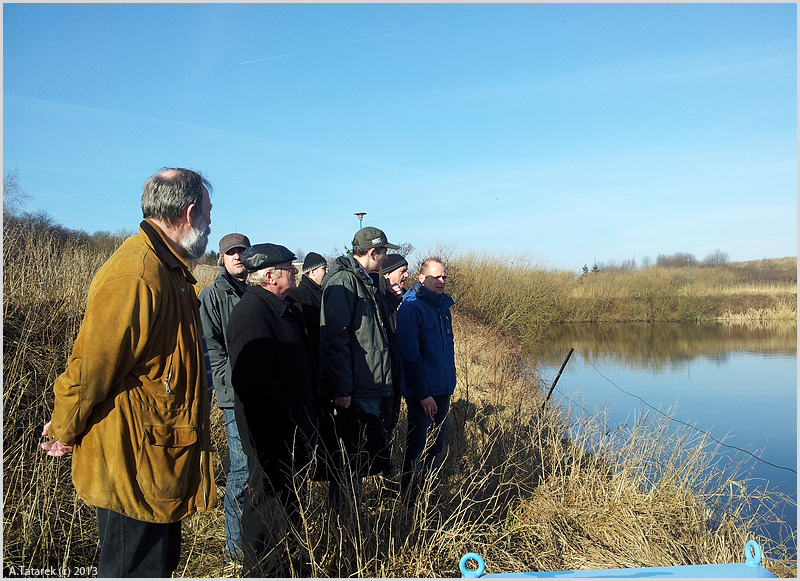 |
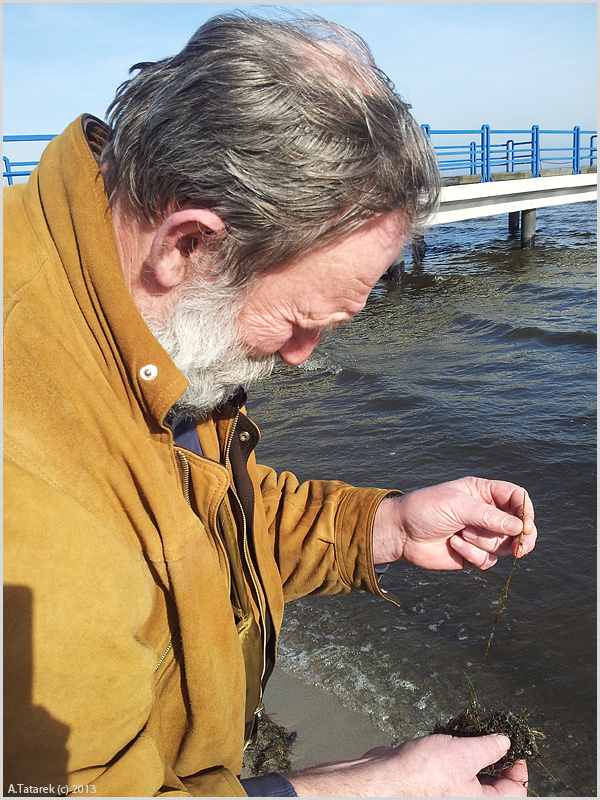 |
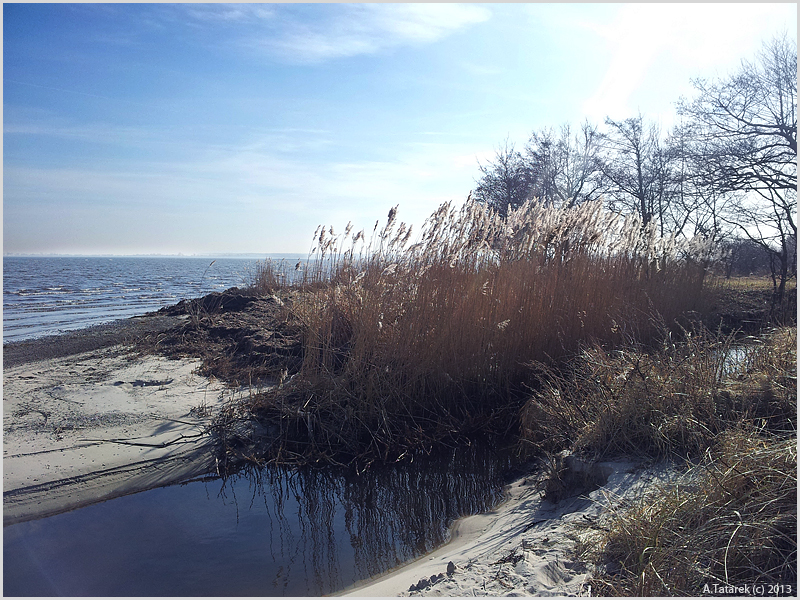 |
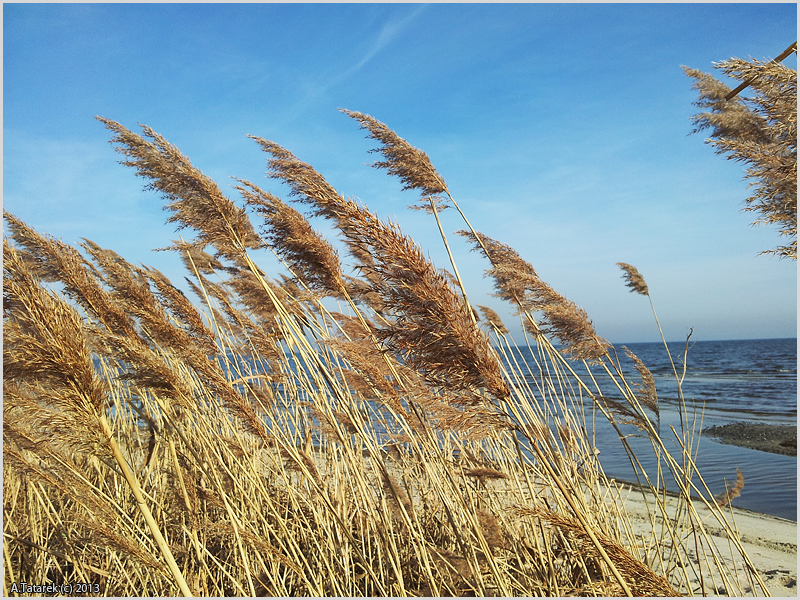 |
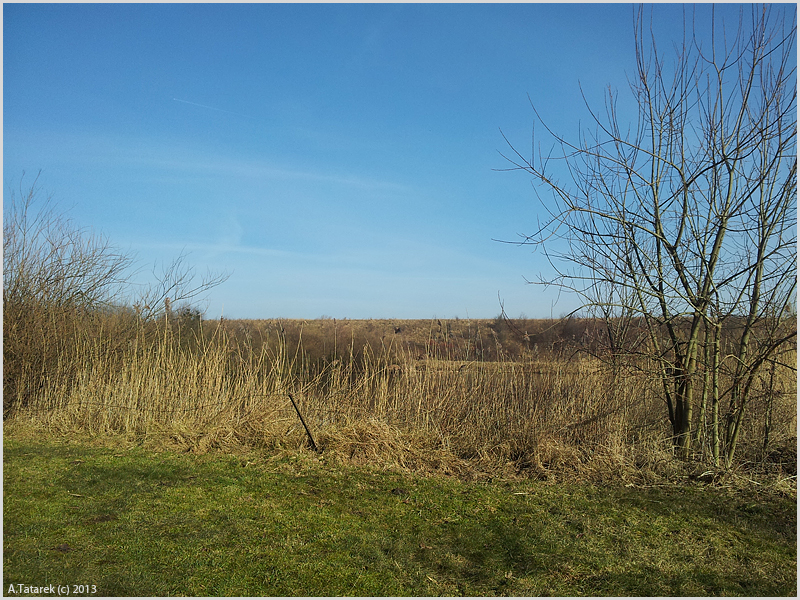 |
February 2013
The spring time season almost came and with it we are starting to prepare equipment to finish Zostera monitoring works on inner part of Puck Bay. The map of research sampling points has been established presenting a work which has been done so far.
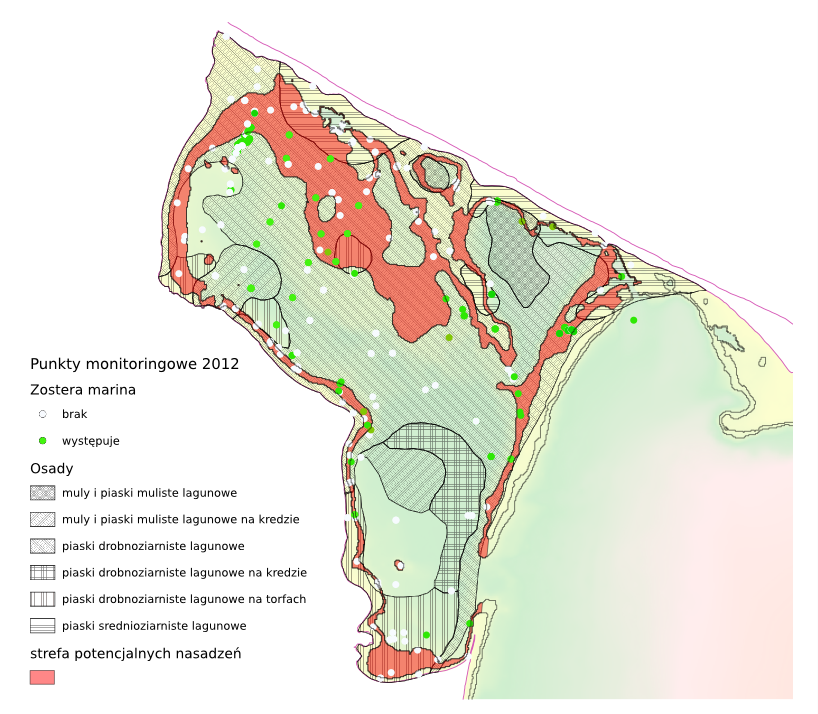 |
December 16, 2012
Fresh outwash of seagrass in Gdynia-Orłowo after autumn storm - for decade it was not observed here.
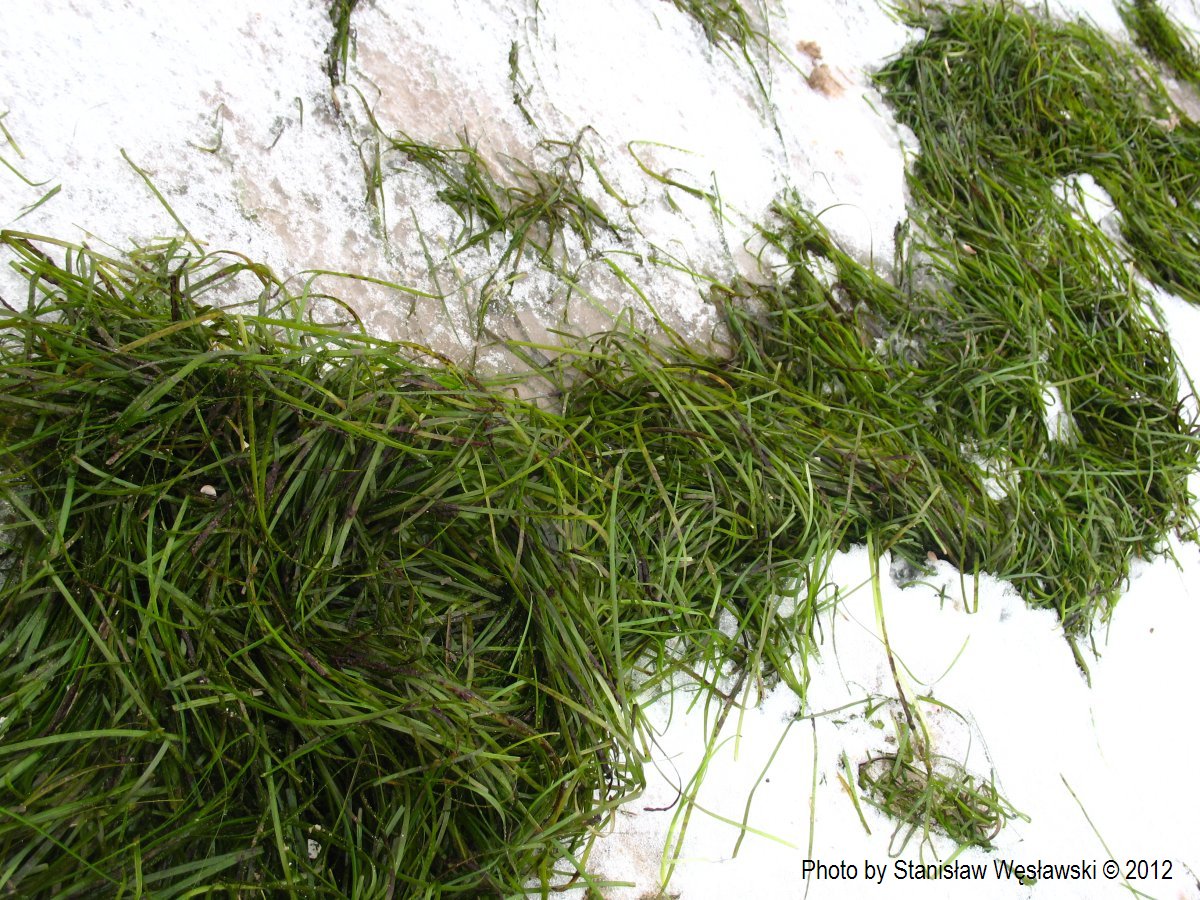
|
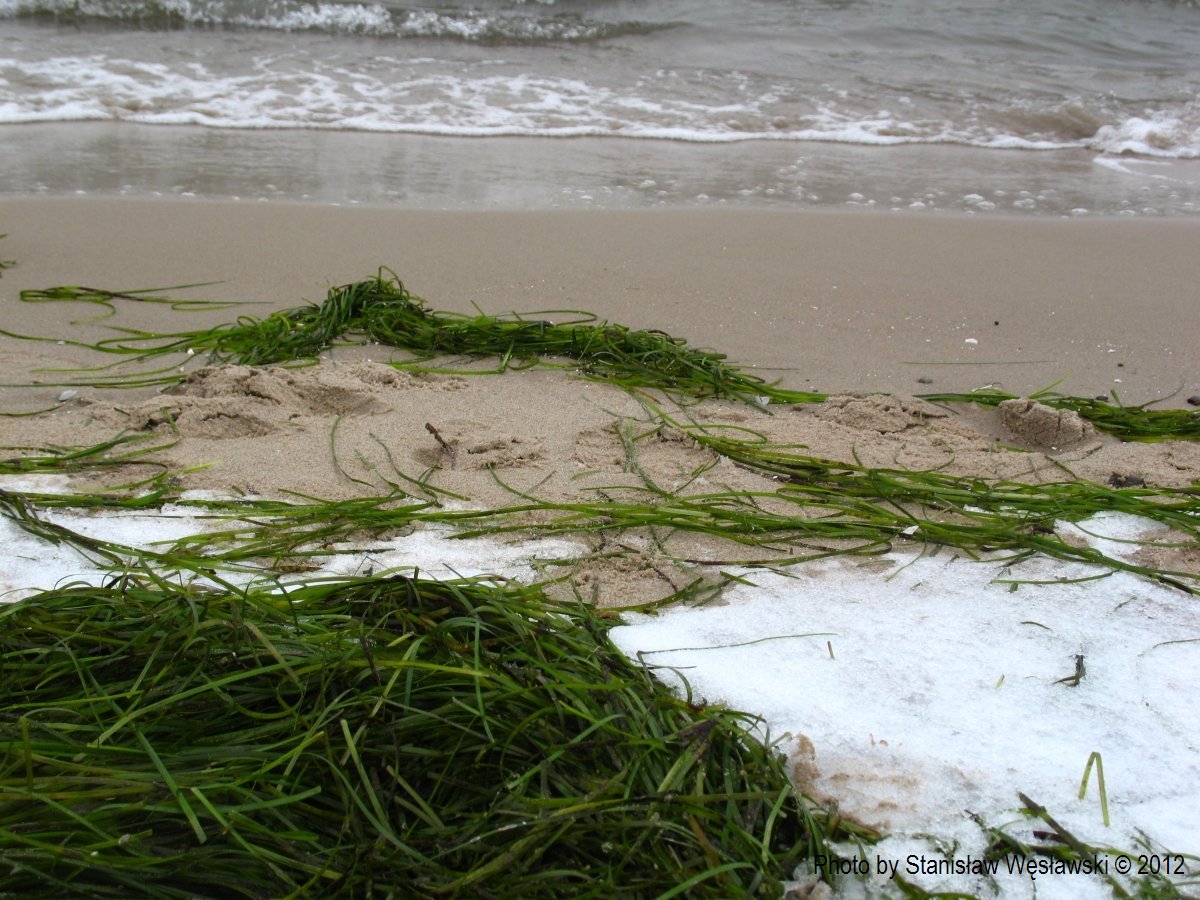
|
30th October 2012
The field work for this year has been finished. The sampling will continue Spring 2013 year. The final report from genetic analyzes has been shared (as a reminder- the report gives a data about Zostera marina population diversity)
Download
 report
report
10th July 2012
We have started extensive survey cross the set of transects in the Bay of Puck, to collect dense grid of documented sites showing underwater vegetation.
The most important finding is the first discovery of two Zostera marina specimens with fertilized seeds separated on 100 m distance. So far it was taken as a paradigm, that Zostera in our waters breeds only on vegetative – cloning way. Now, after laboratory confirmation we know that sexual process is also taking pace.
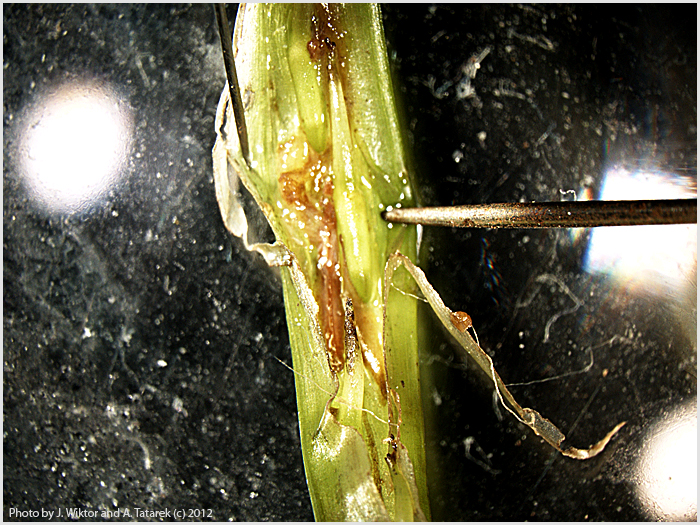
|
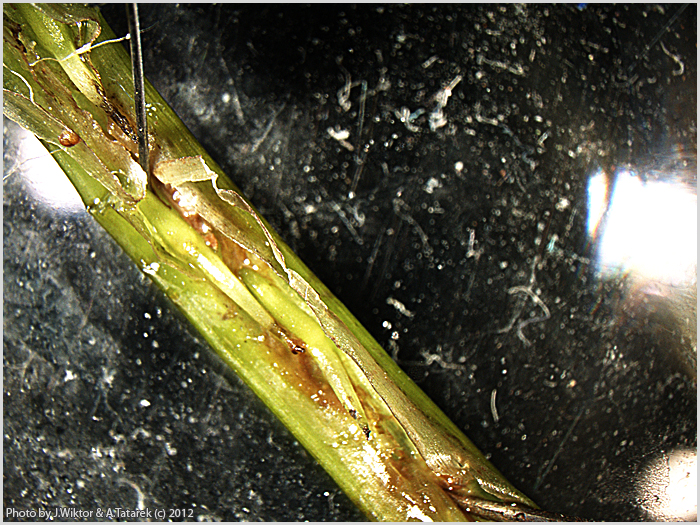
|
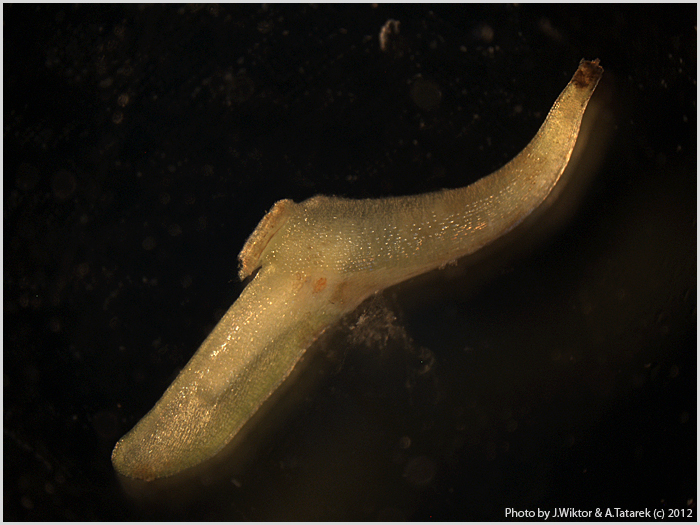
|
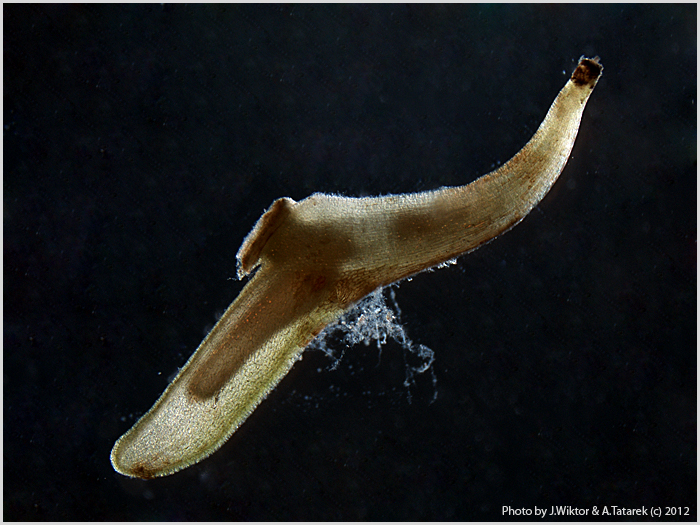
|
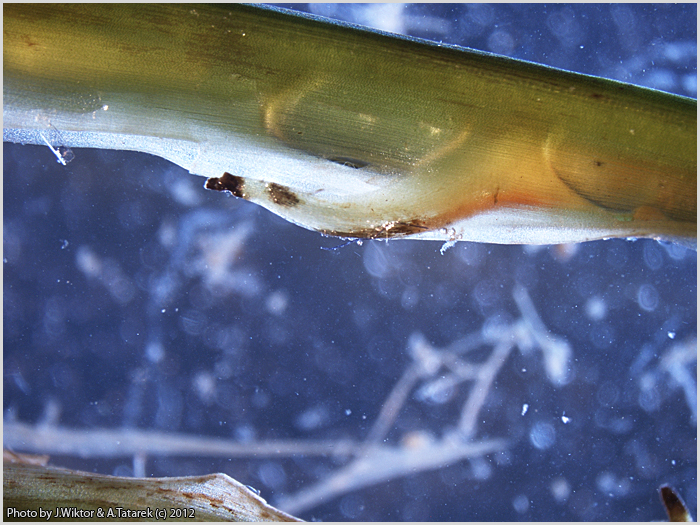
|
July 6, 2012
IO PAN made ready
 for downloading new data of Zostera occurrence in shp files
for downloading new data of Zostera occurrence in shp files
24th of November
Another approach to underwater research (scuba divers got overused). During the field work conducted on a Bay of Puck 30 spots of sea grasses occurrence were checked and in 9 spots the occurrence of Zostera marina was confirmed.

|

|

|
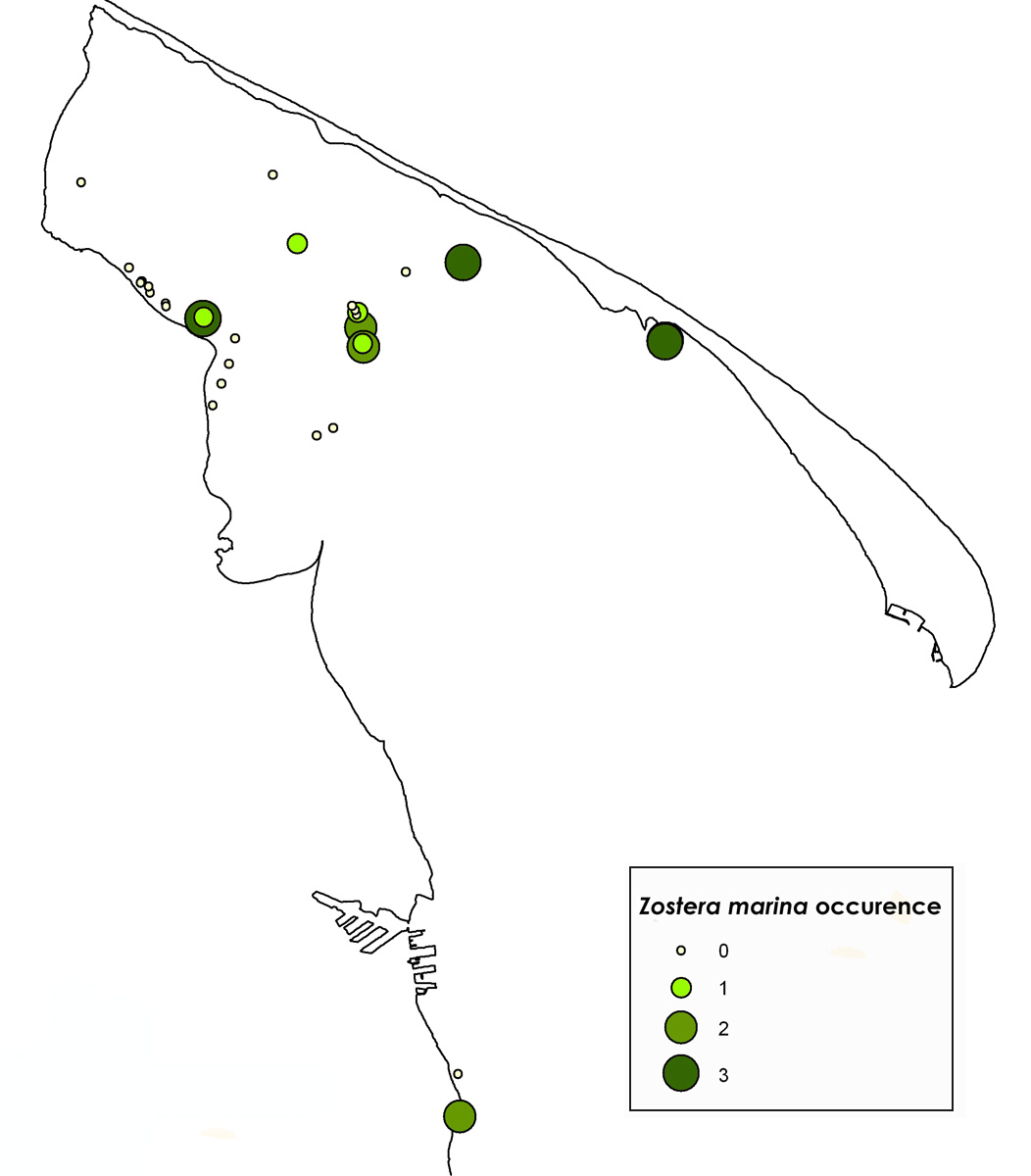
|
28th of October
A totally new quality - a field work from a new boat bought for the Zostera project to be used for map verification of the Zostera and other vacular plants meadows occurrence. During this research the new location of Zostera marina occurrence was found.

|

|
03rd of August
The trip to Germany to collect samples of Zostera marina for genetic comparison with samples collected during previous trips and our local population. The sample collecting has ended successfully, thanks to great help of Sven Dahlke from Greisfald University, in the
 Hiddensee Island area during the, as usually, stormy weather.
Hiddensee Island area during the, as usually, stormy weather.

|
23rd of July
The scientific trip of IOPAN and geneticist from University of Warsaw to Estonia- Sareema (Panga Resort)
 Saarema,
Saarema,

|

|

|

|
12th of July
The field work to verify GIS maps.

|
8th of July 2011
IO PAN team went on field work to collect samples of the Zostera marina for genetic analyses as also to make a recognition of the sea grass meadows occurrence in the southern part of the Bay of Puck.

|

|
|

|

|
The "on water" geneticist (from University of Warsaw), The "underwater" geneticist (from IO PAN) |
7th May 2011
Sampling of fresh sea grass for genetic analysis at OrBowo cliff. Team from IOPAS with Jakub Korthals (SCUBA diving) went for a short trip to planned underwater reserve, where sea grass is expanding its former range among stones, on 2-4 m depth. Samples for biotechnological growth were collected and expedited to PoznaD, while samples for genetic analyses, stored in pure alcohol await the complete collection.
3-5th May 2011 Consultation visit.
We were fortunate to invite four prominent European specialists to consult the problems of sea grass restoration (Marijke van Katwijk, University of Nijmingen, Wim Giesen Mott MacDonald Ltd, Christoffer Bostrom Abo Akademi, Johanna Mattila Huso Research Station). The meeting started with short introduction of the project aims, history of sea grass beds in Puck Bay (Weslawski IOPAS), followed with presentation of GIS model (Urbanski GIS Center UG). After brief discussion the team went to visit study area. First we arrived at Swarzewo, Water Cleaning Station, where Tomasz Herman (representative of Coastal Municipalities Association) and Jacek Konkel (local project employee) introduced guests with facilities for fish and reeds restoration project. The reeds seedlings are just now being replaced from the culture area to the sites, where reeds belt is to be restored along Hel Peninsula. Fish (pike and perch-pike) were released previous year to the bay, and the ponds (supplied with local Bay water) are available if needed for the sea grass cultivation.
After site seeing the group went away to Ku|nica at Hel Peninsula, where local fisherman have been awaiting us and took the group for a boat tour to the nearest sea grass field at the "long shallow" near the eastern peninsula shore. The grass was inspected with the underwater camera, and some specimens were collected with the use of the boat's anchor. After the sea excursion group proceed to the tip of Peninsula to the Hel Marine Station of the University of GdaDsk. Here we took a guided tour to see the seal facilities and station laboratories, and to hear a presentation of educational and research programs. After the lunch in local restaurant, we returned to Sopot to sum up the conclusions form the site visit. Day ended with a dinner in Sopot. Next day (5th May) started with the presentation of Marijke Katwijk of technics and methods used in sea grass restorations worldwide. Wim Giesen presented his comments on our plan, and finally a set of recommendations and remarks was proposed:
Recommendations and remarks after the consultative visit to Bay of Puck 3-5th May 2011
- Seagrass restoration is a process of high risk, usually most of the new plants either die or show difficulties in growing. The most effective way is protecting the naturally spreading seagrass from being disturbed.
- Several methods for seagrass restoration are in use; starting from collection and spreading of seeds, transplanting intact seagrass in small sods, or transplanting individual plants without sods and placing them under rocks or sand bags (Pickerell pers. Comm. MvK), individually stapling them to the seabed, or cultivating seedlings and transplanting them in turf-based gardening containers (see also Short & Coles 200x Seagrass Methods).
- All handling of the natural or artificially produced plants must be very delicate, with special care for small and delicate root hairs protruding from the rhizomes. For this reason, the turf pot method generally gives the best results (R.C. Phillips several publications e.g. 1980, also Thorhaug, pers. Comm. MvK)
- Collection of plants from donor fields should be planned with care in order to protect the integrity of the original meadow.
- For optimal generation of knowledge and developing an optimal transplantation technique, it is required that
- Methods or treatments be tested (see 8)
- Replicates be used because of the variable reponses related to the high dynamics of the system (additional advantage of using replicates: to spread the risks spatially)
- Among most common threats to the seagrass are excess nutrients (especially NH4, which is toxic for most seagrass species), anoxia and resulting suffocation, shading and sulphide toxicity, siltation, excess heat (e.g. temperatures over 23°C, depending on localpopulation limits), slime mold (Labyrinthula) though generally not in the brackish Baltic, bioturbation (e.g. by lugworms, polychaetes, sand burrowng fishes).
- The good recognition of genetic diversity is needed, to identify clonal variation in the area.
- When planting new seedlings / cultured shoots or transplanted sods, one needs to experiment with the planting density and experiment with placing Zostera among other higher plants (Potamogeton, Zanichella)1
- Work out possible scenarios of interaction among Zostera and key players in the system (amphipods, Gobiidae, cormorants, pike etc…).
- Check the area for the presence of individual plants growing further than 2m from the nearest seagrass patch – this may indicate possible growth of detached (e.g. by wave action) individuals or sexual reproduction. When assessing density use direct count of individual shoots by diver.
- Verify the seagrass distribution model – especially areas that were shown as adequate for seagrass presence and those marked as unfit for seagrass.
- Confirm (or disprove) by field observations and experimentally in the lab (aquaria or mesocosm) if seagrass in the bay (and lagoon) do indeed only reproduce asexually.
- Conduct trial transplantation experiments with dislodged seagrass washed up on the beaches/shores and anchor them by placing the shoots under rocks or sand bags.
- Cooperate with the Hel Marine Station’s visitor’s centre in order to create greater awareness of the lagoon habitat and the importance of seagrass and other aquatic macrophytes in maintaining the lagoon ecosystem.
Munkes 2005 about a similar system: Munkes B (2005) Eutrophication, phase shift, the delay and the potential return in the Greifswalder Bodden, Baltic Sea. Aquatic Sciences 67:372-381
Orth et al. 2006 about seagrasses in general: Orth RJ, Carruthers TJB, Dennison WC, Duarte CM, Fourqurean JW, Heck KL, Hughes AR, Kendrick GA, Kenworthy WJ, Olyarnik S, Short FT, Waycott M, Williams SL (2006) A global crisis for seagrass ecosystems. BioScience 56:987-996
1Sediment stabilisation is generally favourable for seagrass colonisation and or spread (e.g. van Katwijk & Hermus 2000, Kohlus & Reise 2008). Sediment stabilisation can be accomplished by rooting macrophytes, which have the additional advantage that the water column may remain clearer. However, competition may also occur. Puck lagoon offers the advantage that rooting macrophytes still occur (mainly Zannichellia, also Ruppia and Pot. Pec), so it can be tested whether macrophyte can add to transplantation success.[I can work out a small literature review if you decide on this]
 po polsku
po polsku_180820.jpg)
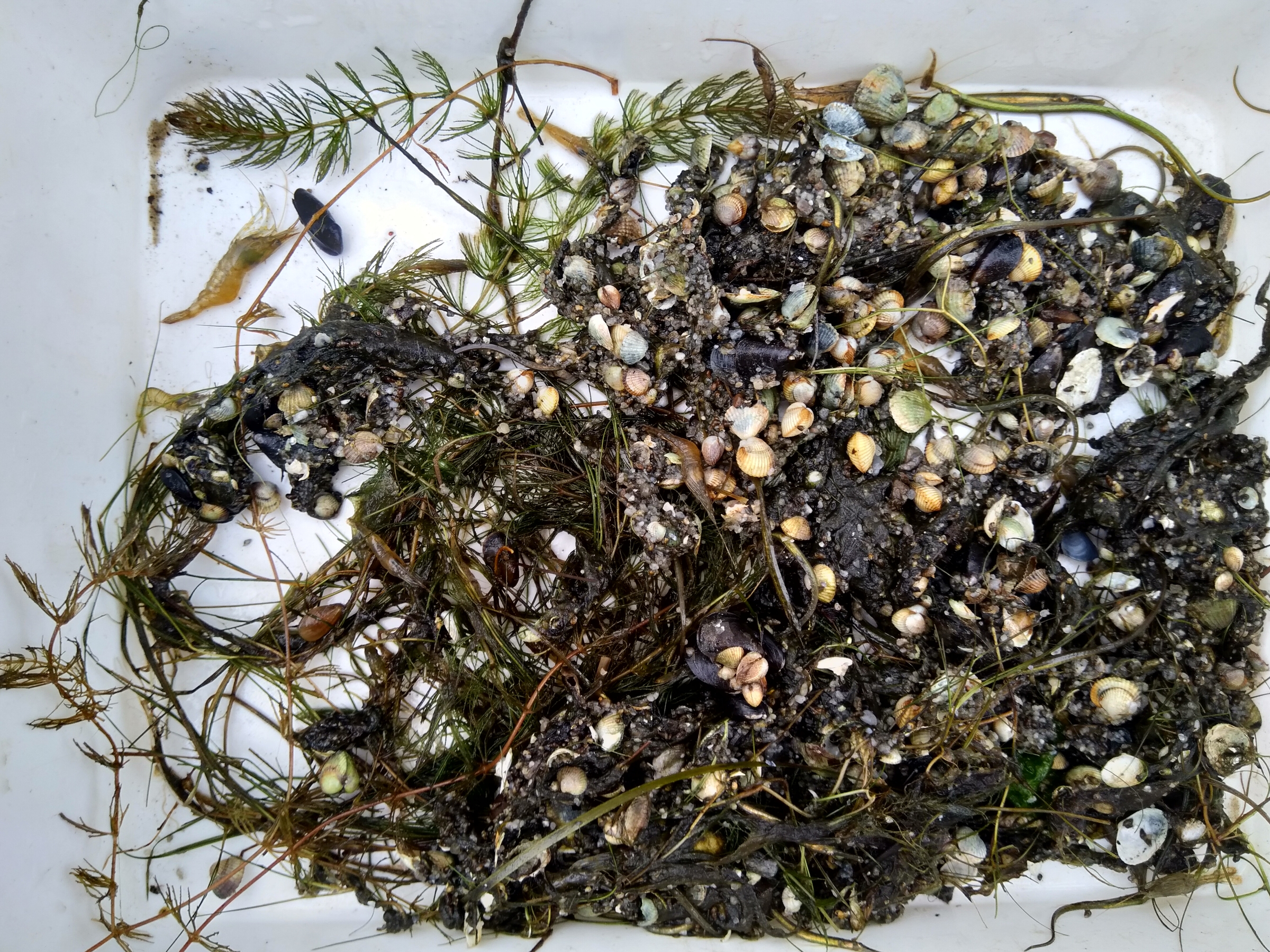
.jpg)
